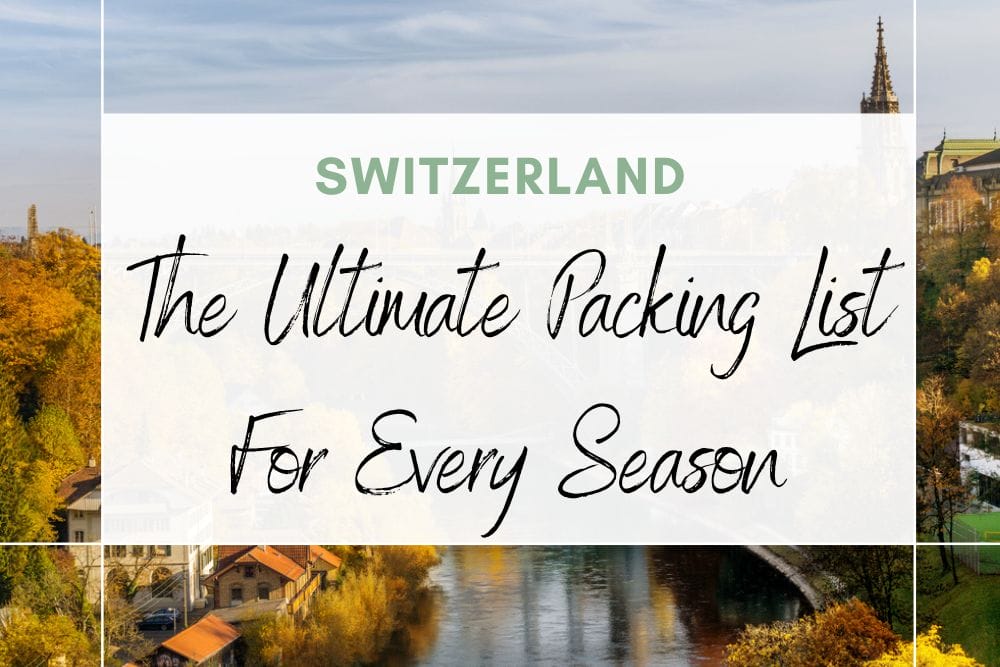

What to Pack for Switzerland: The Ultimate Packing List for All Seasons
Hey there, wanderlust warriors! If you're dreaming of chocolate-box villages and snow-kissed Alpine peaks, it's time to pack those bags for Switzerland, one of the most enchanting destinations on the planet! Given the country's ever-changing weather and varied landscapes, packing can feel a bit like trying to solve a Rubik's Cube blindfolded. But don't you worry, I've got your back! I've crafted the ultimate, all-season Swiss packing list, so you can focus less on packing dilemmas and more on those breathtaking Swiss panoramas that await.
Travel essentials to pack all year round
- Travel Insurance : Don't forget to secure a reliable insurance plan before you jet off! be it lost luggage, unexpected health issues, or trip cancellations. Compare various insurance providers here .
- Your passport is your key to the world: ensure its expiration date generously spans your whole journey. And leave some room for those valuable fresh stamps – a blank page will do!
- Flight details, boarding passes, and airline tickets should always be accessible – consider them your intangible passport to the sky.
- Details of your hotel reservation , particularly the address, should be within arm's reach – not only are they necessary for finding your temporary abode, but they're also vital for smoothly navigating through any customs forms.
- Longing for an extended romance with Switzerland? A stay exceeding 90 days often calls for a visa. Double-checking your visa requirements before you jet off is a wise move.
- Pre-arranged hotel transfers ? Excellent! Ensure the specifics are easily accessible upon landing.
- It's time to discuss the dollars and cents! Carry a mix of cash & credit cards for those impromptu retail therapy sessions or chilled-out biergarten excursions.
- A travel eSIM card with data plan for your smartphone to stay connected.
- Finally, never underestimate the importance of other identification, such as your driver's license – their usefulness can surprise you!
Apart from the absolute essentials, we've curated a list of 14 must-have items designed to enhance your Swiss journey with convenience, security, and an extra dose of happiness. We've thought of it all – from the pragmatic stuff like a travel adapter and filtered water bottle , to those joyful extras such as pocket-sized Wi-Fi and a comfy neck pillow. Take a look at our Swiss Essentials Checklist to ensure nothing slips through the cracks!
Clothing Tips for Summer in Switzerland
So, you're ready to bask in the Swiss summer sunshine? Here's the lowdown on the dressing drill. The weather during Swiss summers is generally pleasant, but it's always smart to pack layers. Bring lightweight clothing for daytime explorations—think breathable fabrics like cotton or linen. For the cooler evenings, a light jacket or sweater will keep the chill at bay. And remember, Switzerland is a hiker's paradise, so packing a good pair of walking shoes or hiking boots is a must, especially if you plan on conquering those awe-inspiring Alpine trails. Finally, don't forget your sunglasses, a hat, and a reliable sunscreen – the Swiss sun can be deceptively strong, especially in the mountains!
- Layer Up : Swiss summers are generally warm, but temperatures can drop in the evenings or at higher altitudes. Pack lightweight layers that you can add or remove as needed.
- Breathable Fabrics : Opt for clothes made of breathable materials like cotton and linen. These fabrics will keep you comfortable during those sunny Swiss afternoons.
- Light Jacket/Sweater : A light jacket or sweater is essential for those cooler summer nights or breezy lake shores. Choose something easy to carry in your day pack.
- Comfortable Walking Shoes : Switzerland is known for its beautiful trails and city streets. Ensure you pack comfortable walking shoes or hiking boots for those adventure-filled days.
- Swimwear : With Switzerland's beautiful lakes and public pools, you'll want to have your swimwear ready for a refreshing dip.
- Sun Protection : Don't underestimate the Swiss sun, especially at higher altitudes! Bring sunglasses, a hat, and sunscreen to protect yourself from UV rays.
- Rain Gear : Swiss weather can be unpredictable. Carry a compact umbrella or lightweight rain jacket just in case.
- Formal Attire : If you're planning on dining at a fancy restaurant or attending an opera in Zurich or Geneva, you'll want to pack a semi-formal outfit.
- Scarf or Pashmina : A light scarf or pashmina is great for both fashion and function – perfect for dressing up an outfit or warding off a chill.
- Day Pack : Finally, a comfortable, lightweight day pack is essential for carrying your extra layers, water bottle , camera, and souvenirs from your Swiss escapades.
The ultimate packing lists for Summer in Switzerland (June, July, August)
As we gear up for an unforgettable Swiss summer, it's essential to know what to pack to make the most of this Alpine paradise. Whether you're exploring charming villages, embarking on scenic hikes, or savoring fine chocolates and cheeses, the right gear will significantly enhance your experience. So, let's dive into our comprehensive packing list for a Swiss summer, ensuring you're perfectly equipped for each and every sun-kissed, mountain-framed moment. From the most practical items to a few surprise luxuries, we've got your Swiss packing essentials covered!
- Lightweight, Breathable Clothing: Think layers! Pack t-shirts, shorts, and a light sweater or two for fluctuating temperatures.
- Waterproof Jacket/Raincoat: To keep you dry during the occasional summer showers.
- Sturdy Hiking Boots: Perfect for exploring Switzerland's famous mountain trails.
- Comfortable Walking Shoes: For strolling through Swiss cities and towns.
- Swimsuit: Essential for a dip in the picturesque Swiss lakes.
- Sunglasses and Hat: To protect you from the summer sun.
- Travel Adapter : Switzerland uses type J plugs, different from most of Europe.
- Reusable Water Bottle with a Filter: For staying hydrated during your mountain hikes. Swiss tap water is safe to drink and delicious!
- A travel eSIM card with data plan for your smartphone: To stay connected, especially useful for maps and translations.
- Neck Pillow and Eye Mask: For a comfortable journey and better sleep.
- Sunscreen: The sun at higher altitudes can be stronger than expected.
- Snacks: Consider packing some granola bars or nuts for your hikes.
- Camera or Smartphone: Capture the stunning Swiss landscapes.
- Swiss Francs and Credit Card: For purchases and spontaneous biergarten visits.
- Travel Documents: Passport, IDs, tickets, and any necessary visas.
- Daypack or Backpack: For carrying your essentials during day trips and hikes.
- Travel Guidebook: A handy reference for local customs, attractions, and language phrases.
Remember, packing right can make all the difference to your Swiss adventure, enabling you to focus on the breathtaking views and unique experiences that await you in this Alpine wonderland. Happy packing!
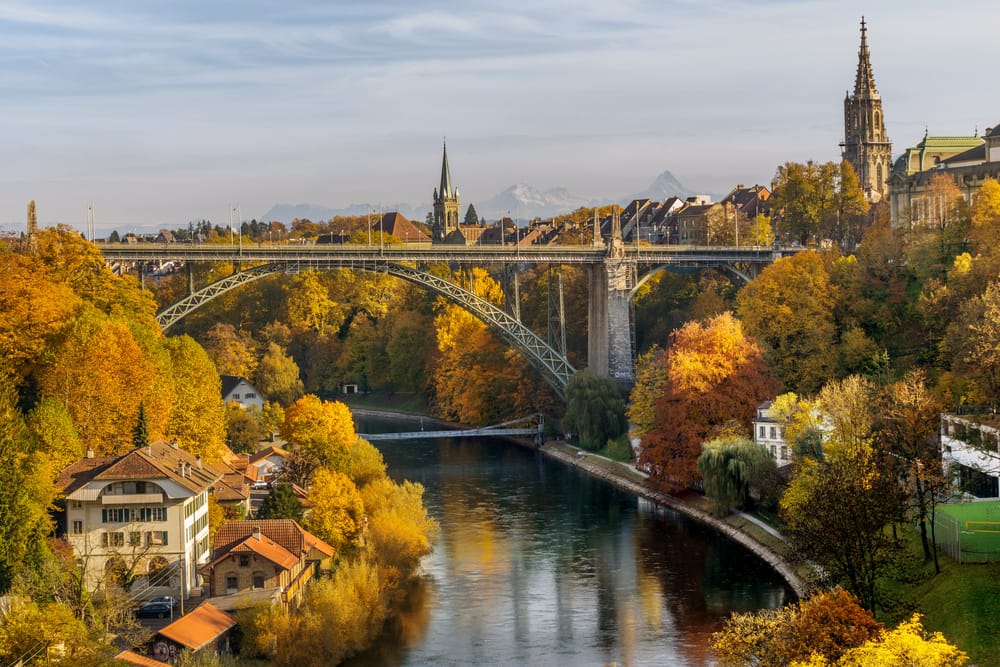
View from the bank of river Aare in Bern.
Clothing Tips for Fall in Switzerland
Heading to Switzerland to experience the magic of its fall hues? Here's how to dress to impress while staying comfy. Swiss fall, spanning September to November, is marked by cooler temperatures and a higher likelihood of rain, making it crucial to pack a variety of layers. Think warm sweaters, long-sleeve tops, and a sturdy, waterproof jacket to shield you from unexpected showers. Given the season's unpredictability, it's wise to include gloves and a scarf in your suitcase. Don't forget your sturdy walking shoes or boots, especially if you're planning to crunch through the fallen leaves on those scenic Swiss trails. Lastly, an umbrella is a handy addition, offering both a respite from the rain and a charming prop for your fall-inspired photoshoots.
- Layer Up : Fall in Switzerland calls for layers. Packing items like long-sleeved shirts, light sweaters, and vests will provide flexibility for varying temperatures.
- Warm Sweater : When the fall chill sets in, you'll be thankful for a cozy sweater. Opt for wool or a blend for maximum warmth.
- Waterproof Jacket : Given the chance of rain in the fall months, a waterproof or water-resistant jacket is a must.
- Walking Shoes or Boots : Whether you're exploring city streets or rustic trails, good walking shoes or waterproof boots are essential for comfort and traction.
- Scarves and Gloves : A stylish scarf and a pair of gloves not only serve as fashionable accessories but also provide that extra layer of warmth during brisk fall days.
- Umbrella : A compact, sturdy umbrella is a wise addition to your packing list to fend off those unexpected showers.
- Long Pants or Jeans : Opt for long pants or jeans to keep your legs warm as the temperatures dip.
- Thermal Undergarments : Depending on how late in the season you're traveling, thermal undergarments can be a lifesaver for chillier days and nights.
- Hat : A warm hat can help keep you comfortable in colder weather, especially during windy days.
- Daypack with Rain Cover : A daypack is crucial for your daily adventures, and one with a rain cover is ideal for protecting your belongings during fall showers.
The ultimate packing lists for Fall in Switzerland (September, October, November)
As we ready ourselves for a captivating Swiss fall, understanding what to pack is key to truly immerse yourself in this Alpine wonderland. Whether it's strolling through picturesque fall foliage, embarking on serene trails, or savoring the perfect fondue, having the right essentials can greatly elevate your experience. Let's delve into our comprehensive packing list for a Swiss fall, preparing you for each and every crisp, vibrant, and cozy moment. From the most practical layers to a few unexpected comforts, we've taken care of your Swiss packing needs!
- Layered Clothing for Cooler Weather : Pack long-sleeved tops, light sweaters, and vests for layering in fluctuating fall temperatures. You might want to include a pair of thermal undergarments for colder days and nights.
- Waterproof Jacket : Stay dry during occasional fall showers with a waterproof or water-resistant jacket.
- Sturdy Hiking Boots : Ideal for exploring Switzerland's breathtaking fall trails. Make sure they're waterproof for those damp days.
- Comfortable Walking Shoes : Perfect for wandering through quaint Swiss towns adorned with fall colors.
- Swimwear : While you might not take a dip in the lakes, Switzerland's thermal baths and spas are enticing in the cooler weather.
- Hat and Gloves : Replace the summer hat with a warm hat and gloves to protect you from the chilly fall breeze.
- Travel Adapter : Don't forget the type J plug adapter for Switzerland, different from most of Europe.
- Reusable Water Bottle : Stay hydrated during your excursions. Swiss tap water is potable and tastes great.
- Travel eSIM Card : To stay connected, especially useful for maps and translations, and sharing those fall Instagram shots.
- Neck Pillow and Eye Mask : For a comfortable journey and better sleep after a day of exploring.
- Camera or Smartphone : Capture the stunning fall landscapes of Switzerland.
- Swiss Francs and Credit Card : Have some local currency on hand for spontaneous café visits and credit cards for bigger purchases.
- Travel Documents : Keep your passport, IDs, tickets, and any necessary visas at the ready.
- Daypack or Backpack : A sturdy, water-resistant bag is a must for carrying your essentials during day trips and hikes.
- Travel Guidebook : A handy companion for local customs, attractions, and language phrases, and finding the best spots for leaf-peeping.
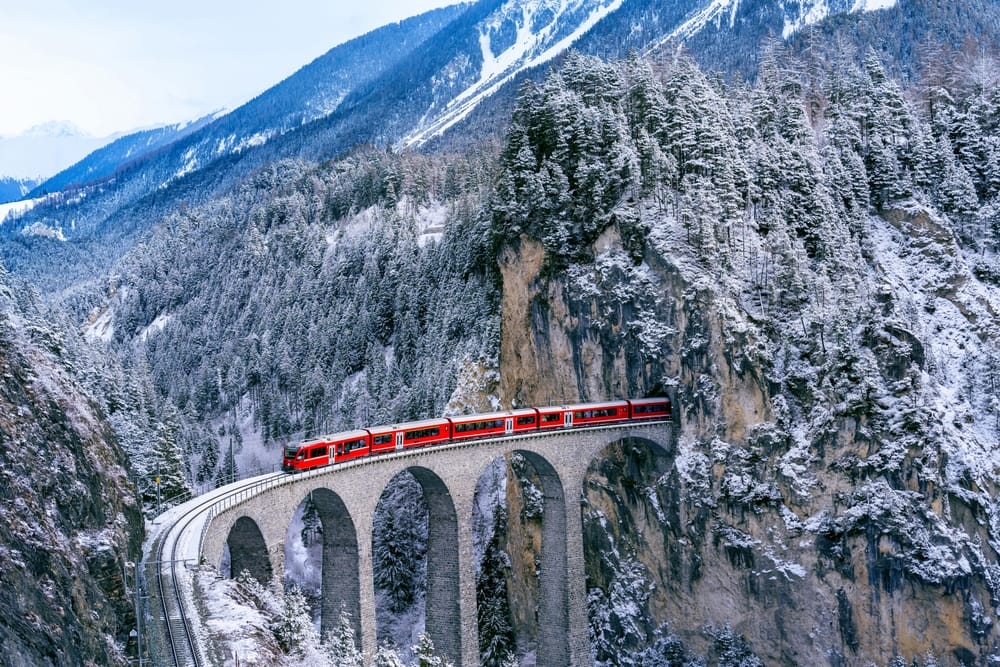
Train passing through famous mountain in Filisur, Switzerland.
Clothing Tips for Winter in Switzerland
Venturing to Switzerland for a winter wonderland experience? Expect a season of snow-kissed landscapes, crisp Alpine air, and possibly the best hot chocolate you've ever tasted! Swiss winters, spanning December to February, can be quite cold, with temperatures often below freezing, especially in mountainous regions. Your packing list should include warm clothing like thermal undergarments, sweaters, and a heavy coat to combat the chill. Don't forget a good-quality hat, gloves, and scarf to protect your extremities from the cold. Finally, if skiing, snowboarding, or other winter sports are on your itinerary, proper snow gear including snow boots, ski pants, and goggles are a must. Remember, in Swiss winter, it's all about staying toasty while you explore this winter wonderland!
- Thermal Undergarments : The Swiss winter can be quite cold, so pack thermal undergarments to stay warm.
- Warm Sweaters : Woolen or heavy knit sweaters are perfect for layering under a jacket. They provide much-needed warmth, especially on chilly days.
- Heavy Coat : A good-quality, insulated coat is a must for a Swiss winter. Opt for a waterproof version if you plan to engage in snow activities.
- Snow Boots : Especially for snowy regions, snow boots with good traction are essential to keep your feet dry and prevent slipping.
- Hats, Gloves, and Scarves : Protect your head, hands, and neck from the cold with a warm hat, gloves, and scarf.
- Snow Gear : If you're planning on skiing or snowboarding, you'll need appropriate snow gear, including ski pants, a ski jacket, and goggles.
- Warm Socks : Pack several pairs of warm socks, ideally wool or another thermal material, to keep your feet cozy.
- Long Pants or Thermal Jeans : Long pants, thermal jeans, or lined pants will help keep your legs warm during the colder days.
- Sunglasses : Despite the cold, the winter sun can be quite bright, especially when reflected off the snow. Don't forget your sunglasses to protect your eyes.
- Daypack : Finally, carry a sturdy daypack to store your essentials, including a water bottle to stay hydrated in the dry winter air. Make sure it's water-resistant or has a cover to protect your belongings from snowfall.
The ultimate packing lists for Winter in Switzerland (December,
January, february).
As we bundle up for an enchanting Swiss winter, understanding what to pack is crucial to fully enjoy this snow-kissed paradise. Whether it's descending powdery slopes, embarking on magical winter walks, or warming up with a cup of world-class hot chocolate, having the right gear can tremendously enhance your winter experience. Let's delve into our comprehensive packing list for a Swiss winter, ensuring you're prepared for every magical, frosty, and cozy moment. From the most practical thermal essentials to a few unexpected winter comforts, we've got your Swiss winter packing needs sorted!
- Waterproof and Insulated Jacket : Stay dry and warm during the occasional winter snowfall.
- Sturdy Snow Boots : Perfect for exploring Switzerland's famous snowy trails and slopes.
- Comfortable Insulated Shoes : Keep your feet warm while strolling through Swiss cities and towns blanketed in snow.
- Thermal Swimwear : Essential if you plan on visiting the inviting hot springs.
- Sunglasses and Warm Hat : Protect your eyes from the bright winter sun and keep your head warm with a good quality hat.
- Travel Adapter : Switzerland uses type J plugs, which differ from most of Europe.
- Insulated Water Bottle : Staying hydrated in dry winter air is key, and Swiss tap water is perfectly safe and delicious to drink.
- Travel eSIM Card : Stay connected with a travel eSIM card , especially useful for maps, translations, and sharing your winter wonderland shots.
- Travel Comfort Essentials : A neck pillow and eye mask for comfortable travel and better sleep after a day out in the snow.
- Sunscreen : Despite the cold, the sun's rays can be stronger than expected at higher altitudes.
- Snacks : Consider packing some high-energy snacks like chocolate or nuts for your winter hikes or ski sessions.
- Camera or Smartphone : Capture the stunning Swiss winter landscapes.
- Swiss Francs and Credit Card : Have some local currency for spontaneous café visits and a credit card for larger purchases.
- Travel Documents : Passport, IDs, tickets, and any necessary visas should be readily accessible.
- Daypack or Backpack : Carry your essentials during your winter excursions with a water-resistant daypack or backpack.
- Travel Guidebook : A handy reference for local customs, attractions, and language phrases to fully immerse yourself in the Swiss culture.
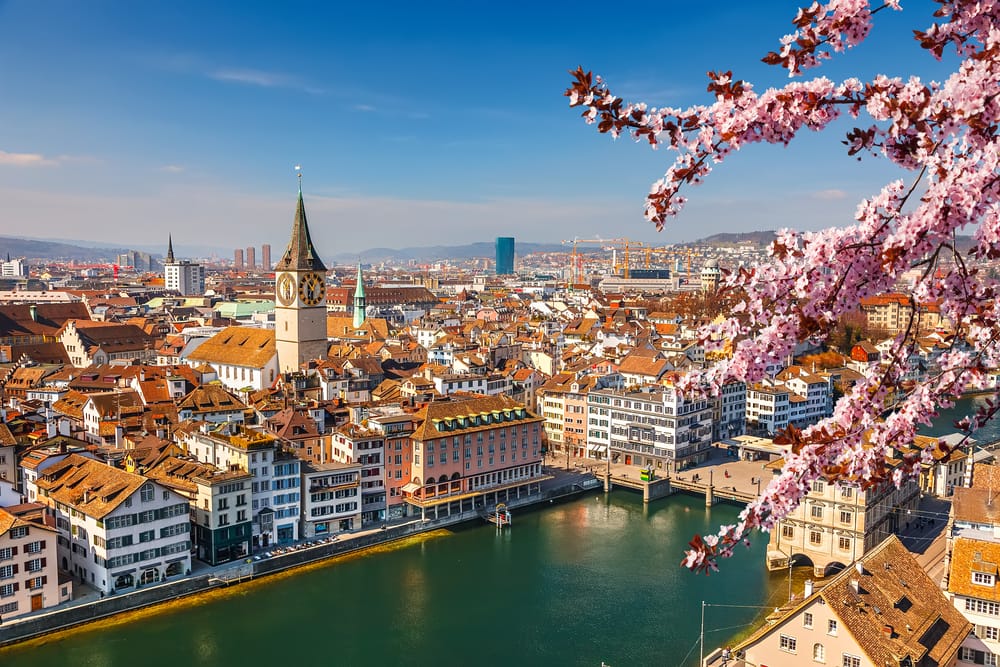
Downtown Zurich on a sunny day in Spring
Clothing Tips for Spring in Switzerland
So, you've chosen to witness Switzerland's grand awakening in spring? Great choice! As the snow melts away, it paves the way for a delightful display of blossoming flowers and sprightly greenery. The Swiss spring, running from March through May, can see a mixed bag of weather – think sunny afternoons and occasional showers, with temperatures often fluctuating. As such, your best bet is to pack layers, including T-shirts, light sweaters, and a waterproof jacket for those sudden showers. Don't forget a sturdy pair of walking shoes for those crisp springtime strolls, and if you're venturing into the mountains where snow might linger, warmer clothing and boots are a good idea. To top it all, a stylish hat and sunglasses will offer both protection and a dash of fashion flair!
- Layer Up : The temperatures in the Swiss spring can be unpredictable, varying from warm afternoons to cooler evenings. Pack layers like T-shirts, light sweaters, and cardigans to adjust as needed.
- Waterproof Jacket : Spring showers are a common occurrence. A lightweight, waterproof jacket will keep you dry and comfortable during these sudden downpours.
- Comfortable Walking Shoes : The thawing trails and city streets will be calling your name. Ensure you have a pair of comfortable walking shoes or waterproof boots for your excursions.
- Light Scarf : A light scarf can be a versatile accessory – it adds a pop of style to your outfit and provides an extra layer of warmth on cooler days.
- Long Pants or Jeans : Bring along a pair of long pants or jeans to keep comfortable during those chillier spring evenings.
- Umbrella : Compact and convenient, an umbrella is a must-have for those spring showers.
- Sunglasses and Hat : The Swiss sun can be intense, especially at higher altitudes. Pack a hat and sunglasses for protection.
- Thermal Layers : If you're planning mountain visits, where snow might still be present, thermal layers can keep you warm.
- Swimwear : Some of the lakes and public pools begin to open in late spring. If you're a water-lover, don't forget your swimwear!
- Daypack : Lastly, a lightweight daypack is crucial for carrying your essentials during your daily adventures. Bonus points if it's water-resistant to protect your belongings from those spring showers.
The ultimate packing lists for Spring in Switzerland (March, April, May)
As we gear up for a rejuvenating Swiss spring, understanding what to pack is key to fully embrace this blossoming wonderland. Whether it's exploring vibrant flower fields, embarking on picturesque lakeside walks, or sampling fresh local produce, having the right gear can significantly uplift your experience. Let's jump into our comprehensive packing list for a Swiss spring, ensuring you're well-prepared for every fresh, colorful, and inspiring moment. From the most practical layers to a few unexpected springtime necessities, we've got your Swiss spring packing needs covered!
- Light, Layered Clothing : Spring weather can be unpredictable, so think layers! Pack t-shirts, long-sleeve tops, and a couple of light sweaters for varying temperatures.
- Waterproof Jacket : Stay dry during the occasional spring showers with a waterproof or water-resistant jacket.
- Hiking Boots : Perfect for exploring Switzerland's renowned trails adorned with blooming wildflowers.
- Comfortable Walking Shoes : Ideal for strolling through Swiss cities and towns bursting with springtime vibrancy.
- Lightweight Swimwear : Essential if you're planning a dip in the crystal-clear Swiss lakes as they begin to warm up.
- Sunglasses and Hat : Shield your eyes from the bright spring sun and protect your head with a light hat.
- Travel Adapter : Remember that Switzerland uses type J plugs, different from most of Europe.
- Reusable Water Bottle : Stay hydrated during your springtime adventures. Swiss tap water is perfectly safe to drink and refreshing.
- Travel eSIM Card : Keep connected with a travel eSIM card , particularly useful for maps, translations, and sharing your springtime snapshots.
- Sunscreen : The sun can be stronger than expected in the Swiss mountains, even in spring.
- Snacks : Consider packing some granola bars or nuts for your hikes and day trips.
- Camera or Smartphone : Capture the stunning Swiss landscapes blooming in springtime colors.
- Swiss Francs and Credit Card : Keep some local currency handy for spontaneous café visits, and a credit card for larger purchases.
- Travel Documents : Keep your passport, IDs, tickets, and any necessary visas easily accessible.
- Daypack or Backpack : For carrying your essentials during spring day trips and hikes.
- Travel Guidebook : A handy reference for local customs, attractions, and language phrases, helping you fully immerse in the Swiss culture.
What NOT to pack!
- Expensive Jewelry or Items: Avoid attracting unnecessary attention or risking loss. Switzerland is generally safe, but it's better to be cautious, especially while traveling.
- Unnecessary Electronics: Apart from your phone, camera, and perhaps an e-reader, additional gadgets will likely just add weight and complexity to your travel experience.
- Bulky Towels: These take up precious suitcase space. Most hotels, and even many hostels, provide them. If you plan on swimming in lakes or hot springs, consider a quick-dry travel towel instead.
- Excessive Amounts of Cash: Switzerland is very card-friendly, and carrying a lot of cash can be a risk. It's good to have some on hand, but a credit card and debit card are usually sufficient.
- Full-Sized Toiletries: Not only do these take up a lot of space, but they also might not meet airline regulations for carry-on liquids. Opt for travel-sized versions or purchase some upon arrival.
Related Articles
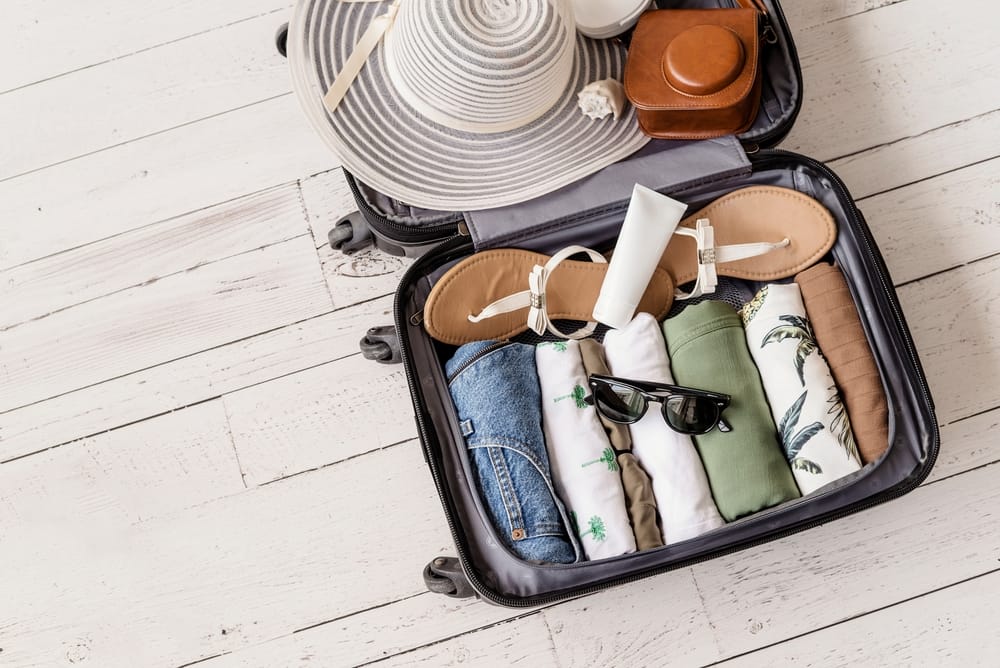
© Copyright 2019 | What To Wear On Vacation | All Rights Reserved
Get Daily Travel Tips & Deals!
By proceeding, you agree to our Privacy Policy and Terms of Use .
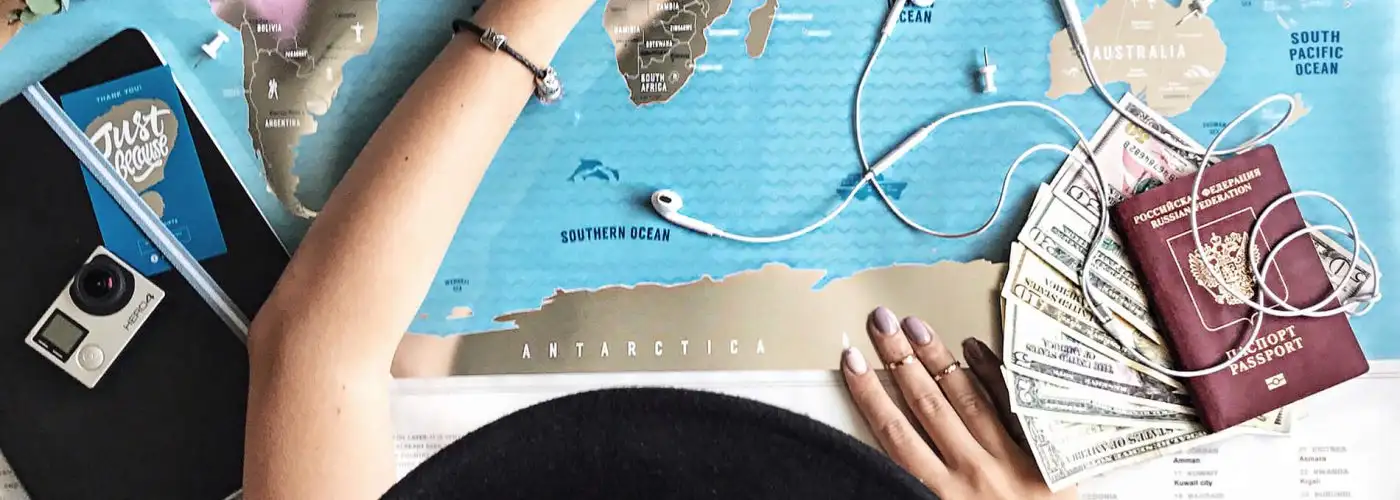
What to Pack for Switzerland: 31 Essentials
Caroline Morse Teel
Caroline Morse Teel is the Managing Editor for SmarterTravel Media. Follow her on Instagram @TravelWithCaroline .
Caroline joined Boston-based SmarterTravel in 2011 after living in Ireland, London, and Manhattan. She's traveled to all seven continents, jumped out of planes, and bungeed off bridges in the pursuit of a good story. She loves exploring off-the-beaten path destinations, anything outdoorsy, and all things adventure.
Her stories have also appeared online at USA Today, Business Insider, Huffington Post, Yahoo, Boston.com, TripAdvisor, Buzzfeed, Jetsetter, Oyster, Airfarewatchdog, and others.
The Handy Item I Always Pack : "Earplugs. A good pair has saved my sleep and sanity many times!"
Ultimate Bucket List Experience : Hiking Mount Kilimanjaro.
Travel Motto : "Don't be boring."
Aisle, Window, or Middle Seat : "Aisle (when the first class private suite isn't available)."
E-mail her at [email protected] .
Travel Smarter! Sign up for our free newsletter.
I traveled to Switzerland on a ten-day trip to Solothurn, Biel, Thun, and Zermatt in August 2017. Traveling in Switzerland means packing for different temperatures and terrains. From urban walks to alpine treks, here’s what to pack to be prepared, comfortable, and fashionable on a trip to Switzerland.
What to Pack for Switzerland: The Suitcase
Eagle Creek Lync —my Switzerland trip involved lots of public transportation, including trains, buses, and ferries, so I needed to pack light. Eagle Creek’s Lync rolling suitcase was perfect—the suitcase itself was lightweight (4.6 pounds) and easy to roll or carry. I chose this bag for my trip because it converts to a backpack (weighing 1.12 pounds), which I could use for day hiking trips without having to bring a separate backpack.
What to Pack for Switzerland: The Personal Item
The Eagle Creek Lync was a tight fit for 10 days, so I brought a larger “personal item” to go under my seat on the plane. I used Aide de Camp’s Nadine bag , which comfortably held my camera bag, purse, toiletry kit, and in-flight essentials.
What to Pack for Switzerland: In-flight Essentials
- Travel wrap : I always bring a wrap when I travel, and I like this one because it has pockets. On this trip it got used as a blanket on the plane, an extra layer over a dress, and as a towel after a dip in a lake.
- Inflatable neck pillow : This one by Eagle Creek is my favorite as it cinches in the front so that my neck doesn’t fall forward and wake me up.
- Eyemask and earplugs set : No overnight flight is complete without them.
What to Pack for Switzerland: Shoes
- Running Sneakers : I opted to bring my running sneakers instead of hiking boots, as these were more versatile. I was able to get runs in along some of Switzerland’s gorgeous urban jogging paths, and these sneakers were more than adequate for the well-maintained trails of the Swiss Alps.
- Allbirds : Lightweight, packable, washable, stylish, and can be worn without socks—these sneakers were comfortable for long walks and paired well with both my dresses and pants.
- Flip flops : For visiting saunas/pools/beaches and simply wearing around the hotel room.
- Born Izzabella : These ballet flats were super packable and comfortable—I wore them when my feet needed a break from sneakers and for evenings out.

Allbirds Men's Wool Loungers
Soft comfort in a smart silhouette that goes with every outfit and occasion. ...MORE play
What to Pack for Switzerland: Jacket
- Patagonia Nano Puff Hoodie : Despite heading to Switzerland in the summer, I packed a jacket and was so glad I did. Patagonia’s Nano Puff hoodie was perfect because it was water-resistant and had a hood (which came in handy when it rained). It was lightweight and packed down small, so I didn’t mind carrying it in my backpack during hiking, and it was warm enough at most of the higher summits.
What to Pack for Switzerland: Clothing
- Comfortable pants/jeans : I brought one pair of pants but regretted not bringing two pairs—it can get cold on the trains as well as in the mountains, so definitely pack a few pairs.
- Shirts/Sweaters : Layers are key for Switzerland’s quick-changing weather. I brought a good mix of shirts, sweaters, and workout tanks.
- Dresses : Dresses were a great option for days when I was just walking around cities, as well as for dinners out. The Swiss tend to dress up a little bit, so you’ll fit in more if you dress up a bit.
- Hiking clothes : I packed my regular workout clothes for hiking in Switzerland and they were great—look for something moisture-wicking if you’re going in summer as it can get really hot.
- Swimsuit : You can swim in most lakes and rivers in Switzerland, so don’t forget to pack your swimsuit if you’re visiting in the summer.
What to Pack for Switzerland: Toiletries
- Sunscreen : You’ll burn faster at high altitudes, so don’t skimp on this. Sunscreen was pretty expensive in the stores.
- Refillable bottles for hair conditioner, body wash, and body lotion : I used Eagle Creek’s refillable bottles to bring my own hair conditioner, body wash, and body lotion and was glad I did. Switzerland as a whole is very eco-conscious, and most of the hotels that I stayed in did not provide small bottles of free shampoo, conditioner, and lotion as is usually standard. Most hotels just had a large bottle of shampoo (no conditioner) in the shower and that was it for toiletries.
- Ibuprofen : Ibuprofen is a recommended cure if you get headaches at high altitude, and it also comes in handy if you get sore after hiking.
- Probiotics and antacids : I found the food in Switzerland to be delicious and rich, so if you have a sensitive stomach and no willpower, you might want to bring some medicine to help with indigestion.

Supergoop! Travel Sunscreen Set
...MORE play
What to Pack for Switzerland: Purses
- Lo & Sons The Claremont Crossbody Camera Bag : I had a DSLR camera with me, and needed a camera bag to protect it. I liked Lo & Sons because it looks like a normal purse, is lightweight, and fit all my daytime essentials as well as my camera.
- Pacsafe Stylesafe Anti-Theft Crossbody Bag : When I wasn’t carrying my big camera, I downsized to this smaller bag, which is lightweight, water-resistant, and protects against pick-pockets.
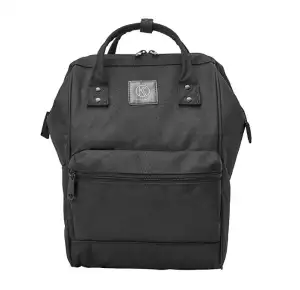
Anti-Theft Backpack
What to pack for switzerland: gadgets.
- USB cable : I took Swiss Rail between all of my destinations, and most of the trains were outfitted with USB ports to charge all my gadgets.
- Kindle : I brought a Kindle thinking I would read on the train rides, but the scenery outside was way too distracting. However, if you get bored easily, you may want one.
- Waterproof pouch : Switzerland has lots of pristine lakes and rivers for public swimming—I found this waterproof pouch to be a good way to keep my valuables with me and dry.
What to Pack for Switzerland: Accessories
- Umbrella : Weather in Switzerland can be unpredictable. A good travel umbrella is a must.
- Sunglasses : Especially at higher altitudes, you’ll need eye protection from the strong sun.
- Running armband : If you’re a runner, Switzerland has some great urban jogging paths that you should take advantage of. I used Otterbox’s armband to carry my phone so I wouldn’t get lost (and could snap some photos on my route).

Hoke Ultra Mini and Light Umbrella
What to pack for switzerland (that i didn’t).
- Water bottle : Water is safe to drink from public fountains and taps (and even some streams) all over Switzerland. I should have brought a refillable bottle and taken advantage.
- Hat : I wasn’t prepared for how strong the sun can be at higher altitudes.
- Gloves and warmer layers to wear under my jacket: When I visited the Matterhorn Glacier Paradise , the temperature at the top (in August) was 29 degrees Fahrenheit (at the bottom, in Zermatt village where my hotel was, it was in the 70s). I couldn’t stay outside on the observation platform for long as I was too cold. If you’re planning a visit here, make sure you pack something warm.
What Not to Pack for Switzerland
- Noise-cancelling headphones : I was surprised that Swiss Air used the two-prong headphone jacks with its seatback entertainment system, so I could have left my noise-cancelling headphones behind, as I had to use the freebie airline ones in-flight.
- Hiking boots : I debated whether or not to bring hiking boots as I did some day hikes in the Swiss Alps. If you’re going in the summer, you should be fine with regular sneakers, even on longer trails.
Look Switzerland-Chic for Your Trip
Plaid winter coat for switzerland, shop the look.
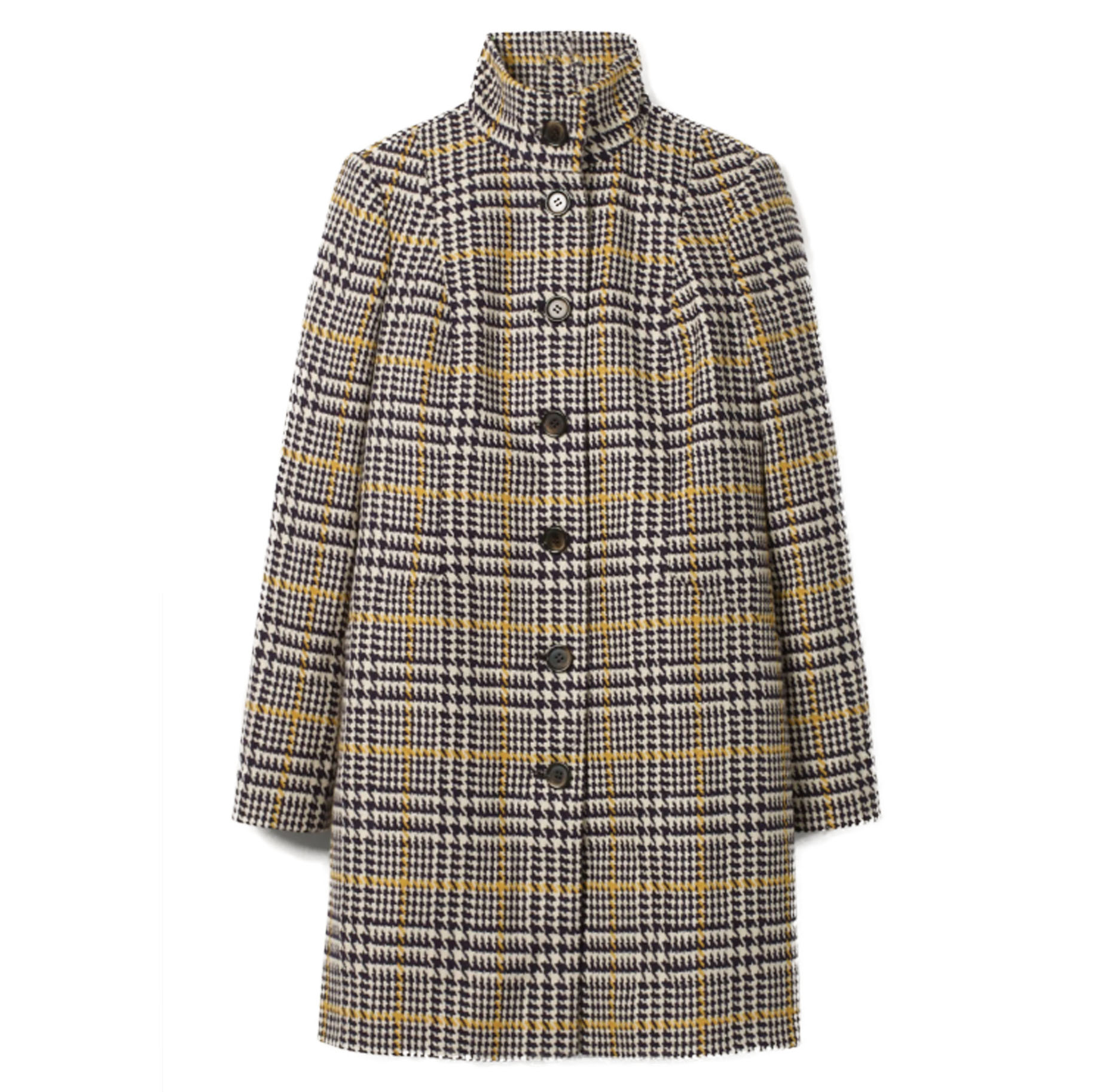
Hengrave Tweed Coat
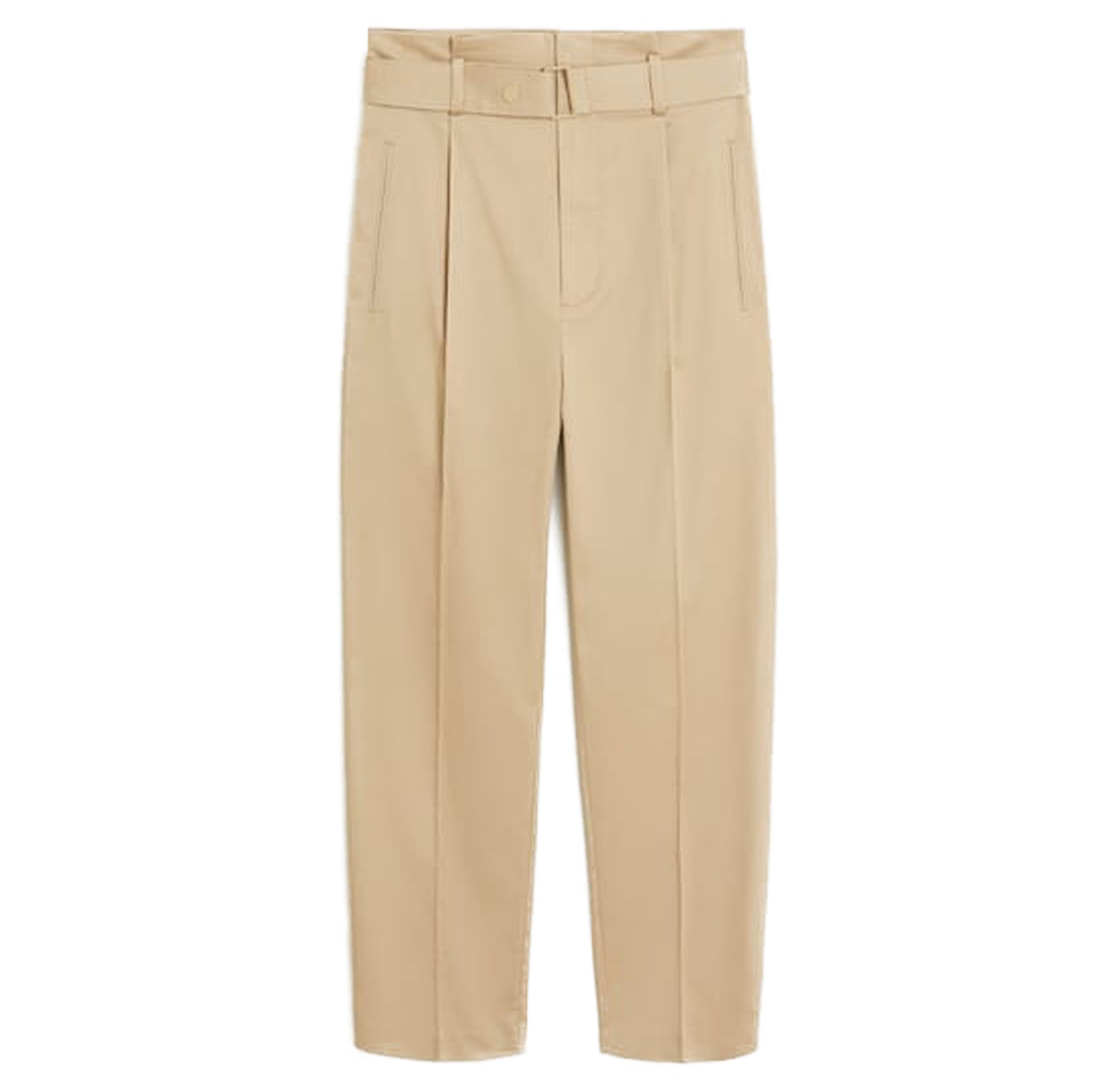
Belt Straight-Fit Trousers

Cashmere Smart Gloves
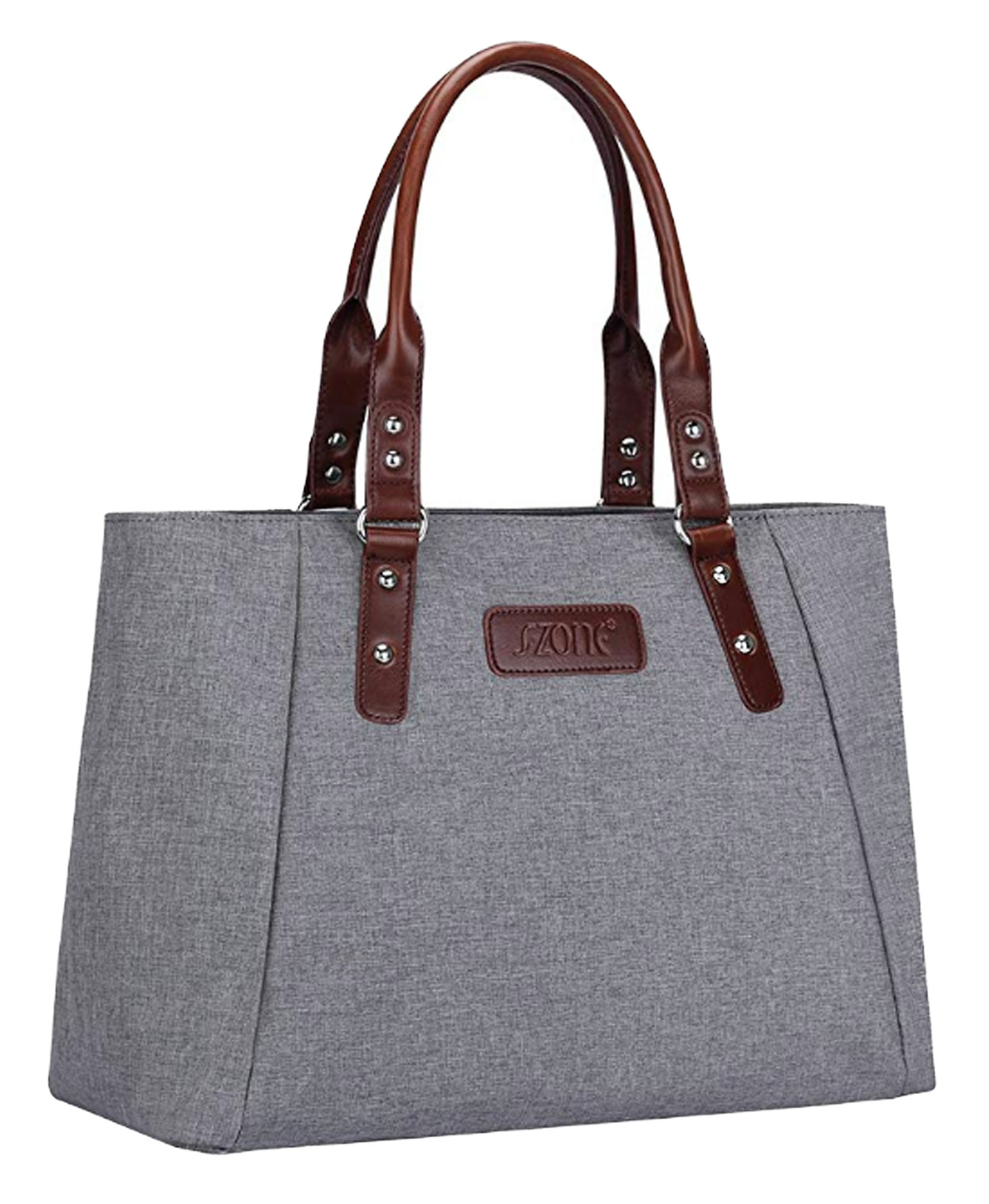
Large Tote Bag
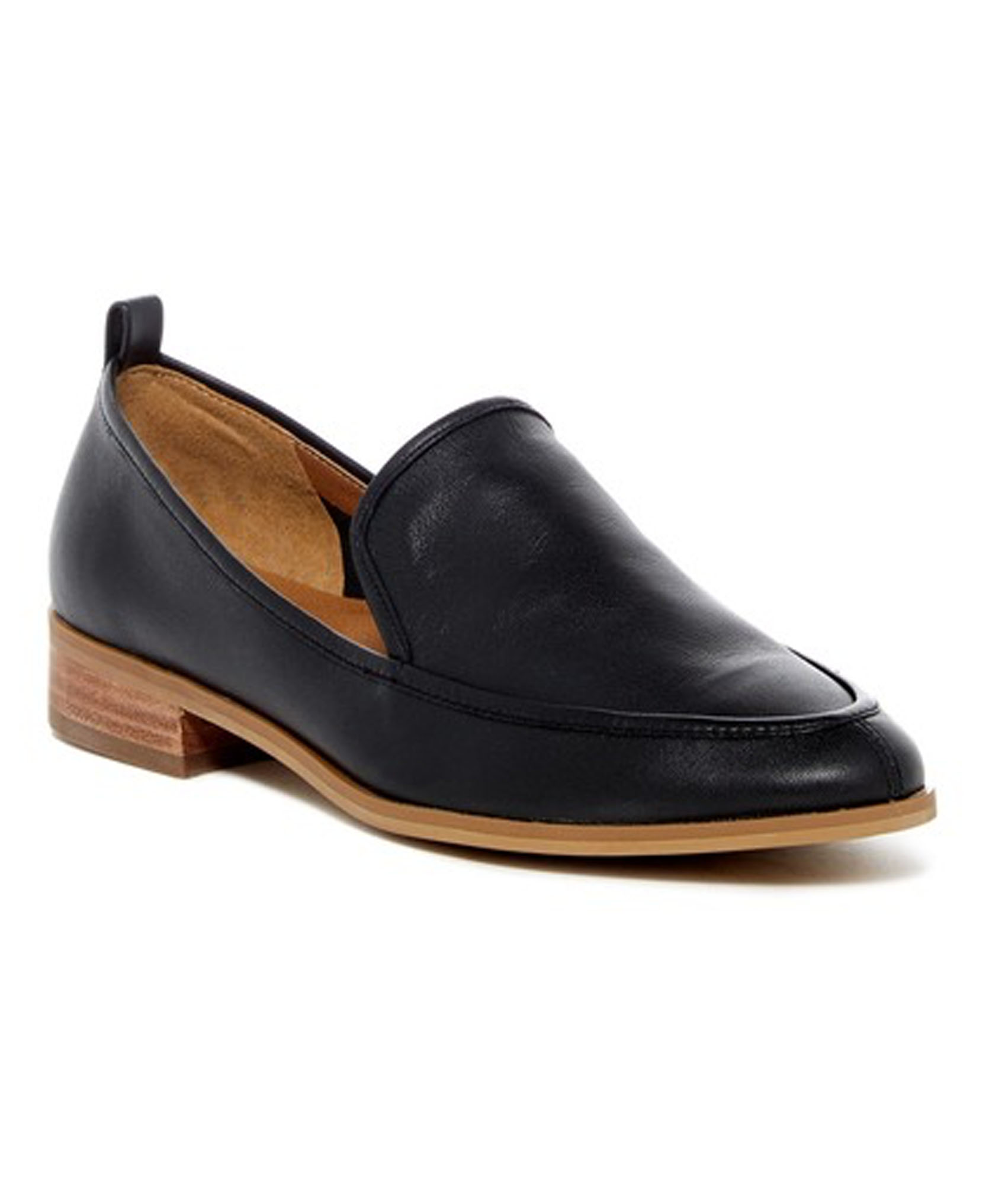
Almond Toe Loafer
Fabulous winter scarf and comfy sweater.
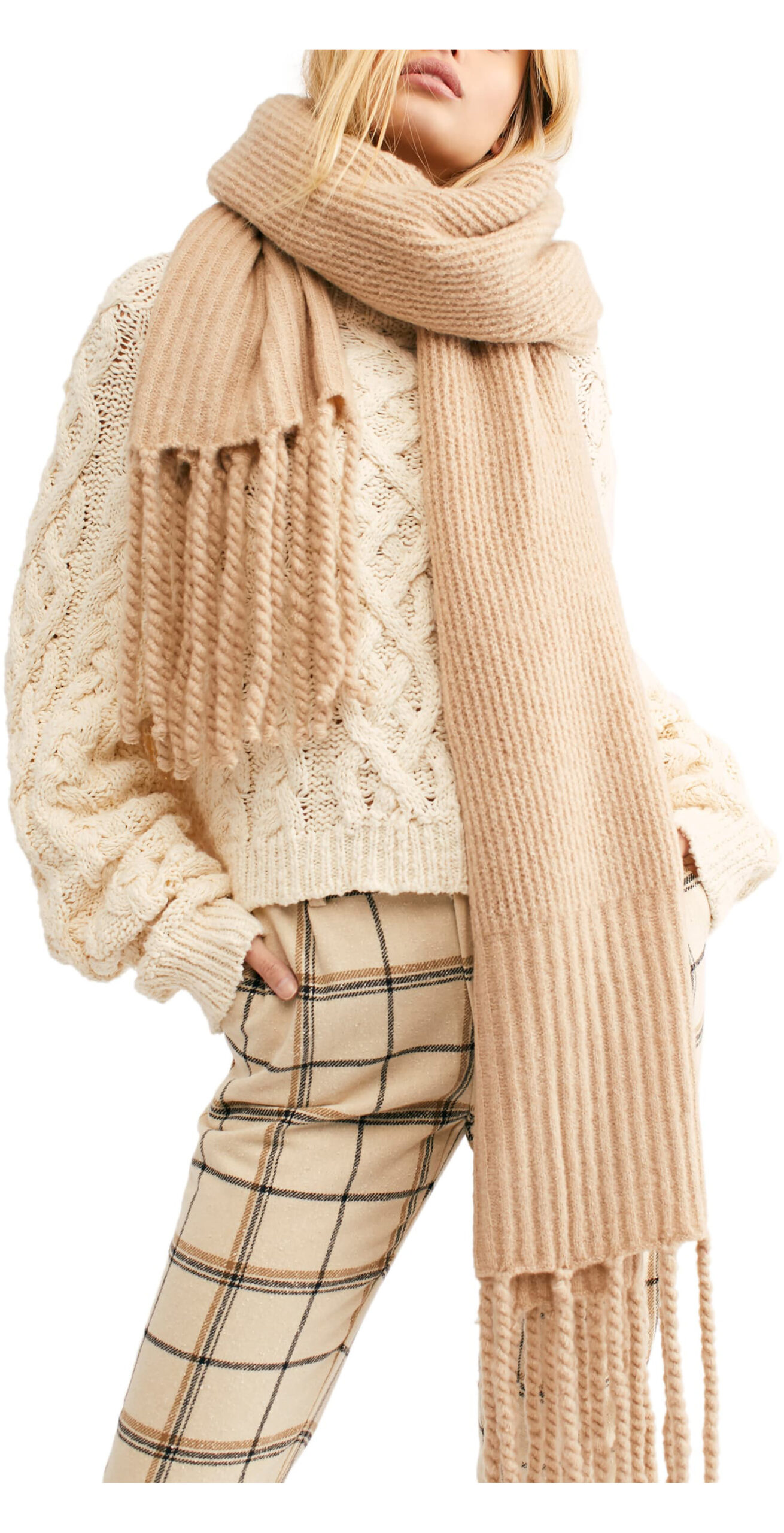
Blanket Scarf

Heart Earrings
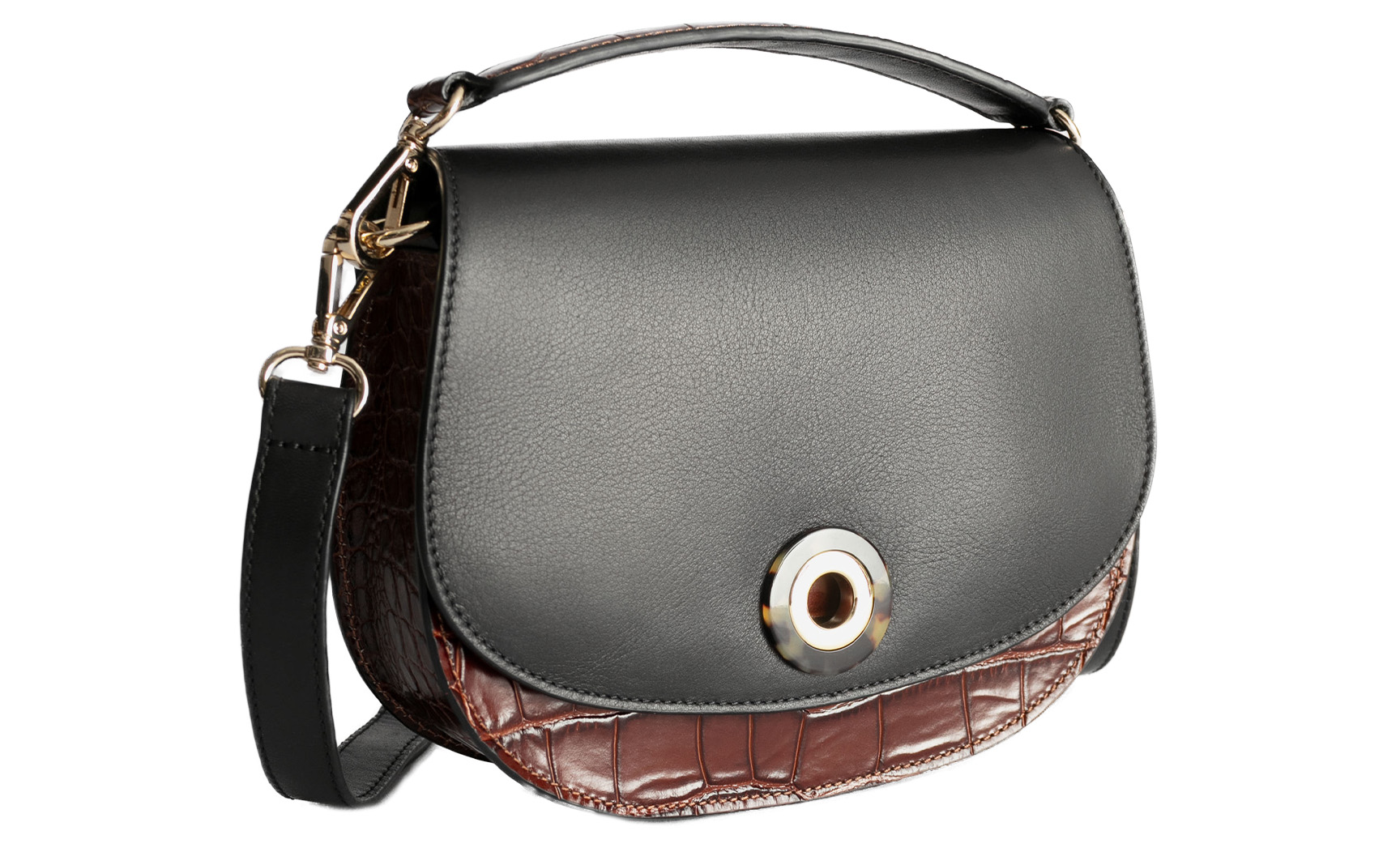
Knitted Sweater

Linen Woods Bootie
What to wear in europe.
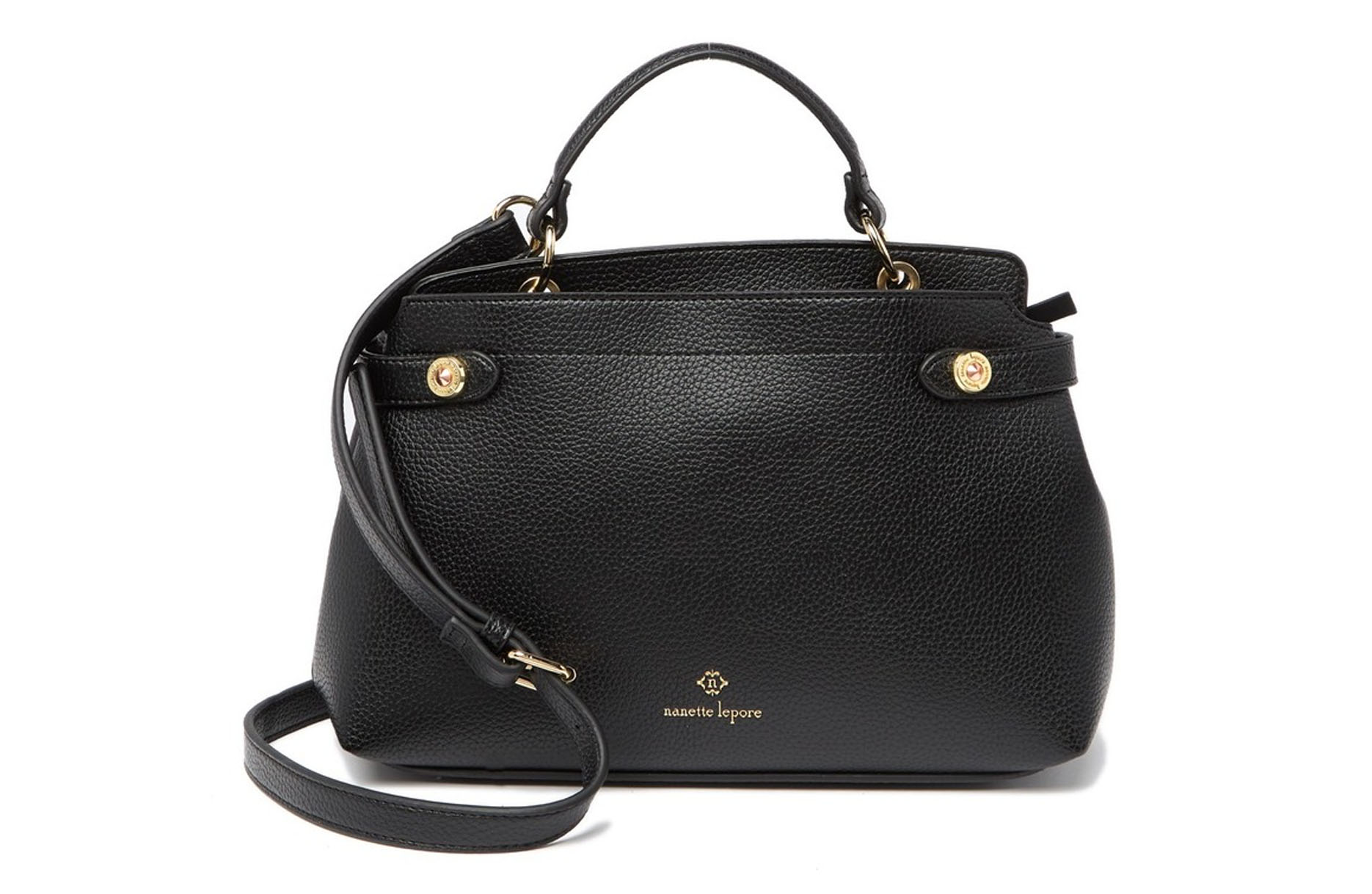
Handle Crossbody Bag
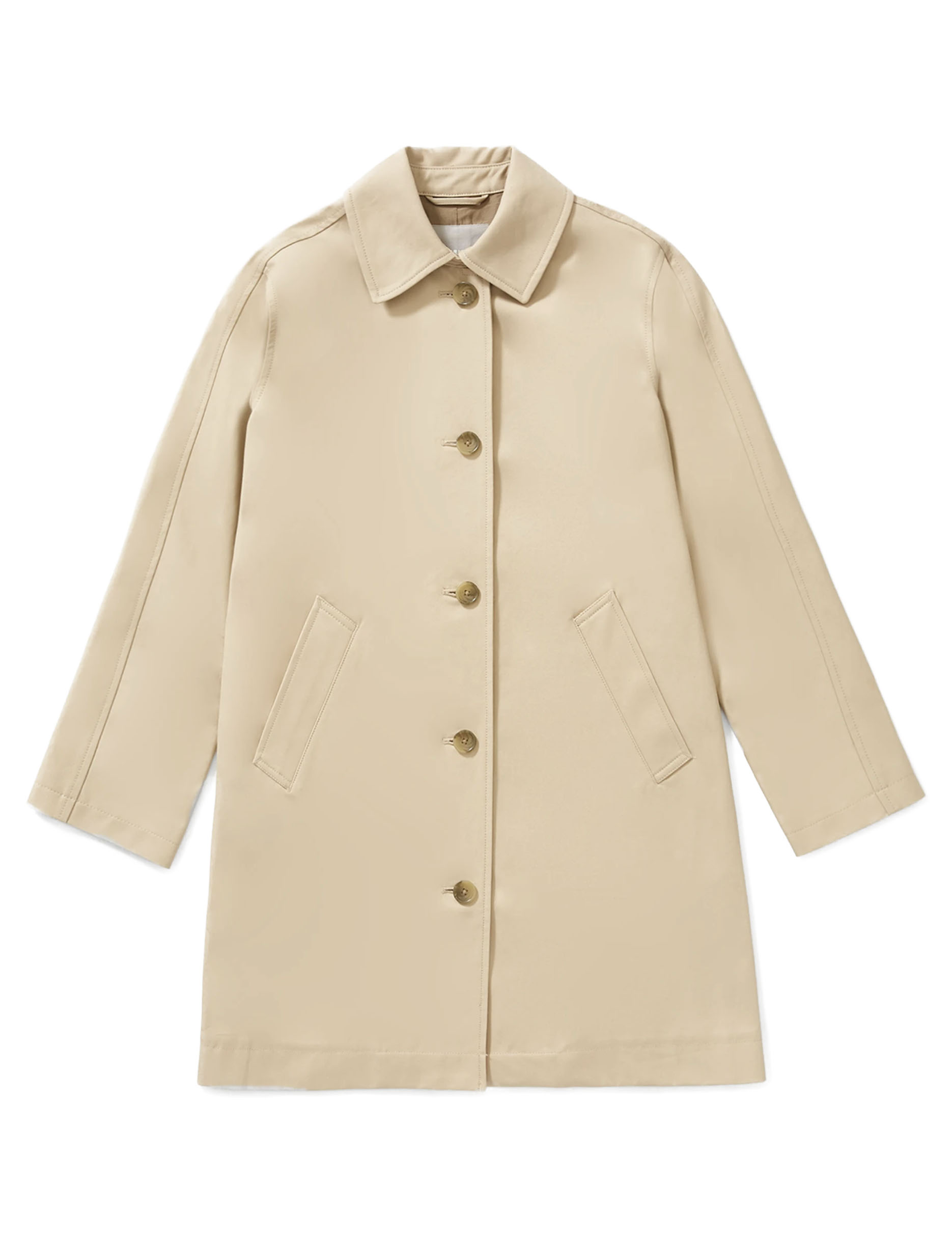
The Mac Coat
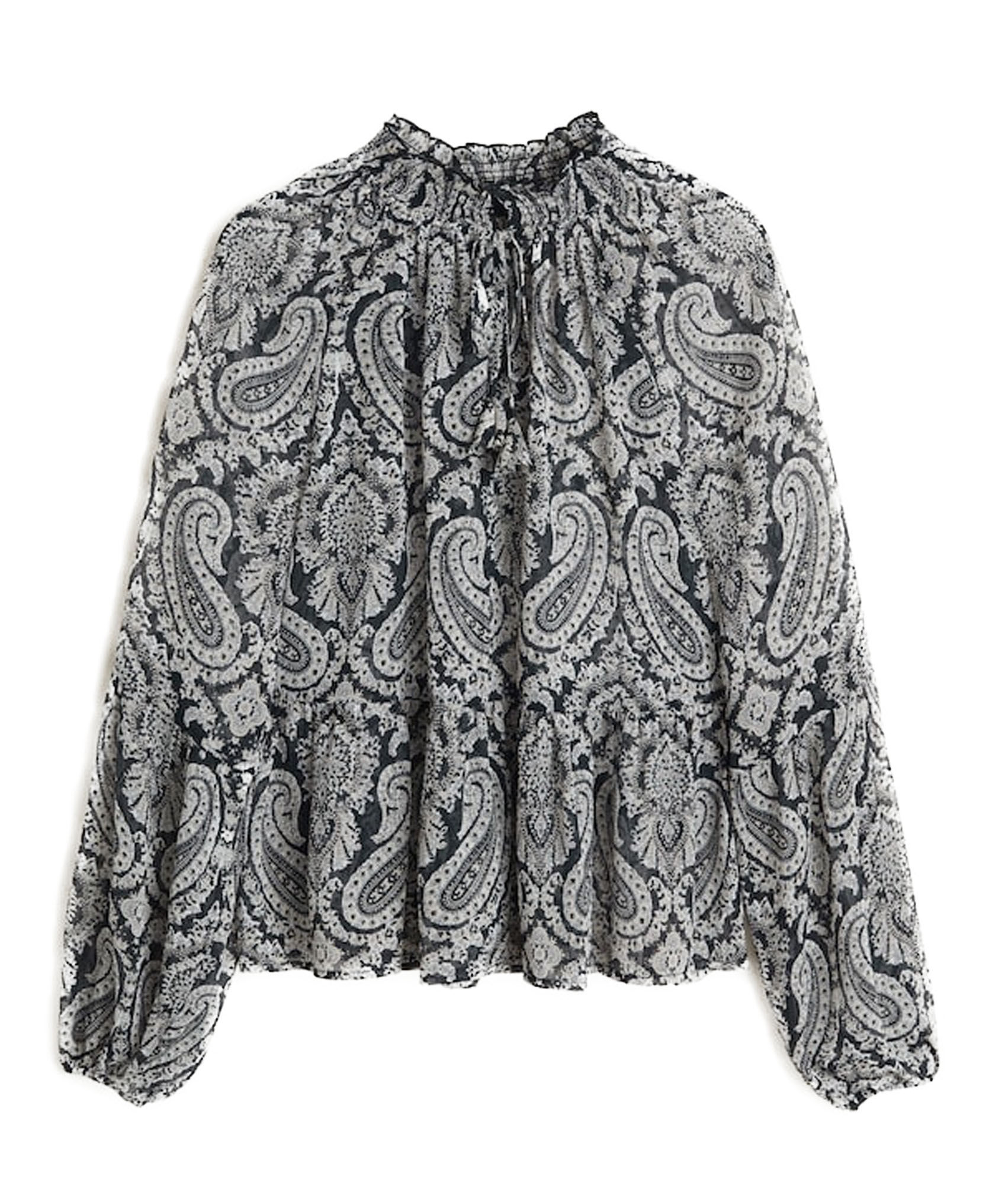
Paisley Print Blouse
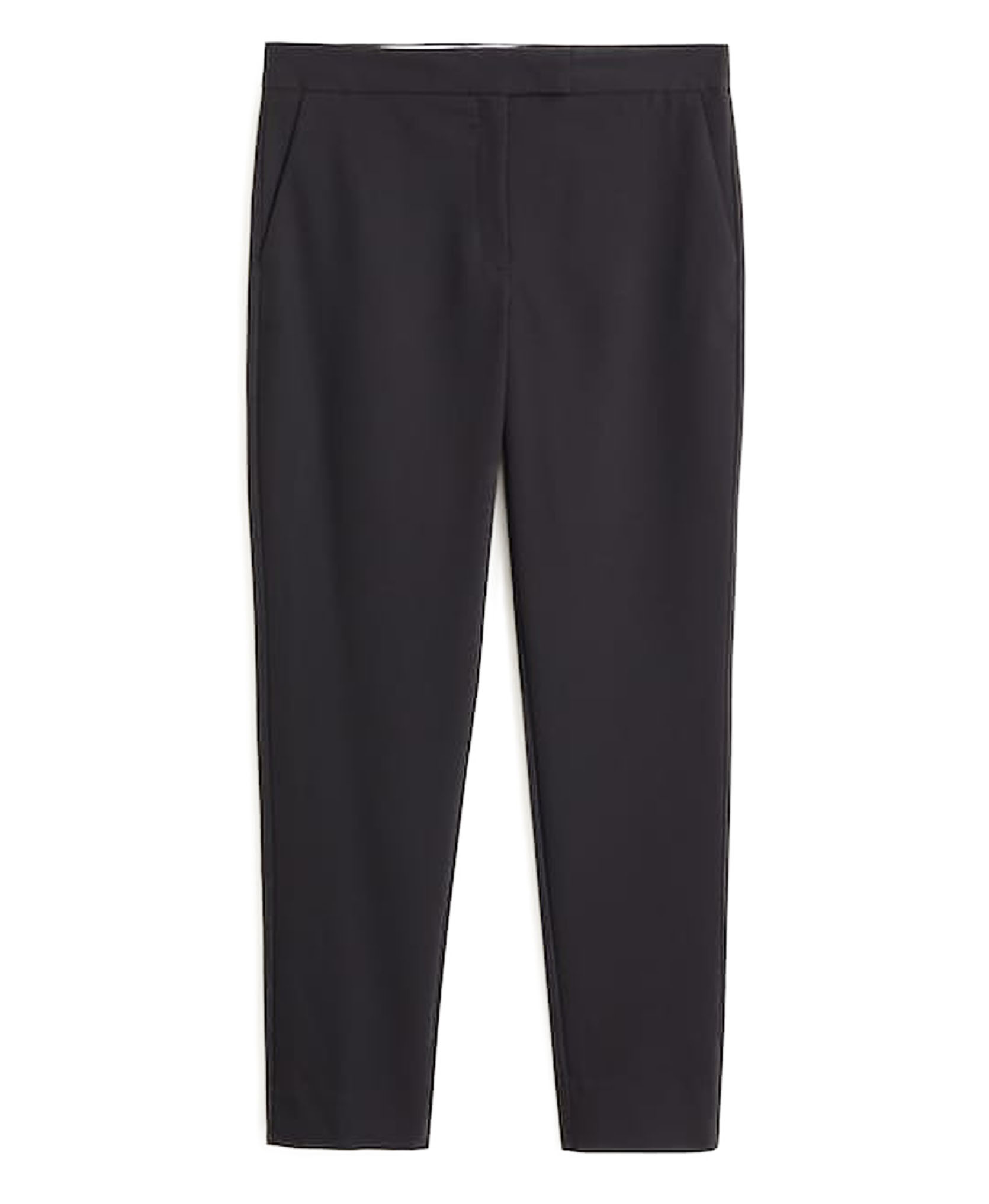
Straight Suit Trousers
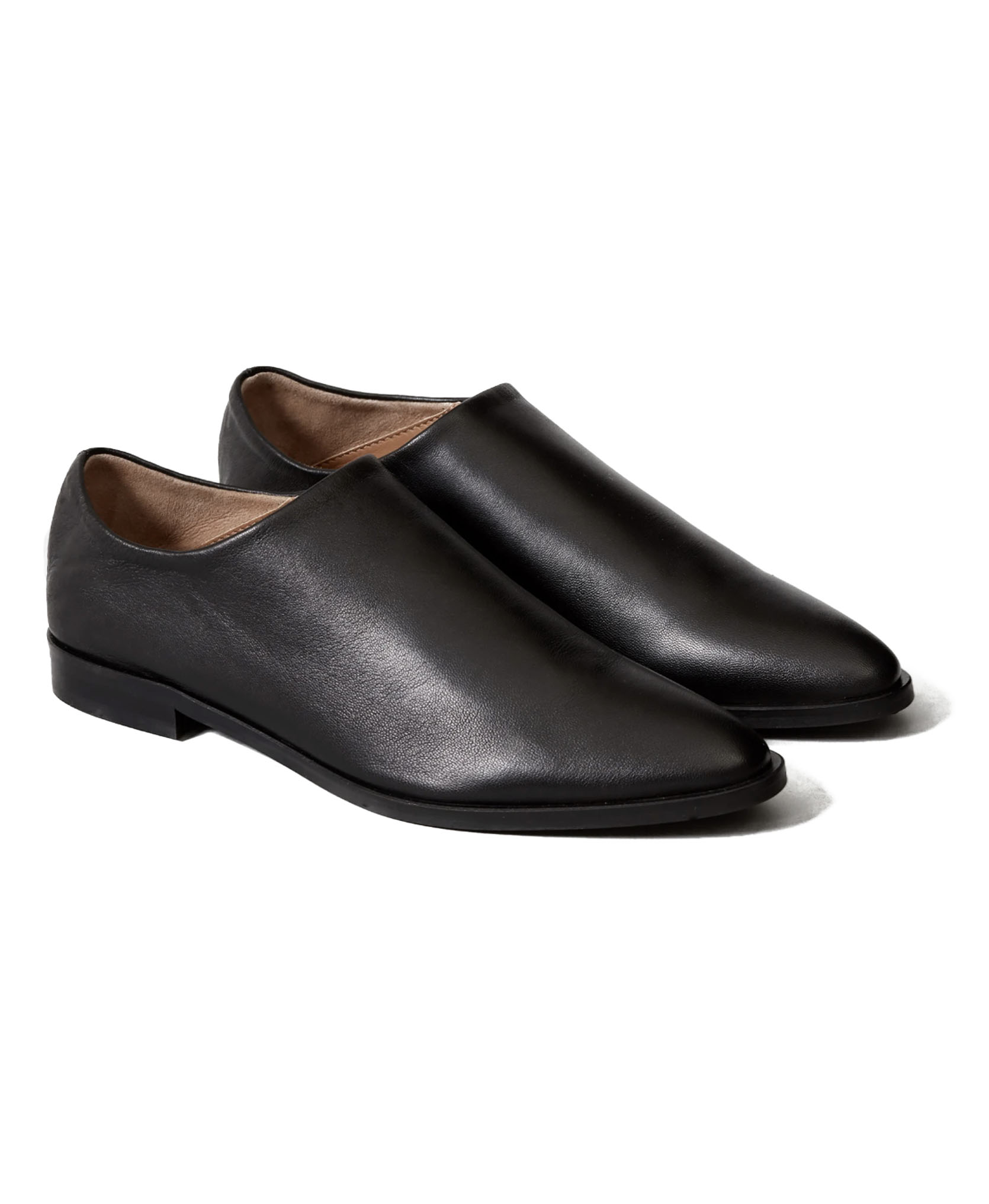
The Modern Babo
Women’s snappy outfit for traveling with any cute jeans.
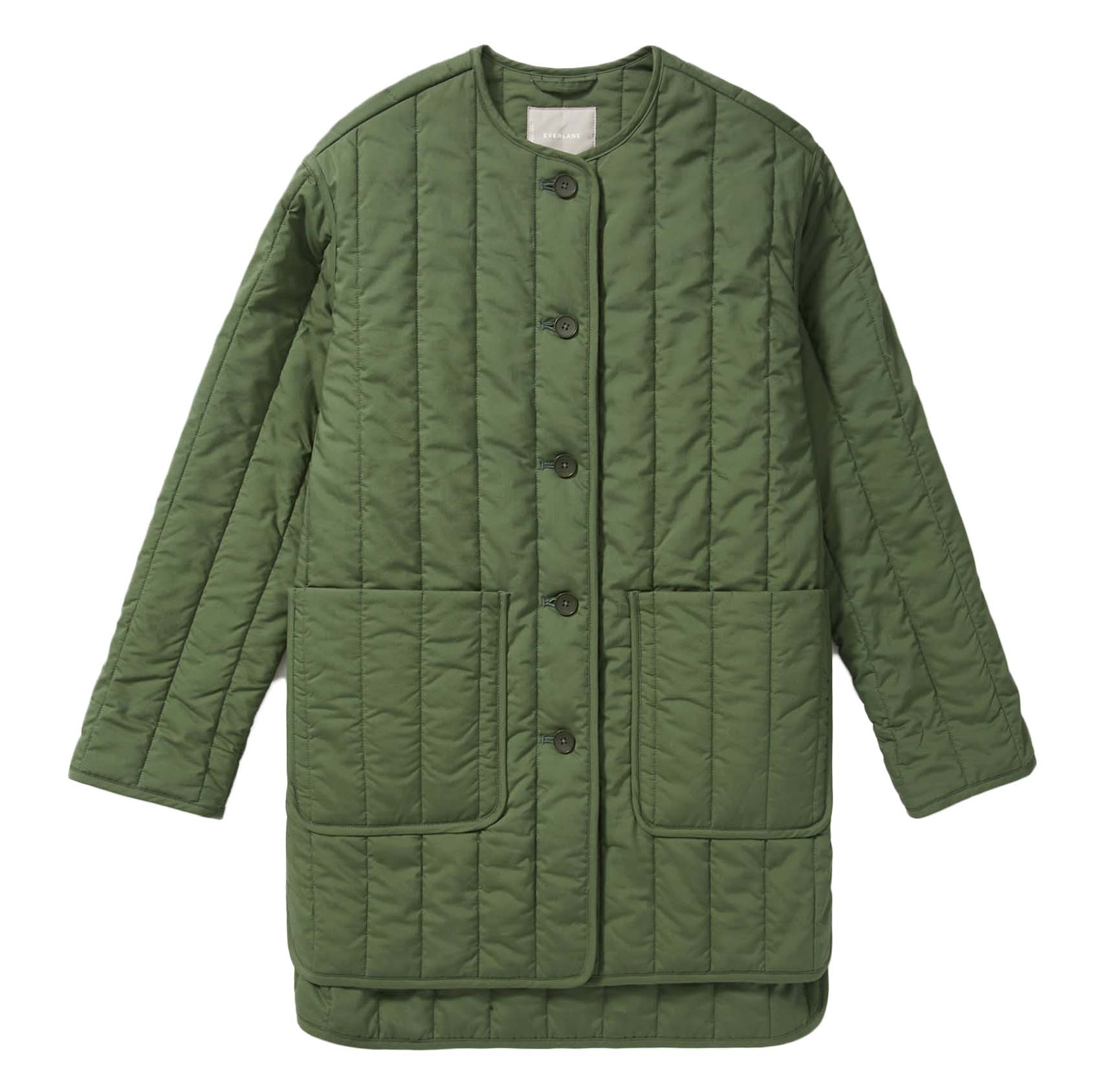
Cotton Quilted Jacket
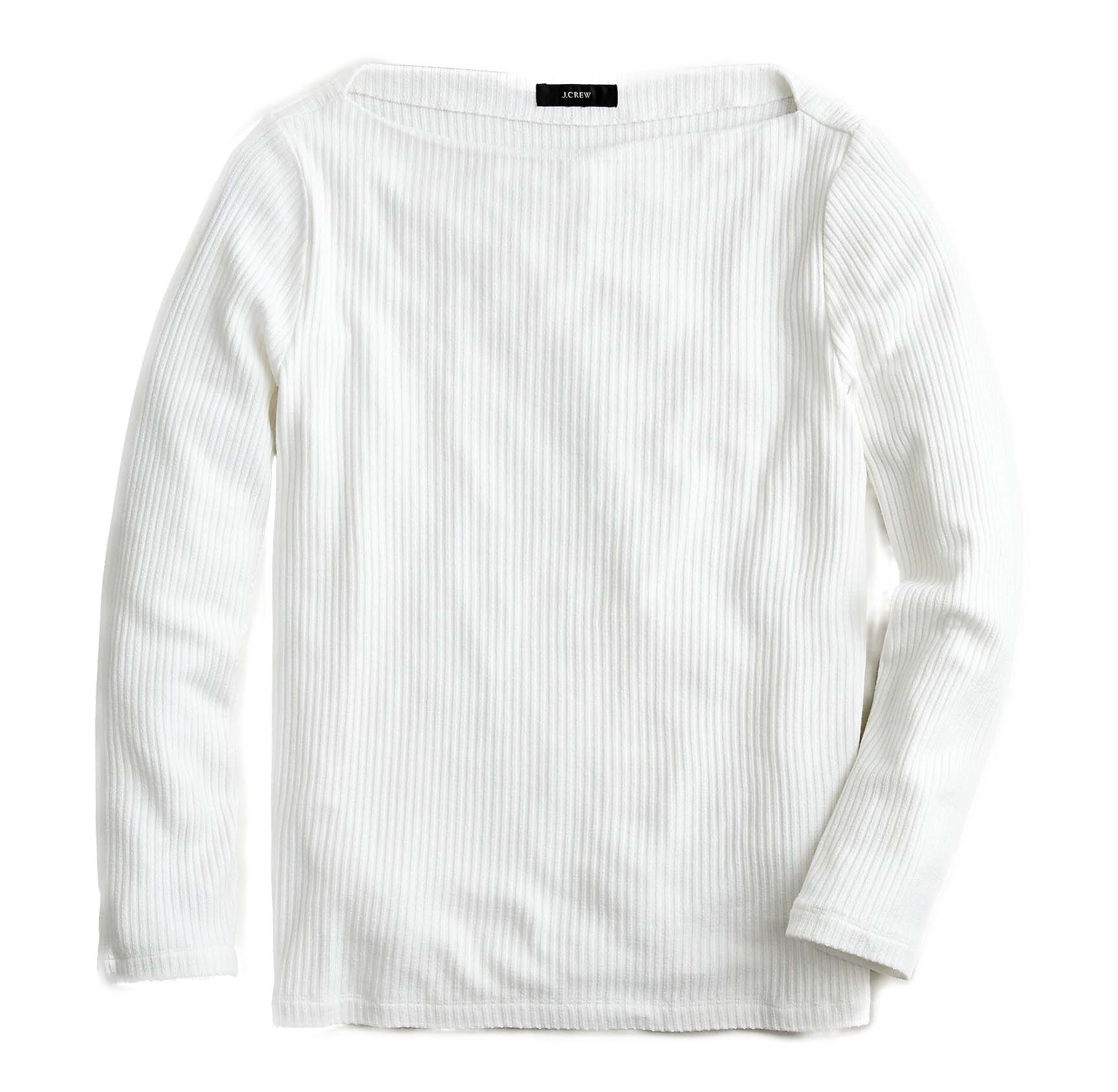
Ribbed Bateau Neckline T-shirt
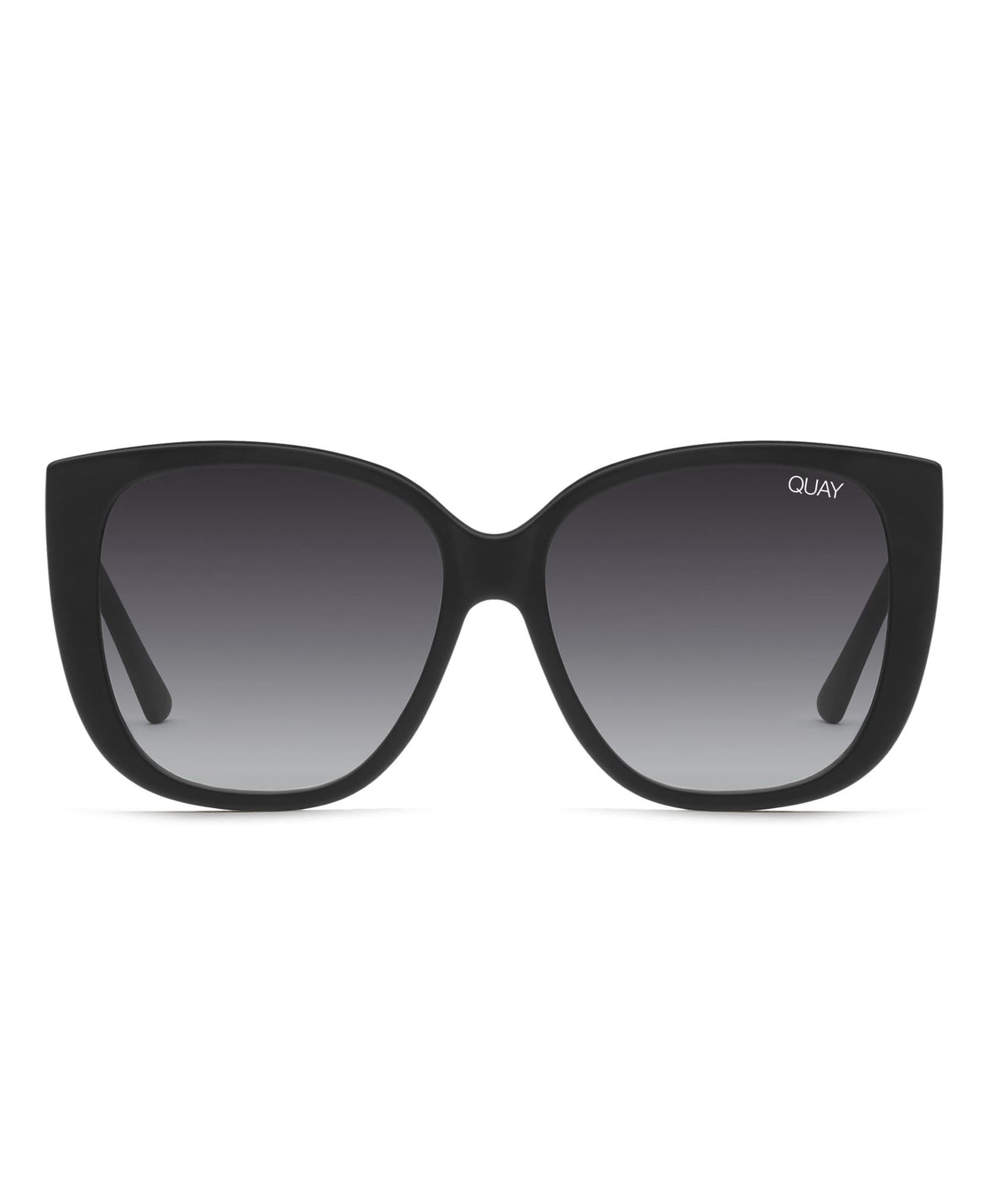
Cat-Eye Sunglasses
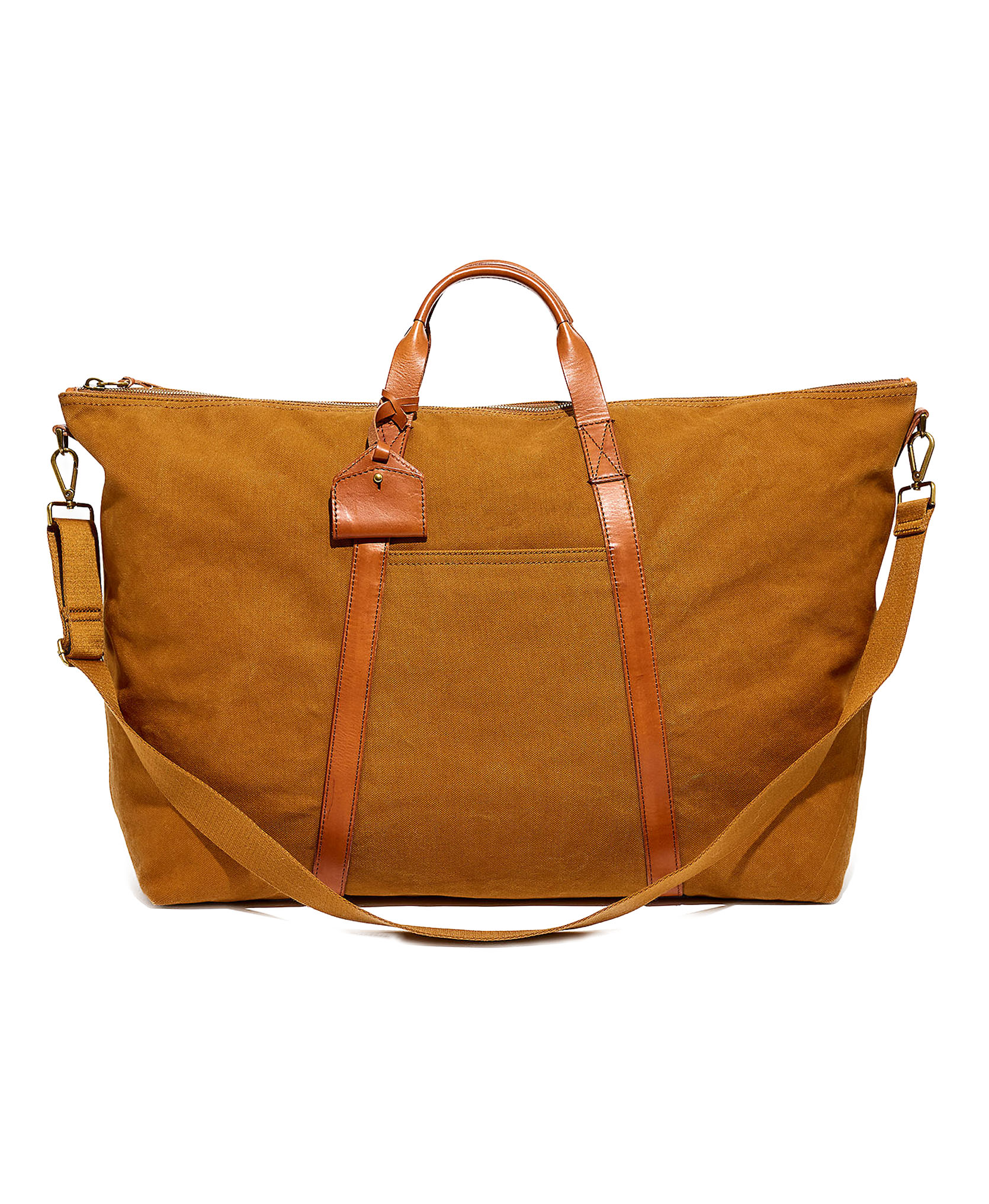
Essential Weekender Bag
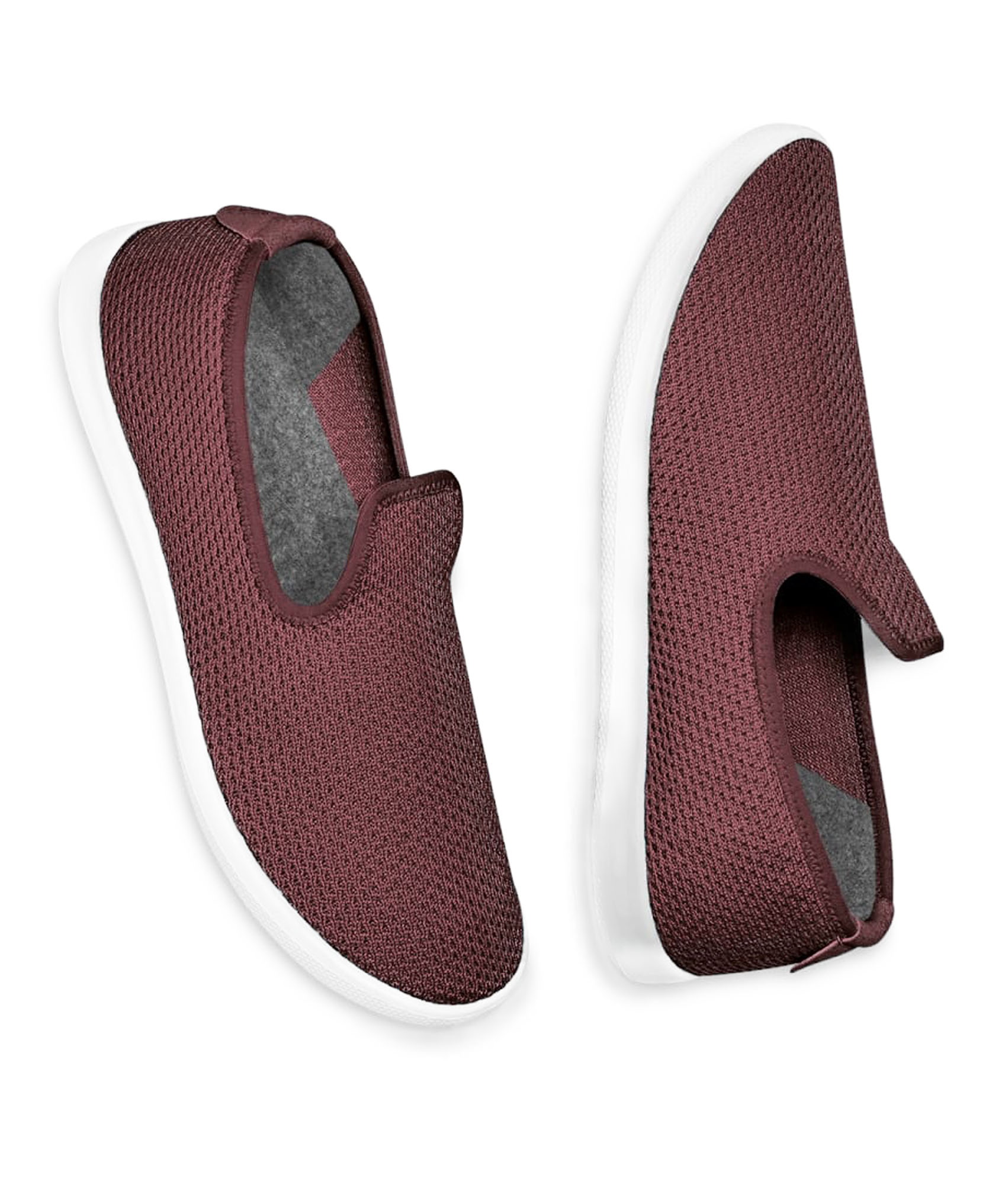
Women's Tree Loungers
More from smartertravel:.
- Tipping in Switzerland: The Switzerland Tipping Guide
- Switzerland Travel Guide: What to Do in Switzerland
- 10 Ways to See Switzerland Like a Prince or a Pauper
[viator_tour destination=”69″]
Caroline Morse was hosted by Switzerland Tourism. Check out their website for lots of great Switzerland travel tips, and be sure to follow Caroline on Instagram @TravelWithCaroline for photos from her adventures in Switzerland and around the world.
We hand-pick everything we recommend and select items through testing and reviews. Some products are sent to us free of charge with no incentive to offer a favorable review. We offer our unbiased opinions and do not accept compensation to review products. All items are in stock and prices are accurate at the time of publication. If you buy something through our links, we may earn a commission.
Top Fares From

Don't see a fare you like? View all flight deals from your city.
Today's top travel deals.
Brought to you by ShermansTravel
Porto to Lisbon: 7-Nt, Small-Group Portugal...
Indus Travels

Luxe, 12-Night Spain, France, Monaco &...
Regent Seven Seas Cruises

Ohio: Daily Car Rentals from Cincinnati

Trending on SmarterTravel
Switzerland Packing List: What To Wear For Your Trip

If you are lucky enough to visit Switzerland, you are in for a fantastic time. Between the mountain peaks of the Swiss Alps, the lakes, valleys, rivers, and waterfalls, plus the amazing cities, there is a lot to explore.
Since Switzerland is such a diverse country with many different activities, putting together your Switzerland packing list isn’t easy. Add in the changeable weather, and you have an even more significant challenge.
Not to worry, having spent a lot of time in Switzerland, I am here to help. Below, you will find a Switzerland packing list for all the seasons that also take into account your activities. Whether you’re going on a winter trip or summer, we have you covered.
Table of Contents
What To Wear in Spring/Summer/Fall
The weather in Switzerland is very changeable in spring and fall. It is consistently pretty hot in summer with sunny skies. However, if you are in the Swiss Alps, it can go from warm and sunny to cold and windy relatively fast.
The Switzerland Packing List you will find below will cover you for all the weather you might experience in spring, summer, and fall.
Spring/Summer/Fall Packing List (Clothes & Shoes)
What to wear for summer.
- 1 Waterproof & Windproof Jacket
- 1 Light down jacket
- 1-2 Light sweaters
- 2 Pairs of pants / trousers
- 1-2 Pairs of leggings
- 2-3 Pairs of shorts
- 5 T-shirts or tops
- 2 Dresses or skirts
- 1 Light scarf
Shoes for Summer
- 1 Pair of flip flops (for swimming, shared showers)
- 1 Pair of sandals for hot days
- 1 Pair of hiking boots for tougher hikes
- 1 Pair of sports shoes for light hikes
- 1 Pair of dress shoes or high heels for a night out

Waterproof & Windproof Jacket
A waterproof jacket is always needed in Switzerland, especially in the mountains. When the winds pick up, it gets cold very quickly and the rain often comes with them.
And remember, Switzerland sometimes has four seasons in one day. So, a rain jacket will keep you dry and warm no matter what comes.
Light Down Jacket
I would also recommend bringing a light-down jacket with you. The evenings get cold in spring and autumn and at higher altitudes in the summer.
When walking home from dinner or starting a hike in the early morning, you will be happy to have a light-down jacket with you.
Jeans & Chinos
Two pairs of pants (trousers) is the minimum you should bring with you. Jeans are great for when you are in the city and some pants like chinos are great for everything, including hiking.
Ladies, you may want some stylish linen trousers for being in town in the summer evenings.
It can get sweltering in Switzerland in the summer. Especially since temperatures have started rising in the last few decades.
So, having some shorts is key to being comfortable during your trip. Pack at least 2 or 3 pairs for summer and at least 1 for spring or fall.
T-shirts & Tops
Around 5 t-shirts or tops are ideal for a trip to Switzerland. You’ll be hiking in them, wearing them during the day, and at the beach in the summer. They are also great for layering on the colder days of spring and fall.
Light Sweaters
A light sweater or two should also be on your packing list for spring, summer, and fall. A merino wool sweater is great for layering on colder days and will remove the chill on chilly evenings in the summer.
Dresses & Skirts
Some dresses and skirts are perfect for spring, summer, and fall in Switzerland. They are great for beach days, lunches, and dinners. Bring 2 of each.
Leggings are great to wear with a dress/skirt in spring and fall when the colder weather comes in. One or two pairs should be enough.
A light scarf for spring and fall is a good idea, and it will also be helpful in the mountains in the summer.
Flip Flops / Sandals
Flip flops or sandals are perfect for walking around the cities and lakes of Switzerland in the summer and on the warmer days of spring and fall.
Hiking Boots
You must bring hiking boots with you if you intend to conquer some of the more demanding mountain trails.
Sneakers are always helpful and will work for tamer hikes; you can wear them on cooler days in spring and fall.
Dress Shoes or High Heels
If you want to dress up for those romantic candlelit dinners, you will need some dress shoes or high heels, too.
Spring/Summer/Fall Packing List (Underwear, Socks & Accessories)
Underwear, socks & accessories.
- 1 Protective hat for hikes or city walks
- (optional) 1 stylish hat for your outfit
- 1 Pair of sunglasses
- Swimmers (and goggles are optional)
- Towel for swimming
- Thermals for the mountains
- 5-7 Socks & underwear (or more if you can’t do laundry)
- Reusable water bottle (easy to fill in Switzerland)
- Swiss knife for picnics
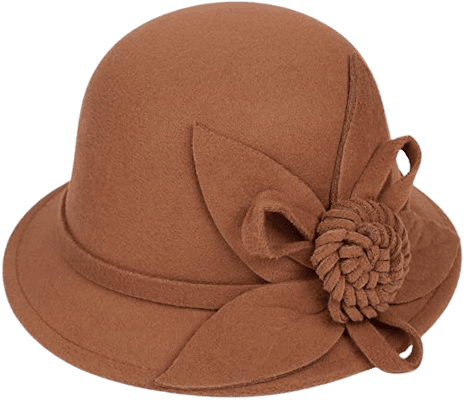
You will want a hat to protect you from the sun while hiking or hanging at the beach. You may also want to add a stylish hat for lunches around town
Sunglasses are a must. They protect your eyes around the lakes and at high altitudes.
Swimwear & Goggles
Life in Switzerland during the summer revolves around the lakes. Taking a swim is a must, and since they are crystal clear, some goggles are essential so you can see all the fish while you swim.
One set of merino wool thermals might save you in the mountains during spring and fall. Hopefully, you won’t need them, but you will be glad you have them when you do.
A small travel towel for the lakes is also vital, especially when swimming in high alpine lakes as they are chilly and you will want to dry off.
Reusable Water Bottle & Swiss Army Knife
A reusable water bottle will not only save you money but also saves the environment too. The tap water in Switzerland is excellent and you can fill it up while hiking from glacial streams and local fountains that are everywhere in the cities..
A Swiss Army Knife is always handy to have with you so you can fix something or cut cheese for your lakeside picnic.
Socks & Underwear
A few pairs of socks are essential. Ankle socks are great with sneakers in summer, some light hiking socks are also a good idea if you plan on long walks in the mountains.
5 pairs of underwear and bras are also essential and enough for a more extended trip.
Related Reading
8 swiss outdoor clothing brands you need to explore, switzerland packing list for winter.
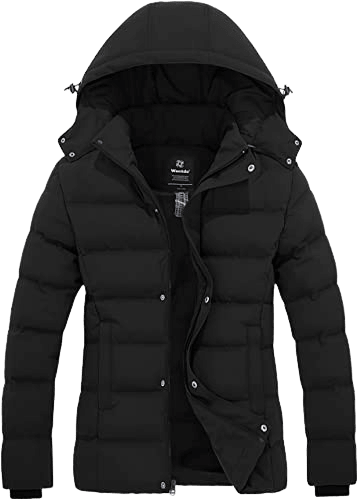
What to wear in Switzerland in winter is all about layers. The weather can be extremely cold, and when the sun shines, you can overheat quickly.
Dressing in layers allows you to add and remove them as you go, so you are always comfortable and have an enjoyable trip.
Here is a packing list for winter that includes a winter sports section.
Winter Packing List (Clothes & Shoes)
- 1 Warm winter jacket
- (optional) 1 Down jacket
- 1 Fleece or woolen sweater
- 2-3 T-shirts or tops
- 2 Pairs of pants or jeans
- 1 Pair of winter leggings (ladies)
- 1 Pair of waterproof walking shoes
Waterproof Warm Winter Jacket / Warm Coat
You will wear a warm, waterproof jacket in Switzerland almost every day during the winter. It is key to blocking wind chill, keeping you dry and warm on the coldest days.
Down Jacket
A warm-down jacket is ideal for layering under your coat and is a must-have when in the mountains during winter, especially at night or when you are less active.
A fleece or two is also needed for layering under your down jacket when it is bitterly cold.
Merino Wool Sweater
Merino wool is the perfect layer as it helps you wick sweat and stay comfortable as temperatures change or while you are active.
A few t-shirts and light tops are always great to have when you are not active or the weather isn’t too cold.
Winter Leggings
Warm leggings are a perfect underlayer with pants and can be worn with a dress.
Two pairs of jeans or chinos are great for the evenings in winter and layered with thermals when it is really cold.
Waterproof Shoes/Waterproof Hiking Boots
Cold feet are not an option. Some waterproof shoes and hiking boots are essential to keeping your feet warm and day, especially when hiking in the snow.
Winter Sports Clothes
We have covered almost everything you need to layer with while on the slopes. But you will still need a ski jacket and ski pants.
A waterproof ski jacket that is both breathable and has enough to layer and let you move is key to enjoying your time skiing.
Make sure you have some waterproof, breathable, and warm ski pants . They are essential to your comfort on the slopes.
What To Wear In Winter (Underwear, Socks & Accessories)
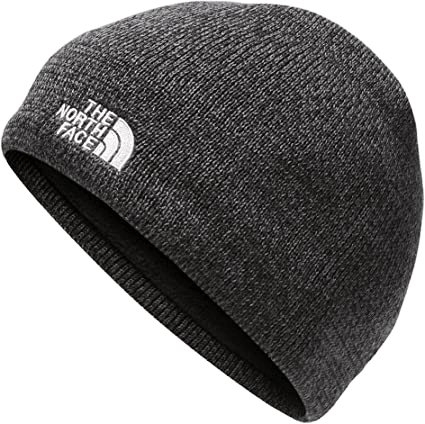
- 1-2 Sets of thermals (top & bottom)
- 1 Beanie or hat
- 1 Woolen scarf
- 1 Pair of winter gloves
- 5 Pairs of winter socks (Merino wool is ideal)
- 5-7 Pairs of underwear (depending on laundry options)
Something you have to pack for Switzerland in winter is thermals. A full set of thermal pants and a long/short sleeve thermal top are a must.
Two sets of thermals are a good idea, too, as you can use one for skiing that can be filled with sweat and one for strolling around the ski resorts in the evening.
Warm socks are a must. A thin pair of merino wool socks for an underlayer and a thicker pair to layer over them will keep you snug. Some ski socks are also essential if you plan on hitting the slopes. Plus, some day-to-day socks are a good idea.
A warm hat is another thing to pack for Switzerland in the winter. A warm beanie is ideal; a beanie with a brim is even better to protect you from the sun while skiing.
Polarized sunglasses with mirror lenses are a must-have when skiing. The glare from the snow is intense and your eyes will get damaged without them. A good pair of ski goggles is also a good idea.
A warm scarf is another must-have for warmth and ensuring you don’t get sick during your vacation.
A good pair of gloves are essential for your winter Switzerland packing list. Choose waterproof gloves that also work with touchscreen phones to take pics and send messages without getting frozen hands.
You will experience rain and/or snowfall during winter while in Switzerland. A small umbrella is ideal to stay dry in a sudden downpour.
5 pairs of underwear and bras are also essential and enough for a longer trip.
Evening Wear

If you plan on spending time in Swiss cities, then some smart loungewear or evening wear is essential. The Swiss tend to dress up quite a bit and you don’t want to be caught out.
- 1 Pair of smart pants
- 1-2 Shirts (men)
- 1-2 Dresses (women)
- Dress shoes or high heels
Smart Pants
One pair of smart pants is a good idea for dinners out, and two pairs might be needed if you spend a while in the cities.
Smart Shirts
Smart shirts are great for high-end dinners at Switzerland’s many top-notch restaurants.
Dresses are ideal for cities and when out for dinner
Smart Shoes
Some smart shoes that don’t take up too much space are a good idea. Leather boots also work in winter as they keep you dry and warm.

Everyone needs some toiletries with them when they travel. You can pack light and avoid bringing shower gel, shampoo, and conditioner as your hotel room will likely provide them.
Here is a list of toiletries to bring with you:
- Aftershave/perfume
- Shaving essentials – electric razor/razor/shaving foam/epilator
- Face and body moisturizer
- Toothbrush, toothpaste, floss, mouthwash
- Shampoo, body wash, conditioner (if you don’t want to use the hotels)
- Exfoliating face wash
- Hairbrush or comb
- Nail clippers
If you want to bring make-up with you, don’t forget these:
- Small make-up mirror
- Eyeliner and eyeshadow
- Powder and brushes
- Make-up remover
Electronics

- Power pack (for longer days out)
- Travel adapter
- Camera & camera bag
- Headphones/ear buds and a speaker
If you like to watch movies, edit photos, or want to work online while you are traveling or while in Switzerland, your laptop is essential.
Traveling without a phone is not a good idea. You’ll need it for flights, navigation, planning public transportation, buying tickets, taking cute photos, and lots more.
Being able to charge on the go makes a world of difference. You can always keep your phone topped up to get around and recharge your camera in the mountains if you need to.
Travel Adapter
Swiss sockets are rather annoying as they have a unique shape. Ensure you have a travel adapter with a Swiss plug on it to charge all your things.
A travel adapter with USB ports will allow you to charge multiple things at once, like your laptop, phone, and camera all at the same time.
Camera & Camera Bag
Most of us just use our phones to take pictures these days but the landscapes of Switzerland deserve a proper camera if you have one.
The photos you take with a DSLR of the mountains, lakes, and rivers will be worth blowing up, printing, framing, and hanging on your wall at home.
Headphones & Small Speaker
If you love music or want to watch a movie on a train, then some headphones are a good idea. Playing some music on a small speaker while having sunset drinks on the slopes or by the lake is always nice.
Best Swiss Products: 12 Famous Things to Buy
Other things to pack for switzerland trip.

It goes without saying that you should bring any prescription meds you need with you. Be sure to bring the prescription in case TSA asks for it at airport security.
You should also bring ibuprofen as well as paracetamol with you when you visit Switzerland. Ideal for headaches and muscle injuries, and it saves you from going to a pharmacy while you are there.
Water bottle
I have already mentioned bringing a water bottle but I’ll do it again. A reusable water bottle is a must as you won’t have to pay for water and can take it on adventures.
Packing Tips for your Switzerland Trip
- Layers are key in all seasons, especially in the mountains in summer when you are most likely to get caught without them.
- Comfortable walking shoes are a must so you can explore as much as you would like
- Rolling suitcases or duffles are ideal for getting from the train station to your hotel
- Pack things that have more than one function – a ski jacket will double as a winter coat, for example
Choose the Right Luggage

The first step to ensuring you get your Switzerland packing list on point is choosing the right luggage. It mainly comes down to how you plan to travel around Switzerland and what activities you plan to do.
Checked Luggage
It is hard to pack light for Switzerland if you intend to explore everything it has to offer, from the Swiss Alps to everything in between, and even more challenging if you plan to ski.
Chances are, you’ll also take advantage of Switzerland’s impeccable public transport system to get around.
Therefore, I recommend you bring either a large suitcase with wheels or a large duffel bag with wheels . This will make changing to trains and walking from train stations to your accommodation much easier.
If you are backpacking around Switzerland and know you’ll have some longer hikes to do with all your luggage or need a multiple-day pack for adventures, then a large backpack is also an excellent way to go.
I would highly recommend using a sizeable 2-day backpack as your carry-on baggage. You will be out and about exploring and having a large enough backpack makes this much more manageable.
You can use the same backpack for a ton of things. Fill it with drinks, picnic food, towels, and swimwear for days at the lake beaches. It is perfect for hiking, and you can even take it skiing.
Light Foldable Bag
A light foldable bag is also a great idea when traveling to Switzerland. You can use it for grocery shopping, picnics, and to carry your valuables when popping out to dinner or a sunset drink by the lake.
Packing Cubes
When packing light isn’t easy, packing cubes make life much easier. Not only do they keep your things much more organized, but they also reduce the overall volume to create more space if needed.
13 Best Swiss Souvenirs (To Buy On Your Trip)
Plan your trip to switzerland.
2 thoughts on “ Switzerland Packing List: What To Wear For Your Trip ”
Hi! This has been really helpful. I’m heading to Switzerland with my husband end October – do you reckon to pack & plan for winter? We’re planning to spend a week in Lucerne & Jungfraujoch region. We’re both Singaporean, living in the sunny side of the world.
Hi Charlene, In Switzerland you always need to be prepared for both warm and cold. Take this week for example, it is 30, but last week strangely it was snowing in the mountains. And in October it is even more likely to be cold, especially in the mountains (Jungfrau region). In Lucerne you will be ok with city stuff – jeans, shirt,t-shirt, sweater and light jacket (or down jacket worst case) but in Jungfrau, you will be going to 3500m+ so it could be freezing and windy. So down jacket, water proof jacket, gloves, warm hat etc. Like skiing. It could be sunny up there, but if you are in the shade, it will be cold. Better prepare for the worst and not need it :> Ashley
Leave a Reply Cancel reply
Your email address will not be published. Required fields are marked *
Get Our Free Swiss Tips Guide
Popular destinations, important pages, on social media, travel planning, certified swiss travel expert.


29 Top Switzerland Packing List Items for 2024 + What to Wear & NOT to Bring

Switzerland is a magnificent country known for its incredible landscapes and delicious cuisine, including Swiss chocolate and fondue!
From the vast mountains to the bustling cities, there will never be a dull moment in this unique place. With so much variety, it can be hard to know what to pack for your trip to Switzerland.
To make your life easier, we’ve put together this comprehensive packing list which includes what to wear in Switzerland , what NOT to bring, and answers to all your top Switzerland frequently asked questions.
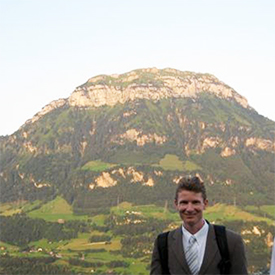
What to Pack for Switzerland – 29 Essentials
1. packing cubes.
Packing cubes are an absolute game-changer! They will make your life as a traveler so much easier. Use them to stay organized, move cubes back and forth to backpacks and hotel drawers, and avoid a suitcase explosion across the room. This set will prevent overpacking and compress your items a bit. It also comes in a variety of fun colors so everyone can have a different shade, plus two bonus laundry bags for clean and dirty items. Boom!
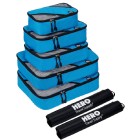
View on Amazon.com ➜
2. Lipstick-Sized Portable Charger
A lipstick-size portable charger will be a lifesaver for your trip. Use it as an extra battery and power bank to charge up your phone or camera while you’re on the go so you don’t have to stop your day and wait to charge your devices. Simply toss it into your purse or daypack and you’re GTG!

3. Virtual Private Network (VPN)
A VPN is useful for so many reasons, and you’ll definitely need one for your trip to Switzerland. Use it to protect your private information, like credit card numbers and passwords, from hackers when you connect to WiFi in public places like airports, cafes, coffee shops, and hotels. You can also use a VPN like NordVPN to get around paywalls on popular news sites and access information from your home country that may not be available abroad.

View NordVPN.com Options ➜
4. Windproof Travel Umbrella
Weather in Switzerland can be unpredictable, so you’ll want to be prepared in case of a downpour. Pack this lightweight windproof travel umbrella in your daypack to keep you and your belongings dry. It’s compact when closed but opens wide enough to cover two people.
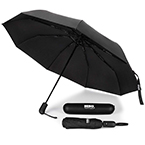
5. Jet Lag Relief
If Switzerland is far from home for you, Jet Lag Relief is definitely something you’ll want to make sure to pack. These homeopathic pills will both treat and prevent your jet lag in a safe and natural way, so you’ll be able to make the most of the first days of your trip. Way better than the brands that use caffeine and other stimulants, this brand uses chamomile and wildflowers to heal exhaustion!
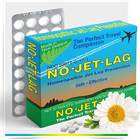
6. Travel Insurance for Switzerland
Travel insurance is a non-negotiable for going abroad. We use Faye Insurance because they make claims easy and convenient through their mobile app so you can get reimbursements fast! They are bringing insurance into the 21st century with unique plans for extreme sport, rental cars, Airbnb, and ‘cancel for any reason.’
There’s no comparison to the outdated providers that make you fill out heaps of paperwork and plead your case for what is owed to you. Faye paid us out the same day when we needed it most! They cover delays, cancelations, theft, baggage loss, and medical expenses. Keep in mind that hospitals are expensive in Europe and your at-home provider typically does not follow you overseas.

Get a quote in less than 60 seconds with Faye ➜
7. Neck Wallet
You’ll definitely want to pack a neck wallet for your trip to Switzerland. Use it to keep your most important valuables, like passports, credit cards, cash, and phones safely tucked away beneath your clothes and out of sight from pickpockets. It will help keep you organized, too. I’ve been robbed in Europe, but having this hanging under your shirt will keep it completely out of sight so the thieves don’t even know it’s there!

8. Filtered Water Bottle
Though tap water in Switzerland is safe to drink, give yourself some peace of mind by bringing a reusable water bottle with a built-in filter like this one. Packing a reusable bottle will also help you protect the environment and save money on plastic bottled water!
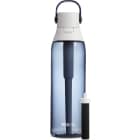
9. Quick-Dry Travel Towel
For all of the epic experiences Switzerland has to offer, a travel towel will certainly come in handy. Use it whenever you go hiking, biking, or swimming. It’s also great to sit on if you want to sit down for a break when outside or use it as a sweat rag. It’s odor resistant, and repels dirt, and sand so it easily comes clean after a quick shake.

10. Altitude Sickness Relief
Altitude sickness is a real possibility in Switzerland, and it’s wise to be prepared for the steep change in altitude and oxygen levels. The average elevation lies at 4K feet above sea level, and at its peak, the Swiss Alps reach a staggering 15K feet above sea level! These supplements will help oxygenate your body and I’ve also read Chlorophyll is a great support for reducing altitude sickness. Note that the best way to remedy altitude illness is to descend to a lower elevation.

11. Universal Travel Adapter
Switzerland has two kinds of electrical sockets that aren’t found in most other countries, so it’s essential to bring an adapter. Most travel adapters fit Switzerland’s two-pronged socket. I always recommend travelers buy a universal travel adapter like this one from the get-go so that they will have one adapter that works in most countries instead of having to buy a new one for each country they visit. This one comes with a lifetime replacement guarantee so it’s the last one you’ll ever need to buy!
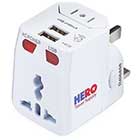
12. Stylish Backpack
The locals in Switzerland are notoriously trendy, so be sure to bring a stylish backpack so you’ll fit in and won’t draw attention to yourself as a tourist. This one is cute, spacious, and will work perfectly as a daypack for all your hiking adventures and excursions to carry all of your essentials.

13. Luggage Locks
After having items stolen out of our checked luggage, we always travel with locks. There are many times your items are out of sight like when you carry a backpack through a crowded area or if you hand your bags over on a North European cruise. These will secure your belongings and they’re TSA-approved so they won’t slow you down at any security checks.
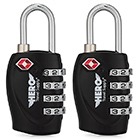
14. Discounted Tickets on Swiss Tours
Your trip is the sum of your experiences. Book the best tours with Get Your Guide, a booking service that works with local tourism companies to offer the most authentic excursions with flexible cancellation.
Indulge in the chocolates of Geneva , cruise through the falls of Neuhausen , and climb the Matterhorn of Zermatt . My favorite cities are Chamonix and Grindelwald is sheer magic, but you can find the best tours for your group!
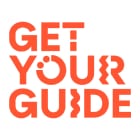
See all Switzerland attractions at GetYourGuide.com ➜
15. Cooling Towel
Switzerland has some of the most incredible nature and outdoor experiences. Stay comfortable even when you’re working up a sweat with a cooling towel. These compact towels get 20-30 degrees colder than the outside temperature as soon as you wet them, making for a super easy way to stay fresh and cool on hot days. They stay chilly for up to an hour and you can just add more water for continued frosty relief!
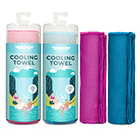
16. Snow Pants
If you plan to frolic in the Swiss Alps, ski, snowboard, or enjoy the outdoors – this pair of insulated pants will make your days much more comfortable. Winters in Switzerland reach a brisk -10°C (13°F), so you’ll want to come prepared with the right attire. Keep in mind that even the autumn and early spring months can be brisk!

17. Activated Charcoal
In the event that you accidentally eat or drink something that doesn’t sit well with you, be sure to take these activated charcoal tablets right away. They will quickly absorb and expel any toxins in your system to help you avoid food poisoning and keep you on your feet.
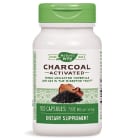
18. Pashmina Shawl
A pashmina shawl or scarf is a hugely valuable item to bring with you on a trip to Switzerland. It’s incredibly versatile and can be used as a shawl on a chilly evening, to spice up an outfit, as a blanket on a plane or train, as a beach blanket, swimsuit cover-up, curtain in your shared accommodation, and so much more. I never travel without one!

19. Sunscreen
Since the altitude is higher, the sun is closer which means the sun rays are more powerful. Be sure to pack non-toxic sunscreen like this brand with vitamin E and SPF 50. This will help you prevent dehydration and a nasty sunburn, it will be especially necessary for hiking and long days spent outdoors.

20. Waterproof Pocket Blanket
One of the best things to do in the Land of Milk and Honey is enjoy the breathtaking landscapes. Bring a small travel blanket for picnics, festivals, concerts, lounging outside, and people-watching. This one is made of a waterproof material so your clothes won’t get damp, but you can sprawl out when you find the perfect hillside or valley.

21. Trendy, Comfortable Flats
You’re sure to do a lot of walking during your trip to Switzerland, and when you’re exploring Zurich and Geneva, you’ll want to fit in by looking trendy. These cute and comfortable flats are just what you’ll need! They come in several different colors, too.

22. Raincoat
Just as an umbrella is smart to pack, a rain jacket will probably serve you at some point on your trip. Check the forecast to anticipate any rain, but it can rain about 150 days per year here. The locals also dress quite stylishly and classically, so this design will help you blend in.

23. Deodorant Wipes
Deodorant wipes are a must-have for your Swiss adventure. You’ll be spending long days exploring the cities and landscapes of Switzerland and these wipes will be perfect for a quick freshen up while you’re out and about.

24. Hanging Toiletry Bag
We absolutely love this hanging toiletry bag and we never travel without it! It’s perfect for carrying all your essentials and keeping your travel-size toiletries organized, plus it’s easy to transport around from place to place. We haven’t had a luggage spill since consolidating our liquids too.
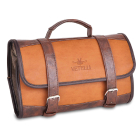
25. Hiking Poles
Zermatt is famously the best hiking and skiing in the country, and places like Lauterbrunnen and Mürren in the Swiss Alps are just as epic. If you plan to savor the sights or do a lot of walking, these trekking poles will help you with stability and endurance. They fold up and are collapsible for compact packing. But they can make all the difference for unstable terrain, and even have attachments for gravel, dirt, ice, and snow.

26. Universal Waterproof Phone Case
You’re bound to be using your phone for everything under the sun during your trip, so it’s important to keep it safe and protected from the elements. This handy waterproof phone case can be used in the water and will keep your device working perfectly! It even allows you to record videos with sound.
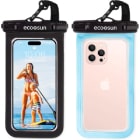
27. Gorgeous Outfit
You’re definitely going to want to pack at least one gorgeous outfit to wear for nights out on the town and nice dinners in the larger cities. This jumpsuit is a showstopper because it’s affordable, stylish, and looks good on a wide variety of body types. My wife has it in multiple colors!

28. Compression Flight Socks
Any flights over 4 hours increase your likelihood of a blood clot. While it’s unlikely, there is a reason that flight attendants swear stockings and tight compression socks. These compression socks will decrease the likelihood of health trouble or swollen feet, which can be a miserable feeling after getting off a long flight. Between the pressurized cabin and lack of movement, these socks will feel like sweet relief on long journeys.

29. Packable “Just in Case” Bag
Do yourself a favor and bring an extra bag along. You know there’s always a tiny bit less space in your suitcase when you’re leaving than when you arrived. And this duffle bag is perfect for carrying local goods and gifts like Swiss chocolate, cheese, watches, wine, clothes, leather goods, and more. It fits under your plane seat and counts as your personal item so you can skip the carry-on fees, eureka!

Other Switzerland Packing List Items
- Luggage Lock
- First-Aid Kit
- Mosquito-Repelling Wristbands
- Makeup Remover Wipes
- Travel Neck Pillow
- Steripod Toothbrush Cover
- Protein Bars
- Contact Solution
- Noise Cancelling Headphonesk
- Travel Sheet
- Electrolytes
- Motion Sickness Relief
- Swimsuit Cover Up
- Fleece Jacket
- Hand & Foot Warmers
- Hiking Shoes
- Grayl Water Bottle
- Switzerland power adapter
- Over the Counter Medications
- Hard Copies of Vital Documents
- ATM or Credit Cards with No International Fees
What to Wear in Switzerland
No matter where or in what season you decide to visit Switzerland, one thing is for sure: you’ll need to pack layers! If you’re headed up into the mountains regardless of the season, it can be quite cold – well below freezing.
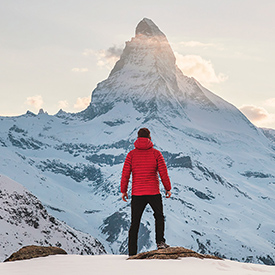
Women visiting Switzerland should look put together and dress for ever-changing weather. Bring lots of layers to adapt to different temperatures and be sure to pack plenty of neutral colored clothing that’s versatile and can be worn more than once. You’ll also want some trendy evening wear for nice dinners and nights out. What Should MEN Wear to Switzerland? – (Click to expand) Below is a sample men’s clothing list. (All items link to Amazon.com for your convenience).

Men traveling to Switzerland should be prepared with plenty of layers to help them easily adapt to rapidly changing weather. Be sure to pack at least one or two nicer outfits for nights out on the town and nice dinners, too. Men should look put together when exploring Swiss cities, so don’t forget a clean shirt and long pants!
Packing for the Seasons in Switzerland
Some regions of Switzerland remain chilly year round, particularly up in the mountains at high altitudes. The rest of the country, however, changes with the seasons, so you’ll want to dress for the weather! Be prepared with plenty of layers and always opt for trendy, dark or neutral colored clothing when visiting the big cities.
WINTER – December, January, February
Winter in Switzerland is cold, regardless of where you are in the country. If you’re planning on skiing or partaking in winter sports, it’s imperative that you dress warmly with things like snow pants, snow gear, and a warm winter jacket. Layers are key!
SPRING – March, April, May
The weather will start to heat up in Switzerland during the spring, though mornings and evenings will still be a bit chilly. Pack a lot of layers so you can adapt to changing weather throughout the day and night during this time.
SUMMER – June, July, August
Summer is the warmest time in Switzerland, and it can get pretty hot during the daytime, so prepare with lightweight clothing that can withstand the heat. You’re likely to experience a bit of rain during the summer, so don’t forget a rain jacket and a good umbrella!
FALL – September, October, November
Fall weather starts getting cooler, and you’ll likely experience a mix of warm and cool days. Be prepared with layers so you can adjust accordingly to the temperatures during this season. Fall is a shoulder season in Switzerland so it’s a good time to beat the crowds of tourists and prices may even be a bit cheaper, too!
Skiing – Be sure to bundle up if you’re planning to go skiing in Switzerland! You’ll want to wear a winter coat, warm boots, wool socks, a winter hat, gloves, ski goggles, and long underwear. The more layers, the better!
Exploring the Cities – Europeans in general tend to look put together and dress in neutral or dark colors when out and about in the cities. Do your best to follow suit and you’ll fit right in!
Adventure Activities and Hiking – For all your hiking and adventure activities, be prepared with hiking boots, wool socks, long pants, and sweat wicking or quick dry clothing. Bring plenty of layers to easily adapt to changing weather.
What NOT to Bring to Switzerland
1. don’t pack too much stuff.
The last thing you want to worry about during your trip is having to lug around a heavy suitcase with you everywhere you go. Instead, pack light and bring only what you need!
2. DON’T BRING valuable electronics
Don’t risk your valuable electronics getting lost, stolen, or broken during your vacation and ruining your adventure! Bring as few electronics as possible and enjoy the opportunity to unplug.
3. DON’T TAKE heavy books
If you plan to do some reading during your downtime in Switzerland, you’re better off packing a Kindle than wasting space in your suitcase with heavy, bulky books.
4. DON’T PACK a regular towel
You won’t want to pack a heavy, bulky bath towel in your suitcase which takes up space and takes forever to dry. Bring a quick dry towel instead which is lightweight and dries super fast.
5. DON’T BRING full-size toiletries
Chances are, you’re not traveling for more than a few days or weeks, so you won’t need full-size toiletries. Instead, bring travel-size toiletries which are easier to manage and cheap to replace.
6. DON’T TAKE overly casual clothes
Europeans tend to look put together in public, and the Swiss are no exception! Try to blend in with the locals by avoiding wearing overly casual clothes when you’re out and about.
FAQs for Going to Switzerland
1. where should i go in switzerland.
There are tons of amazing things to do and explore in Switzerland, so where you go will depend on your interests and what you want to do during your vacation. Head to the big cities like Zurich and Geneva for a metropolitan vibe with good shopping, restaurants, and typical big-city things. Smaller towns and villages, like Lauterbrunnen, for example, will bring you closer to the country’s magnificent nature.
2. What’s the best way to get around in Switzerland?
Trains are the preferred method of transport for locals throughout the country. Public transportation is widely available within the country’s big cities. There are also some busses with routes throughout Switzerland.
3. How can I save money during my trip to Switzerland?
Cooking instead of eating out, opting for public transportation instead of taxis, and staying in hostels or shared accommodations are all great ways to save a bit of money during your trip to Switzerland.
4. What is Switzerland known for?
Switzerland is famous for its magnificent landscapes characterized by the Swiss Alps, Swiss chocolate, fondue, and several inventions, which include the Swiss Army Knife, absinthe, muesli, the potato peeler, and more.

Asher Fergusson

What to Pack for Switzerland: Packing List for Year Round Travels
Europe Packing List , Packing Lists , Travel Packing Lists
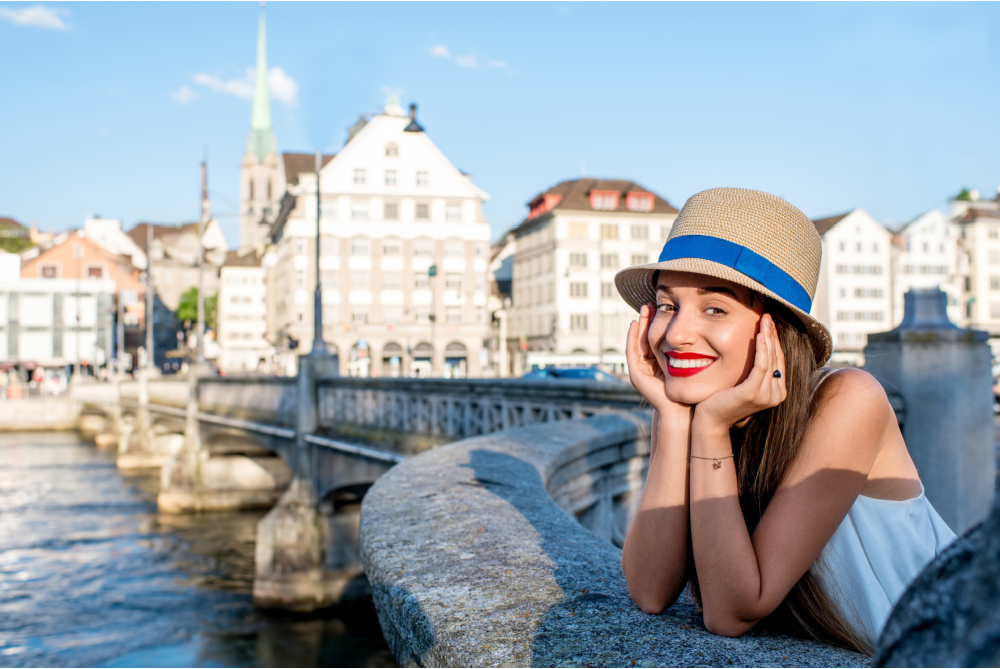
Support TFG by using the links in our articles to shop. We receive a small commission (at no extra cost to you) so we can continue to create helpful free content. We earn from qualifying purchases made to the featured retailers. Thank you, we appreciate your support!
Switzerland is known for its beautiful landscapes, chic cities, and classic style. Add these things to your Switzerland packing list!
What to Wear in Switzerland
Table of contents.
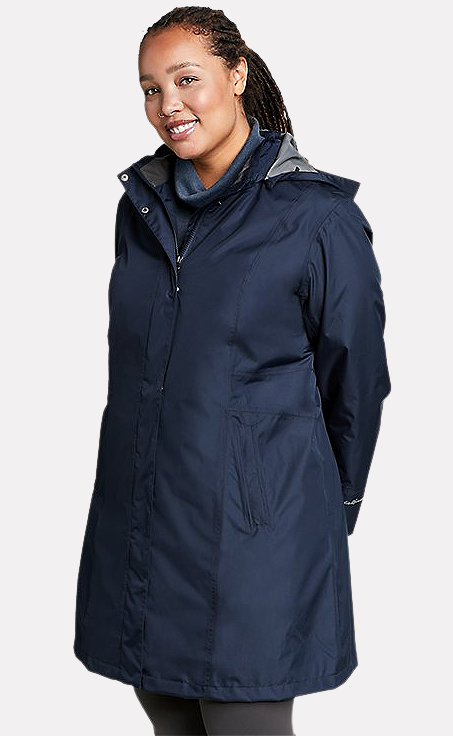
Shop Eddie Bauer Trench: Amazon | Eddie Bauer Sizes: Regular XS-XXL | Petite XS-XL | Tall S-XXL | Plus 1X-3X
Switzerland Clothing Style
Zurich is known as a place that is both conservative and casual, which means that it is acceptable to wear jeans and even sneakers for almost any occasion.
There are incredibly beautiful places to visit in Switzerland . The summer months see the city come alive to enjoy the glorious sunshine, celebrated with bright block colors and striking summery floral print dresses. Whilst it is a city with fashion freedom, it is still important to remain neat and presentable, so keep this in mind when choosing what to wear in Switzerland.
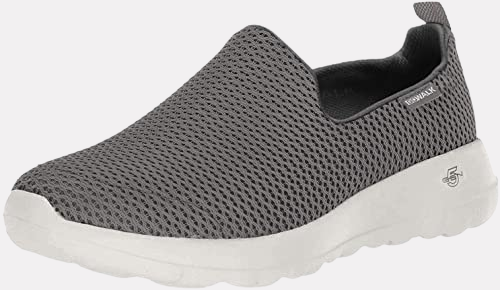
Skechers Go Walk Joy Sneakers
Zurich Travel Essentials
For Zurich weather, you won’t find the need for an umbrella on your Switzerland packing list. It’s not that it doesn’t rain, but rather due to the fact that the wind is too strong and it would be impractical for an umbrella.
Alternatively, a warm waterproof jacket will fill the role of the umbrella. There are outstanding hiking trails in the Swiss countryside, so if you’re interested in hiking then bring your hiking shoes or trainers.
Always, always, always check the weather forecast before your trip. Once you’ve researched the weather, you can focus on creating a capsule travel wardrobe , which should easily fit into a carry on suitcase with the help of packing cubes to compress your clothing.
These are our tried and tested reader recommendations for the world’s best travel shoes !
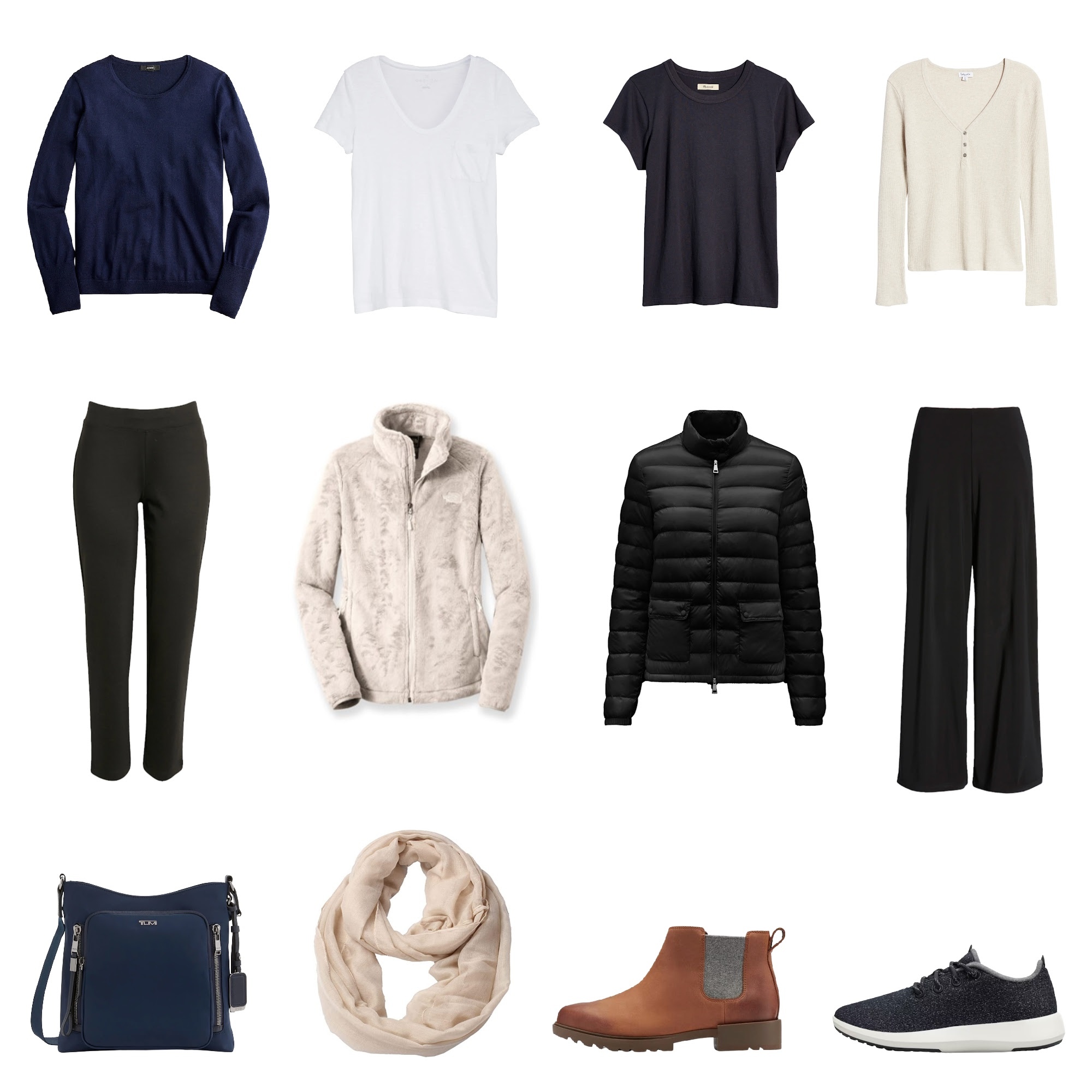
Sweater 1 | Tee 1 | Tee 2 | Sweater 2 | Pants 1 | Jacket 1 | Jacket 2 | Pants 2 | Crossbody | Scarf | Boots | Sneakers
What to Wear in Switzerland: Zurich in Spring
Liz says: Spring weather can be unpredictable and so it is important to remember to layer. You can wake up in the mornings to 4 C / 39 F degree weather, which can warm up to around 25 C / 77 F degrees over lunch time and will cool down again in the early evenings to around 12 – 15 C / 53-59 F degrees.
The best thing to keep in mind as you plan what to wear in Switzerland is that it’s important to be prepared for anything. Your daily outfit for spring would be a light top teamed with a pair of jeans and a warm jacket.
Start by reading these general tips on packing for spring travel:
- How to Pack for Trips with Mixed Weather
- How to Layer a Summer Dress for Spring
- How to Pack for Europe in Spring
- Best Shoes for Traveling in Spring and Fall
Switzerland Packing List for Spring
As mentioned, Zurich weather can be unpredictable, and layering is important to ensure you are comfortable, so keep this in mind when deciding what to wear in Switzerland.
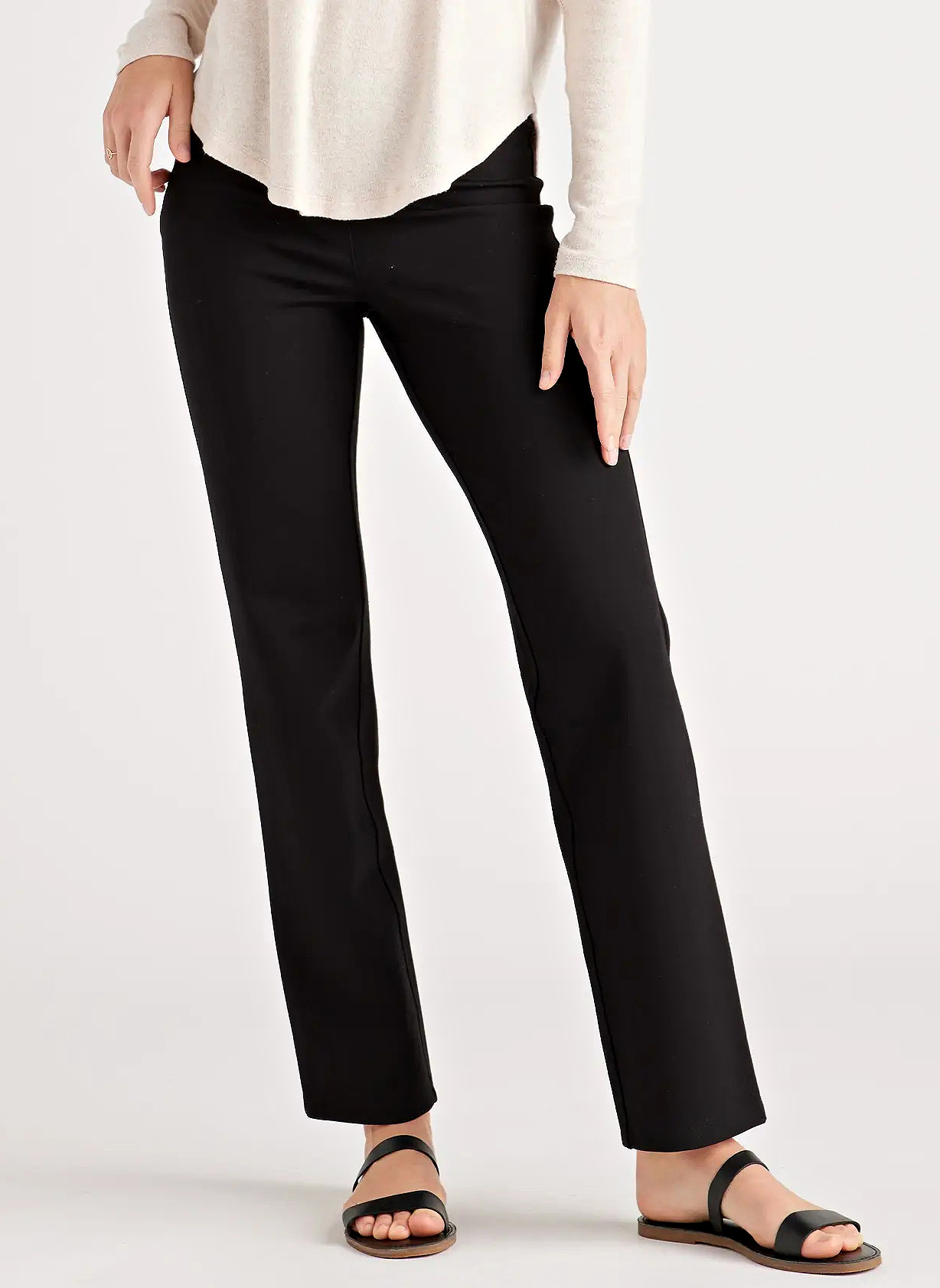
Quince Ultra-Stretch Ponte | Sizes XS-XL
Bottoms for Spring
Start with your base of a few pairs of pants that strike a balance between elegance and comfort. Well-fitting pants in a darker shade are always considered timeless pieces of European fashion , plus they’ll be endlessly versatile in terms of styling.
Ponte pants are a chic and functional pick. Readers adore Quince’s ponte pants for travel, as they’re stretchy, breathable, and amazingly comfortable all around, with a polished look that can be dressed up for nicer occasions or worn casually for sightseeing. They’re wrinkle-resistant, too!
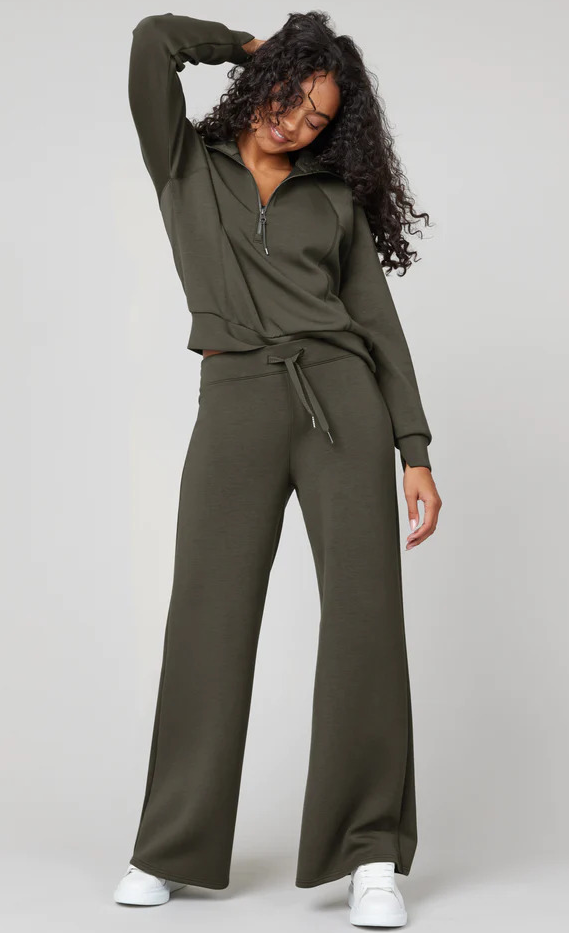
Shop Spanx AirEssentials Pants: Amazon | Spanx Sizes: XS-3X (Regular, Petite, and Tall)
For days where you’ll be doing lots of walking, keep cozy in these Spanx AirEssentials pants . They’re made of lightweight, breathable, and amazingly soft fabric that’ll help you transition from warm afternoons to chilly nights. Despite feeling like sweatpants, the wide-leg silhouette, ultra-flattering fit, and luxurious fabric keep them elevated.
Jeans are another great option for Zurich. You’ll see plenty of locals wearing them. While jeans typically aren’t the most highly recommended pants for travel, especially on a trip where tons of walking is involved, there are definitely pairs that can work for travel!
Readers love packing these Madewell jeans , which are lightweight and comfy, with a slouchy yet flattering fit.

Unbound Merino Women’s Long Sleeve Merino Crew | Sizes XS-XL
Tops for Spring
The local aesthetic leans toward neutral, earthy colors, and clean, simple designs. Basic tees are a must-pack for your sightseeing days!
This long sleeve from Unbound Merino is a perfect springtime top, as it’s made from merino wool, this ensures that you’re always comfy despite the weather, as it’s naturally thermoregulating and breathable. Readers love that the fabric is soft and lightweight.

J.Crew Slim Perfect-Fit T-shirt | Sizes XXS-3X
You can never go wrong with a polished white t-shirt . This shirt from J. Crew has slightly longer sleeves, and the cotton fabric is a bit more robust than your typical tee, so it’s great for transitional weather. A classic t-shirt is an indispensable piece that you’ll be able to style up in endless ways!
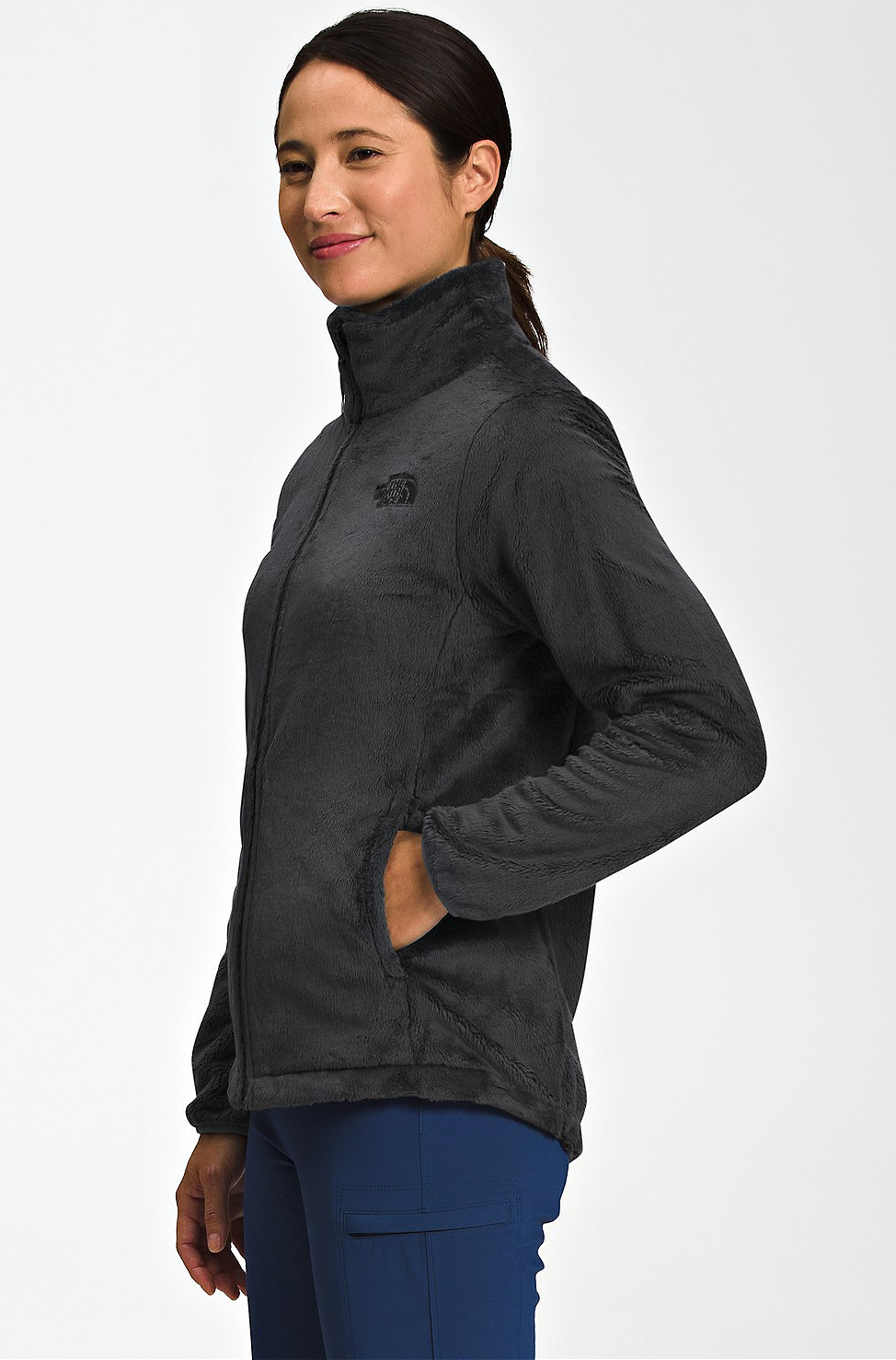
Shop The North Face Osito: Amazon | The North Face (Sizes XS-XXL)
Jackets for Spring
While spring in Switzerland is absolutely stunning, you’ll definitely be hit with some colder temperatures and perhaps a rain shower here and there. Be sure to have a lightweight, packable jacket on hand!
Spring isn’t actually the rainy season in Switzerland, so if the weather forecast agrees, then a cozy piece, like Northface’s Osito fleece , is a perfect option. It’s light yet warm and has a cute, neutral look that’ll pair well with any outfit.

Quince Lightweight Down Puffer Jacket | Sizes XS-XL
Readers agree that spring nights get pretty chilly in Switzerland, so you’ll definitely need more than just a sweater . A packable puffer jacket like this one from Quince is a must-have for Switzerland in the spring to protect you from the chill of the mornings and evenings.
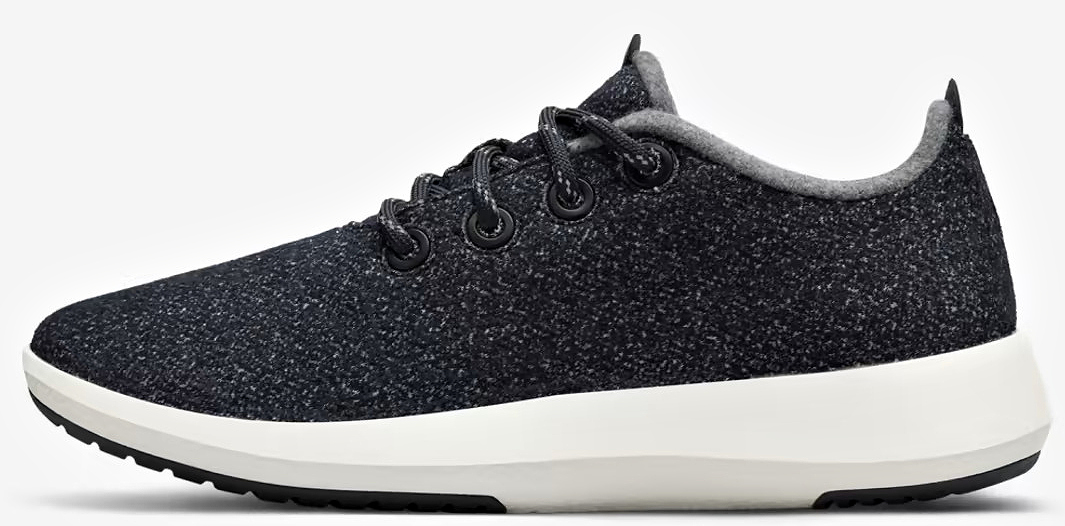
Shop Allbirds Runner Mizzles: Allbirds | REI | Nordstrom
Shoes for Spring
Sleek and classy yet cozy footwear is ideal for Switzerland travel. Sneakers are the top choice for exploring Zurich in the spring, especially on milder days. You’ll need something super sturdy and comfy for your long days of sightseeing and for tackling the cobblestone streets in Old Town!
The Allbirds Wool Runner Mizzles are made of a merino wool blend, so they’re warm and cozy as can be while still keeping things breathable, and super fresh with a moisture-wicking and odor-reducing insole. They’re cushioned well, grippy, and waterproof, too.
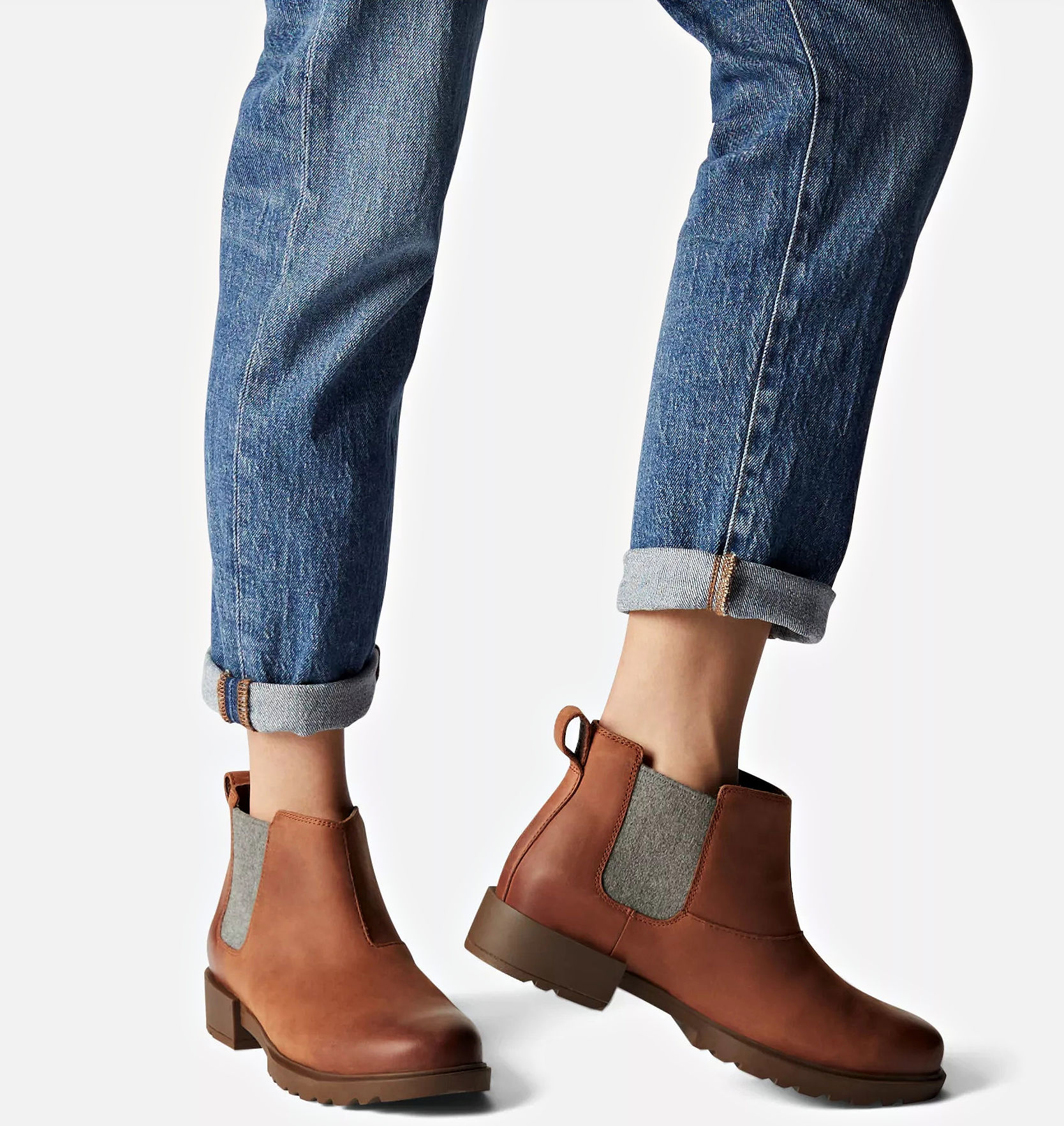
Shop Sorel Emelie II: Amazon | Sorel
For evenings, chillier days, and dressier occasions, a pair of leather ankle boots definitely deserves a spot on your packing list. Especially if they’re waterproof!
The Sorel Emelie waterproof Chelsea boots are beyond comfy for stomping around in during the day and are elevated enough to be dressed up by night. They’re durable and won’t slip, and will look great with everything from slacks to jeans to dresses .
While not recommended for all-day sightseeing, ballet flats are also a good option should you want a dressier pair of shoes on your trip for warmer days or evenings.
Take a look at the womens chelsea boots we’ve rated as #1 in style, comfort, AND function, too!
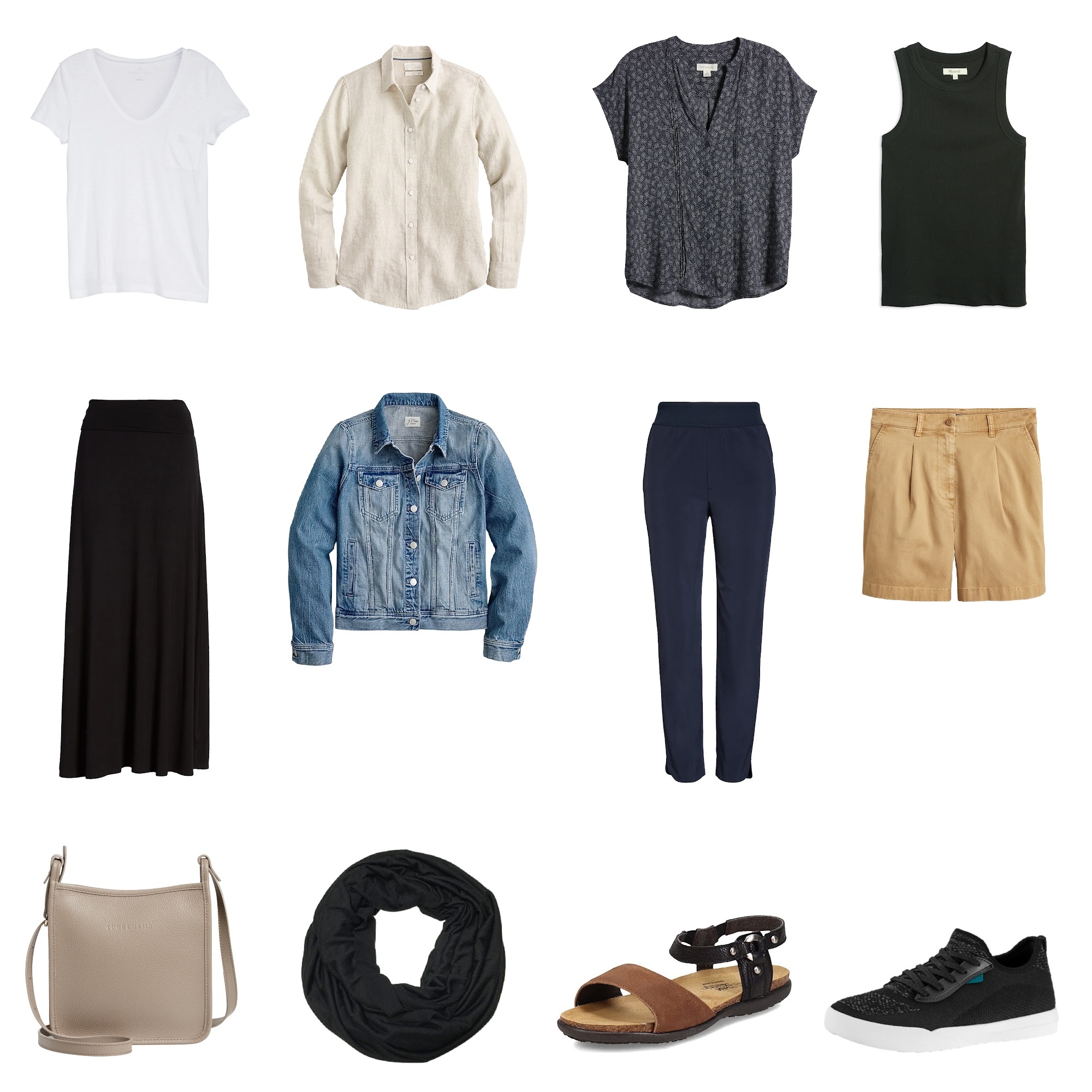
Tee | Longsleeve | Top 1 | Top 2 | Skirt | Jacket | Pants | Shorts | Crossbody | Scarf | Sandals | Sneakers
What to Wear in Switzerland: Zurich in Summer
Liz says: you can expect weather that can range from between 12-15 C / 54-59 F degrees up to a very warm 30 C / 86 F degrees. The warmer weather allows for greater fashion freedom with your wardrobe and your Switzerland packing list.
Start by reading these general tips on packing for summer travel:
- Capsule Wardrobe for Summer
- Top Summer Dresses Perfect for Europe
- Lightweight Jackets for Easy Layers
- Best Walking Shoes for Europe’s Cobblestone Streets
Switzerland Packing List in Summer
The evenings in summer can still get quite cool, so when deciding what to wear in Switzerland, be sure to include a lightweight jacket for cooler nights. An ideal summer outfit would be a simple t-shirt with a pair of lightweight pants or shorts and comfy shoes .
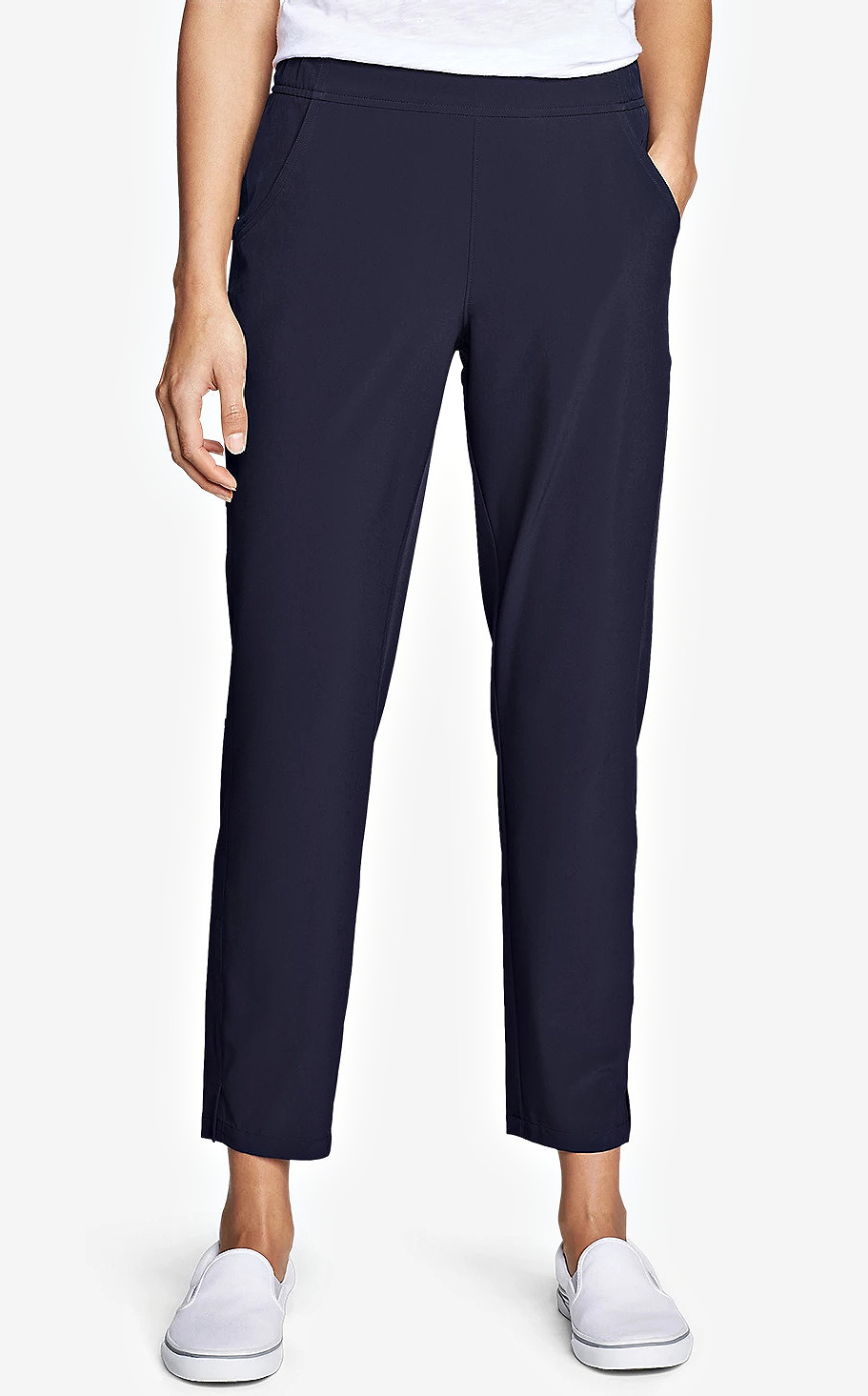
Bottoms for Summer
A pair of light and airy trousers are perfect for the sophisticated city of Zurich, but definitely make sure they have travel-friendly features and a cooling feel. This is where the Eddie Bauer Departure pants come in!
These reader-favorites are supremely comfy, moisture-wicking, and hold their shape well, plus they have UPF 50+ sun protection, while keeping a polished look!
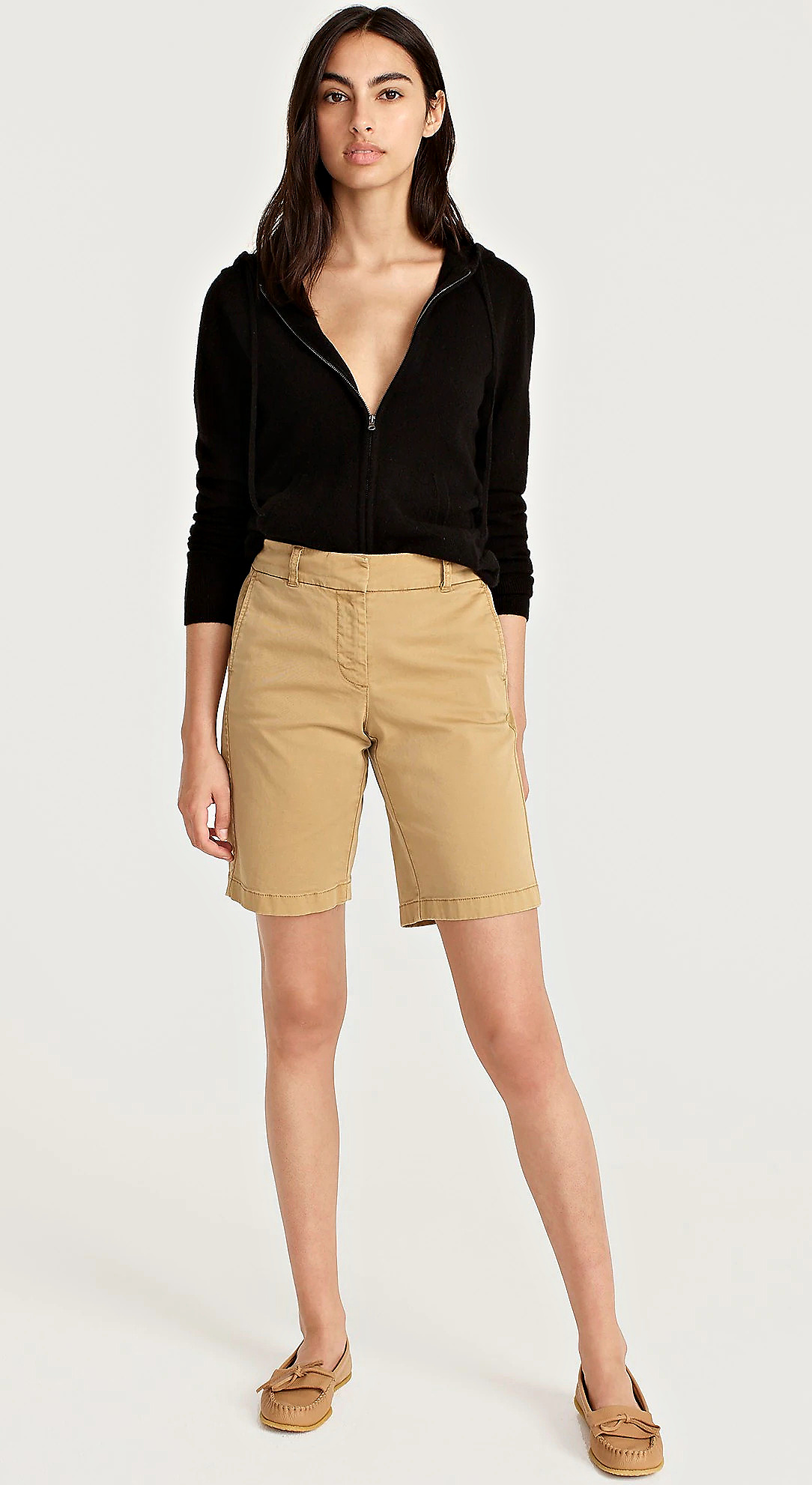
J.Crew Bermuda Stretch Chino Short | Sizes 00-24
A hot and sunny day in Switzerland is the perfect time to whip out a classy pair of long shorts.
The chic look and comfy fit of these J. Crew chino shorts will keep you cool and let your legs breathe while being modest when touring museums, churches, and historical sights. They have a tailored fit with a hint of stretch for comfort and mobility and will look just as wonderful with a white button-down as with a simple tank.

Shop Madewell Tank Top: Nordstrom | Madewell Sizes: Regular XXS-XXL | Plus 1X-4X
Tops for Summer
A polished tank top is another staple for the hotter days in Switzerland that you can mix and match with any pant option and easily layer under warmer tops when the temps dip at night.
Streamlined and flattering yet not too revealing, the Madewell Brightside tank top is a fantastic pick. It’s made of cozy cotton, is light and breathable, and it has a hint of stretch for added comfort.
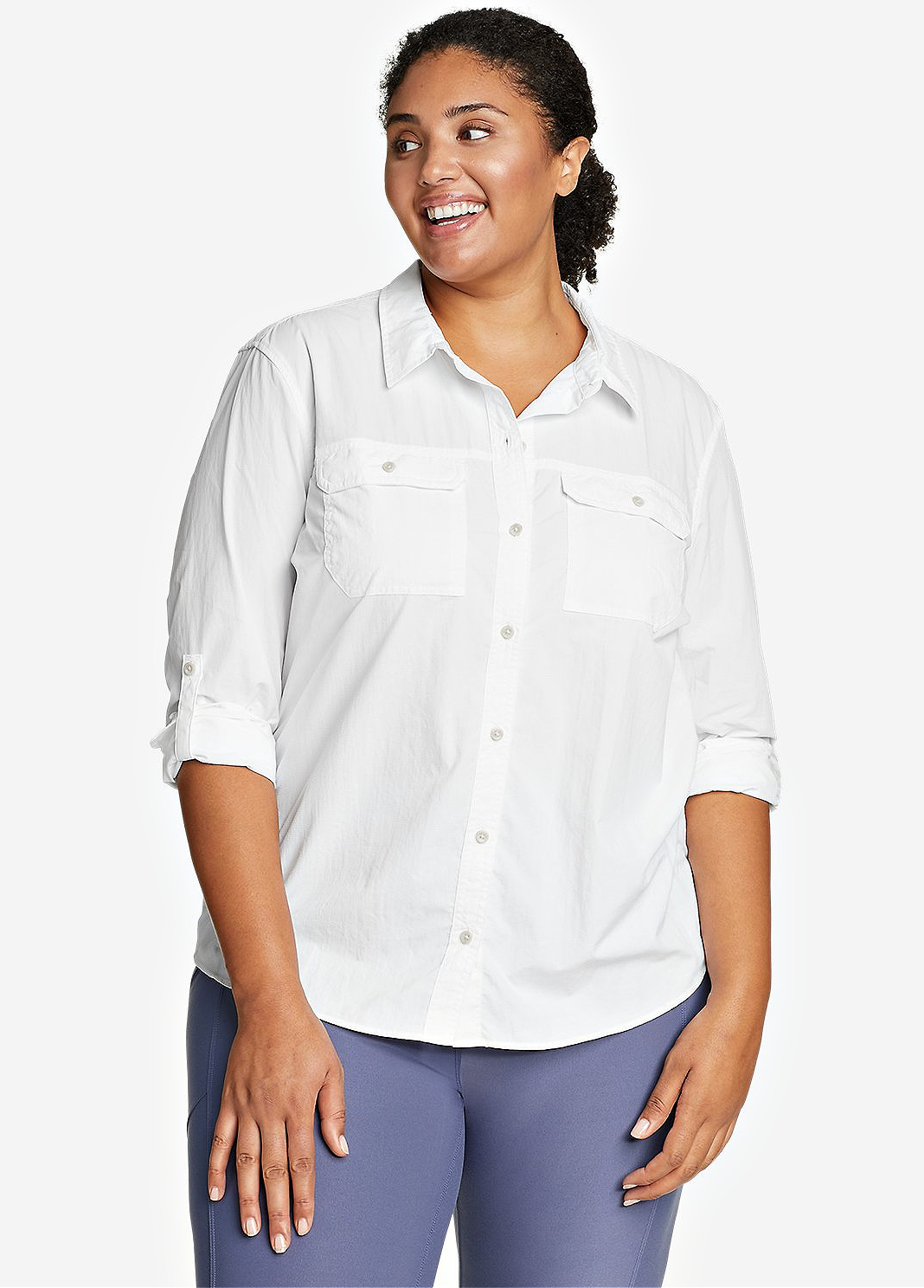
Shop Eddie Bauer Longsleeve: Amazon | Eddie Bauer Sizes: Regular XS-XXL | Tall M-XXL | Plus 2X-3X
A versatile top like the Eddie Bauer Ripstop shirt can go both sporty and polished, which is why it’s a must-pack for so many TFG readers! You can wear it on a day trip to go hiking with hiking boots , dress it up with slacks for a nice dinner, or use it as a layering piece over a tee for a sightseeing day.
It has the look of a classic button-down but is full of practical features: it’s lightweight, moisture-wicking, and has UPF 50+ sun protection.
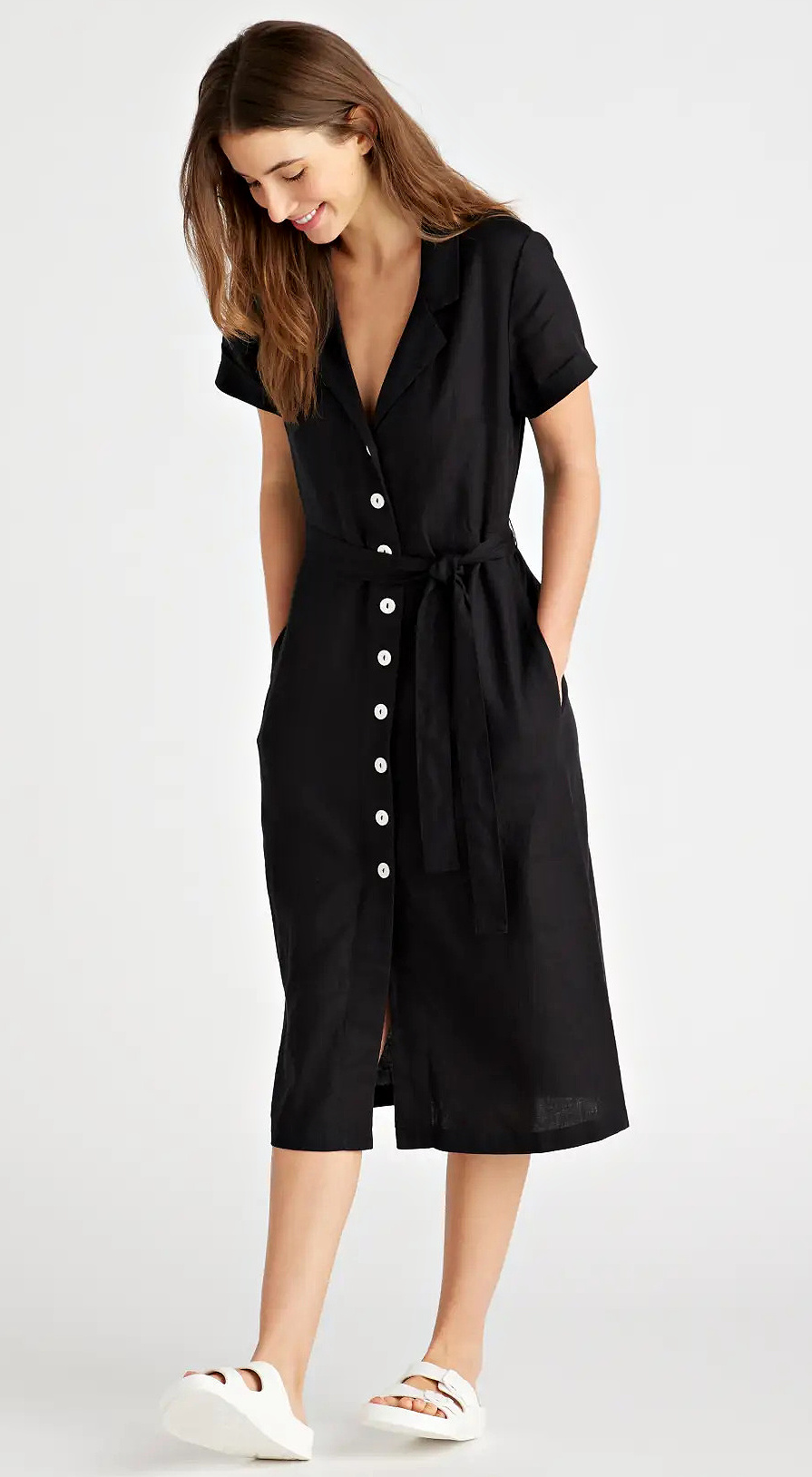
Quince Linen Button Front Dress | Sizes XS-XL
Dresses and Skirts for Summer
Readers say that light summer dresses and skirts in cotton and linen are a great choice for the summer season to allow for breathability and comfort despite the heat. Plus, they’ll add a chic and feminine element to your packing list!
For instant style and comfort, look to a chic midi dress like the Quince button up dress , which is made of 100% linen. Breathable and naturally heat-regulating, the linen fabric will keep you ultra-comfy, plus it looks classic and stylish. This flattering number also has a tie-waist for styling versatility and side pockets for storing convenience.
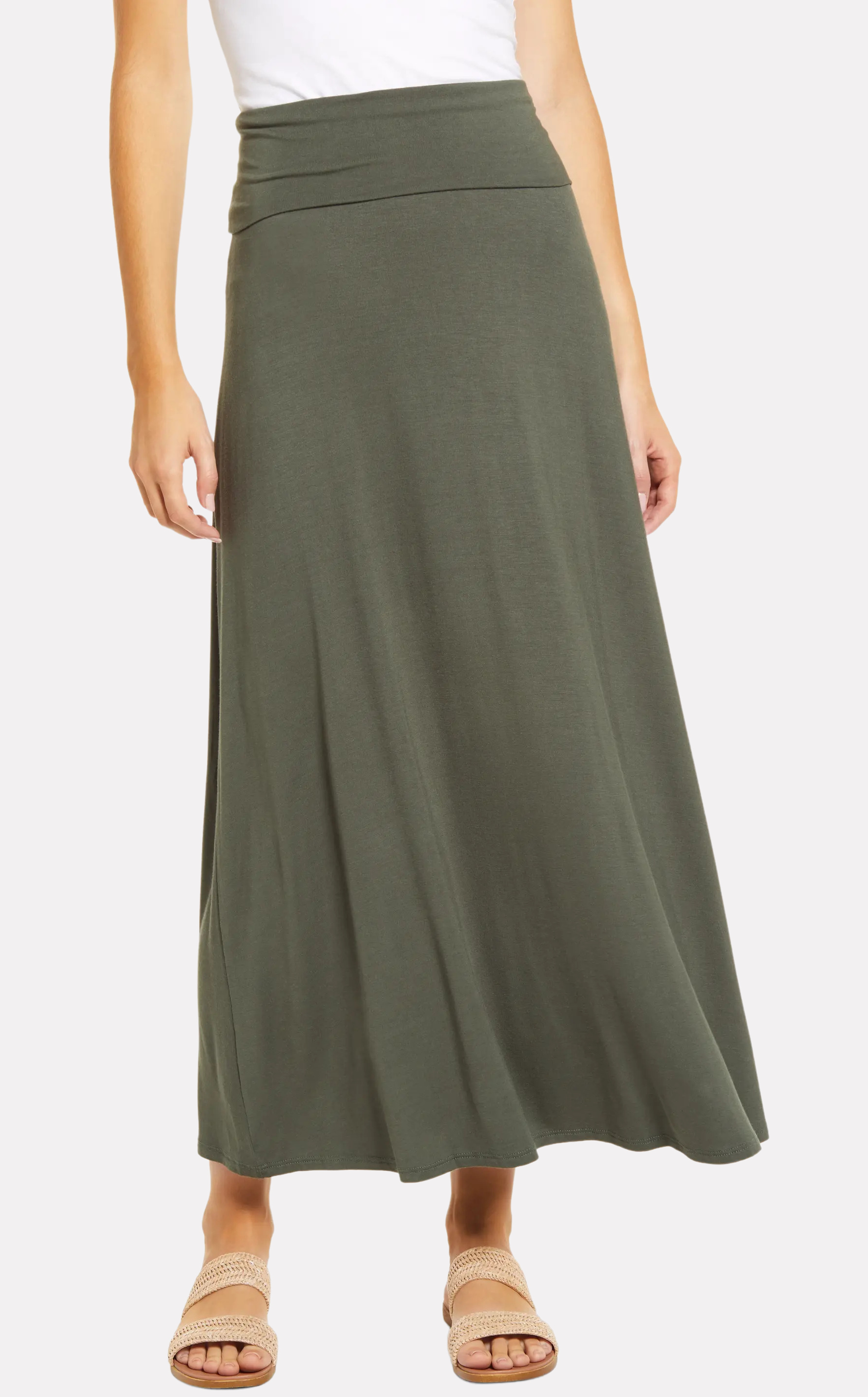
Loveappella Roll Top Maxi Skirt | Sizes XS-XL
Midi and maxi length dresses and skirts combine modesty (which are needed for visiting religious or cultural sights) with style! They’re super elegant, feminine, and flattering.
Plus, a flowy number like the Loveappella roll top maxi skirt will allow for plenty of airflow and give your legs total freedom of movement. This piece is made from a lightweight stretch-jersey that feels amazing, and the fit is incredibly flattering.
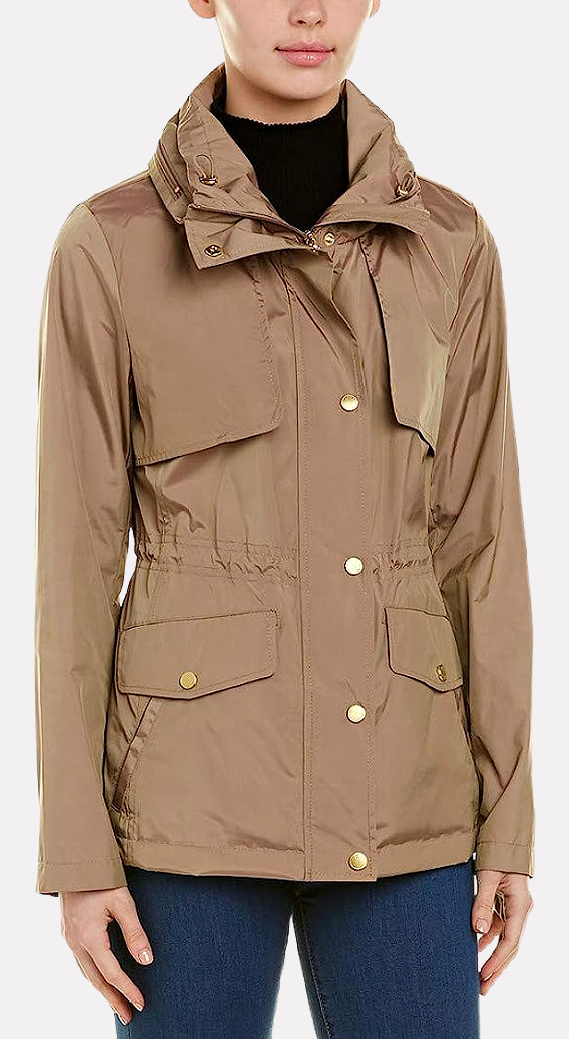
Shop Cole Haan Rain Jacket: Amazon | Nordstrom (Sizes XS-XL)
Jackets for Summer
Although it’s summer, the temps can still get quite cool in the evenings and early mornings, so a jacket that’s lightweight yet still offers a good amount of warmth is ideal. You can also expect to see some rain, so a waterproof jacket is a must.
And if you’ll be out and about the whole day, a packable option like the Cole Haan rain jacket will be convenient, as you’ll be able to easily stash it in your day bag when not in use.
This jacket is a low-maintenance and highly functional option with a super sleek and stylish look! It’s lightweight enough for summer but will add a perfect layer of warmth and block out any wind and summer rain you may encounter.

J.Crew Classic Denim Jacket | Sizes XXXS-3X
Once you have your light rain jacket sorted, you may want to bring another jacket option for days when it doesn’t rain, or when you want to change up your look.
A jean jacket is a quintessential summery jacket that’ll add a nice layer and tons of style to your ensemble. J.Crew’s Classic denim jacket is a fave with readers that looks great with absolutely everything and has a comfy fit!
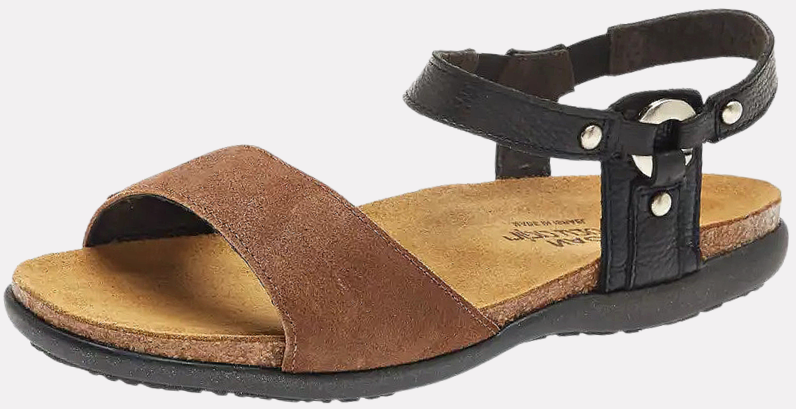
Shop Naot Sabrina: Amazon | Nordstrom | Zappos
Shoes for Summer
In the summer, readers say that sandals can be a cute and comfy option for sightseeing, as long as they’re sturdy and supportive!
If you’ll be logging lots of miles on your trip and want to keep it light and comfy with a pair of sandals, the Naot Sabrina sandals are the best option to go with! The straps will keep your feet securely held in, the padded, anatomic footbed has great foot support, and the outsole will handle those tough city streets.
Readers love stylish walking sandals that are also versatile as they take you from a casual sightseeing day to a dressier dinner, without having to pack an extra pair of shoes.
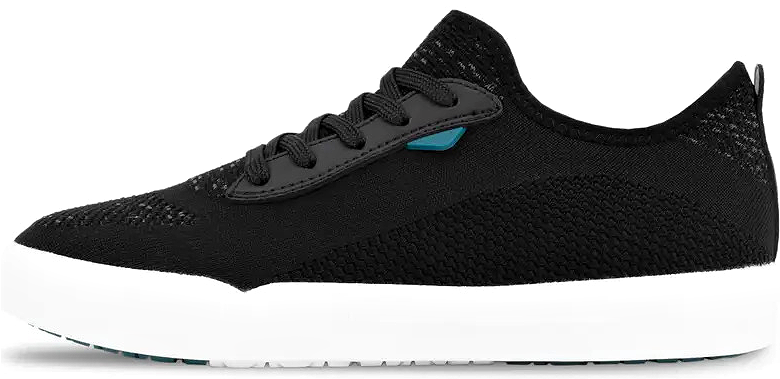
Vessi Weekend Sneakers
Comfy travel sneakers are a must for your summer trip to Zurich. They’ll keep your feet protected and energized as you traverse the gorgeous city, and are practical day to night, and throughout the changing temps.
And because you’re likely to encounter some rain, waterproof sneakers are most recommended. Readers have been loving the Vessi sneakers , as they’re amazingly comfortable, have a classic and stylish look, and will keep the rain out so you can enjoy your day without having damp feet!
Look at this list of the top wide width sneakers for women that are cute and functional for long walks!
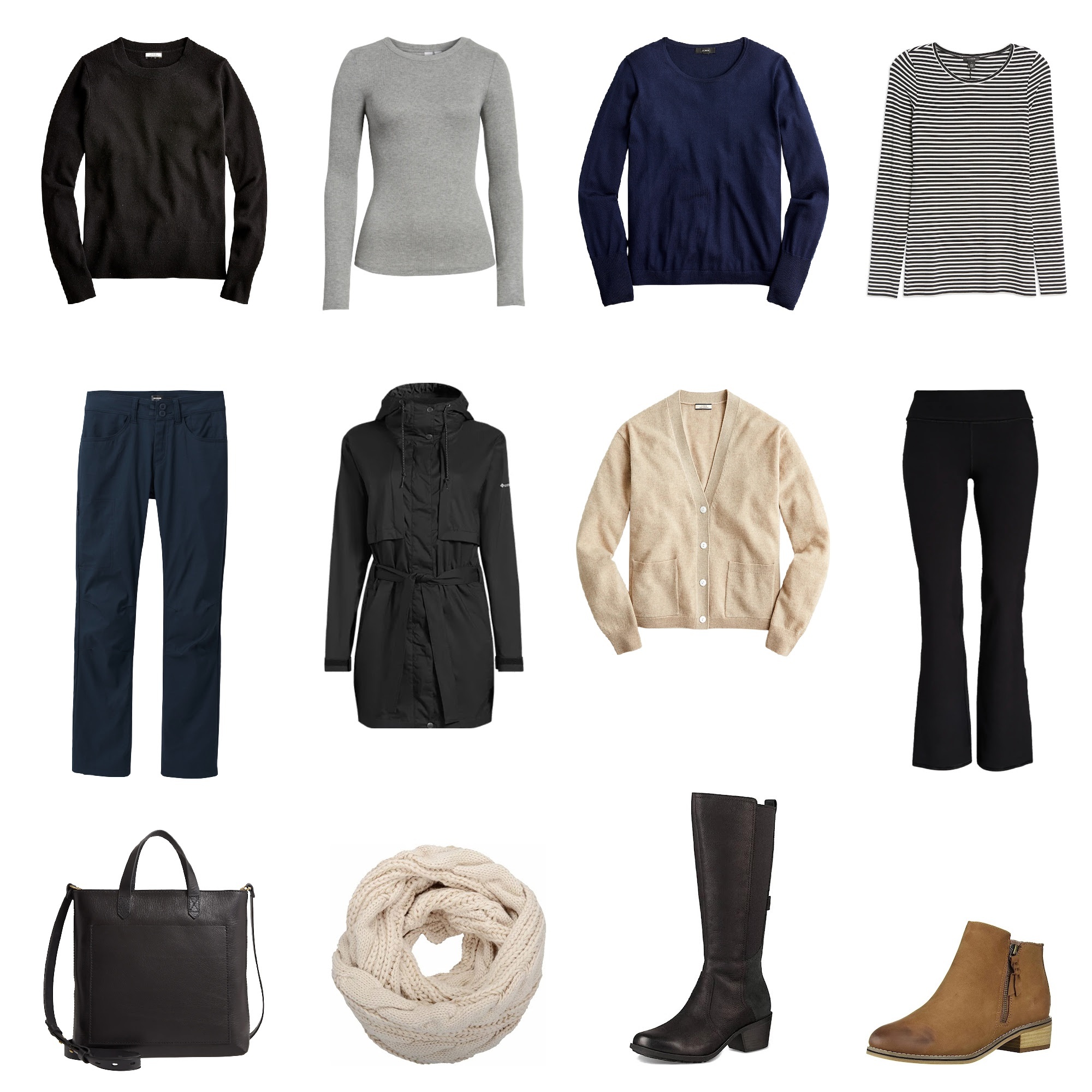
Longsleeve 1 | Longsleeve 2 | Sweater 1 | Sweater 2 | Pants 1 | Jacket | Cardigan | Pants 2 | Tote | Scarf | Boots 1 | Boots 2
What to Wear in Switzerland: Zurich in Fall
Autumn weather can be unpredictable; it can range from sunny days to rain and even snow. Autumn is a difficult season when deciding what to wear in Switzerland due to the fact that outdoors is cold, and inside the buildings and public transport the central heating leaves you hot.
The perfect idea for dressing in this weather is layering. The season contains short days and along with the disappearing light comes a noticeable drop in temperature. As you prepare what to wear in Switzerland, be ready for cooler weather.
Start by reading these general tips on packing for fall travel:
- How to Layer Clothes
- Use a Summer Dress to Pack Light in Fall
Switzerland Packing List for Fall
When deciding what to wear in Switzerland in the fall, reach for items in dark or rich, earthy colors, and think sophisticated-casual in terms of style.
Layering is essential, so include long sleeve tops to suit the weather, which you can pair with a sweater on warmer days or a jacket or warm coat on colder days.
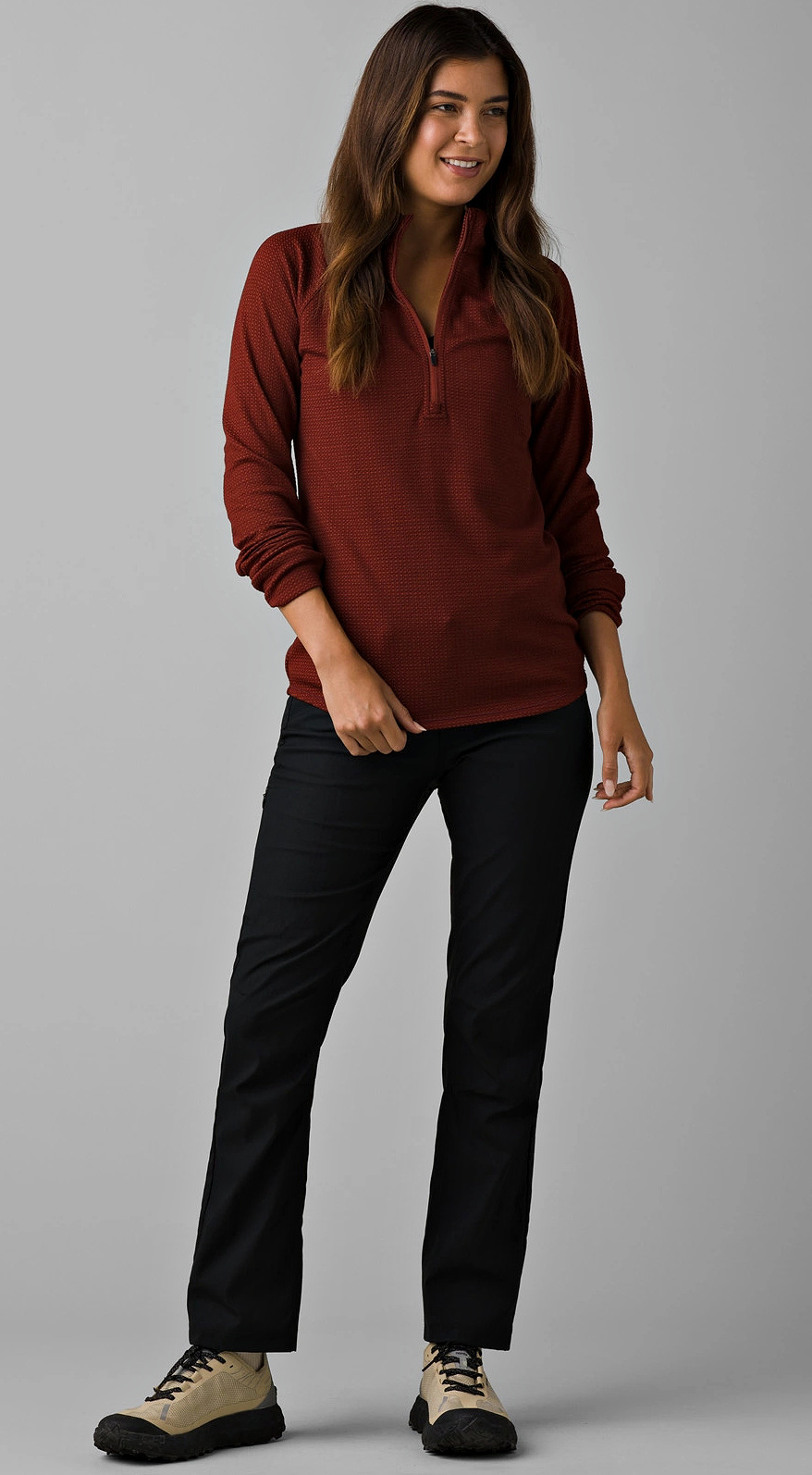
Halle Straight Pant II | Sizes Regular 0-16 & Plus 18-22W
Bottoms for Fall
For pants, choose warm yet breathable fabrics, classic cuts, and dark, neutral colors. Think tailored and smart rather than slouchy or distressed, but definitely don’t sacrifice comfort!
The prAna Halle pants are the perfect balance between chic and comfortable. Since they’re made for travel, these pants are full of function, and they’ll give you all the mobility you need for a long day of walking and sightseeing. They’re super flattering and versatile as well.
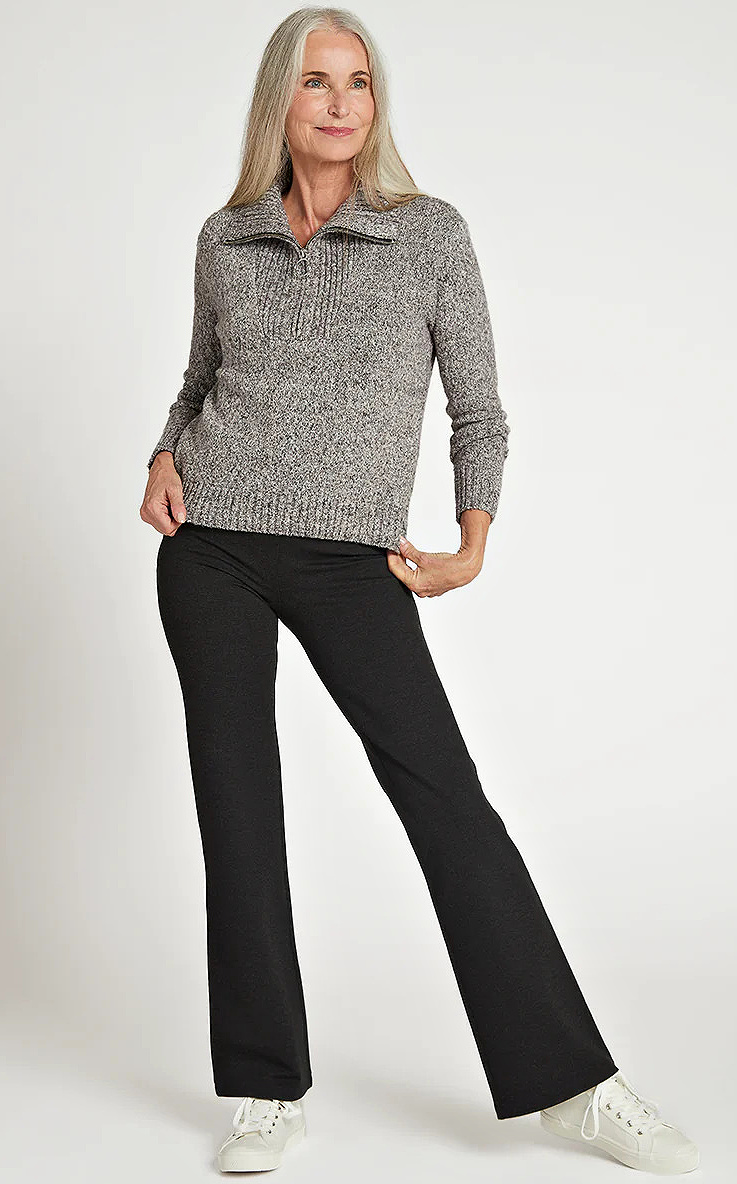
Betabrand Classic Yoga Pant Sizes: XS-3X (Regular | Petite | Short Petite | Long)
TFGers adore the Betabrand trousers as they have the cozy feel of yoga pants hidden in a dress pant! They’re perfectly warm for fall weather, have a great amount of stretch while being supportive and flattering, and are such an easy, low-maintenance option for travel. You’ll be looking elevated and polished while feeling comfy!
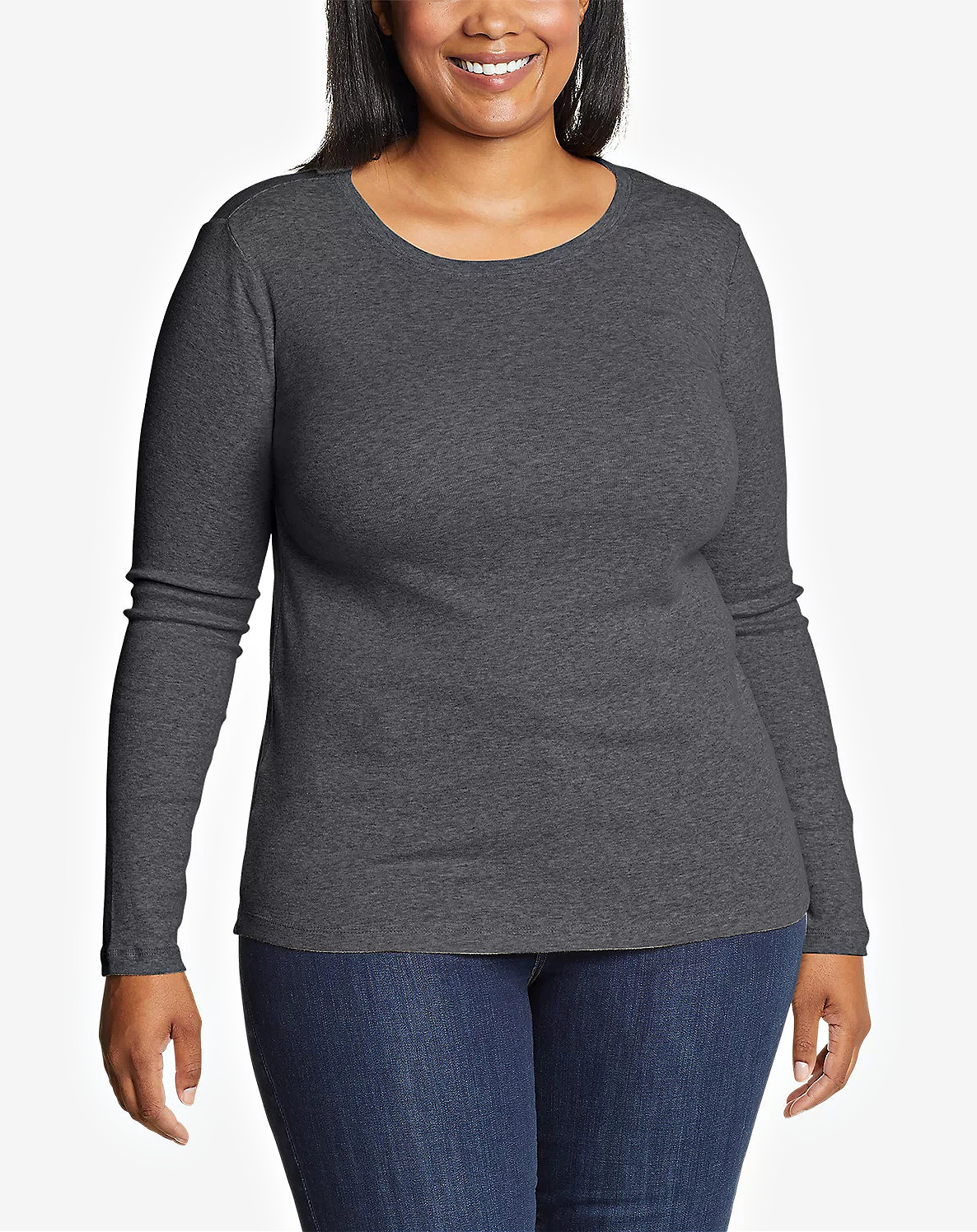
Shop Eddie Bauer Long Sleeve: Amazon | Eddie Bauer Sizes: Regular XS-XXL | Petite S-L | Tall M-XXL | Plus 2X-3X
Tops for Fall
In terms of tops, you’ll want to pack some cozy long sleeves . They’ll be super versatile for unpredictable fall weather, as you can wear them alone on a warmer day or layered under sweaters and jackets on cooler days.
The Eddie Bauer long sleeve crewneck shirt is soft and comfy, with a classic, slim fit that’ll always look nice and polished. It’s stretchy but holds its shape amazingly well.
Gray is super easy to coordinate with, but you could also go for colors like black, white, or navy. But if you love colors, there’s still a selection to choose from.

J.Crew Cashmere Cardigan Sweater | Sizes XXS-3X
Dressing for fall is all about layering items, so cardigans are the best match. They’re perfect for layering over a tee and adding more layers on top as needed. Cozy fabrics like cashmere and merino wool are great because they’re light and durable yet super warming.
The J. Crew cashmere cardigan sweater has a relaxed fit, a polished and classic vibe, and a cozy feel. It’s an essential layering piece that’ll mix and match with your capsule wardrobe seamlessly!
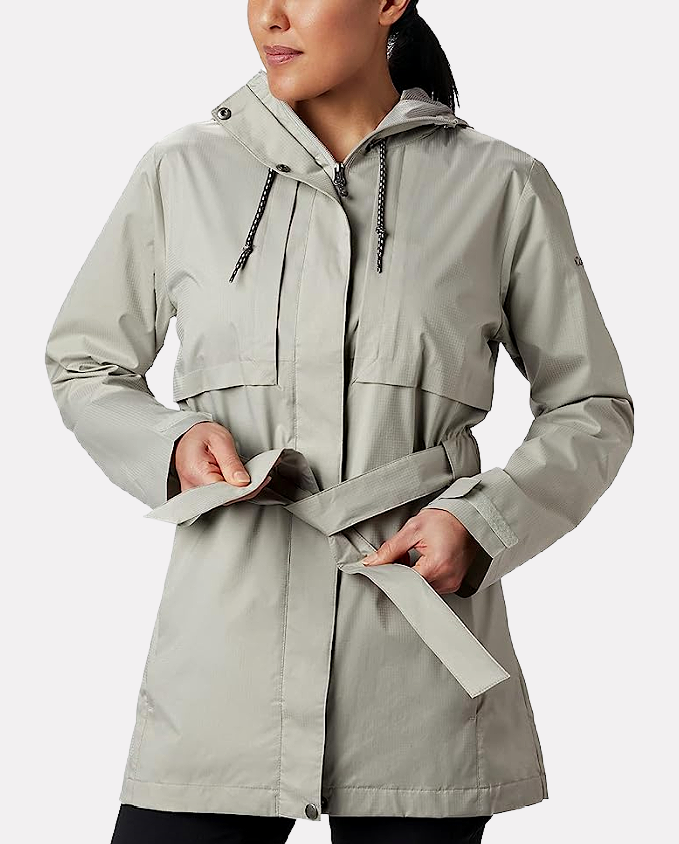
Shop Columbia Pardon My Trench: Amazon | Columbia | Zappos Sizes: Regular XS-XXL | Plus 1X-3X
Jackets for Fall
Your packing list isn’t complete without a solid waterproof jacket . You’ll likely face some rain here and there, so stay protected from the cold elements and keep looking chic with a trench coat .
The Columbia Pardon My Trench jacket is lightweight yet insulating, so it’s a perfect piece for layering depending on the day’s temperature. The mesh vented back adds breathability, the front tie belt enhances its feminine shape, and pockets and a hood add extra functionality.
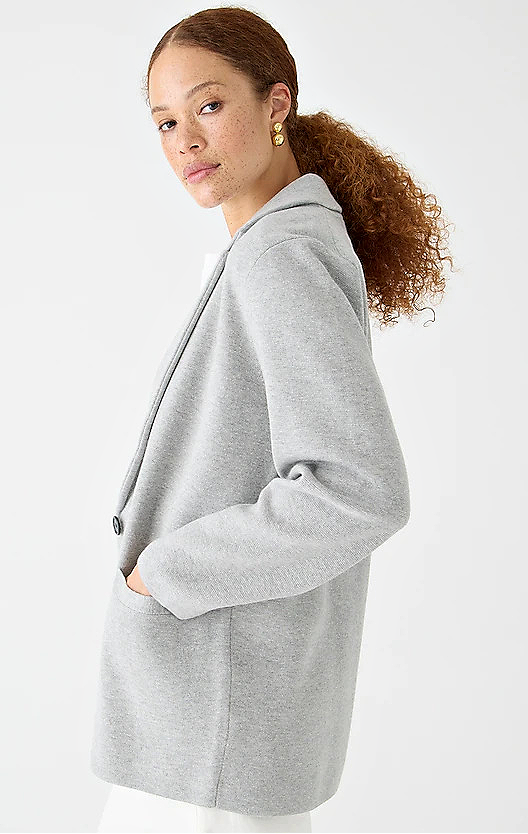
J.Crew Cecile Merino Wool Sweater-Blazer | Sizes XXS-3X
If you want to look slightly dressier during the day or want a polished jacket option for dinners and nicer occasions, include a blazer on your packing list! The J. Crew Cecile blazer will add effortless style and as it’s made from a warm merino wool and a soft cotton blend, you’ll get tons of coziness.
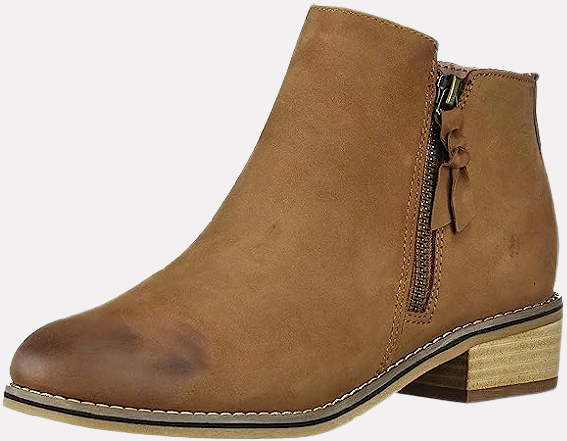
Blondo Liam Waterproof Ankle Boots
Shoes for Fall
A pair of warm and waterproof leather boots are a crucial addition to your autumn Switzerland wardrobe. You definitely don’t want to risk having to sightsee with cold and damp feet. Plus, a comfy pair of boots will be endlessly versatile on your trip, as they’re easy to style, whether needing to be dressed up or down!
The Blondo Liam waterproof booties are cute and super functional. Readers love that while they’re tough, repel water, and are a dream to walk in!
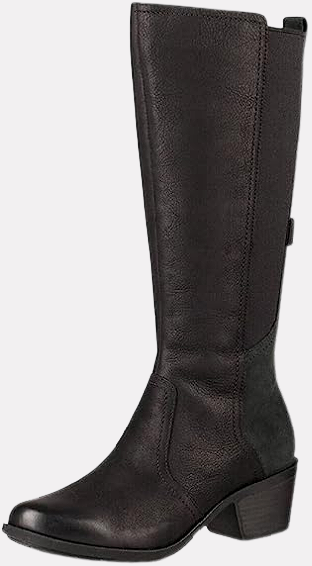
Teva Anaya Chelsea Knee-High Boots
Knee-high boots are another super chic and cozy option for fall in Switzerland.
The Teva Anaya tall boots have a simple yet gorgeous design with a slight heel, excellent traction, and a cushioned footbed that’ll support your feet throughout long days of walking. And, of course, they’re 100% waterproof!
Take a look at the best women mid calf boots that are comfy, stylish, and versatile!
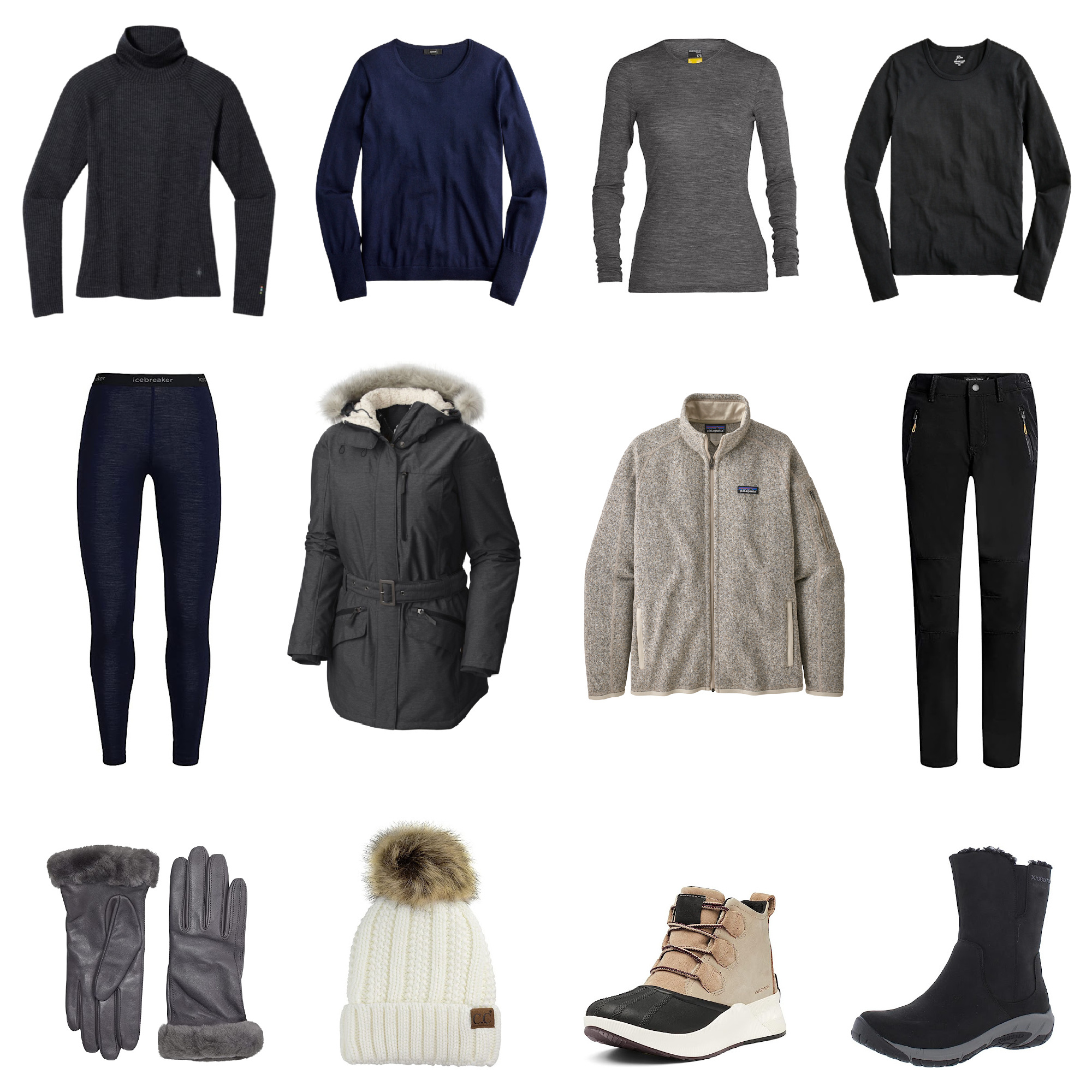
Longsleeve 1 | Sweater | Thermal Top | Longsleeve 2 | Thermal Pants | Jacket 1 | Jacket 2 | Pants | Gloves | Beanie | Boots 1 | Boots 2
What to Wear in Switzerland: Zurich in Winter
During winter you can expect cold and rainy weather, with temperatures often dropping below freezing and few daylight hours. You might even get some snow on particularly cold days!
The weather is unpredictable, but as long as you have warm boots and outerwear and some cozy layers, you’ll be all set.
(If you have your sights on hitting the slopes, bring along these essentials when planning what to pack!)
Start by reading these general tips on packing for winter travel:
- Capsule Wardrobe for Winter
- How to Pack for Cold Weather
- How to Stay Warm in Cold Weather (without the bulk)
- The Best Travel Shoes for Winter
Switzerland Packing List for Winter
Layering is essential for winter, especially because the temperature differences from outside to inside can be quite extreme. Make sure to have several versatile layers on your Switzerland packing list!
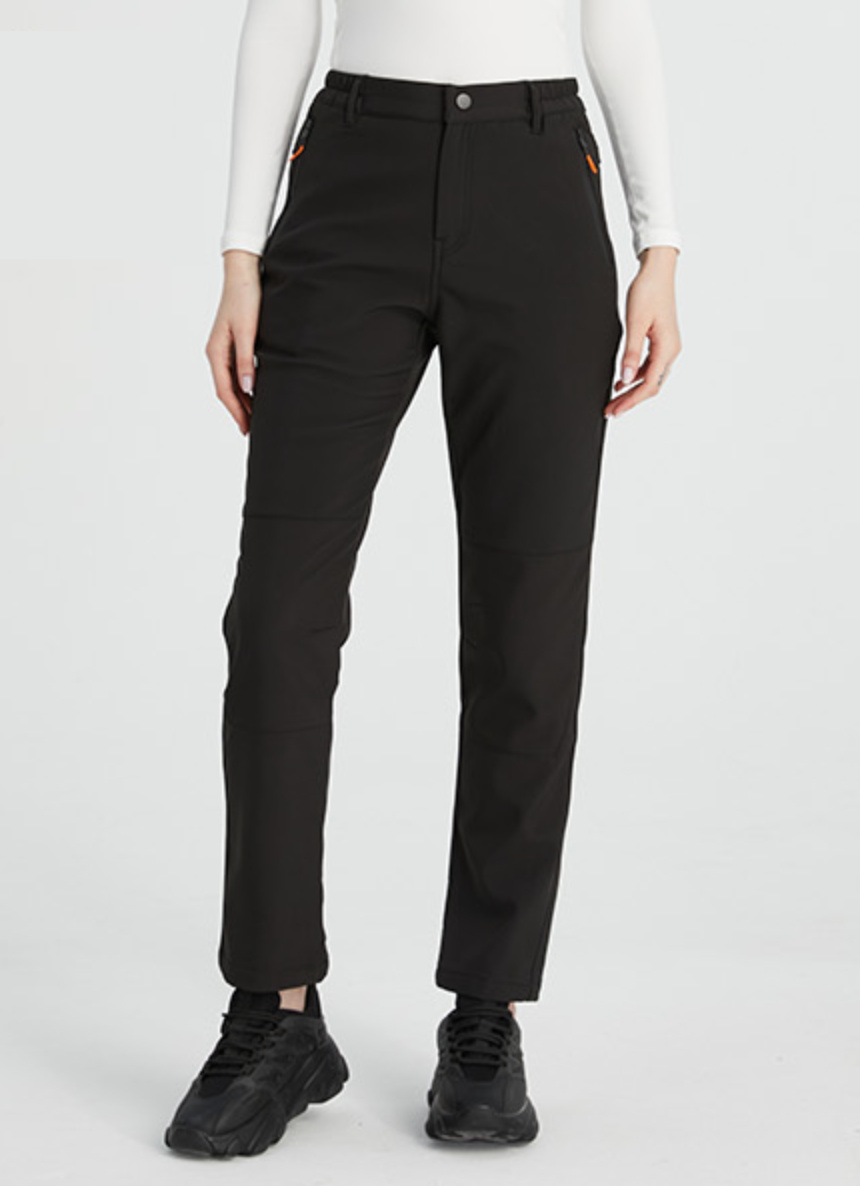
Camii Mia Snow Fleece Hiking Pants | Sizes 26-38
Bottoms for Winter
Whether winding through the picturesque streets in the city or taking a trip up to the mountains for a scenic hike, these Camii Mia waterproof pants will be perfect.
They’re neutral with a classic, slim fit, so you can style them up in countless ways. And aside from being waterproof, they’re also breathable and rip-resistant, allowing for plenty of mobility, and are lined with warm and cozy fleece!
Read this post on what to bring to Switzerland in winter !
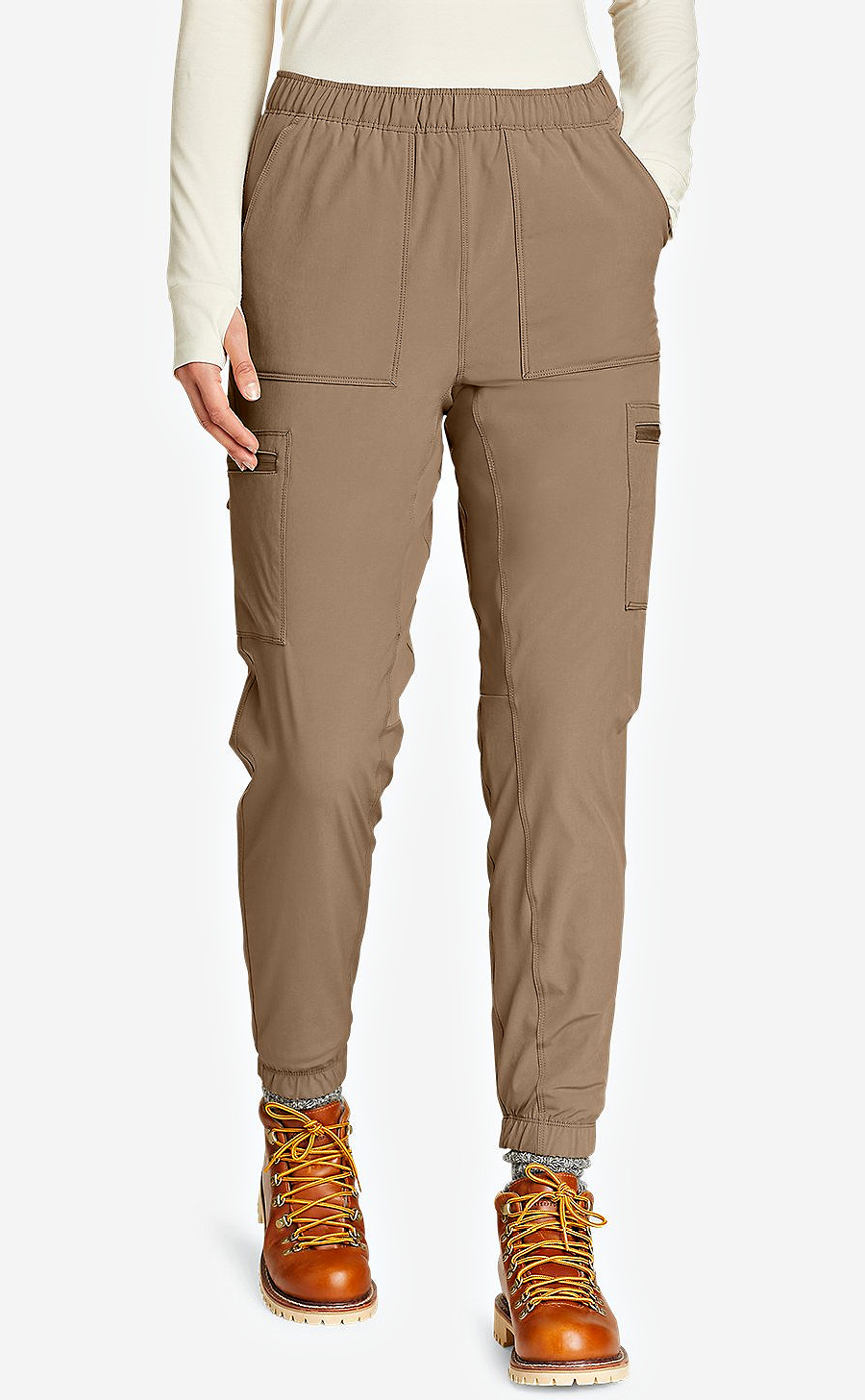
Shop Eddie Bauer Fleece-Lined Pants: Amazon | Eddie Bauer Sizes: Regular 0-16 | Tall 6-18 | Plus 18-24W
Winter pants made of technical fabrics that also have a clean, polished look will give you the best of both worlds in terms of dressing for winter.
Another pick that checks these boxes are the Eddie Bauer Polar pants , which are sporty but have more of a sleek look. They’re waterproof, with fleece-lined for warmth, and effectively seal out the cold, so you can explore the great outdoors for hours on end and stay toasty!
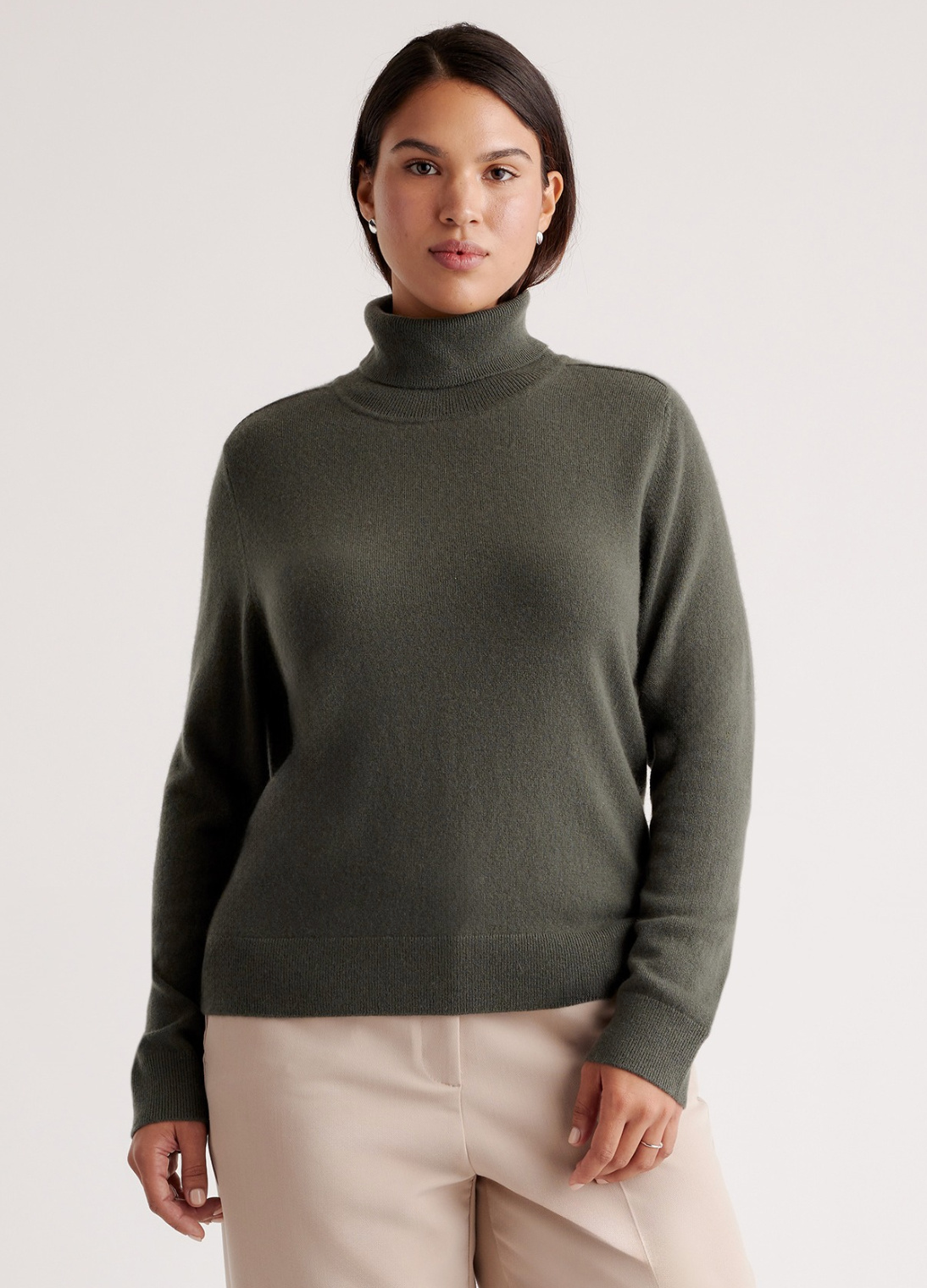
Quince Mongolian Cashmere Turtleneck Sweater | Sizes XS-XL
Tops for Winter
Tops made from fabrics like merino wool or cashmere are great options for winter in Switzerland.
The Quince Mongolian Cashmere Turtleneck Sweater is a reader favorite, as it’s super warm and comfortable! You’ll without a doubt be reaching for this top throughout your whole trip, and it’ll stay nice and fresh the whole time.

Naadam The Original Cashmere Sweater | Sizes XS-XXL
A sweater is another basic that you’ll be happy to have packed on your winter vacay. They’re chic, can go dressy or casual, be layered with thermals underneath and jackets over top, and are lightweight yet ultra-warm.
The Naadam The Original Cashmere Sweater is the ultimate travel top for winter, made of an incredibly warm 100% cashmere. It’s super pretty, has a flattering fit, and comes in a wide range of colors to suit your capsule wardrobe.
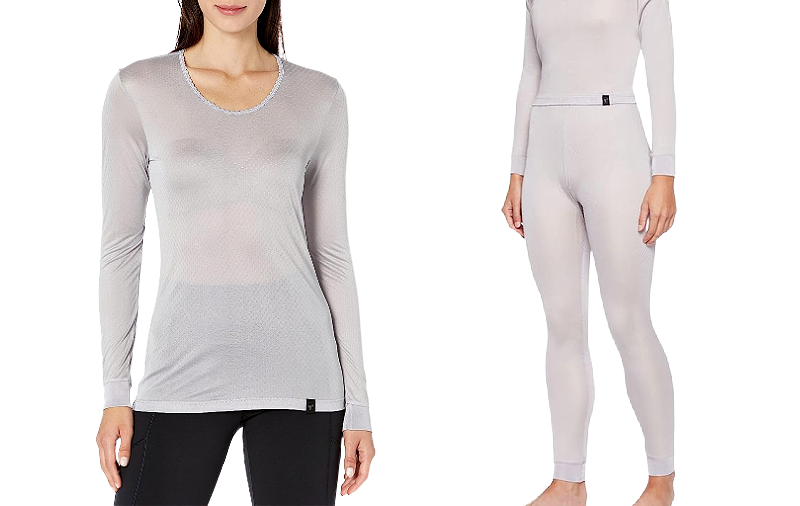
Terramar Thermasilk Pointelle Scoop: Top | Bottoms (Sizes XS-XL)
Thermals for Winter
With such frigid temps, you’ll definitely want to bring along some thermal underwear . They’re easy to pack and not bulky so you aren’t sacrificing comfort or won’t feel weighed down!
Silk thermals are fabulous because they manage to be light while offering lots of warmth. Terramar’s Thermasilk top and bottoms are thermoregulating, which will come in handy when popping in and out of heated indoor spaces, plus they draw away moisture, so you don’t shiver, and go on easily and feel great under clothes.
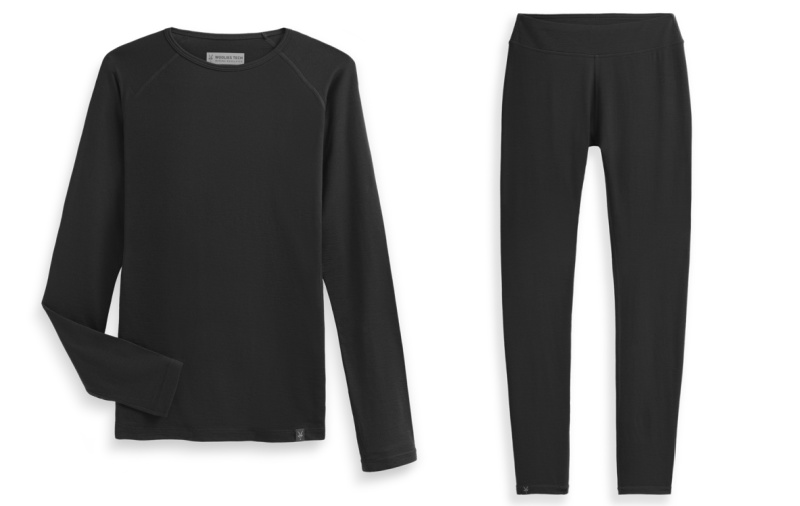
Woolies Tech Long Sleeve Shirt | Woolies Tech Layer Bottoms (Sizes XS-XL)
When it comes to reader faves, the ibex’s thermals are raved about in the TFG community, as their merino wool construction means cozy warmth and tons of functional features. Their top and bottoms will wick away sweat, let your skin breathe, and will keep your temperature regulated throughout the day. They’re smooth and stretchy, and are perfect for active days outside and for lounging around indoors.
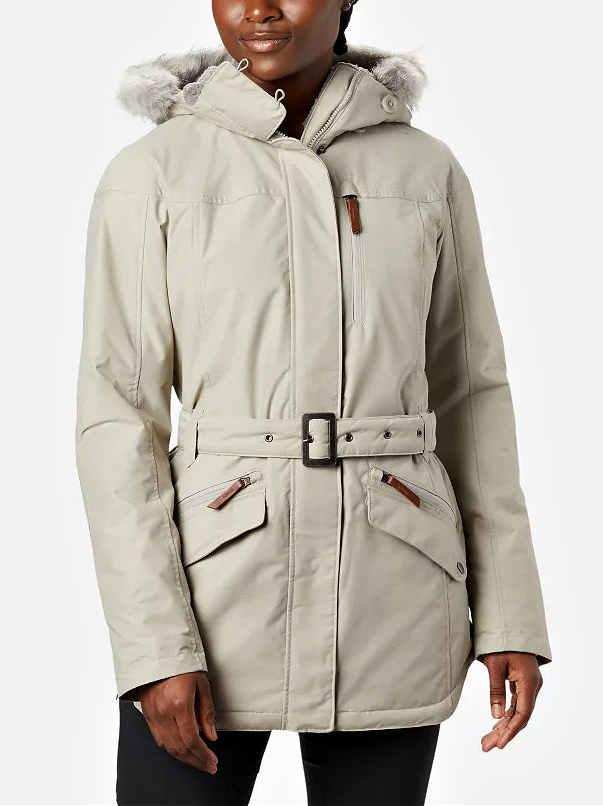
Shop Columbia Carson Jacket: Amazon | Columbia (Sizes XS-3X)
Jackets for Winter
It goes without saying that a winter coat is essential for winter in Switzerland. Ensure that it’s waterproof, insulated, and has practical features like a hood and secure pockets. And a cute, versatile look certainly doesn’t hurt either!
The Columbia Carson Pass II jacket is sturdy, fully waterproof, and lined with Omni-Heat thermal insulation. There are multiple pockets, an adjustable hood, and a belted waist that you can cinch in for a more feminine fit.
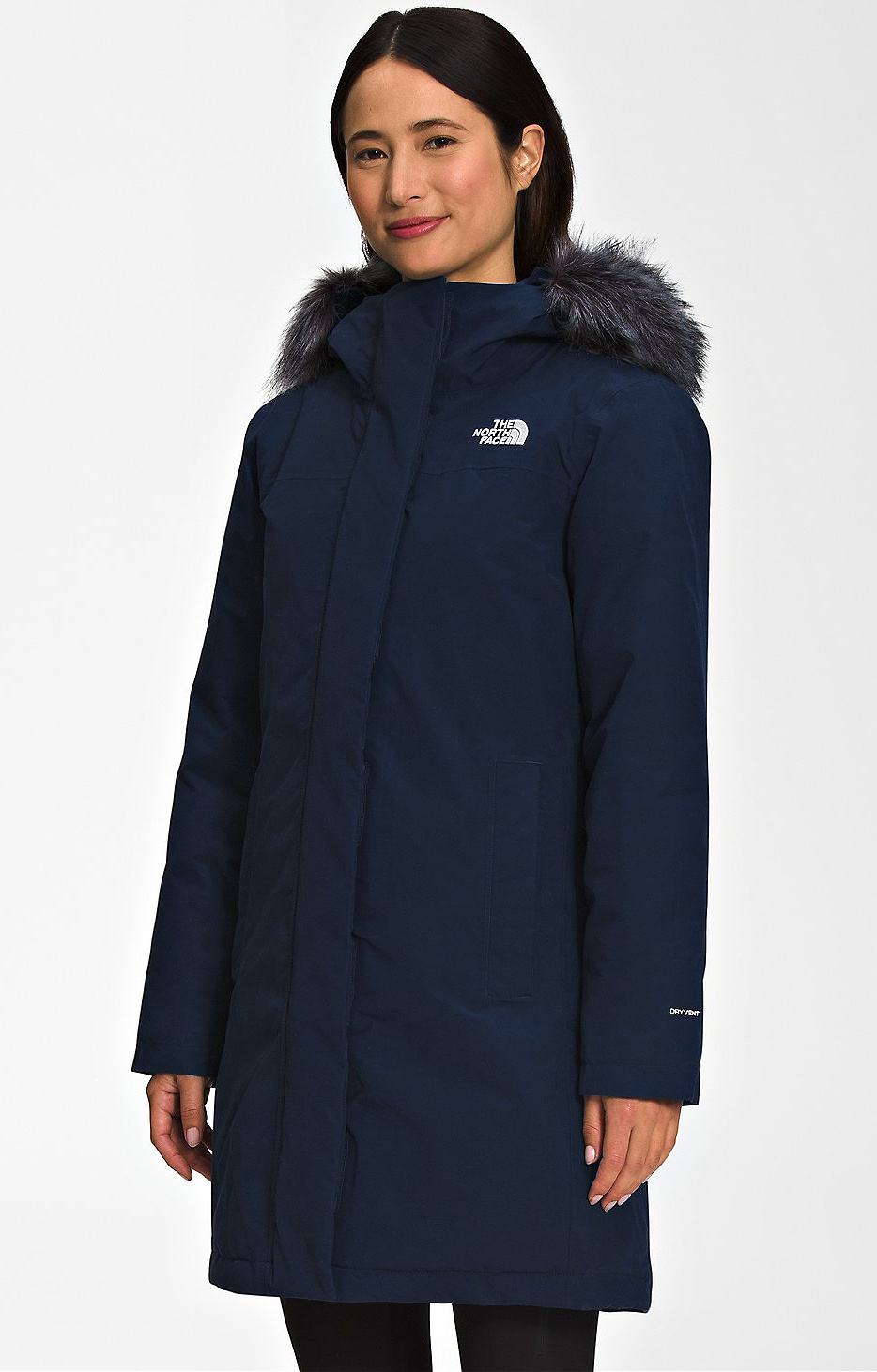
Shop The North Face Parka : Amazon | The North Face ( Sizes XS-3XL)
The North Face’s Arctic parka is insulated and waterproof yet breathable, and it’s not too heavy, either. It’s super comfy for a day spent outdoors, whether hiking, sightseeing, or shopping. It’s sleek and feminine-looking yet still very simple and comes with a host of practical features like an adjustable hood with removable faux trim, secure internal and external pockets, and a stand collar for extra protection from the cold.
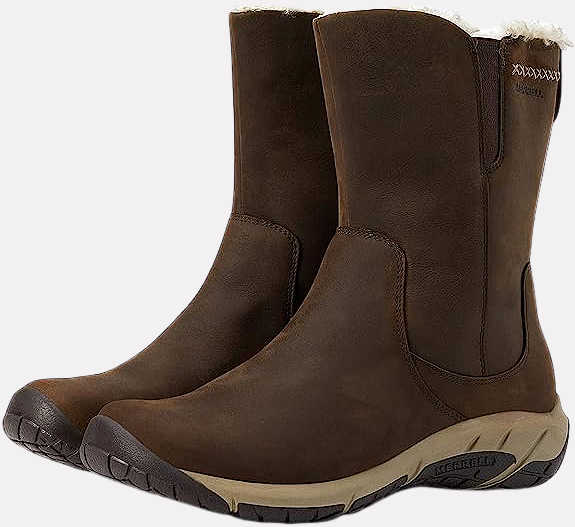
Merrell Encore 4 Snow Boots
Shoes for Winter
You’ll want to go with sturdy waterproof boots when vacationing in Switzerland in the winter. Be sure they can handle rain and snow, will keep your feet nice and warm, have ample support for walking or hiking, and will grip slick, uneven surfaces with ease.
The Merrell Encore 4 polar boots are a versatile, sporty pair that has a sleek leather exterior which makes them a tad more elevated, so you could wear them with jeans and a smart jacket for city sightseeing, and then hit the mountain trails.
They’re cushioned, offer great support, and are easy to pull on and off.
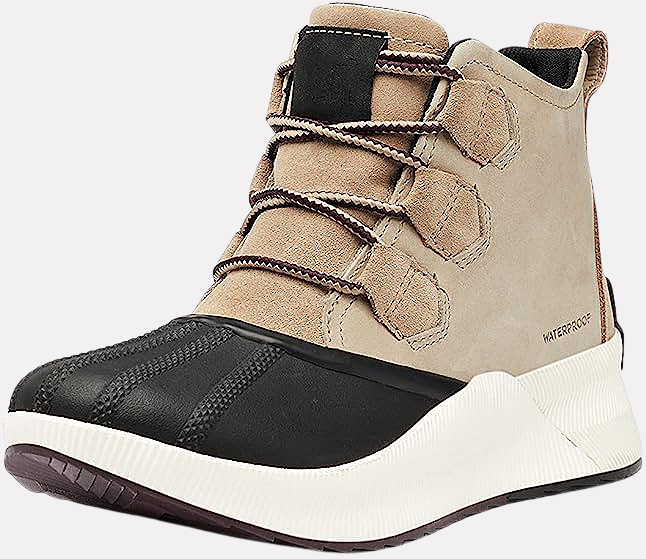
Shop Sorel Out ‘N About III: Amazon | Sorel
Another sporty-cute pair that readers love is the Sorel Out ’N About III boots , which are described as supportive and amazing for walking. They’ll keep every bit of rain or snow out and keep your feet warm and toasty, plus they have excellent traction, are highly durable, and have a really stylish look, too!
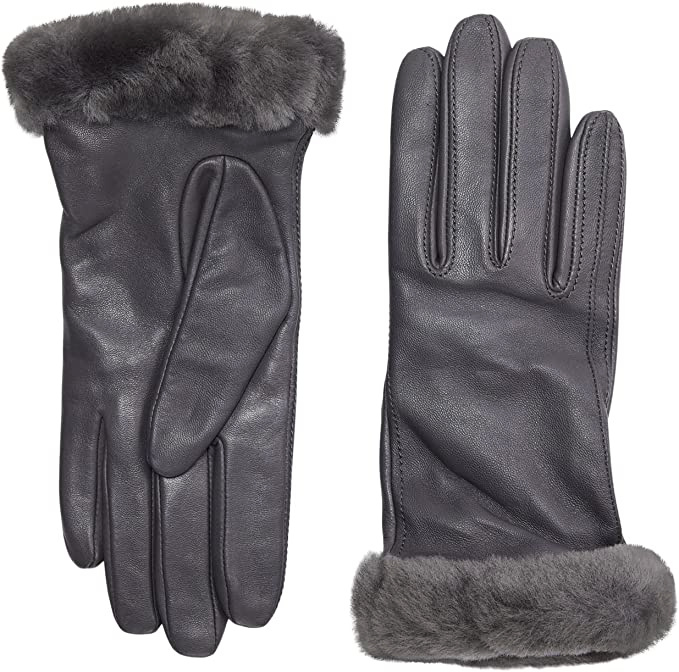
UGG Classic Tech Gloves
Winter Accessories
Pack warm, stylish winter accessories , too, including a scarf , gloves , and a knit hat . These are essential accessories for any winter wardrobe to keep your extremities warm and protected from the cold!
Readers like using tech gloves so they can use their phones to snap photos or look at their maps without risking numb fingers. The UGG Techy wool blend gloves are not only elegant and fashionable but are warm, protective, and have touch-screen capabilities.
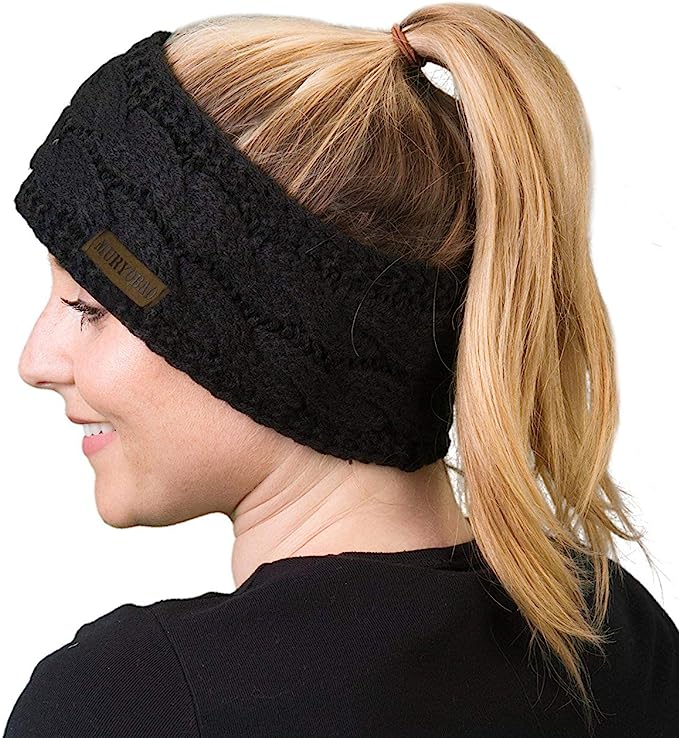
Muryobao Winter Headband
While beanies are always a cute and warm go-to for winter, a knit headband is a fabulous alternative that actually will keep your ears and head warm and allows you to rock a bun or ponytail.
What Luggage to Bring to Switzerland: Zurich
Keep it simple with compact crossbody purses or backpacks for your personal item and easy-to-maneuver luggage that won’t weigh you down.
When traveling to Switzerland, be sure your suitcase is compliant with international airlines. Go for carry on luggage that’s sized at 19” or 20” for seamless boarding!
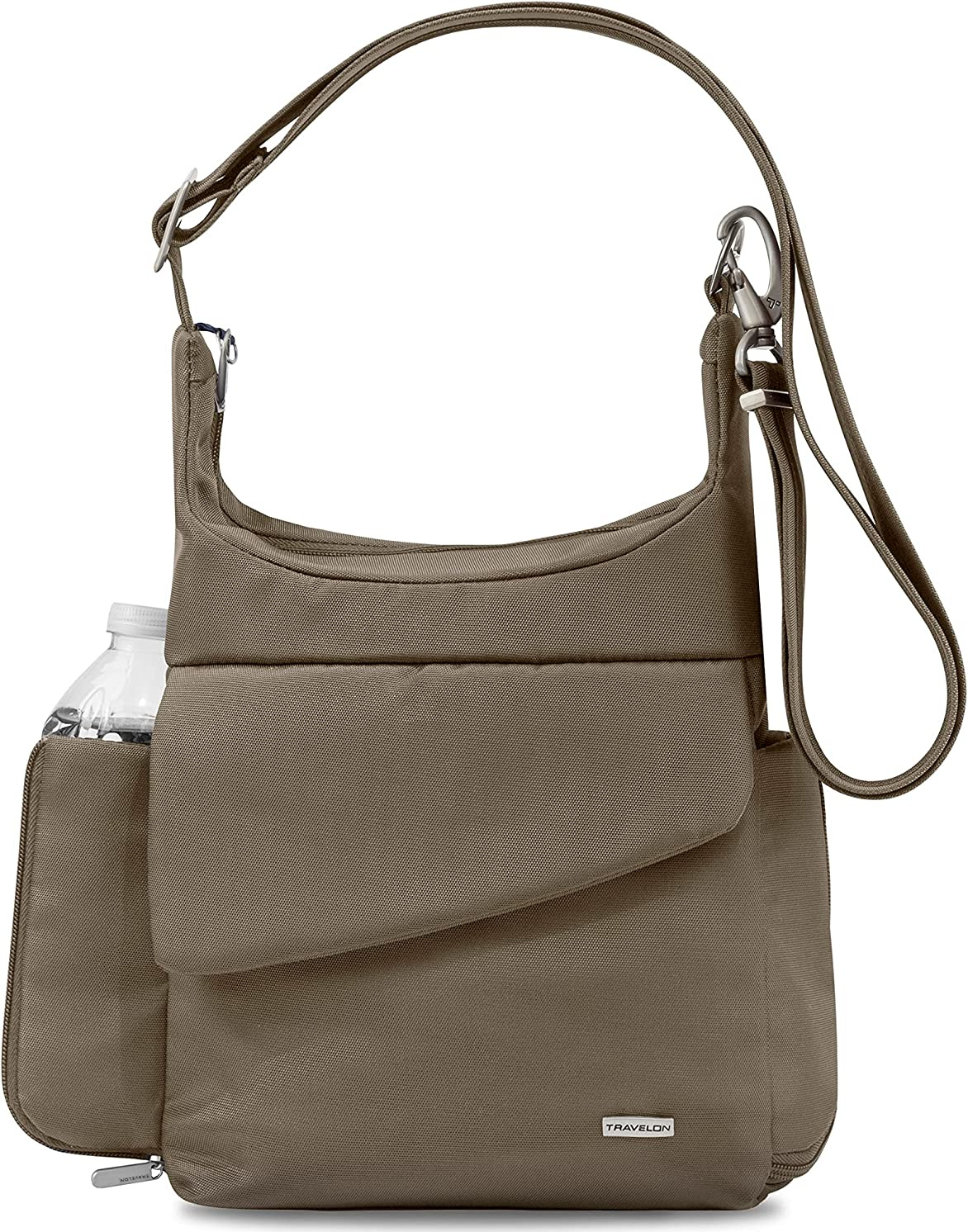
Travelon Anti-theft Classic Messenger Bag
Purse or Personal Item
One of the all-time favorite purses in the TFG community is the classic Travelon anti-theft messenger bag , loved for its simple look, perfect size, and top-notch security. It has amazing organizational features, including a side water bottle pocket, and has a clean, understated look that’s perfect for travel.
While Switzerland is generally known for being quite safe, many readers still like to bring along their anti-theft purse for the utmost peace of mind, especially if they’ll be visiting touristy or crowded destinations and using public transportation.
Crossbody purses are another smart choice for a Switzerland trip, as they’re secure and convenient to carry, keeping you hands-free yet giving you easy access to your belongings.
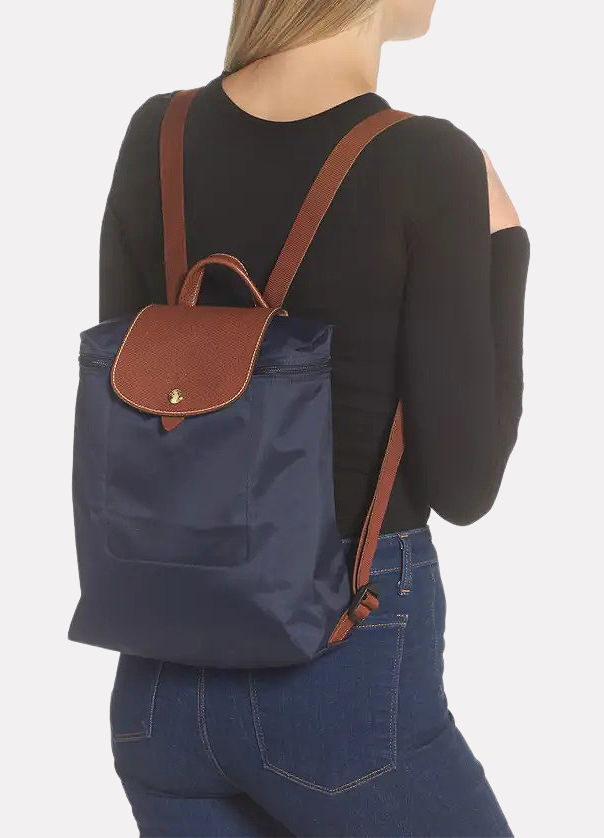
Shop Longchamp Le Pliage: Nordstrom | Longchamp
If you want to pack a tad bit heavier or just love the ease of a backpack, the Longchamp Le Pliage backpack is a chic and functional choice. It’s roomy but not too large, and with lightweight and highly durable nylon construction, it won’t weigh you down. Readers love that the leather details add a classy touch as well!
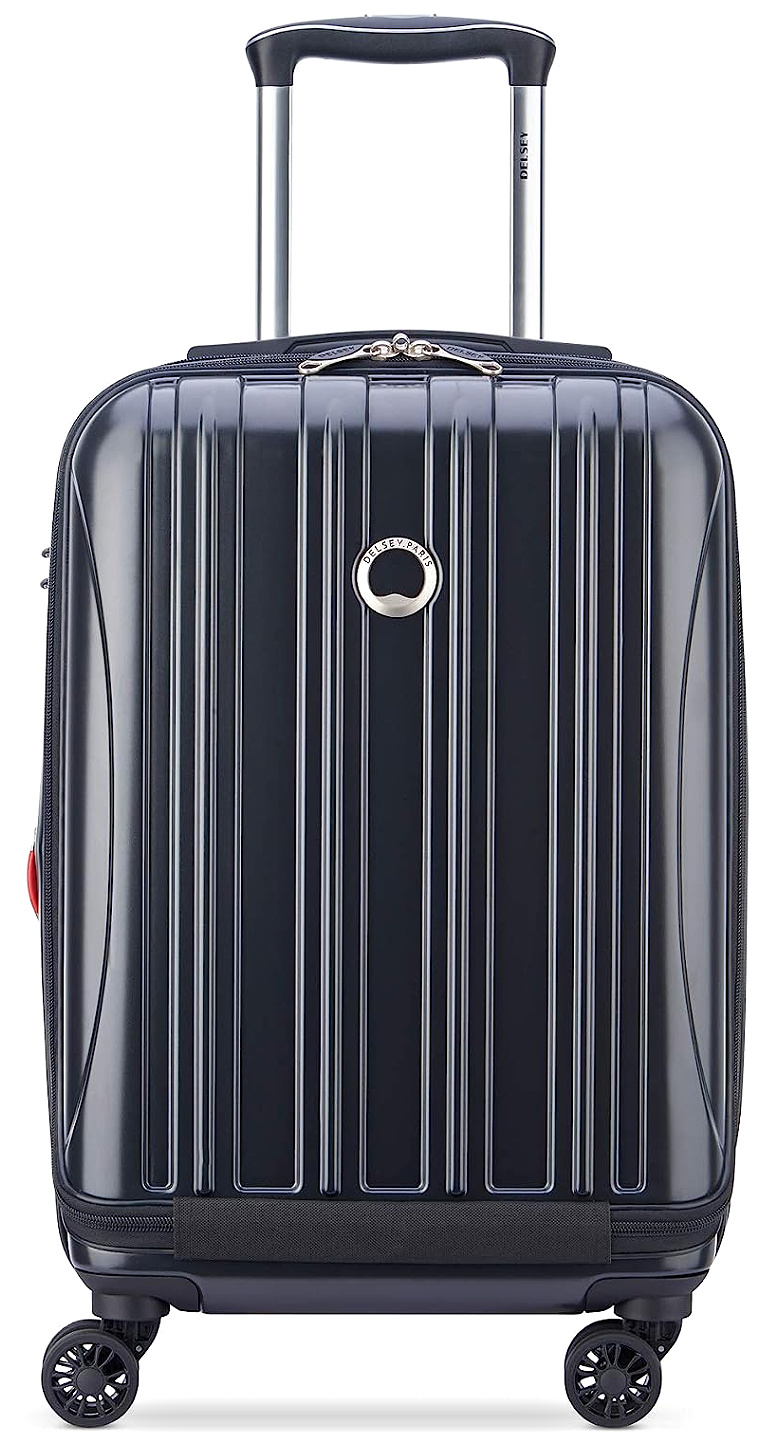
Delsey Paris Helium Aero Hardside Luggage
Carry On Suitcase
If you like a hardside suitcase, the Delsey Paris Helium Aero 19” is resilient as can be, yet amazingly lightweight at 5.5 lbs.
It glides smoothly, offers great interior organization, and while it’s a compact option that’ll fit in the smallest of overhead bins, readers confirm that you can pack a ton inside the spacious interior. This suitcase is stylish, too, with a metallic finish that holds up well!
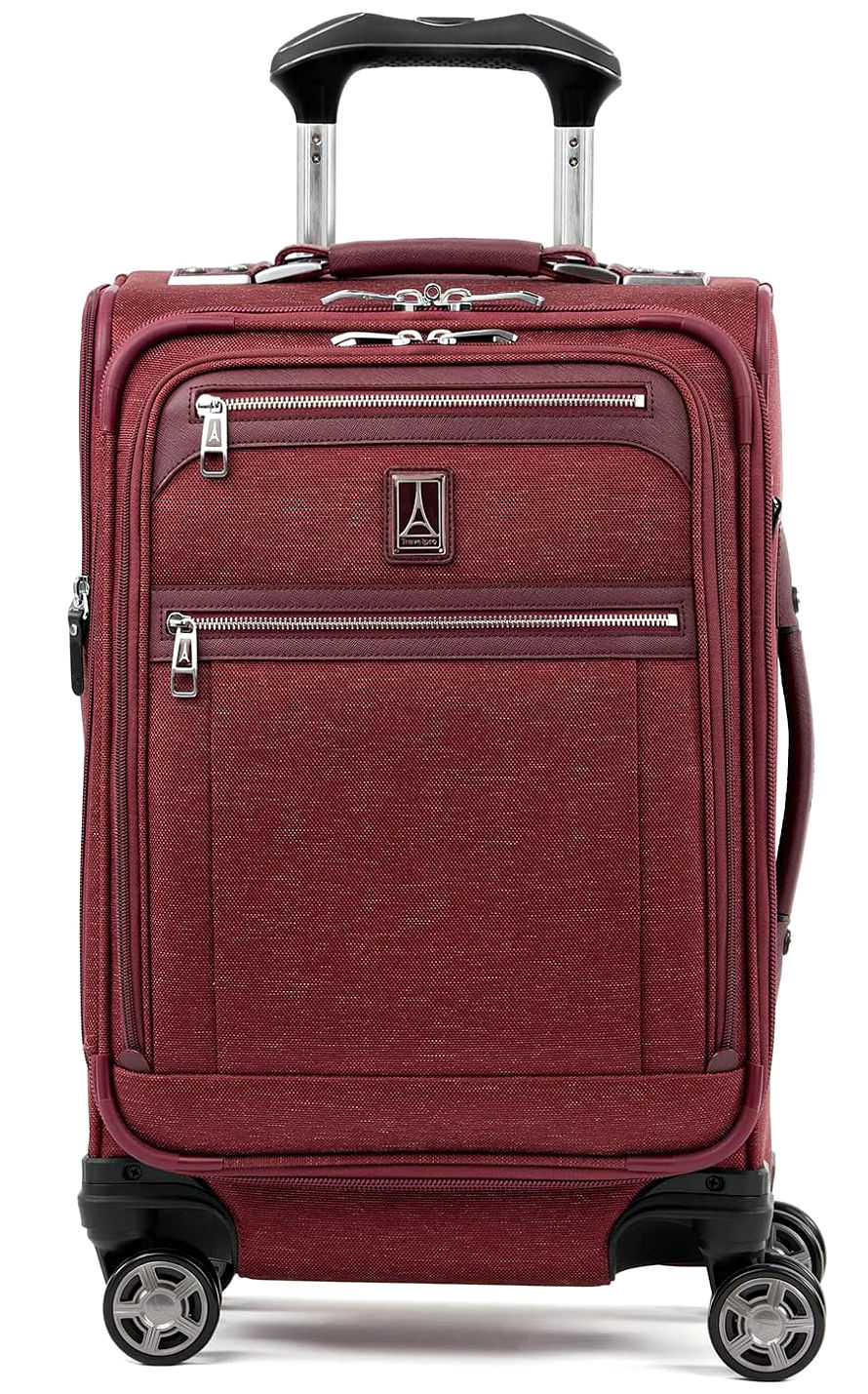
Travelpro Platinum Elite Softside Expandable Luggage
Travelpro’s softside options are truly stellar, with their Platinum Elite 20” being a top reader recommendation! It’s effortless to roll around (yes – even on Switzerland’s cobblestone roads), will hold up great to the wear and tear of travel, and has several organizational features, multiple pockets, and a USB port for on-the-go charging.
Zurich Shopping
If you are in need of an addition to your Switzerland packing list, then stores such as H&M, Migros, and Coop will stock a variety of items that are useful for the Swiss weather that comes with a reasonable price tag.
Coop or Migros also stock a selection of cured meats and cheeses and breads which you can treat yourself to.
When planning what to wear in Switzerland, keep in mind that the country is not known to be budget-friendly, and unless you have unlimited spending try to avoid stores such as Manor, Jelmoli, and Globus, which will require you to pay a premium price.
Tips for Traveling to Switzerland
Be daring on your Switzerland holidays and explore places that lead away from the main streets. In addition, common courtesy and an interest in the culture can go a long way in helping you during your trip.
Although most Swiss people are able to speak English it shows respect if you attempt to address them in their native tongue “Sprechen Sie Englisch?” (“Do you speak English?”) This will result in you receiving a much warmer reception.
An amazing place for Swiss food, and reasonably priced, is Zeughauskeller on the Bahnhofstrasse, however, be sure to book in advance to avoid waiting.
Enjoy your Switzerland Holidays!
What are your tips on what to wear in Switzerland for the holidays? What’s on your Switzerland packing list?
Please note: Most of Europe’s Budget Airlines have this Carryon Bag Allowance: 55cm x 40cm x 20cm. Always check your airlines’ individual baggage rules and regulations in advance.
LIKED THIS POST? PIN THIS PIC TO SAVE IT!
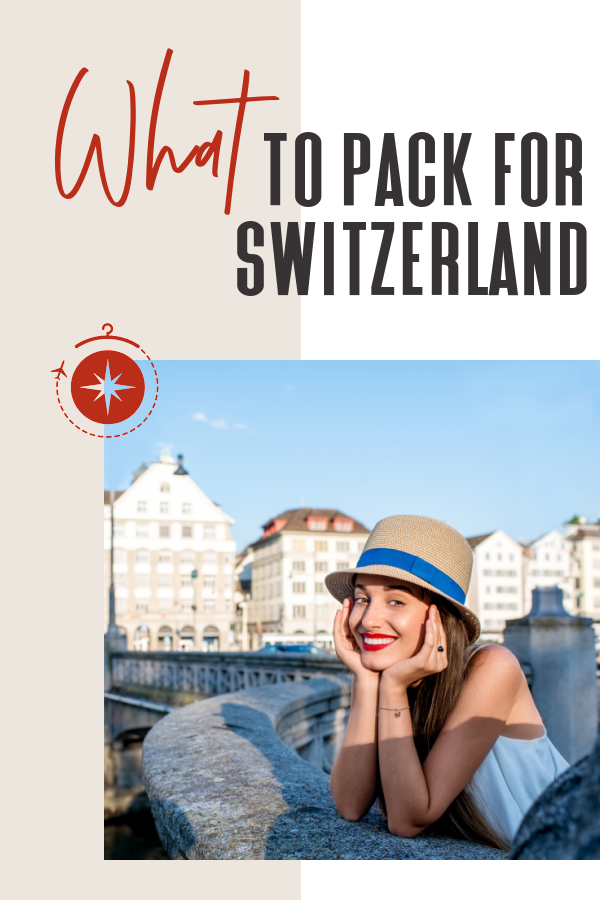
For more tips, please read these Europe packing lists:
Suggested travel resources:
- Lonely Planet Switzerland (Country Guide)
- Travel Shoes for Europe
- The Best Carry-on Suitcases for Europe
Please read our Ultimate Packing List for Europe featuring stylish outfits and travel tips for 9 countries.
Hope this post on what to wear in Switzerland. Don’t forget to share the love on Facebook, Twitter and Pinterest. Thanks for reading!
17 comments.
I am seriously thinking about a visit to Switzerland during the late Fall or early Winter to travel on the Bernina and Glacier Express excursions. I found that winter in NY States’s Catskill Mountains requires the same cold weather clothing and outerwear suggested in the article. Thanks for publishing it.
Hope to use this to travel to Switzerland one day!
Your lists are always so helpful!
I’m heading to Switzerland in November and this information will be very useful!
I love TFG and I am glad for this post as I am planning a 2023 trip to Switzerland. It’s never too early to start planning! 🙂
Hi, I came across this page while searching for what to pack for travelling to Switzerland in Dec. We are from Australia and we are travelling with my family around Europe in Nov – Dec this year. Since Brisbane, where we live is no where near the the cold that is in Europe in Winter, we are worried about what we need to pack and at the same time because we’ll be travelling too much, don’t want to carry too much either. So would request you to suggest what we need to pack. Our tentative itinerary is below: 28 Nov – 2 Dec – London 3 – 5 Dec Paris 6 – 9 Dec Spain 10 – 13 Dec Switzerland 14 – 18 Dec Italy Hope you can suggest us to pack smartly for this trip.
Thank you so much
Hi Shampa, how exciting!! Take a look at TFG’s Four Winter Signature Packing Lists for ideas for a capsule wardrobe and how many clothing items you could pack: https://www.travelfashiongirl.com/functional-and-fashion-packing-list/
Here are a few more resources to help you with staying warm when traveling in colder weather: 1. Thermals are the secret to minimal packing with less bulk, they’re amazing: https://www.travelfashiongirl.com/best-thermal-underwear-for-women/ 2. Here are some tips on how to layer them with your clothing to stay warm: https://www.travelfashiongirl.com/how-to-stay-warm-in-cold-weather/ 3. This is a sample packing list for the cold: https://www.travelfashiongirl.com/how-to-pack-for-cold-weather/ You can use the principles to create your own capsule wardrobe according to your own clothing preferences, not necessarily to pack what is shown in the example.
I would also highly recommend that you join our TFG facebook group and post your question there: https://www.facebook.com/groups/travelfashiongirls/ It’s a fabulous community of helpful female travelers that love to share their travel advice and recommendations.
Have the most incredible time!
What kind of these clothes do u wear in August
Hi Jackie, thank you for your question. The best tip is to monitor the forecast for your specific trip dates to ensure that you have the most appropriate clothing. It may be getting cooler depending when in August you are traveling, so I would pack clothes that you could easily layer in case the temperature dropped. Have a look at the fall section of the article for some tips to help you with your packing. I would also highly recommend that you join our TFG facebook group and post any questions you have there about what to wear in Switzerland in August: https://www.facebook.com/groups/travelfashiongirls/ Its a fabulous community of helpful female travelers that have the best advice and recommendations to share. Hope this helps. Have an awesome trip! ?
hello your information helped me a lot and I am now preparing my trip to Zurich in January, but I wonder if I can recommend an affordable hotel and a flight from Paris to Zurich thank you very much.
Hi Anabell, thank you for your feedback on our tips! For cheap flights within Europe try Easy Jet or RyanAir. I’ll post your question on Facebook on Monday to see if we can get some hotel tips and more flight recommendations for you. Stay tuned: https://www.facebook.com/TravelFashionGirl/
Zurich local girl here: You forgot something important for Summer: One of our main attractions is the lake, so you bring a bikini and a towel! You can put yourself just about anywhere on a lawn by the lakeside (for free) or go to one of the several public baths. They offer the comfort of lockers and showers.
great tip, thank you!
Hi We are travelling with family in Jan 1st week can u suggest what clothes should we take .
Hi Aaishwarya, thank you for reaching out. If you need any more help with your packing, I would recommend that you join TFG’s free facebook community and post any questions you have there: https://www.facebook.com/groups/travelfashiongirls/ It is a fabulous group of helpful female travelers that have the best advice and suggestions to share. Have an amazing trip! ?
THIS WAS FANTASTIC! SOOOOO HELPFUL! We r travelling Paris sept for a week, then train into Switzerland for about ten days then down I to italy, rounding out he month. In Switzerland we want to visit grindlewald to zipline and wengen, interlarken etc no idea what to pack. I’m worries we won’t be warm enough but will take layers, but no bulky coat as I thought we’d get warm hiking…..am I deluded?
Hi Helen, light layers sound good. I’ll go ahead and post your question on the Facebook page to get more feedback for you. Stop by for updates: https://www.facebook.com/TravelFashionGirl
Submit a Comment Cancel reply
Your email address will not be published. Required fields are marked *
Save my name, email, and website in this browser for the next time I comment.
National Geographic content straight to your inbox—sign up for our popular newsletters here
The essential guide to Switzerland
Here’s everything you need to know about exploring the “Playground of Europe”—when to go, where to stay, what to do, and how to get around.

Why you should visit Switzerland
Skiing in the Alps. Swimming in crystal clear lakes. Modern cities with medieval old towns. All that chocolate and cheese.
Best time to visit Switzerland
Spring: Hike along low-elevation trails through forests, past gorges, waterfalls, and lakes. Take the Glacier Express panoramic train across the Alps. Basel is a party city during its three-day carnival, Basler Fasnacht .
Summer: Most mountain areas are open from July. (Many resorts close between the skiing and summer seasons, usually April-June.) Europe’s largest jazz festival, Montreux Jazz Festival , takes place on the banks of Lake Geneva . Swiss National Day (August 1) is celebrated nationwide with bonfires and fireworks.
Autumn: Try regional Swiss cheeses at Lucerne’s Cheese Festival . Celebrate the start of the grape harvest in Neuchâtel at the lively Grape Harvest Festival (Fête des Vendanges). The Food Zurich festival features food tours, markets, and culinary events.
Winter: Switzerland’s mountain resorts are a magnet for winter sports enthusiasts. Watch international artists carving huge blocks of snow at the Grindelwald Snow Festival . Enjoy mulled wine and twinkling lights at Christmas markets .

Lay of the land
Cities: Bern’s old town has nearly four miles of medieval shopping arcades. Stylish Zurich offers a flourishing food scene and vibrant nightlife. Cultural hotspot Basel is the gateway for Alpine skiing. Geneva is the cosmopolitan capital of high-end watchmaking. Head to Lugano for Mediterranean-style squares and sub-tropical gardens. Charming car-free Chur is Switzerland’s oldest city.
Central: Surrounded by mountains, lakeside Lucerne is famous for its 14th-century wooden bridge. Lake Zug is a picturesque spot for swimming and watersports in summer. Come winter, Engelberg-TITLIS ski resort offers some of the country’s best slopes—and the world’s first revolving cable car .
( Ice melt and a new cableway are reshaping the Eiger experience .)
Northeast: Head to family-friendly Thurgau to camp on the shores of Lake Constance and cycle or hike through its meadows, orchards, and forests. The magnificent Carolingian Abbey of St. Gall is a UNESCO World Heritage site.
East: Spot ibexes, marmots, and golden eagles in the Swiss National Park (Parc Naziunal Svizzer). Grisons ’ Alpine resorts offer abundant snow-filled fun, from snowboarding to horse-drawn sleigh rides. The exclusive St. Moritz is renowned for its world-class pistes, luxury shopping, and high-end restaurants.
South: For Mediterranean-style architecture and delicious gelato, head to Italian-speaking Ascona on Lake Maggiore. Hike through Valais’ vineyards and learn about local wines at the Musée du Vin . Take the cable car to the Eggishorn viewpoint for magnificent views of the Great Aletsch Glacier . High-altitude Alpine resorts, including Zermatt and Verbier , offer guaranteed snow.
West: Lausanne’s Olympic Museum houses the world’s largest archive of modern Olympic artifacts. The Vaud wine region is known for its diverse range of wines. Visit the peaceful town of Gruyères for its medieval hilltop castle—and its Gruyère cheese. The subalpine Jura Mountains straddle the Swiss-French border.
North: Use Zurich or Winterthur as a base to visit Europe’s largest waterfall. Art Basel, the prestigious contemporary art fair, features artists from five continents. The idyllic Aargau-Solothurn region is off the radar for international tourists: indulge in some me time at one of its numerous thermal baths.

Getting around
By train: Switzerland’s train network is as safe, clean, and efficient as you’d imagine. Mainline trains are primarily run by Swiss Federal Railways (SBB in German, CFF in French, and FFS in Italian), with local and regional routes covered by private operators. Tickets can be bought at bahn.com, but domestic journeys don’t need to be booked ahead, and most trains don’t require a reservation. Good-value rail passes can be purchased from the Switzerland Travel Centre .
By car: Switzerland’s motorway network includes the A1, which runs east-west from St. Margrethen to Geneva, and the north-south A2, which connects Basel with Chiasso. A vignette (road tax) is required to drive on the motorway. Winter tires are advisable during winter; snow chains may be necessary in Alpine regions. Driving in Switzerland is on the right.
By plane: Domestic flights are quick but expensive. Switzerland’s so small there’s no need to fly.
By bus: Low-cost Flixbus offers several domestic routes.

Know before you go
Hours: Except at airports and train and gas stations, most stores are closed on Sundays. Some stores, restaurants, and attractions also close on public holidays, but unlike other parts of Europe, Switzerland doesn’t shut down in August.
Languages: Switzerland has four national languages: German is the most widely spoken, followed by French, which is spoken in the west of the country. Italian is predominantly spoken in the southeast. Rumantsch is a Gallo-Romance language indigenous to Grisons in Switzerland’s east.
LGBTQ+: Same-sex marriage is legal in Switzerland. As of 2020, transgender and intersex Swiss citizens over 16 can adjust their legal name and gender marker by self-declaration at the civil registry office. Zurich, Geneva, Basel, Bern, and Lausanne are known for their LGBTQ+ scenes. Pride (known as Christopher Street Day, or CSD) events are held in major cities and some smaller towns. Popular queer-friendly ski destinations include Zermatt, Lenzerheide , and Arosa .
Tipping: It is customary—though not obligatory—to round the bill up or tip approximately 10 percent.
How to visit sustainably
Outdoors: Explore natural landscapes outside peak season and enjoy spring flowers or colorful fall foliage. Stick to hiking and cycling trails, keep noise to a minimum, and take your trash with you. Use designated campsites or check with local authorities before wild camping. Use SwitzerlandMobility to select hiking trails coordinated with public transport.
Shopping: Browse flea markets in Zurich, Basel, and Geneva for vintage clothing and jewelry, books, and antiques. Stores such as the Schweizer Heimatwerk in Bern and Kolorit in St. Gallen sell Swiss-made souvenirs. Visit small-scale cheese dairies and wineries, and purchase chocolate from independent makers such as Garçoa and Taucherli , who produce fully traceable, organic, fair-trade bars.
Dining: There are vegetarian and vegan restaurants aplenty—supposedly the world’s oldest vegetarian restaurant is in Zurich—and the Swisstainable logo highlights restaurants committed to sustainable practices. Regional, seasonal produce is standard. Switzerland’s drinking water is very safe and clean—bring a reusable bottle and refill it at any tap.
( Here’s how to spend a meat-free culinary weekend in Zurich .)
What to read
Swiss History in a Nutshell, by Grégoire Nappey. A concise summary of the most important historical events in Swiss history.
Heidi , by Johanna Spyri. This story of an orphan sent to live with her grandfather in the Alps is responsible for the romantic image of Switzerland held around the world today.
Swiss Watching: Inside the Land of Milk and Honey , by Diccon Bewes. This exploration of Switzerland goes beyond its stereotypes to prove there’s far more to the country than banking, skiing, chocolate, and cheese.
( For more tips on what to do in Switzerland, see our Switzerland Explorer’s Guide .)
Related Topics
- FAMILY TRAVEL
- TRAVEL AND ADVENTURE
- TRAIN TRIPS
You May Also Like

10 best things to do in Switzerland


Some U.S. national parks are trying to go carbon-free. What does that mean for visitors?
Free bonus issue.

25 breathtaking places and experiences for 2023

The essential guide to visiting Scotland

Visiting Switzerland? Here’s what the locals love

20 of the coolest travel adventures for 2024

They inspire us and teach us about the world: Meet our 2024 Travelers of the Year
- Perpetual Planet
- Environment
- Paid Content
History & Culture
- History & Culture
- History Magazine
- Mind, Body, Wonder
- Gory Details
- 2023 in Review
- Terms of Use
- Privacy Policy
- Your US State Privacy Rights
- Children's Online Privacy Policy
- Interest-Based Ads
- About Nielsen Measurement
- Do Not Sell or Share My Personal Information
- Nat Geo Home
- Attend a Live Event
- Book a Trip
- Inspire Your Kids
- Shop Nat Geo
- Visit the D.C. Museum
- Learn About Our Impact
- Support Our Mission
- Advertise With Us
- Customer Service
- Renew Subscription
- Manage Your Subscription
- Work at Nat Geo
- Sign Up for Our Newsletters
- Contribute to Protect the Planet
Copyright © 1996-2015 National Geographic Society Copyright © 2015-2024 National Geographic Partners, LLC. All rights reserved
- All Destinations
- Bustling Cities
- Beautiful Towns
- Charming Villages
- Culinary Experiences
- Historical Monuments
- Zoos, Parks and Aquariums
- Image Gallery
- Comparative Analyses
- Hiking Time Calculator
- Travel Information
- Frequently Asked Questions
- Affiliate Disclaimer
- Favorite Resources
- Privacy Policy
Switzerland Winter Packing List: Essential Items for Your Trip
- November 30, 2023 November 30, 2023
- General Information
Last Updated on November 30, 2023 by Darla Uhl
A trip to Switzerland in winter is a dream for many, offering skiing, snowy landscapes, and stunning Alpine views. But figuring out what to pack can be a challenge, especially if you’re coming from a warmer climate. That’s where a Switzerland winter packing list comes in handy—it ensures you’re all set to stay cozy and enjoy the trip.

The Swiss winter is a mix of sunny days and snowy spells, and the weather can be quite unpredictable. Packing layers is key—you’ll want to be able to add or shed clothes as needed. Also, having warm, waterproof gear is a must to shield yourself from the cold and potentially wet conditions. This Switzerland winter packing list covers clothing, accessories, and other essentials, making sure you’re well-prepared for any kind of weather. Ready? Let’s go.
Switzerland Winter Packing List
When getting ready for a winter adventure in Switzerland, it’s crucial to gear up for the cold and maybe even some snow. Here’s what you should pack in terms of clothing:
Switzerland Winter Travel Packing List:
- Down Jacket or Waterproof Coat
- Waterproof Grip Sole Boots
- Warm Layers
- Hat, Scarf, Gloves
- Thermal Underwear
1. Down Jacket or Waterproof Coat
A cozy, down jacket or wool coat is essential for your winter journey in Switzerland. Look for one that’s waterproof or water-resistant to shield you from snow and sleet. It doesn’t need to be too bulky since you’ll layer up underneath.
2. Waterproof Grip Sole Boots
Sturdy waterproof boots are essential for walking snowy streets and trails. Opt for a pair with a solid sole that offers good traction on slippery surfaces. Remember, when surfaces get wet, they can turn icy, so a strong grip on the soles is crucial.
3. Warm Layers
Stay warm in chilly weather by layering up! Pack various tops and bottoms that you can pile on for extra warmth. Consider wearing long-sleeved shirts, sweaters, turtlenecks, cardigans, fleece-lined clothes, and thick jeans. Fabrics like merino wool, fleece, down, and thermal materials are great choices to keep you cozy.
4. Hat, Scarf, and Gloves
You’ll need a cozy hat, scarf, or snood, along with gloves to shield your head, neck, and hands from the cold. Opt for items made from warm, moisture-wicking fabrics for extra comfort. A scarf is super versatile—keeps your neck and face cozy while adding a splash of color to your winter look. Opt for wool or cashmere scarves for that extra warmth. Waterproof, insulated gloves are a must for your winter adventure in Switzerland. Consider bringing a spare pair in case your gloves get wet or lost.
5. Wool Socks
Merino wool socks are fantastic for keeping your feet warm and dry. They’re soft and comfy against your skin, making them an excellent choice.
6. Thermal Underwear
I suggest opting for thermal underwear, especially if you’re heading to the Swiss Alps. In the city, regular underwear might suffice, but as you ascend higher, you’ll appreciate the warmth and comfort that thermal underwear offers.
Footwear for Snow and Ice
When prepping for a winter adventure in Switzerland, having the right footwear is key. This country boasts snow-covered mountains and sometimes icy pathways, so your shoes need to handle these conditions.
Your top pick should be waterproof boots with solid traction . They’ll keep your feet dry and help you stay steady on icy surfaces. Make sure they’re insulated for warmth in the chilly weather.
When you’re planning to hit the snow for sports activities like skiing, snowboarding, snowshoeing, or cross-country skiing, it might be a good idea to rent specialized footwear from a sports shop . They’re designed to offer the right support and flexibility for these activities.
Alongside boots, consider slip-resistant ice grips that you can attach to your shoes. They’re handy for icy sidewalks or trails. They’re lightweight and easy to take on and off. I’d steer clear of flat-soled or heeled boots with no traction for safety, unless you’re using them indoors, like in a hotel.
Understanding Switzerland’s Winter Climate

The winter season in Switzerland typically spans from December to February, but occasionally, cold snaps in November or chilly spells extending into March can occur. The weather’s variability varies by region and time of year.
In the higher regions of the Swiss Alps, the coldest temperatures and heaviest snowfall occur during winter. Higher elevations experience frosty conditions, often well below freezing, with strong winds making it feel even colder. This results in places like Engadine and Zermatt being notably colder than lower areas like Lucerne, Zurich, and Geneva in winter.
Temperatures in lower areas are generally milder, although still chilly, with occasional snowfall.
When compiling your Switzerland winter packing list for a trip, be prepared for the cold. Layering is key to adapting to changing conditions. Indoors, fewer layers are needed due to most buildings being heated. Essential items like a warm coat, hat, gloves, and scarf are crucial to staying cozy outdoors.
Winter Sports Gear

When it comes to winter sports in Switzerland, having the right gear is essential. Whether you’re into skiing, snowboarding, or ice skating, the proper equipment ensures warmth, comfort, and safety. Renting from a shop is usually the easiest, especially if you’re flying in. But if you’re driving or prefer your gear, here’s what to include in your Switzerland winter packing list :
- Ski Jacket, Pants, and Socks : Choose waterproof and breathable options when choosing your ski jacket and ski pants. Also, bring proper ski socks.
- Waterproof Gloves : Your hands will be exposed to the elements, so it’s important to have a good pair of gloves. You may also use mittens if you prefer. Make sure these are waterproof and insulated.
- Goggles or Sunglasses : Your eyes will need shielding from the sun, wind, and snow (or all). I recommend proper ski goggles but sunglasses will work too.
- Hand and Toe Warmers* : Hand and toe warmers are handy on chilly days. They’re small packets that produce heat and can be placed in your gloves or boots. While not essential, many people, especially when skiing, find them useful. It’s something to consider for added warmth if you’re out in the cold for extended periods.
If you’re hitting the slopes, don’t forget your skis or snowboard, boots, bindings, poles, and helmets. If you don’t have your gear, ski resorts typically provide rentals. Otherwise, nearby SportX or Ochsner Sport shops offer rental services. It’s advisable to book these 5 to 10 days in advance to secure your equipment.
Toiletries and Personal Care
- Bring a quality moisturizer designed for dry skin with ingredients like shea butter, glycerin, or hyaluronic acid to combat the cold, dry air that can cause skin to crack.
- Pack lip balm containing natural elements like beeswax or coconut oil to prevent chapped lips.
- Essential toiletries include toothpaste, toothbrush, deodorant, and any required medications.
- A small first aid kit with band-aids, antiseptic wipes, and pain relievers is also advisable.
Electronics and Travel Documents
- Phone: Don’t forget your smartphone! It’s essential for staying connected and accessing important info. Download offline maps and translation apps before arriving. I have listed the most useful travel apps on this page: 9 Most Useful Travel Apps to Use in Switzerland .
- Adapter: Switzerland uses type C (2-pin) and Type J (3-pin) plugs. The standard continental-type plug with two round pins also works for many devices.
- Passport: Make sure your passport is valid. Check the expiration date and renew if needed before traveling to Switzerland.
- Visa: Depending on your home country, you might need a visa for entry. Contact the Swiss embassy in your country for details.
- Travel Insurance: Get travel insurance! It covers unexpected events like flight cancellations, lost luggage, or medical emergencies. Keep a copy of your policy and emergency contacts.
- Travel Itinerary: Keep a copy of your itinerary and hotel bookings handy in case of any travel hiccups or delays.
Switzerland Winter Packing List: What NOT To Pack

Here’s a list of things you can leave out of your Switzerland trip packing list
- Heavy Winter Coats : Go for a down jacket or fleece with a waterproof shell. It keeps you warm without feeling heavy, unlike a big bulky jacket.
- Ski Gear: There is no need to bring your ski gear. Renting directly from a sports shop at the ski resort is the best option. Alternatively, SportX or Ochsner Sport also provide rental services. However, it’s crucial to book in advance to secure your equipment from SportX or Ochsner Sport.
- Multiple Ski Jackets and Ski Pants : One pair is enough. You can simply hang them to dry after the end of the day.
Final Thoughts: Switzerland Winter Packing List
For a comfortable Switzerland winter trip, make sure your travel packing list includes practical, weather-resistant clothes and comfy, traction-friendly shoes over fancy but less useful options. Layer up with warm materials and consider renting ski gear for convenience. A handy crossbody bag or backpack keeps essentials close.
Remember: thermal layers, wool socks, a down jacket, and waterproof boots are key. For outdoor fun, grab helmets, goggles, and a backpack for extra layers and snacks. Smart packing equals a cozy trip! Have fun!
Related Posts
- What Is Winter Like In Switzerland? Here’s What You Need To Know
- 9 Most Useful Travel Apps to Use in Switzerland
Darla Uhl is the owner of TouringSwitzerland.com. Her home is in the German-speaking part of Switzerland. Having lived almost 20 years in Switzerland, she's traveled extensively all over the country.
Darla's favorite regions to visit in Switzerland include Engadin, Lake Geneva, Bernese Oberland, Ticino, and Valais. She loves spending time with her family, hiking, visiting museums, and reading books.
- Darla Uhl https://www.touringswitzerland.com/author/tswriter/ Exploring Bauen: A Traveler's Guide
- Darla Uhl https://www.touringswitzerland.com/author/tswriter/ Aathal Dinosaur Museum and Trinity the T-Rex
- Darla Uhl https://www.touringswitzerland.com/author/tswriter/ Feet First: Exploring the Appenzell Barefoot Trail
- Darla Uhl https://www.touringswitzerland.com/author/tswriter/ Spielzeug Welten (Toy Worlds) Museum Basel Review
Best Time to Visit
Weather & Climate
Switzerland Airports
Getting Around
Places to Visit in Switzerland
Top Things to Do in Switzerland
Top Things to Do in Geneva
One Week Itinerary
Most Scenic Train Routes
Switzerland's Nature Parks
How to Go Skiing
The Top Hikes
Matterhorn Complete Guide
The Most Beautiful Lakes
Foods to Try
Best Restaurants
Your Trip to Switzerland: The Complete Guide
:max_bytes(150000):strip_icc():format(webp)/ElizabethHeath-Headshot-horiz-e7525e97616245958bf3d94e8db7f119.png)
If you've ever ogled over photos of Switzerland's Alpine peaks, rolling meadows, and pristine lakes, you'll be happy to know that it's even more beautiful in person. The central European country is small compared to its neighbors, but it packs a lot into its 16,000 square miles, including 13 UNESCO World Heritage Sites , more than 1,500 glaciers, and at least that many lakes.
All these geologic wonders add up to some of the more stunning scenery in the world. And that's enough to bring travelers—about 12 million of them per year —to Switzerland. When you factor in the countless opportunities for hiking, skiing, and boating; hearty Swiss food; modern, interesting cities; and what is probably Europe's best public transportation system, you're met with an accessible, exciting, and altogether satisfying vacation destination.
Planning Your Trip
- Best Time to Visit : The best time to visit Switzerland depends on what you want to do while you're here. Ski slopes are open November through March (though there is year-round skiing in a few places), while hiking and swimming are glorious in the summer months. But to beat the crowds, consider a visit in spring or fall.
- Language: Switzerland's cantons, or states, are mostly either French- or German-speaking. In the southern Ticino canton, Italian is the first language and in the Graubünden/Grisons canton, Romansh, a form of ancient Latin, is still spoken by about 60,000 people. The good news for travelers is that English is widely spoken, especially in hotels, restaurants, stores, and tourist attractions.
- Currency: Despite being in the middle of western Europe, Switzerland is not part of the EU, though it participates in the European Common economic market. The official currency here is the Swiss franc (abbreviated CHF). That said, your euros will probably be accepted at most places, though they'll give you change in francs.
- Getting Around : The clean, convenient, and comprehensive Swiss Travel System is the pride of Switzerland, and rightly so. The system includes trains, buses, lake and river ferries, funiculars, cogwheel trains, ski lifts, and gondolas that permit access to virtually every corner of the country. Because the system is so complete, we recommend touring Switzerland by public transportation, instead of by rental car. From airports and larger train stations, taxis are always available for those who don't feel like schlepping their bags.
- Travel Tip: If you plan to do a lot of travel within Switzerland, consider purchasing the Swiss Travel Pass , which grants the holder unlimited first- or second-class travel across the country's network of trains, buses, and boats, and most scenic railways. Plus, you'll get admission to more than 500 museums, as well as discounts on mountain excursions. However, if you just plan to visit a couple of places in the country, you can get by with individual train/transit tickets.
TripSavvy / Michela Sieman
Things to Do
While every traveler has their own reasons for visiting Switzerland, the big draws here can more or less be broken down into three categories: scenery, outdoor activities, and Swiss history and culture. Your trip will likely start or end in one of Switzerland's big cities, where that history and culture are on full display. Be sure to plan at least one (or several) excursions into the Swiss countryside, either on an easy or challenging hike, a boat ride across an iconic lake, or a cable car ride up to some of the highest peaks in Europe.
Here are some ideas for planning your Swiss itinerary:
- Explore one of the country's culturally rich cities. If you're flying into Switzerland, you'll most likely arrive in Zürich or Geneva. Zürich , Switzerland's largest city, is a delightful place to spend a few days taking in art and history museums, dining in centuries-old restaurants, and strolling down the River Limmat. Geneva , in French-speaking Switzerland, is the diplomatic center of Europe, with plenty of history and classical appeal, and an idyllic setting on the shores of Lake Geneva.
- Hike, bike, swim, or ski. No matter what time of year you visit, you'll find a huge range of outdoor activities in Switzerland—though admittedly, swimming is a bit brisk from October to June! There are biking and hiking routes for every level of fitness, extensive networks of ski "arenas" across the Alps and the Jura mountains, and rivers and lakes waiting for you to jump in for a swim or a paddle.
- Choose a mountain excursion. In Switzerland, it doesn't matter if you're not a skier or hiker. You can answer the call of the mountains just the same, thanks to dozens of scenic mountain excursions that whisk you—by cogwheel rail, cable car, or ski gondola—for close-up looks at the Matterhorn , the Eiger, the Aletsch Glacier, and more. At most places, you can have lunch on the mountaintop while you enjoy the view. Don't leave Switzerland without partaking in at least one of these thrilling rides.
For more trip-planning ideas, check out our full-length articles on the top things to do in Switzerland , Switzerland's most scenic train rides , and Switzerland's top lakes .
What to Eat and Drink
Swiss cuisine is hearty, to say the least. Cheese, chocolate, potatoes, and meat feature heavily on Swiss menus everywhere, and risotto is popular in the cantons bordering Italy. Swiss wine, from vineyards mostly south of the Alps, is so popular among the Swiss that only 2 percent is exported!
Here are some of the foods and beverages you shouldn't miss in Switzerland:
- Fondue. This classic dish of melted cheese, served with bread and vegetables for dipping, is as iconic as the Matterhorn. Fondue originated in French-speaking Switzerland , but it's pretty much ubiquitous across the country.
- Raclette. Sort of a cousin of fondue, raclette is melted cheese served on a plate with bread, potatoes, and gherkins. Its roots are high in the Alps, where farmers would make meals from their abundant cheese reserves.
- Rösti. Pancakes made of grated, fried potatoes, rösti may be served as a side dish or, when paired with eggs, meat, or cheese, as the main course.
- Chocolate. Thanks to milk from grass-fed Alpine cows, plus a few "secret" recipes, Swiss milk chocolate is among the creamiest in the world. Brands to look for include Toberlone, Lindt, Sprüngli, and Läderach.
- Swiss wine. Largely produced in the more temperant cantons south of the Alps, Swiss wine is equally celebrated in its red and white varieties. Chasselas and pinot noir are among the most common grapes, but across the country's wine-growing region, micro-vineyards specialize in small-batch wines. Be sure to sample the wine while you're here— Swiss wine is hard to find outside Switzerland.
Read more in our guides to the top foods to try in Switzerland and where to eat in Zürich .
Where to Stay
Switzerland's accommodation options range from rustic mountain bunkhouses for hikers to luxurious 5-star hotels with spas, Michelin-star dining, and every imaginable amenity. In between those extremes, there are concept hotels, ski-in/ski-out lodges, and a host of B&Bs, small inns, and vacation rentals.
If you're staying in a city, we usually recommend basing yourself in the historic center so that you're within walking distance of popular tourist attractions, restaurants, and bars. But cities like Zürich also have creative, modern districts outside of the center, which make for interesting bases as well. In an Alpine destination such as Zermatt, Saas-Fee, or Gstaad, we like cozy, traditional hotels that really impart a sense of place.
For a taste of what Zürich has to offer, check out our articles on Zürich's top neighborhoods and best hotels.
Getting to Switzerland
International flights to Switzerland, especially those originating outside of Europe, will likely arrive in Zürich or Geneva. Some intra-Europe flights might land at Basel's airport, which is actually located just over the French border.
You can reach Switzerland by train from the neighboring countries of Austria, Germany, France, and Italy. Note that if you're traveling to Switzerland from an adjacent country, your ticket will likely only cover you until your first stop in Switzerland; for example, if you're traveling from Milan, Italy, your ticket will take you as far as Lugano. After that, you'll need a travel pass or ticket from the Swiss Travel System if you want to change trains.
If you're driving to Switzerland, you need to purchase or make sure your car already has a motorway vignette —a sticker that permits access to Swiss highways.
Learn more by checking out our guides to Zürich airport , traveling to Switzerland from Italy , and Zürich's public transportation .
Culture and Customs
While there are no special "rules" for visiting Switzerland, travelers here might find the Swiss somewhat reserved, especially when compared to Mediterranean cultures to the south. Here are a few basic customs and courtesies to keep in mind:
- Be on time. Trains aren't the only thing that runs on time in Switzerland. Plan to arrive on time, or even a few minutes early, for restaurant reservations or other reserved activities.
- Don't be noisy. In restaurants, on public transportation, and especially in the evenings in residential areas, keep your voices at a conversational level.
- Tip in moderation. While tipping waitstaff is appreciated in Switzerland, it's not expected. Tips for your hotel cleaning staff and bellhops are the norm, however.
Money Saving Tips
Here's something you should know about Switzerland before you start planning your trip: it's expensive. Hotels, dining, trains, and attractions are all costly compared to many other European countries, but there are a few ways you can save money:
- Travel in the shoulder seasons. Visit Switzerland in the spring or fall to save money on airfare and hotels.
- Drink tap water. Unless otherwise posted, tap water in Switzerland is clean and safe to drink. Bring a reusable water bottle and fill it up at any tap.
- Pack a picnic. Before you head out for a day of adventures, stop at a grocery store and pick up bread, cheese, cold cuts, or whatever else you want for a picnic. Just don't forget to grab a chocolate bar for the road!
https://whc.unesco.org/en/statesparties/ch
https://www.worlddata.info/europe/switzerland/tourism.php
Switzerland Tourism. "Language distribution." Retrieved on November 9, 2021.
Switzerland Tourism. "Currency." Retrieved on November 9, 2021.
BBC. "Tracing fondue’s mysterious origins." February 12, 2013.
Switzerland Travel Guide
The 17 Best Countries to Visit in Europe
The Top 20 Things to Do in Switzerland
The Best 17 Places to Visit in Switzerland
One Week in Switzerland: The Ultimate Itinerary
How to Travel Between Italy and Switzerland by Train
How to Travel From Florence to Paris by Train, Bus, Plane, and Car
The 10 Best Restaurants in Switzerland
Matterhorn: The Complete Guide
How to Use Swiss Trains and the Swiss Travel Pass
France Guide: Planning Your Trip
The Best Time to Visit Switzerland
The Most Beautiful Lakes in Switzerland
Your Trip to Zurich: The Complete Guide
The Complete Guide to Switzerland's Nature Parks
Getting Around Switzerland: Guide to Public Transportation
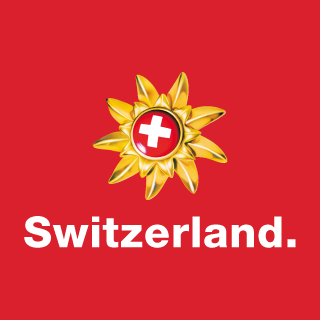
Navigate to myswitzerland.com
Destinations
Your swiss holiday time.
Holiday destinations
- Summer holiday destinations
- Winter sports & ski resorts
- Family destinations
Attractions
- Top attractions
- UNESCO World Heritage sites / biospheres
- Travel by train, bus or boat
- Top museums
- Swiss Parks
- Scenic nature
Experiences
Additional content about subnavigation experiences.
- Family excursions
- Food & Wine
- Group excursions
- Guided tours
Summer & Autumn
- Bicycle & Mountain bike
- Adventure & Sports Summer
- Zoo & animal experiences
- Ski and snowboard
- Cross-country skiing
- Snowshoe and winter hiking
- Tobogganing
- Winter excursions
- Christmas in Switzerland
Cities & culture
- Parks, Gardens and Squares
- Architecture
Experience Tour
- Car, motorcycle - Grand Tour
- Train, bus, boat – Grand Train Tour
- Mountain excursions
Accommodation
- Typically Swiss Hotels
- Wellness & Spa
- Family Hotels
- Bike Hotels
- Boutique Hotels
- Inspiring Meeting Hotels
- Swiss Historic Hotels
- Luxury hotels
- Winter sports hotels
Other types of accommodation
- On the farm
- Bed and Breakfast
- Mountains huts
- Group accommodation
Transport & Stay
- Travel to Switzerland
- Barrier-free travel
- Tickets public transport
- Service & support
- Money and shopping
About Switzerland
- General facts
- Custom and tradition
- History of Switzerland
- The Swiss Art and Culture Scene
- Health Travel
- Sustainability
Weather & Climate
- Climate in Switzerland
- Snow Report
- Water and pool temperatures
- City offers
- Touring offers
- Wellness offers
- Nature and outdoor offers
- Offers for families
Where are you from?
- België (Nederlands)
- Belgique (Français)
- Deutschland
- Netherlands
- Russia (Россия)
- Schweiz (Deutsch)
- Suisse (Français)
- Svizzera (Italiano)
- Switzerland (English)
- United Kingdom
- Canada (English)
- Canada (Français)
- China 中文简体
- China 中文繁体
- Gulf countries العربية
- Japan 日本
- Korea 한국어
- United Arab Emirates
- New Zealand
- International
Language, region and important links
- Slovenština
Service Navigation
- Help & Contact
Packing list for your road trip
Going by car means you can take everything you need, and then some. But don’t ruin your trip by forgetting the essentials. Regardless of whether you prefer to pack two weeks in advance or the evening before, we can help you take care of the basics.
Road trip packing list
Everything for your car.
Your car (or motorcycle) will be your trusted companion on this trip. Check your oil before you leave, fill the tank and windscreen wiper fluid and make sure your motorway sticker is up to date. You should have the following in your car:
- Warning triangle and high-visibility vest
First aid kit
- Vehicle documents and registration and driving licence
- Antibac sanitiser, wet wipes and tissues
Travel guide/road map
Travelling clockwise, the Grand Tour of Switzerland has over 650 signposts to guide you. Our GPS will take you to the most beautiful spots. Our road map keeps you on the right track even if you’re offline, and it has loads of inspiring tips to enliven your trip. Our travel guide has the loveliest spots highlighted in each section, and not only is it useful in planning before you go, it is also indispensable while you’re out on the road.
The Grand Tour has a restaurant to satisfy your every craving ‒ from fine dining establishments boasting GaultMillau points to cosy mountain huts. Still, taking snacks along is always a good idea. The best ones are:
- Dried fruit
- Cereal bars
- Fruit (such as bananas and apples)
- Our snack box
It is very important to stay hydrated – especially during the hot summer months. So be sure to pack several bottles of water. Best of all: Switzerland has lots of outdoor fountains with drinking water, so you can refill your bottle. Make sure to plan enough time for a stop at a pub to slake your thirst.
Swiss army knife
A Swiss army knife is essential for the trip. Use it to slice cheese, whittle sticks for grilling or open a bottle of wine. The handy knife can help you out in (almost) every situation.
Snapping pics is a fun part of travelling. Whether you’re taking photos for Instagram , your loved ones back home or just as a memento, we show you the nicest places to take photos along the Grand Tour of Switzerland. Can you find them all?
Rucksack for day trips
The Grand Tour has the best picnic spots . You can picnic along the shores of a mountain lake, atop a mountain peak or on the highest point of a mountain pass road. All you need to do is spread out your picnic blanket and lunch is served. The Grand Tour Snack Box is filled with regional delicacies. Important: please clean up all your rubbish after your picnic and leave the place just as you found it.
Prepared for any kind of weather
Wind, rain or sun – you’ll need to pack for them all in Switzerland:
- Sunglasses and hat
- Light clothing for hot days and active excursions
- Warm clothing (for trips to the mountains, for example)
Charging cable and power bank
So you always have electricity and can use our GPS and the tips on our website, be sure to pack a charging cable and power bank.
Books and games
For those long evenings, relaxing days by a swimming lake or even in the car, it’s a good idea to take along an interesting read and some fun games.
You never know what might happen. That’s why it’s a good idea to have a first aid kit with you. You should pack:
- Pain medication
- Warm emergency blanket
Sturdy boots
For hiking in the mountains and on trails a pair of hiking boots is indispensable. A pair of comfortable trainers is also advisable for wandering round Swiss towns and cities.
A swimsuit is a must have. If the weather turns bad or after a long drive spas and wellness hotels are just what you need to savour that holiday feeling. On sunny days the Swiss lakes invite you in for a cool dip. In the cities the sparkling rivers and sandy beaches offer up endless hours of fun.
So that you and your passengers remain fresh on your trip, you should pack a few toiletries:
- Toothbrush and toothpaste
- Deodorant, shower gel and shampoo
- Comb or hairbrush
- Wet wipes and tissues
More information
Grand tour of switzerland.
1,600km, 22 lakes, 5 Alpine passes, 13 UNESCO World Heritage sites and 4 linguistic regions – on the Grand Tour of Switzerland it’s all about the journey.
The Grand Tour photo spots
Breath-taking four thousand meter peaks, charming hilly landscapes, mediaeval towns, the roaring Rhine Falls – on the Grand Tour the places of interest line up like a string of pearls. We place the best viewing points along the route on centre stage.

20 Travel Tips for Switzerland to Know Before You Travel
Jackson Groves
Posted on Last updated: October 2, 2023
Categories SWITZERLAND
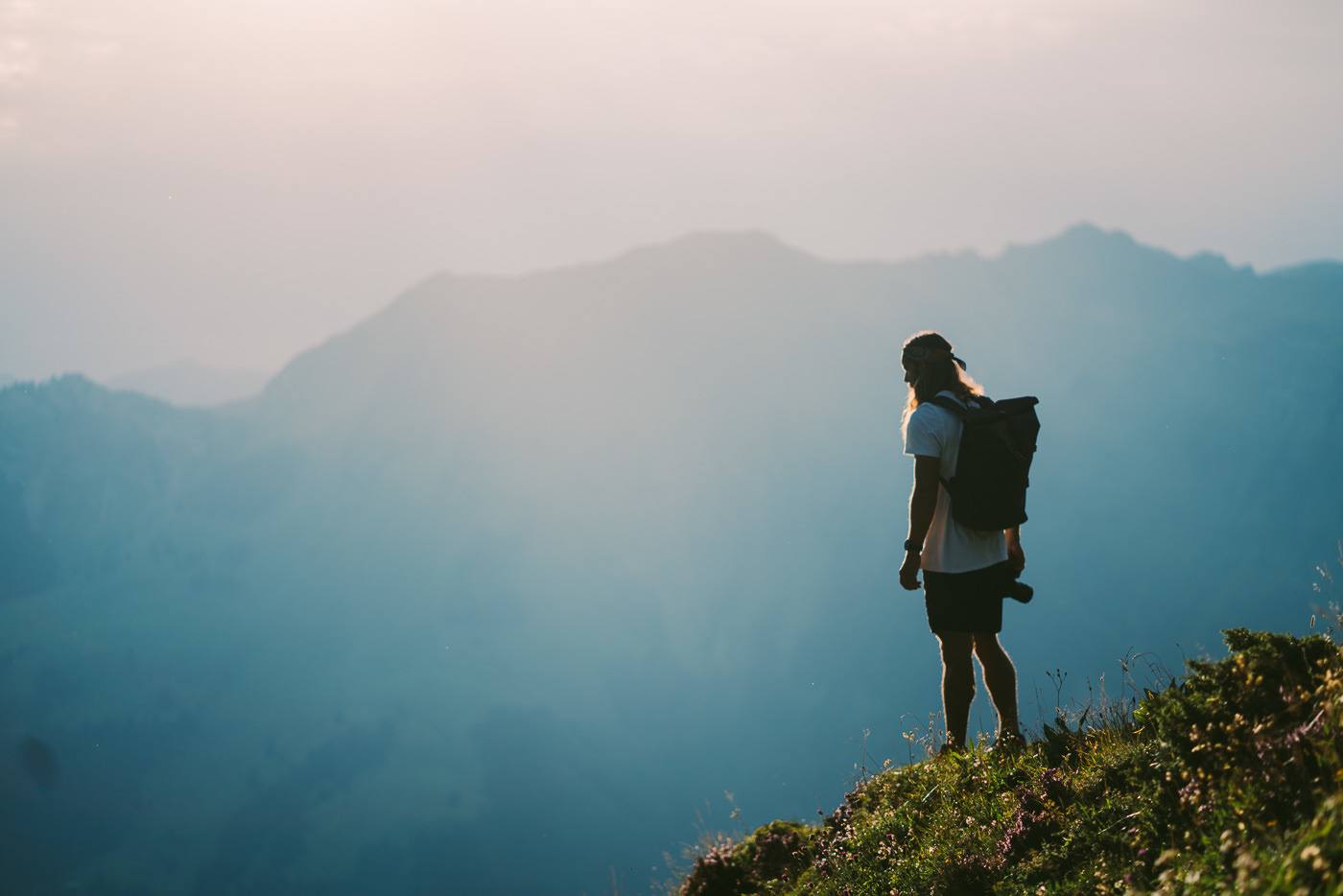
Switzerland is easily one of the most ‘epic’ countries I have visited. You’ll experience countless moments where you are completely lost for words because Switzerland is one of the most scenic countries in the world. However, it is also one of the most expensive places to visit so it takes a bit of planning to figure out the best ways to get around, find places to eat, and affordable accommodation. Hopefully these travel tips for Switzerland will help you have an awesome first experience exploring this amazing country.
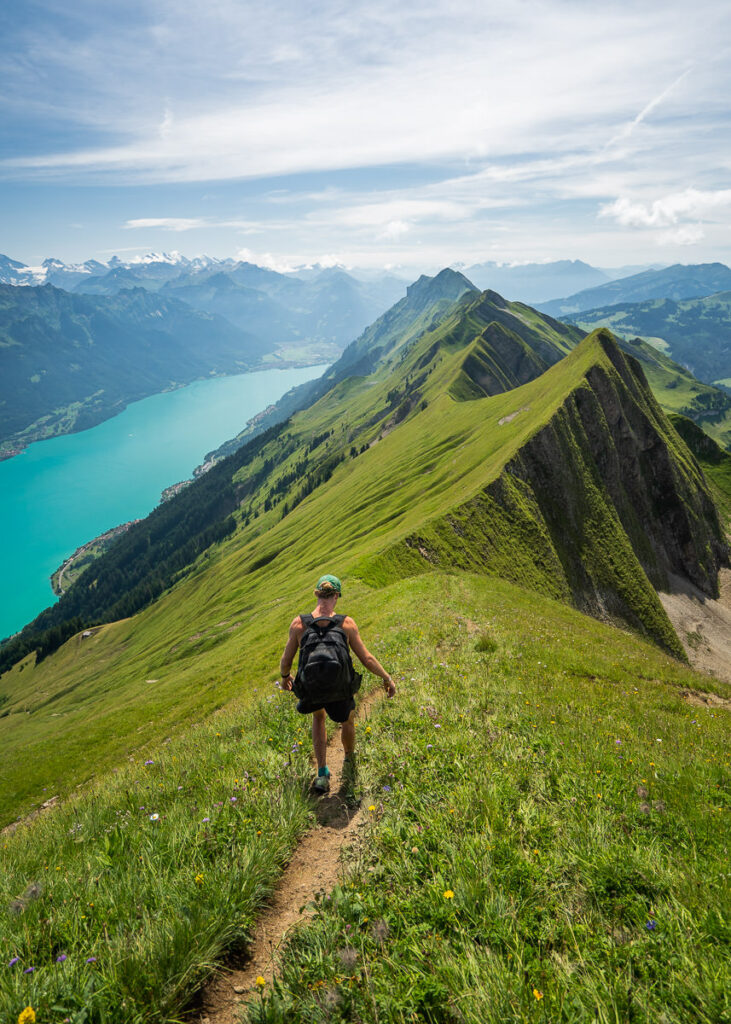
Table of Contents
Helpful Travel Tips for Switzerland
I spent 100 days traveling in Switzerland and in this travel blog post, I will explain my top travel tips for Switzerland. Many of them you simply can’t figure out until you have traveled to Switzerland, so I hope these tips prepare you for certain situations, save you money, keep you safe, and keep you healthy while traveling through Switzerland!
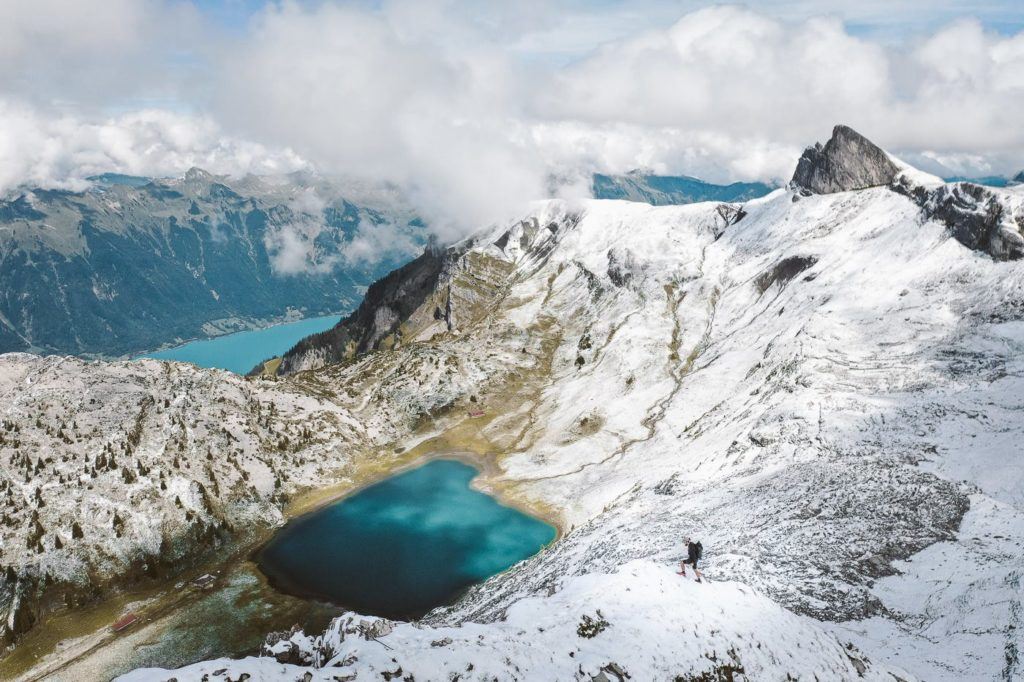
WHO THIS GUIDE IS FOR?
This guide is for everyone, not just those on a budget. I’ve got lots of tips that will help budget backpackers in Switzerland but many of the tips are related to activities, train trips, and food that both budget and luxury travelers will be involved in or encounter during their travel through Switzerland.
Most people in Switzerland are on a budget of some sort due to the high prices throughout the country so lots of the tips in this guide will help you find ways to make the most out of your time in Switzerland while not burning a hole in your wallet.
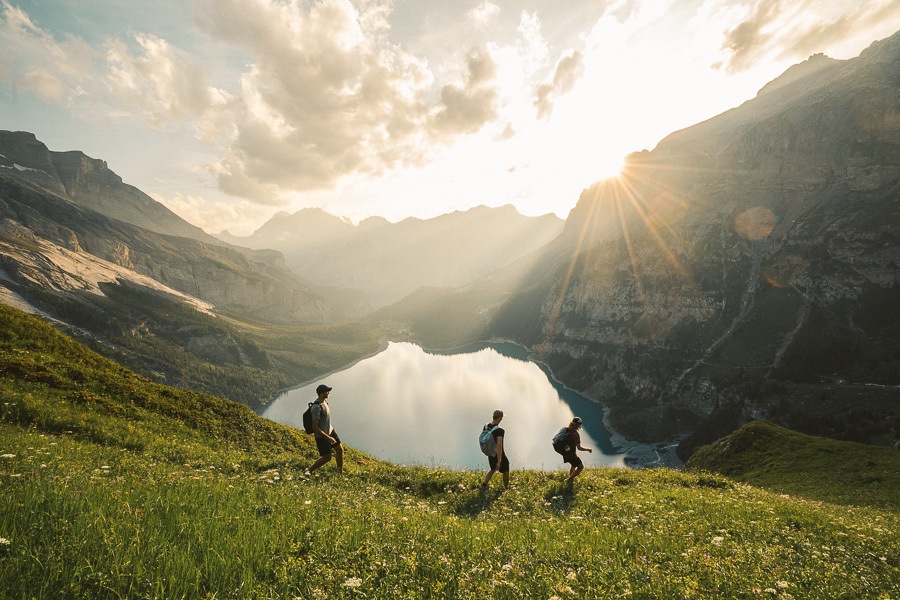
MY 20 TRAVEL TIPS FOR SWITZERLAND
I’ll start off with some basic tips about transport, the best towns to base yourself for hiking, and general costs, and then as we go deeper and deeper into the list, the Switzerland travel tips will get more and more specific and will definitely be things you wouldn’t have thought of.
SWISS TRAVEL PASS or HALF-FARE CARD
OPTION 1: Buy the Swiss Half Fare Card : Switzerland trains, buses, and cable cars are EXPENSIVE! I found the best way to get around cheaply was to buy the Swiss Half-Fare Card before I arrived. It gives you 50% off every regular train, bus, and even many cable cars. It only costs $150 USD but pays itself off in just a few days with many train tickets in Switzerland costing close to $100 alone. If you are staying for more than 5 days, I suggest buying the Swiss Half-Fare Card.
OPTION 2: Buy the Swiss Travel Pass : The second option is to get the Swiss Travel Pass, which gives you unlimited train, bus, and (many) cable car rides but it’s pretty expensive at around $100 USD per day so if you don’t travel each day it isn’t worth it.
OPTION 3: Buy the FLEXI Swiss Travel Pass : The final (BEST) option is to get the FLEXI Swiss Travel Pass, which allows you to buy 8 days’ worth of transit but you can choose the night before if you want to activate the next day. That way you don’t need to travel every day to get your money’s worth, you can just activate the FLEXI Swiss Travel Pass on the days when you are doing sizeable transits. My advice is to book the Swiss Half-Fare Card or the FLEXI Swiss Travel Pass in advance before your trip so it’s ready to go when you arrive.
GET A SWISS TRAVEL PASS!
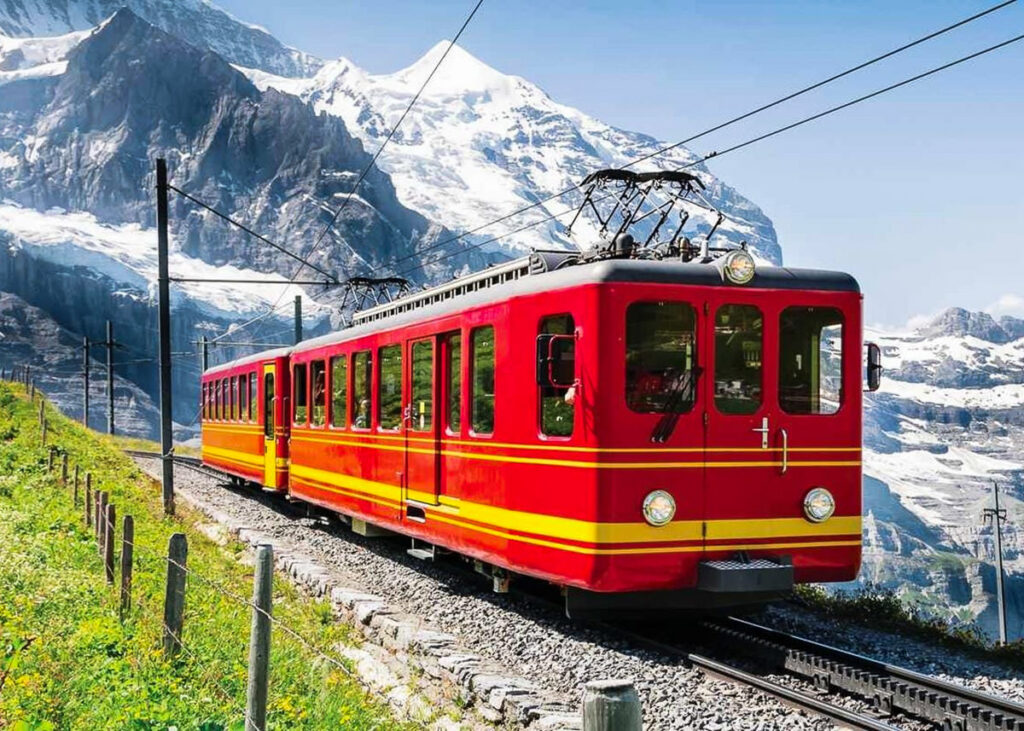
Enjoy UNLIMITED train, boat, and bus rides in Switzerland for up to 15 days. Click to book a flex Swiss Travel Pass or choose the Consecutive Swiss Travel Pass .
The Swiss Travel Pass starts at $260 for 3 days. Click here to check if it’s available on your travel dates.
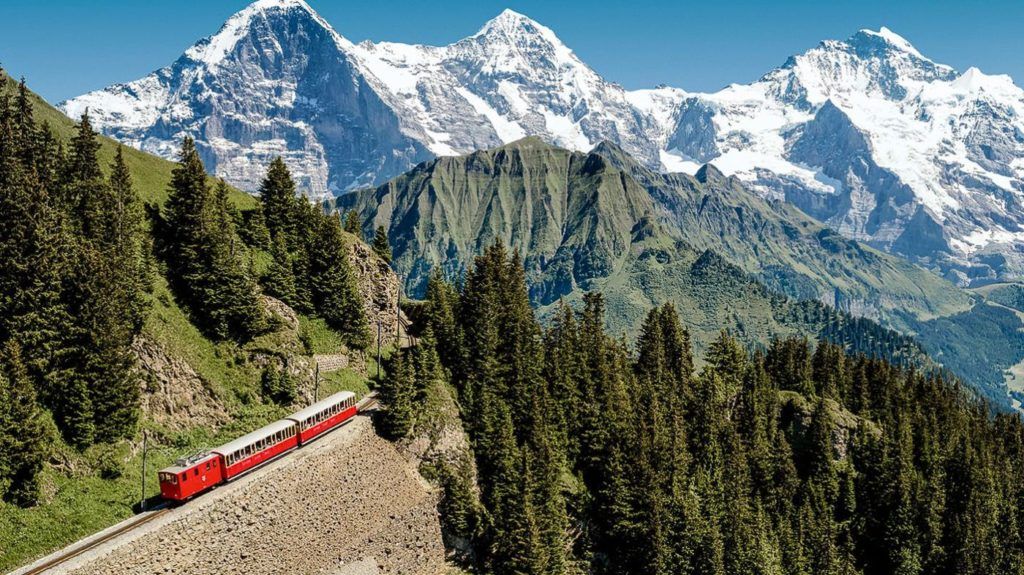
WHAT LANGUAGE WILL YOU NEED TO SPEAK IN SWITZERLAND?
In Switzerland, there are actually four official languages but the main two languages are Swiss-German and French. Depending on which region you are in will determine the languages most locals are speaking.
In the north and the east of Switzerland you can expect to hear mostly Swiss-German and around Geneva and the west you can expect to hear French. Those are the main two but in the south, there are many Italian-speaking regions, such as Lugano. The final official language is Rhaeto-Rumantsch but is spoken by a very small number within Switzerland.
So, what can you expect language-wise? Well, I spoke only a few words of German and no French, Italian, or otherwise. What I found is that there are a surprisingly high number of people in Switzerland who speak very little to no conversational English. However, there were, of course, lots of people who could speak English.
You will find that in touristy areas the prevalence of English increases and usually train conductors, tour operators, ticket booth attendants, and waiters will all know enough English to get you by.
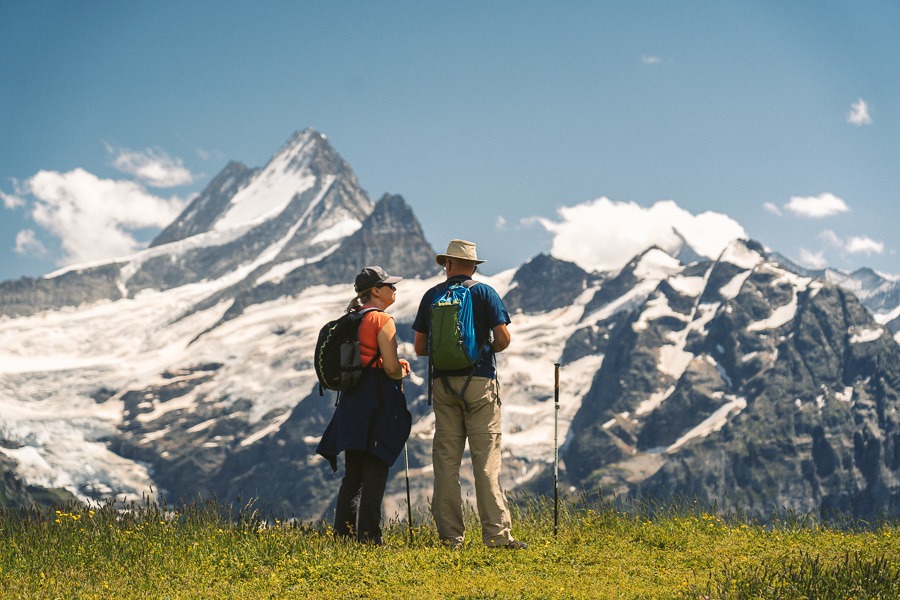
What I will say is you should try and learn a few basic phrases of German and French say you can greet people out on the hiking trails, say thank you and please at a restaurant and ask where the bathroom is. I think it is polite to learn those and any more is up to you but the more the better and locals always appreciate the effort even if your accent is horrible.
Many of the signs are in English or easy to follow, especially out on the hiking trails or at the train stations. The names of places are of course in Swiss-German or French but the directions are clear.

WHERE IS THE BEST PLACE TO BASE IN SWITZERLAND?
This is a question I can’t completely answer without knowing your budget and motives. However, I can make a few broad suggestions based on my 100-day journey around Switzerland.
If you are keen on hiking or at least viewing the mountains. I highly advise you to stay in Interlaken. I’ll go through a few key reasons that make Interlaken the best home base for your adventures.
- Price: Interlaken is relatively cheaper than most other towns. It has luxury resorts and hotels don’t get me wrong but it has more budget options than most towns. For example, in Zurich, the cheapest hostel I could find was $80 USD and in Interlaken, I stayed at a hostel for $40 USD including breakfast, two coffees per day, free locker storage, and $2 washing/drying machines.
- Location: Interlaken is a hub. If you stay in Murren , Wengen, or Lauterbrunnen you are in a great spot but you are very deep in and to get anywhere else becomes a bit of a journey. Especially if you want to go anywhere other than the Jungfrau region you are in for a long-haul trip. I was based in Interlaken for several weeks and was able to catch the train to Grindelwald in under 45 minutes, Lauterbrunnen in under an hour, and also Thun and Brienz in half an hour. You are more central and I would do things like go up to Murren at midday, do the Via Ferrata , and head home to Interlaken.
- Interlaken is quite a scenic town itself with lots to do like the Harder Kulm viewpoint, the epic Hardergrat Trail , the Schynige Platte Hike , and activities like Paragliding over the lake .
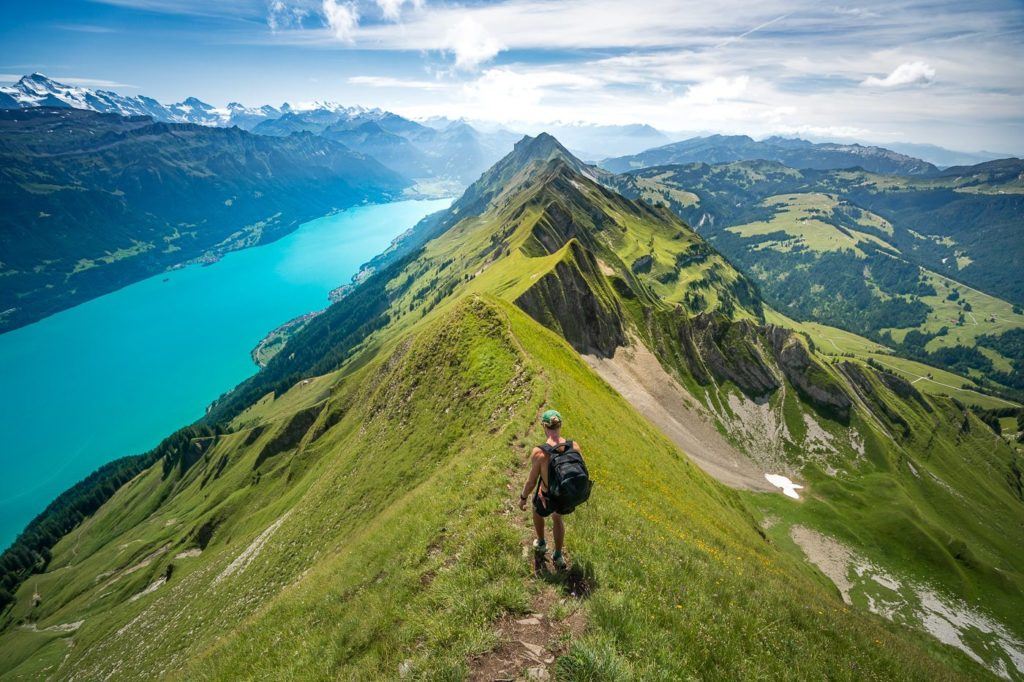
I created a couple of guides to help you investigate the best places to stay in Interlaken depending on your budget. There are a lot of budget hotels and hostels but also some traditional, stunning hotels. Here are the guides I wrote:
- Interlaken Accommodation: WHERE TO STAY IN INTERLAKEN
- Interlaken Budget Accommodation: BEST CHEAP PLACES TO STAY IN INTERLAKEN
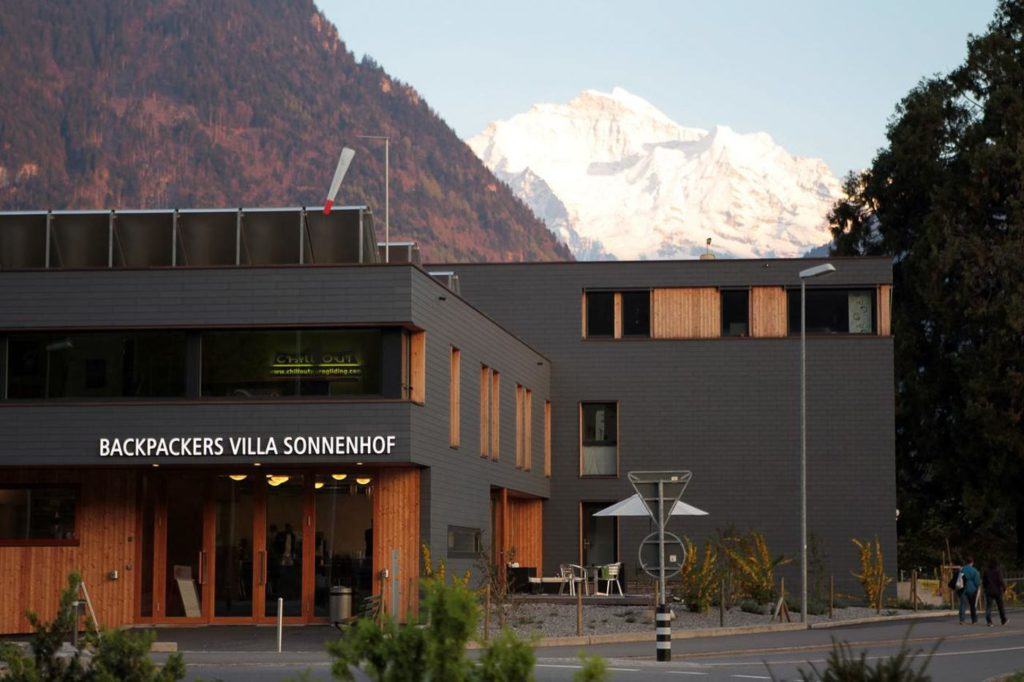
BEST TIME TO VISIT SWITZERLAND
Switzerland is quite multi-dimensional when it comes to weather and the perfect time to visit. Unlike some destinations around the world that have one amazing season that is clearly prime for that location, Switzerland is fantastic in the summer and the winter. The shoulder seasons are still okay for traveling and you can avoid tourists by opting out of the prime weather windows but it is the main winter and summer that are the popular times of the year to travel to Switzerland.
- Best time to visit to avoid crowds (shoulder season) : April – June, September – October
- High Season : July – August
- Low Season : October – March
- Ski Season : December – March
- When are the Seasons : April – June (spring), July – August (summer), September – October (fall), November – March (winter)
- High Season: The high season is July to August when the weather in Switzerland is the warmest it is in the entire year, but you will have to face a lot of tourists, and an over 50% increase in prices.
- Ski Trips: Winter (between December and March) is a low season in most parts of the country, as there will be intense snowstorms. However, this is the best season for those who want to go on ski trips.
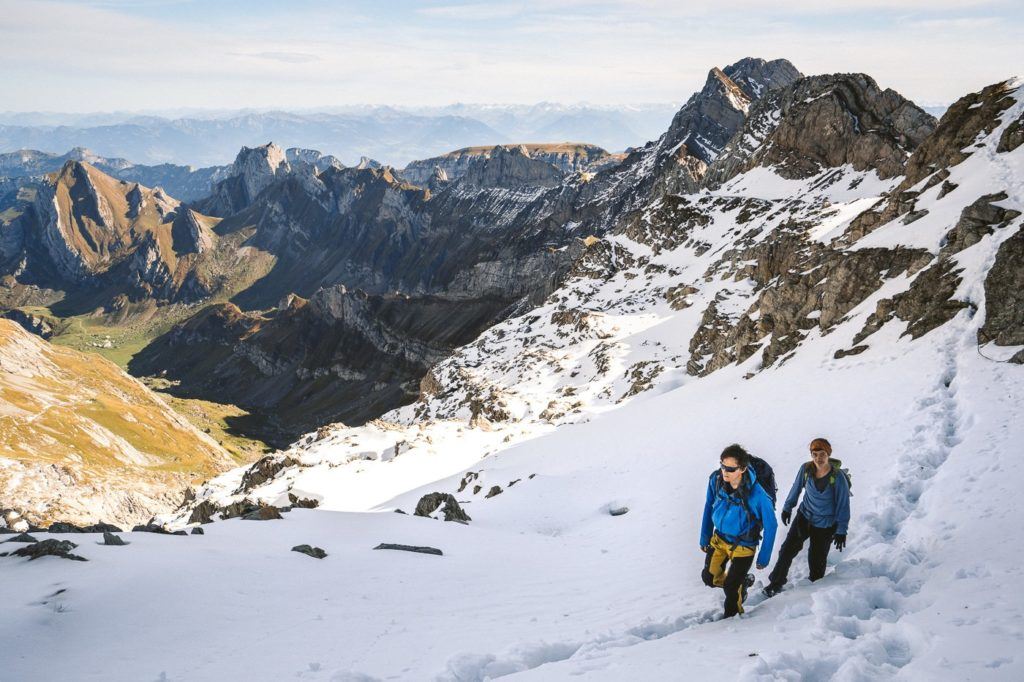
My experience With Seasons in Switzerland
I arrived in Switzerland in July and it was incredibly hot. It was great for hiking and enjoying the alpine lakes. There were big crowds in some places but there are so many hikes in Switzerland so unless you choose the most popular hike you won’t have too many people to fend off.
There were a number of cases though, where things were a bit crowded but it was never a big issue. If you try and go to Jungfraujoch and the massive tourist sites, you will be with hundreds of tourist sites in the peak season of the summer.
The summer was perfect for hiking because as you get above 2000m (which happens frequently in Switzerland), the temperature drops and it was enjoyable to not freeze to death on every trail.
As the months passed and the summer faded, the inevitable happened and I witnessed the first snow of the season. Now we had to check the snow reports and the trail reports to see if hikes were open and in a safe condition. Things became much more serious for hiking and I had to exercise more caution when hiking alone. Eventually, in August many trails and mountain huts started to close to regular hikers, so if you are looking to do hiking and are not on a crazy snow expedition, I would say get all your hiking in by August or you will be a little disappointed if things are closed.

IS SWITZERLAND SAFE?
Switzerland is one of the safest countries in the world. It has a very low crime rate, the people are quite reserved but very friendly and will help if you ask. Never did I feel unsafe and I spoke to a number of solo female travelers who also felt safe out hiking and in the towns.
There was a good vibe at the hostels and things were organized quite well. I can’t really imagine how Switzerland could be safer. There is internet connection throughout the country so you can stay in touch, which is an important safety factor also.
The most unsafe part about Switzerland is that it is so adventurous that many people go a bit far out of their comfort zone. It’s important to remember that what is comfortable for locals who grew up with mountain experience is not necessarily suitable for a city kid who is on their second hiking vacation. Play within your limits especially if alone on a trail.
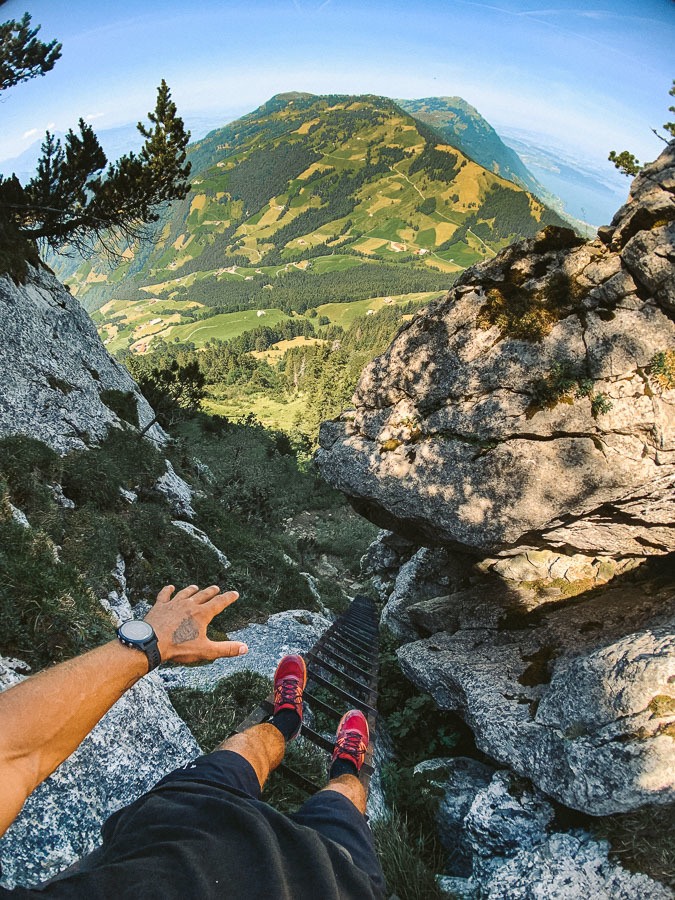
HOW DOES IT WORK HIKING TO MOUNTAIN HUTS
While you are hiking in Switzerland, it is inevitable you will come across some incredible mountain huts. I didn’t know much about the hut culture in Switzerland but once I was in on it, I loved it. Basically, the mountain huts are kind of like mountain cabin hotels. They usually have a restaurant and also a number of dormitory-style rooms.
For average-sized huts, it is common for a family to live up in the hut on the mountain during the summer and hiking season and visitors can book a night or more up at the hut. When they arrive they have dinner and breakfast included in their nightly fee. I stayed overnight at five different huts (which were listed above) and most ranged from about $60 a night to $100 a night per person including breakfast and dinner.
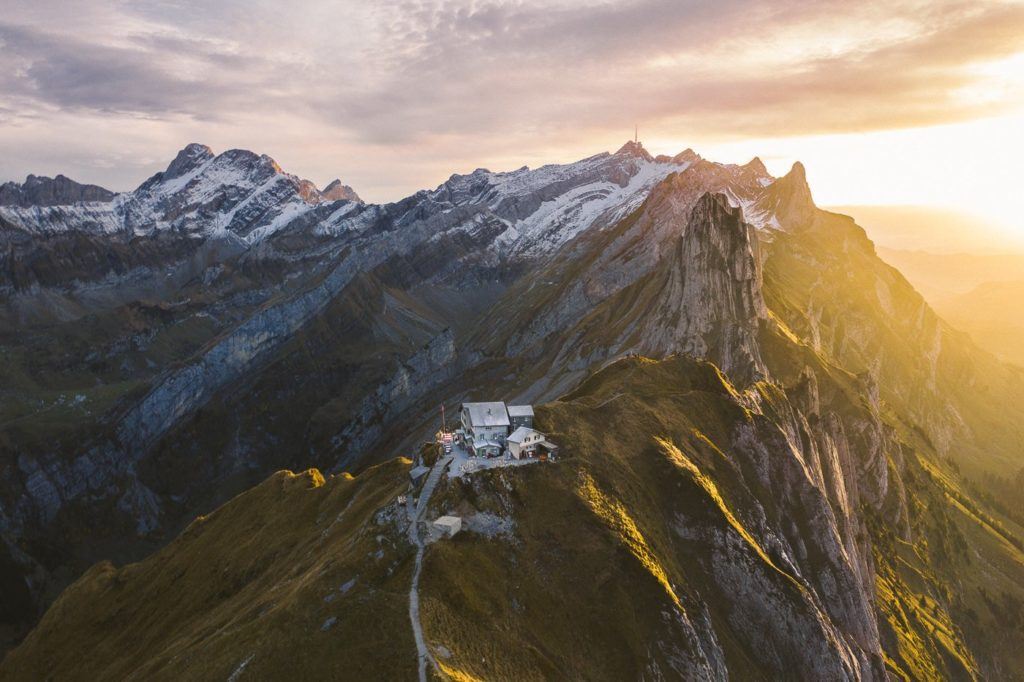
The ‘huts’ are actually pretty fancy and have heating, nice restaurants, balcony, alcohol, games, books, and much more. All you need to bring is a sleeping bag liner and your hiking gear and you are set. You can also shower at most of the huts (usually included in the price also).
I always did a one-night stay so I would hike up, watch the sunset and stay the night. I would then hike at sunrise and explore further on before hiking back down.
Many hikers like to do hut-to-hut mountain hiking, which means you map out several huts that are within hiking distance of each other and you do a multi-day trek where each night you will make it to a new mountain hut on the connecting trails throughout the Swiss Alps. It’s a great way to hike because you don’t need to carry all of your food, heavy camping gear, or warmer clothes for the cold nights outside. You do all your eating at the hut restaurants and carry a few snacks with you and sleep in the comfort of the cabin dormitories. If you are in Switzerland in the summer, I can’t recommend it enough.
You can click on one of the following links to visit my blog post about the mountain huts I visited. I stayed at Gleckstein Hut , Trift Hut , Ebenalp Hut , Baregg Hut and visited many others while passing through on hikes in Switzerland .
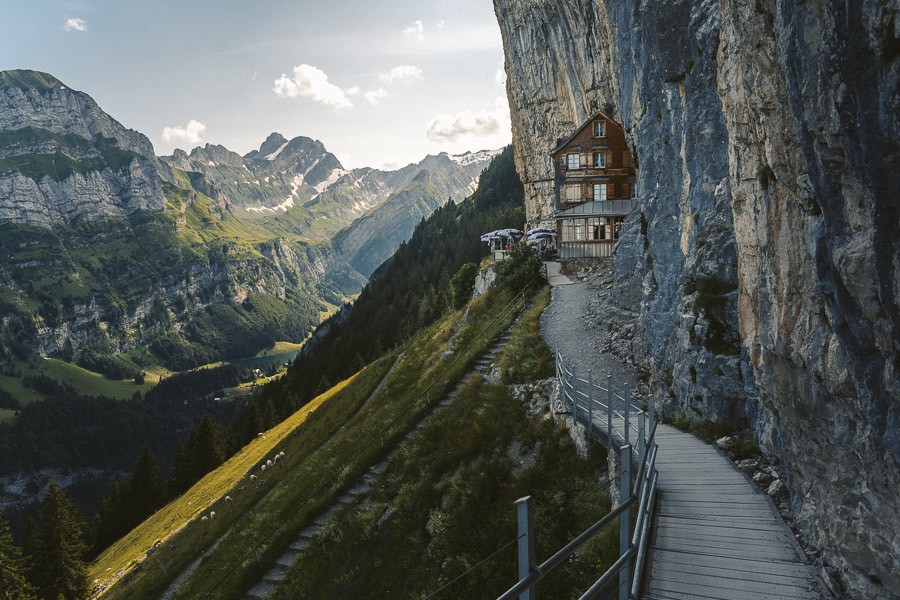
The other key point to remember is that most meals in Switzerland are $20-$40 at least so when you consider you are getting two meals included, the accommodation is really only $30-40 per night, which will be the cheapest accommodation you find in Switzerland but the best view!
If you are planning to stay at a lot of mountain huts you can buy a Swiss Alpine Club (SAC) membership , which also involves a rescue service if you get stuck on the mountain. This membership gives you a discount of usually 40-50% off the regular price of the hut price. It costs about $80 USD for the yearly membership so after three overnight stays you have made your money back and you are supporting the mountain hut owners of Switzerland, who you will see are all really nice families.
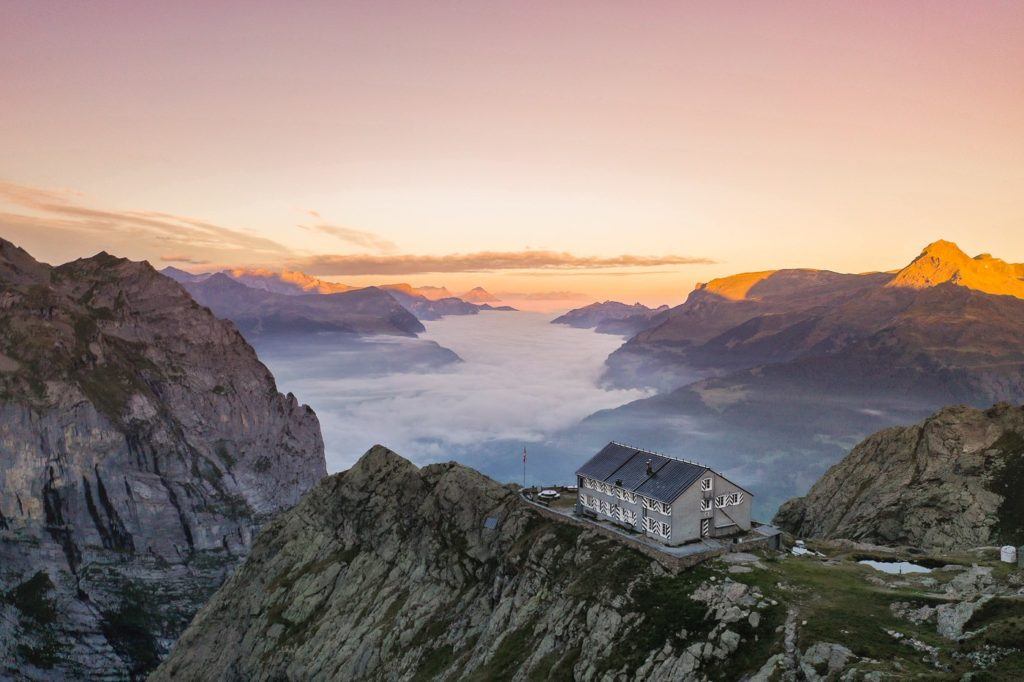
CAN YOU DRINK THE TAP WATER?
The tap water was one of my favorite parts of Switzerland. After traveling through Asia for many years, I was used to the constant battle to find safe drinking water without buying wasteful plastic bottles. In Switzerland, the water is 100% safe to drink from taps in buildings and it even goes one step further.
Most towns and even trails have fountains and taps installed (often very intricate and beautiful fountains) and you can fill your bottle up straight from the fountain. With so many glaciers and alpine regions, there is no shortage of fresh, clean water in Switzerland. I always carry a Hydroflask with me and keep it full all the time so I can stay hydrated and save money on buying drinks.
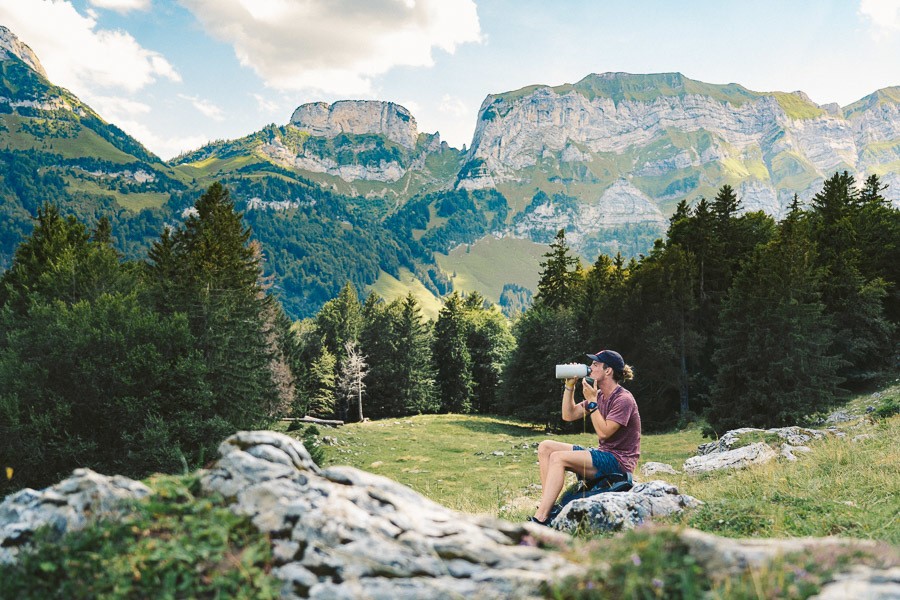
A UNIVERSAL TRAVEL ADAPTOR WILL DO THE JOB
In Switzerland, the adaptor you will need is for TYPE J outlets compared to the rest of Europe that uses Type F. To avoid all the confusion of plugs, it’s best to get a universal adaptor that works for any device in any country outlet. I’ve had one for two years and it wasn’t expensive at all and takes the hassle and stress out of figuring out the outlets and plug types of each country. Importantly it means you don’t need to carry lots of adaptors and plugs for every country, just one that fits them all. I’ll link the one I’ve used for two years here: Universal Travel Adaptor
ESSENTIAL HIKING GEAR FOR SWITZERLAND
Hiking in Switzerland is very different in the summer to the winter, which will obviously make a huge impact on what type of clothes and gear are necessary. However, for this little section on essential gear, I will just point out a few key items that you should have for basic hiking in average conditions. You’ll need hiking boots or trail running shoes, beanies, hiking socks, and more but I’ll write a more detailed post about that another time. This is just a quick round-up of three essentials but for a full rundown of all the hiking gear and camera gear I use you can check out this post: MY TRAVEL PHOTOGRAPHY GEAR: WHAT’S IN MY BACKPACK
- Hiking Poles : Not everyone will use them but the Swiss are religious about them, unlike many Australians or Americans. You will learn to love them too as they take the strain off your knees and quads on both the uphill and the downhill. I used them to power up hills and help as a shock absorber on the way down. You can get them quite cheap but I found that there were two components to my hiking poles that I really liked. They were foldable down to a small size so I can put them in my backpack side pocket and they were the carbon fiber/lightweight style. They are a bit more expensive but I used them a lot and they became a necessity in the end. I’ll link you here to the carbon-fiber LEKI foldable hiking poles that I bought. I purchased them in Switzerland so they were very expensive but you can get them online much cheaper. My Hiking Poles: Leki Micro Vario Carbon Fiber Hiking Poles

- Down Jacket : The next key item to have is a down jacket. Even in the summer when it might be hot at lower altitudes, once you reach the summit it gets that much colder. If it’s a sunrise or a sunset, I always had a lightweight but very warm down jacket with me. I chose one that I could stuff into my backpack when it was too hot but could always afford to carry it size-wise in case it was colder than I expected and I used it too many times to count. I’ll link you here to the Patagonia lightweight down-jacket that I bought online before heading to Switzerland. My Down-Jacket: Patagonia Nano Puff Jacket
- Hiking Gloves : They might seem like a small item but your hands are the first things to go when it gets cold. They don’t have to be amazing gloves but you want something. I chose gloves that still let me operate my camera and phone but had a decent amount of warmth too. Once you start doing sub-zero hikes in Switzerland, you will want a more heavy-duty type of glove. I’ll link here to the gloves I used in Switzerland that let me still operate my camera. My Hiking Gloves: North Face E-tip Gloves

YOU ALWAYS NEED A TICKET
There are many countries around the world where you might be able to get away with little hacks or find ways to cheat the system. In Switzerland, the system is so efficient that you shouldn’t bother. When we found the prices of the train so high, of course, it crossed our mind whether we should risk it and not buy a ticket at all. We still bought the ticket and quickly found out then on most major routes the tickets were checked by the staff who walk up and down the train.
It is very expensive to ride the trains but don’t try and outsmart the system as it is just too efficient. If you get caught on the train without a ticket it is a $99 USD equivalent fine plus the cost of the far you were taking so it’s not worth the risk. Of course, you should have high morals and never even consider this but when you purchase a train ticket for $100+, everyone begins to question their morals!
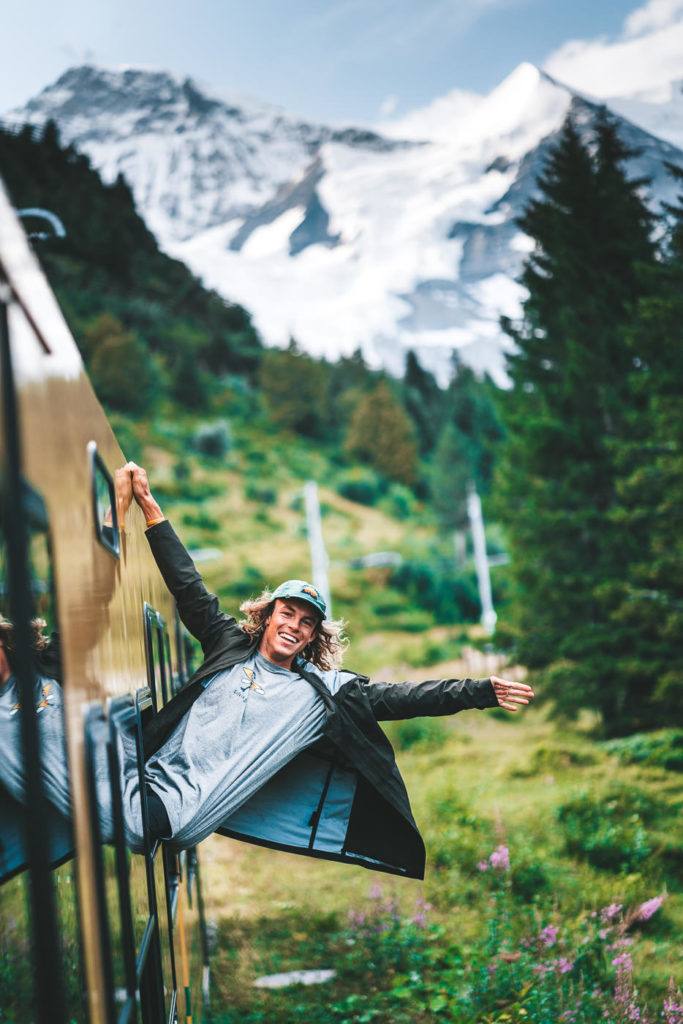
RED AND BLUE TRAIL MARKERS
Red and white markers on the trail mean it is a Swiss walking trail and you won’t need any expertise in climbing. It doesn’t mean it’s easy though as it could be 20 kilometers of hiking trails with 2000m of consistent incline but it won’t be technical so you will still need to look into the hike first to know what you are up against. Blue and white markers will be painted when they are indicating a technical or alpine route. Sometimes they are still quite tame but again, this is a warning sign that it is not going to be a leisurely walk on a trail and you can expect some kind of rock scrambling or climbing to be involved.
Swiss locals have years of experience on the trails so never compare yourself to a local and assume you can do it. I saw some local children on hikes that were far more experienced than me so you are better off comparing yourself to your previous efforts when deciding if you can take a certain route or make a certain climb.

YOU HAVE TO TRY A VIA FERRATA
For those who don’t know what a Via Ferrata is, it’s basically a series of ladders, steps, and rock climbing that leads you up a wall. You are wearing a harness and clip into a strong wire at the start of the Via Ferrata. From that point, you are always clipped in with at least one clip.
Every 10 steps or so, you reach a new section of wire and you unclip one Carabiner clip from the old section and attach it to the new section. Once it is firmly secured, you unclip the second clip from the old section and also add it to the new section so you now have two Carabiner clips in the new section and you move another ten steps.
I had never heard of it before Switzerland but it fast became one of my favorite activities. I did four Via Ferrata courses across Switzerland and they were definitely a highlight of my trip.
You can click any of the links for the places I did a Via Ferrata in so you can check out those specific blogs. My Favorite Via Ferrata experiences were: Murren to Gimmelwald Via Ferrata , Furenalp Via Ferrata , Rotstock Via Ferrata , and Pinut Via Ferrata .
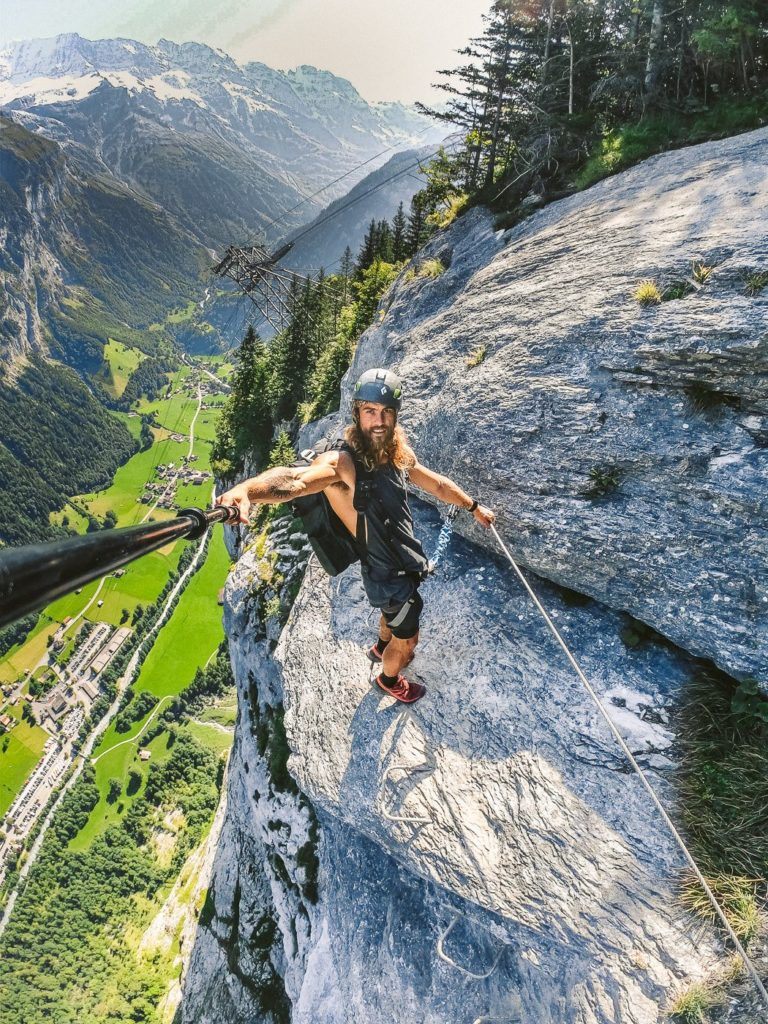
CHECK THE SUMMIT CONDITIONS BEFORE YOU HIKE
Many trails and summits in Switzerland have a webcam at the top. This isn’t to ruin the surprise of the view for yourself but to check the weather. Remember in some cases you may be at accommodation several thousand meters below the summit you are hiking up so there can be a big difference and you may want to check that there isn’t a huge layer of fog and maybe wait for a more appropriate day.
I used the webcams as a guide but sometimes the weather can change quickly. Simply search webcam+name of hike and you will find if there is one. One site that has many of them is Bergfex , which I used regularly.
If you have multiple days to plan your activities, why not give yourself the best shot of not getting rained on or the greatest opportunity to ‘get lucky’ with a beautiful sunrise or sunset? Once you start planning by the weather forecast, you will realize that luck plays a smaller part than you think. I only found out about the Switzerland travel tip after a few weeks in the country but then used it to plan my hikes for certain days when I could get the best weather and photos.
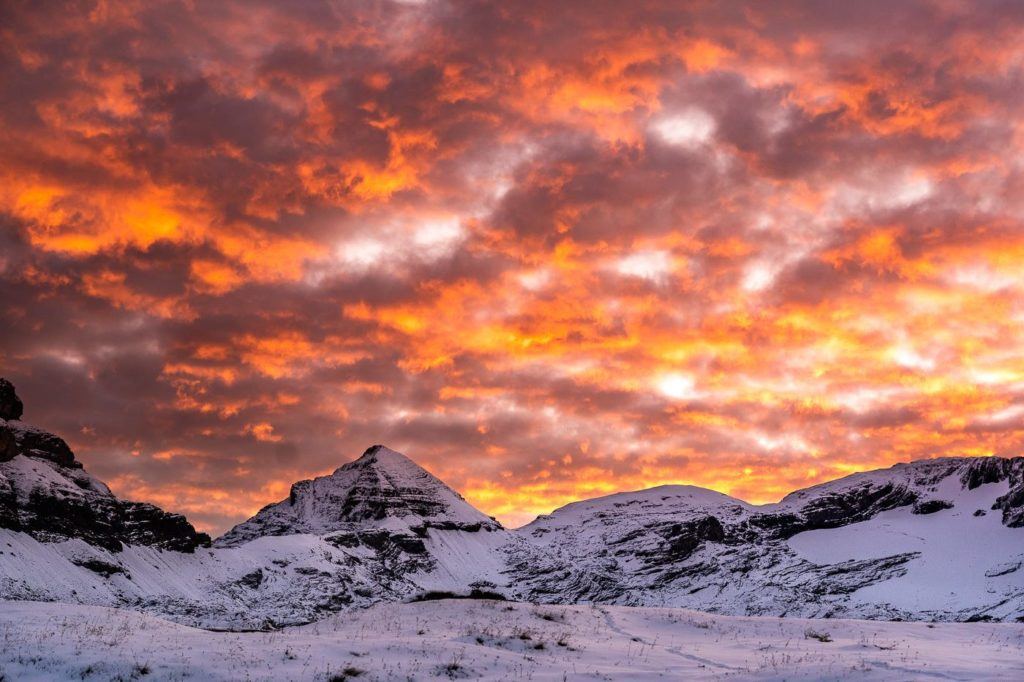
FREE OUTDOOR GYMS IN SWITZERLAND
Switzerland is one of the most expensive countries in the world so you would expect working out to cost you an arm and a leg also. However, we found out that there are lots of outdoor gym courses hidden in the forests of Switzerland. It’s a bit strange but pretty cool when you see the locals actually using them.
Basically, there’s an app and a website called Zurich Vita Parcours and you can just search your location and find the nearby outdoor gyms. They are often set up at several stations in a little forest course so you have to walk or jog between them. Josh and I found lots throughout our trip and they were really well equipped and kept us in shape. This is one of my top tips for traveling in Switzerland, especially if you are there for an extended period of time
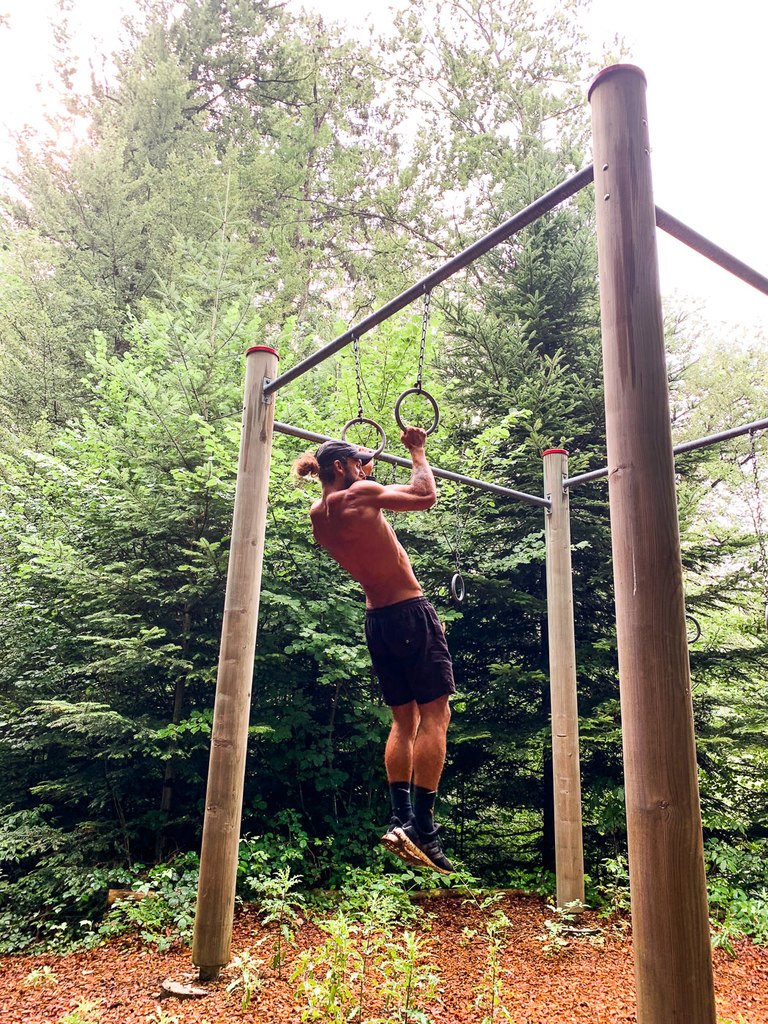
SAC HIKING SCALE -DIFFICULTY RATING GUIDE
Switzerland has a SAC difficulty scale, which labels hikes with a technical score such as T2 or T5 etc. All of the hikes in this blog post are T4 with a few T5 exceptions. I have included the full table/difficulty scale below so you can see what level suits you and the explanation of each level.
Below you can see the Swiss Alpine Club (SAC) difficulty rating scale I mentioned earlier in the article. Each level from T1 to T6 is explained in detail so you can understand what to expect when you see that terminology during your time in Switzerland.
- T1: Hiking – Well-developed and marked paths, mostly flat or slightly inclined, suitable for walking in trainers, navigation without a map possible.
- T2: Mountain hiking – Continuous route marking, some steep sections with a risk of falling, trekking shoes recommended, basic navigation skills required.
- T3: Challenging mountain hiking – Footpath available, partially exposed areas with ropes or chains, steep terrain and danger of falling, good trekking shoes and average navigation skills needed.
- T4: Alpine walking – No guaranteed path, sometimes requires the use of hands, exposed with various terrains including grass heaps, rocky slopes, and snow-covered areas, stable trekking shoes, terrain assessment, and good navigation skills necessary.
- T5: Challenging Alpine walking – Often without a path, includes simple climbing sections, exposed and challenging terrain with steep slopes and snow-covered areas, requires mountaineering boots, excellent navigation skills, proven alpine experience, and familiarity with alpine equipment.
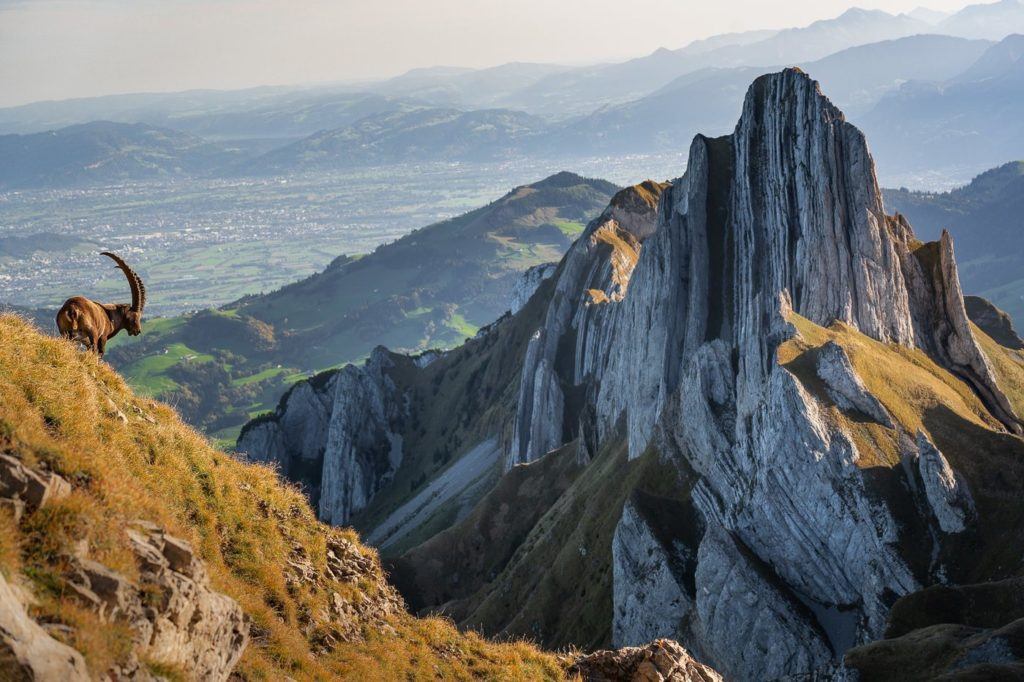
MAPS IN SWITZERLAND
used Google Maps for getting around Switzerland and planning my train transits, which is important to see when the last train is, which connection you need to make, and what the quickest route is. You can also use the SBB app, which is even more accurate than Google Maps but I still prefer Google Maps as it includes any walking or a more broad scope of getting around. The SBB app is the official transport app of Switzerland and you can use it to get cheap, non-peak-time train tickets and it has all of the scheduling and official information about transit in Switzerland.
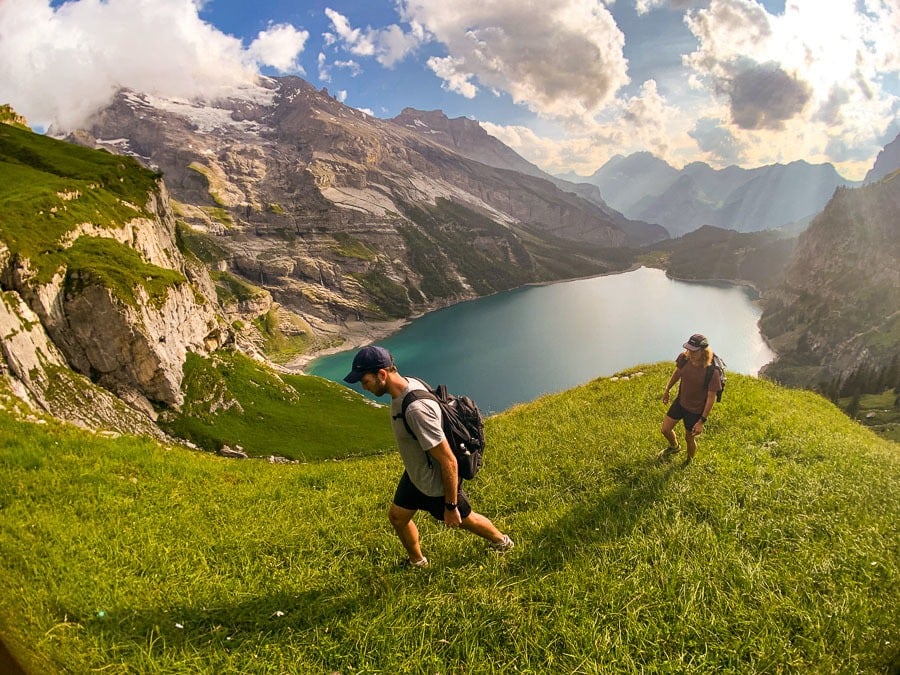
START SMALL AND EASE YOUR WAY INTO IT
If you are a city dweller or into moderate outdoor activity only, this applies to you. However, even if you are quite athletic you should still listen up. Switzerland is not your average adventure. A tough hike from where I’m from in South Australia is 400m of incline and 10km return. In Switzerland that might be considered a warm-up.
This is a country that thrives in the mountains so make sure you don’t bite off more than you can chew on your first few trails. Pick a couple of hikes that are good for beginners. Don’t let your ego lead you astray thinking you are well above a beginner hike because a Swiss beginner hike is relative to a regular or tough hike in other parts of the world.
Try and stick to hikes under 10km in distance and with no more than 600m of incline for your first couple. If you are finding them too easy then start looking at 1000m+ vertical hikes and longer distances or multi-day hikes.
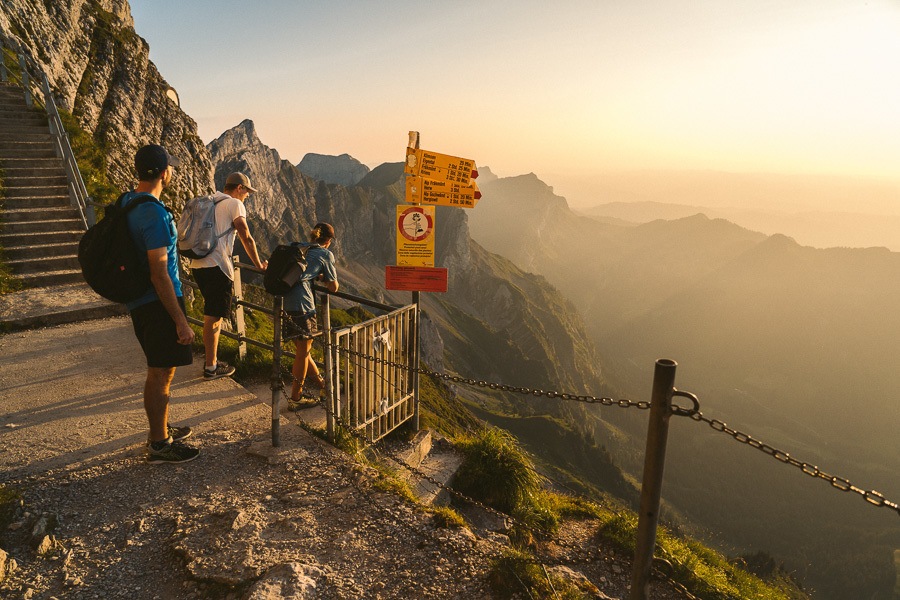
CABLE CARS IN SWITZERLAND: WHAT YOU NEED TO KNOW
The cable cars in Switzerland are great. If it’s a big hike, you can either catch one up to the summit and hike down, or hike up and catch the cable car down. If you aren’t interested in hiking just catch one up and down. It makes the mountains accessible to all types of hiking and adventure abilities.
I think this is one of the top things to know before traveling to Switzerland so that you understand you don’t need to be an expert hiker to enjoy the awesome views.
Many cable cars are not covered by the Swiss Half-Fare Pass or the Swiss Travel Pass or some may give you a small discount. I found this a bit strange when the Swiss Travel Pass is more than $100 a day and it still didn’t include all cable cars but it’s because many cable cars are privately owned and run and not part of the Swiss transport system like the trains and buses.
Cable cars can range from $8 to $60 depending on the journey with some of them taking you several kilometers. It can add up quickly and you can save yourself a lot by hiking down from summits.
It’s important to note that the cable cars often stop running well before sunset and not early enough for sunrise. This means if you want to see the golden hour, you will need to get your hiking boots on and your head torch ready. We did this many times and it was always worth it but always a pretty wild adventure in the dark. Make sure you check the timetable of the cable car so you know when the last ride down is to be sure you are safe.

SUNRISE & SUNSET SPECIAL CABLE CARS
I did say above that the cable cars don’t run during sunset and sunrise most commonly. However, there are a few special services that happen several times a month or on special occasions that specifically cater to those who want to watch the sunset or sunrise at the summit.
I was lucky enough to hear about two of these services and made the most of one while the other was too expensive. There is a sunrise train to the Riffelsee in Zermatt . Here you can see the reflection of the Matterhorn in the lake at sunrise. That ticket cost $100 USD and included breakfast at the top of the Gornergrat . I thought that was a bit much and hiked up by myself.
The second was the ‘late’ cable car at Mount Niesen near Interlaken . At Mount Niesen, there is a beautiful restaurant, and several times a month in the summer they run cable cars all the way until 10 pm so that diners can enjoy the sunset. There is no massive fee like at the Riffelsee Rail in Zermatt, the regular Niesen cable car just runs later so it isn’t expensive.
I hiked up, watched the sunset, and then caught the cable car down at 9 pm after enjoying soup at the restaurant after sunset. Definitely ask around and try and plan these into your trip because sunrise or sunset at a summit in Switzerland is worth the planning and effort. This is a Switzerland travel trip I wish I had heard about earlier in my three-month stay!
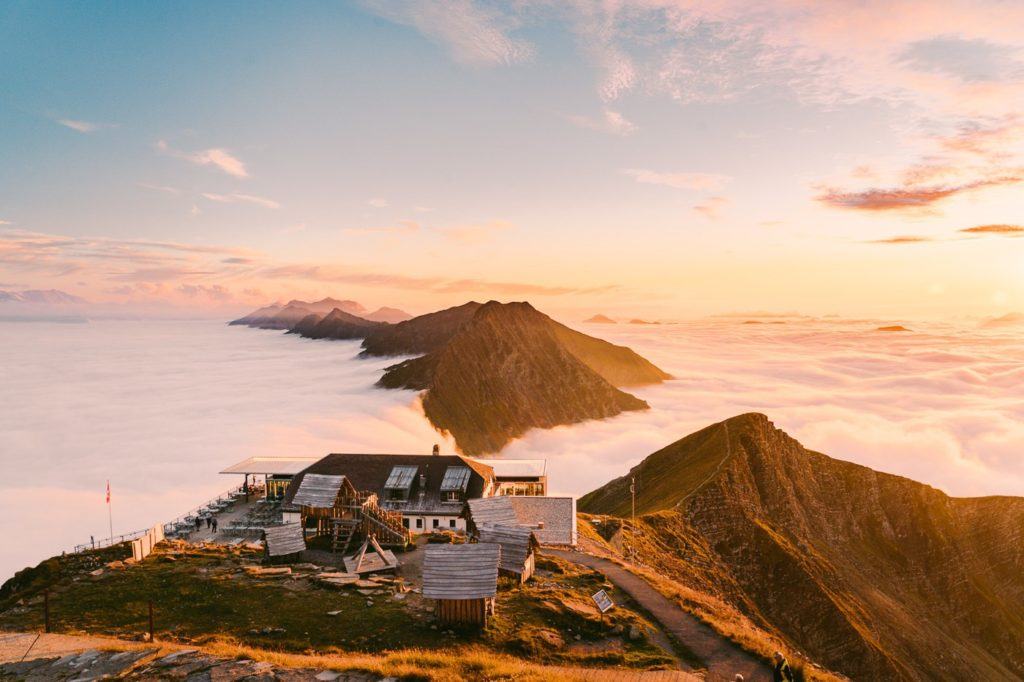
THE BEST VALUE FOOD IN SWITZERLAND
I’ve established by now that Switzerland is very expensive so, of course, the food is right up there with things you probably can’t afford while on your Swiss tour. Meals can cost upwards of $30 and eating at restaurants just isn’t an option for many travelers who frequent the grocery store and smaller cafes.
However, if you don’t find yourself at a restaurant or mountain hut go for the soup and ask for extra bread. Here are a few reasons why soup is always the best option:
- The soups throughout Switzerland are amazing and they are a bit of a specialty with a unique recipe at every mountain hut or cute restaurant.
- Soup is usually half the price of any meal but when the free side of the bread is added in, it’s usually just as filling.
- It will warm you up on a chilly adventure.
- You can usually ask for an extra bit of bread and for just $8-12 you have filled yourself up instead of a $25+ pasta or regular meal.
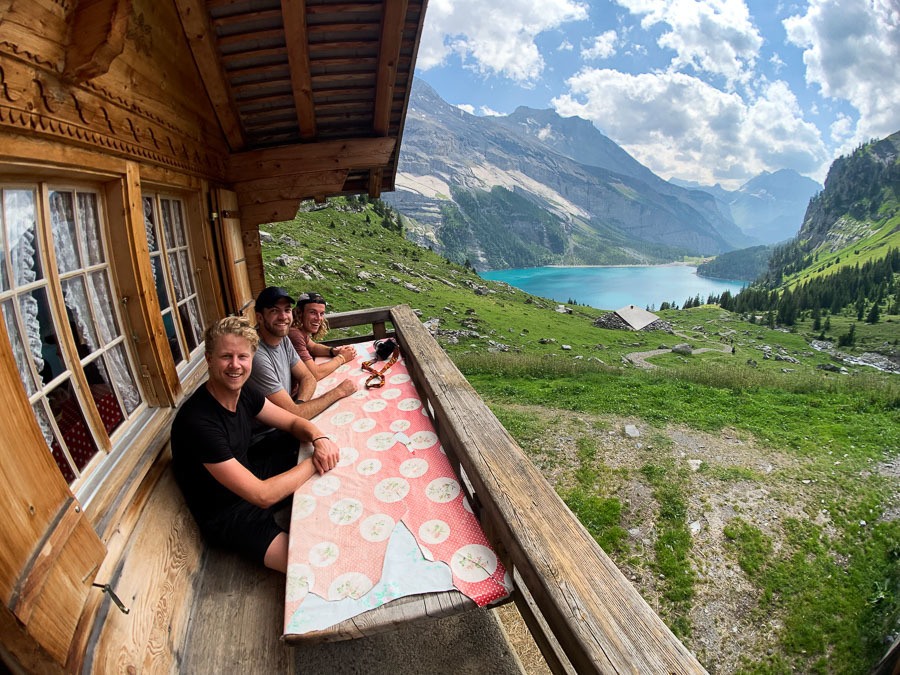
Those are my top Switzerland Travel Tips and I hope they help you have a smooth trip through Switzerland. I’m sure you’ll learn lots more helpful travel hacks and Swiss travel tips as you go so do let me know in the comments if you think there are any more tips that I should add to this list!
MY SWITZERLAND HIKING GUIDES
I spent 100 days hiking in Switzerland and created a guide for different regions around the country. You can click on one of my Switzerland hiking guides below to help you plan your trip.
- The Complete Guide: 50 AWESOME HIKES IN IN SWITZERLAND
- The Via Ferrata Guide: 4 EPIC SWITZERLAND VIA FERRATA COURSES
- Lauterbrunnen Guide: 10 AWESOME HIKES NEAR LAUTERBRUNNEN
- Interlaken Guide: 15 AWESOME HIKES IN INTERLAKEN
- Grindelwald Guide: 12 AWESOME HIKES NEAR GRINDELWALD :
- Mürren Guide: 7 AWESOME HIKES IN MURREN
- Appenzell Guide: 9 AWESOME HIKES NEAR APPENZELL
- Chur Guide: 7 AWESOME HIKES NEAR CHUR
MY SWITZERLAND TRAVEL TIPS
- For Backpackers: SWITZERLAND BUDGET BACKPACKING GUIDE
- Travel Tips: 20 THINGS TO KNOW BEFORE VISITING SWITZERLAND
- Transport Tips: RENTING AND DRIVING A CAR IN SWITZERLAND
- Accommodation Guide: 30 BEST PLACES TO STAY IN SWITZERLAND
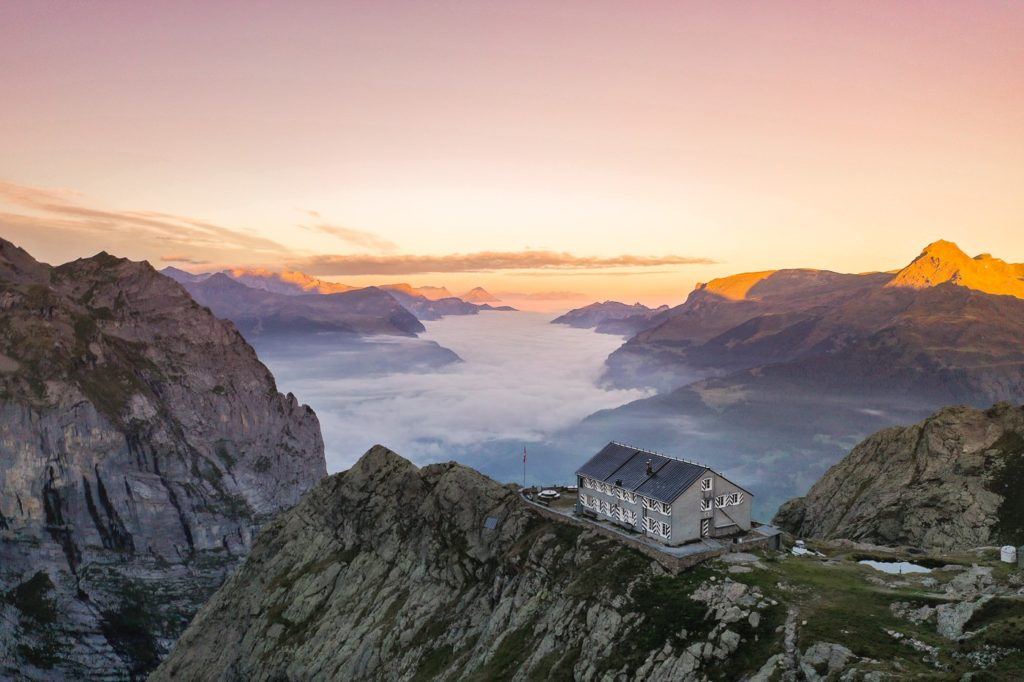
William Henry
Tuesday 18th of July 2023
Thank you so much for lv bunny cream varsity jacket sharing such a great and knowledgeable blog. Thanks!
Wednesday 22nd of February 2023
Love all the details you provide like technical epertise needed/optional routes, etc. Also love the pictures. All of this is so helpful in planning our upcoming trip.
Sunday 8th of May 2022
Thanks for this detailed review. I would also add that it is also important to have a vaccination now or a covid test. Websites like https://personichealthcare.com/ can help you get it done quickly. This is essential for a safe and easy trip to Switzerland
Saturday 16th of October 2021
Thanks for the armchair travel experience to one of my favourite countries during this time of limited travel. An important thing to know is that many gondolas and funiculars can be closed for maintenance a couple of times a year. Usually this happens after each high season. Of course being Swiss, they will have that information posted well in advance so you can plan around it. Here is a website that lists some of the most popular oneshttps://holidaystoswitzerland.com/cable-car-and-funicular-closures-winter/ When I went hiking in Switzerland and was passing through one of the more main train stations, I would stop at a Migros Take-Away and grab one of their delicious sandwiches to eat on my hike. Or pop into a mini-sized Migros or Coop grocery stores conveniently located in the train stations and purchase my trail meal there (Swiss chocolate anyone?)
Sunday 29th of August 2021
I bought a Lonely Planet guide and, given that hiking is a primary activity in Switzerland, was shocked to find that the info they had was paltry. I ran across your blog, which is an absolute goldmine and the best info I found scanning the internet today. I returned my Lonely Planet guide.
I'm planning to go in October, but worried about paths not being open. I'm fine with day hikes since it sounds like huts won't be open, but you mentioned trails might be closed too? Just because of snow or more officially? What are your thoughts on going in the first week of October? Am I better off just waiting for another time of year?
While every year the weather changes, I was in Switzerland til October 25 on my visit. There may be some routes closed but the first few weeks of October should have a decent number open. It depends on when the first snowfall is in that particular region. Many of the lower elevation trails may well be open.
Travelfornoobs
Printable Packing List For Switzerland
Switzerland packing list – all the things you should not forget, what to take in your bag for switzerland.
You’ve booked your plane ticket and the time of departure is fast approaching? After the joys of such a decision, comes the question of knowing what to put in your suitcase to go to Switzerland. No need to panic, we have prepared a very complete list of the essential things to bring to make sure you don’t miss anything once you are there.
In order to leave no room for unforeseen events, it’s of course preferable to go through this list a few days before leaving rather than the day before departure, as you might miss some items.
Take the time to read and download it in order to identify the things that you absolutely must pack and that you might miss and that could make you lose time and money if you forget them.
You will also need to think about packing according to the type of accommodation you will be staying in, the different modes of transportation you will use during your trip, the climate and the season, as well as the activities you plan to do.
In order to help you prepare your suitcase, this checklist of the essential things to bring in Switzerland gathers several categories: clothes, accessories, various objects… It will allow you to have a concrete vision of a typical suitcase for Switzerland.
An advice, think of keeping some space in your luggage if you wish to bring back souvenirs or to make some clothing shopping on the spot.
Thanks to this travel list, preparing your bag for Switzerland will be a real child’s play and you will just have to enjoy your adventure!
Note : This article contains affiliate links to Amazon.
- Important hings to do before you go
- Essential documents
- Transport essentials
- Backpack & luggage
- Clothing and shoes
- Hygiene & Toiletries
- Photo, Video & High Tech
- Useful accessories
- Medication and first aid kit
- Activities and Useful Links (+ Printable checklist PDF)
1/ Important things to do before you go
Prepare your travel itinerary Apply for a visa (if necessary) Make your vaccinations (if necessary) Check-up at the doctor / dentist Take out a travel insurance Photocopy or scan important documents (passport) Write down e-mail and useful phone numbers in your address book Warn your bank about your trip abroad (if necessary) Book accomodation for your first night ( Do it now before everything is fully booked! Check the best hotels on Booking ) Download offline applications and maps for Maps.me Download movies offline Prepare your favorite music playlist Turn off or turn down the heat of your house Empty garbage cans Water the plants Give a copy of your house/car keys to a family member or friend Close doors and windows
2/ Essential documents
Even before you buy your plane ticket, remember to check the validity of your passport : it must be valid for at least six months after your return date (for some countries) and have a blank page. Another tip: send your important documents to a secondary email in case you lose them.
Passport ID card Plane or train ticket (have a paper copy just in case) Reservation documents (e-ticket, train ticket, hotel reservation) Visa (if necessary) International driver’s license, if you wish to rent a car Health insurance card Travel insurance Credit card Cash Useful numbers in case of emergency Itinerary and address of your accommodation (hotel / AirBnB / camping) Vaccination certificate Diving license, sailing license, etc. Some business cards with your contact information, email, blog, website
3/ Transport essentials
The little things to have with you at all times during the flight or the trip by train or bus:
Phone and charger Book / Magazine / Kindle / Travel Guide MP3 player Chewing gum Pen + notepad Travel pillow ( my favorite ) Sleep mask ( my favorite ) Earplugs Snacks / sandwich Small water bottle Nasal ointment for dry nose Sunglasses Glasses case Watch Hand sanitizer Disposable face mask Tissues Motion sickness medication
4/ Backpack & luggage
Waterproof dry bag ( my favorite ) Handbag Travel laundry bag ( my favorite ) Carry-on suitcase ( my favorite ) Travel bag ( my favorite ) Luggage tag ( my favorite ) Travel Packing Organizers ( my favorite ) Rain cover for backpack ( my favorite ) Zippered carry-on bag Shoe bag ( my favorite ) Fanny pack Lightweight foldable backpack ( my favorite )
5/ Clothing and shoes
Socks Underwear (panties, thongs, bras, briefs, boxers…) Tank tops Skirt ♀ Dress ♀ Pajamas T-shirts Long sleeve shirt ( for her , for him ) Short sleeve shirt ( for her , for him ) Polo shirt ( for her , for him ) Sweatshirt / pullover ( for her , for him ) Jeans Lightweight pants ( for her , for him ) Money belt ( my favorite ) Shorts Jogging suit Jacket / coat K-way ( for her , for him ) Windbreaker ( for her , for him ) Hat / cap / beanie Scarf / bandana Swimsuit Buff scarf ( my favorite )
For shoes, you will have to choose according to the activities you plan to do:
Comfortable walking shoes Shoes for going out (restaurants, bars, clubs…) Flip-flops (for the beach, showers…) ( for her , for him ) Hiking shoes ( for her , for him ) Sandals ( for her , for him ) Water shoes for walking in water (beaches, waterfalls, rivers…) ( for her , for him ) Light trekking shoes ( for her , for him ) Crocs
6/ Hygiene & Toiletries
Microfiber towel ( my favorite ) Toilet bag Portable Travel Bottles ( my favorite ) Toothbrush & toothpaste Dental floss Soap Shampoo Facial cleanser Nail clippers Cotton buds (biodegradable) Tweezers Make-up Deodorant Comb / Hairbrush Razor & shaving foam ♂ Biodegradable wipes ( my favorite ) Toilet paper roll Perfume Makeup ♀ Contact Lenses Contact lens product Pocket mirror
7/ Photo, Video & High Tech
For photographers and videographers:
Camera Lens Memory card Polarizing filters ND filter Extra battery Charger + cable + plug adapter Cleaning kit External hard drive USB key Stabilizer Drone ( my favorite ) Waterproof phone case Flash Solar charger ( my favorite ) Gopro ( my favorite ) Waterproof case Selfie Pole External battery / Powerbank ( my favorite )
Don’t forget:
Portable speaker Ipad / Tablet Laptop PC External battery Headphones or noise cancelling headphones ( my favorite )
Useful apps to download before you go to Switzerland:
AirBnB Booking Couchsurfing Flush – Public Toilet Finder (Useful for finding toilets!) Google Maps Google Translator Google Trips Lonely Planet Guide LoungeBuddy Maps.me Meetup Tripadvisor Uber Whatsapp XE Currency
8/ Useful accessories
The accessories you will take in your bag for Switzerland will depend on your travel style:
TSA lock ( my favorite ) Headlamp ( my favorite ) Sleeping bag ( my favorite ) Sheets ( my favorite ) Swiss Army knife (not in the hand luggage!) ( my favorite ) Travel clothesline ( my favorite ) Powdered or liquid detergent Clothes pegs Spork ( my favorite ) Ziploc bags Lighter Folding umbrella ( my favorite ) Toilet paper Mosquito repellent ( my favorite ) Mosquito net ( my favorite ) Sunscreen cream Aloe vera gel Waterproof pouch for smartphone For hikers : GPS, map, compass, water bottle Walking stick ( my favorite ) Anti-sweat talcum powder ( my favorite ) Beach towel ( my favorite ) Sawyer water filter ( must-have !) Pills to purify non-drinking water Mask, snorkel, fins Diving accessories (gloves, dive computer, lamp, knife…)
9/ Medication and first aid kit
I suggest that you consult your doctor and dentist before leaving. Beware of unauthorized medication and remember to keep your vaccinations up to date!
If you have a treatment don’t forget to take your personal medication and your prescription if necessary (or medical certificate).
You can buy a first aid kit already prepared ( my favorite ).
Cotton buds Tweezers Round-tipped scissors Pairs of single-use latex gloves Bandages Paracetamol or ibuprofen for pain Sterile compresses Disinfectant spray for wounds Physiological saline solution in pods (wound cleaning) Condoms and other contraceptives
For longer trips and higher risk locations, we can also add:
Sterile adhesive skin sutures (steristrips) Rehydration solutions (in case of dehydration) Water purification tablets Water decontamination tablets (Aquatabs or Micropur) Medication for altitude Medication for sore throat Anti-malarial medication Survival blanket Tick tweezers Ointment against itching (antihistamine) Probiotics for the stomach Corticosteroid pills and cream Analgesics (painkillers) Survival blanket Cold medicine (decongestant) Biafine (in case of burns or sunburns) Broad-spectrum antibiotics without a prescription Anti-diarrhea tablets (immodium, smecta)
10/ Activities and Useful Links + Printable checklist
You can download the complete travel list in PDF format and print it by clicking here.
Book your hotel in Switzerland now on Booking.com
AirBnb : Get a discount for your first booking!
Book now your activities in Switzerland on Getyourguide:
backpack Switzerland business travel list Switzerland check list Switzerland checklist Switzerland checklist travel Switzerland Switzerland travel checklist Switzerland what to pack Switzerland what to take essential for Switzerland essentials for travelling to Switzerland how to dress in Switzerland how to pack for a trip to Switzerland how to pack for Switzerland list for travel to Switzerland list of luggage for trip to Switzerland list of things to bring on a trip to Switzerland luggage list Switzerland necessary for Switzerland trip packing light for Switzerland prepare your backpack for Switzerland printable packing list for Switzerland the essentials for going to Switzerland travel list Switzerland vacation packing checklist for Switzerland what should I pack for Switzerland trip what should I put in my travel bag for Switzerland what to bring for a trip to Switzerland what to pack for Switzerland what to put in my suitcase to go to Switzerland what to put in your suitcase for Switzerland what to take to go to Switzerland what to wear in Switzerland
Leave a Comment Cancel reply

Planning a trip to Switzerland in 2024 (Essential Guide)
Planning the perfect trip to Switzerland can seem daunting for first-time visitors.
We routinely help friends and fans who reach out with questions like this: "Hi, we are planning a trip to Switzerland this June. My husband and I would like to see many highlights. Any suggestions?"
With a dense rail network covering over 5000 kilometers, hundreds of mountain peaks, and just as many highlights and museums, it makes sense to do some research upfront.
But where to start? This blueprint covers how to get around Switzerland and which Swiss towns to visit. We've also included practical information on visas, currency, transportation, and tipping.
Plan the perfect trip to Switzerland:
1. when is the best time to visit switzerland, 2. what’s the weather like in switzerland, 3. will i need a visa to enter switzerland, 4. what currency is used in switzerland, 5. what are the rules for tipping in switzerland, 6. what languages are spoken in switzerland, 7. rental cars vs. public transportation, 8. practical advice for your switzerland packing list, 9. luggage services in switzerland, the expert guide to your life in switzerland, 10. and finally, which swiss towns to visit.
In short, Switzerland is friendly during any season.
But in all seriousness, the best time to visit Switzerland depends on what you plan on seeing and doing. I wholeheartedly recommend a trip to Switzerland during all seasons except for November and January.
Early spring is ideal for skiing. Late spring and summer are perfect for exploring Swiss cities and towns. Many destinations have lush public parks, flower festivals, or cherry blossom trees.
Late summer and autumn are the best seasons for hiking, as the sunlight will be softer. Also, many iconic Swiss traditions take place in autumn, such as alpine cow parades or chestnut festivals. And finally, what could be more romantic than getting snowed in a chalet in the Swiss Alps?
Spring and autumn are the best seasons to beat the crowds in Switzerland.
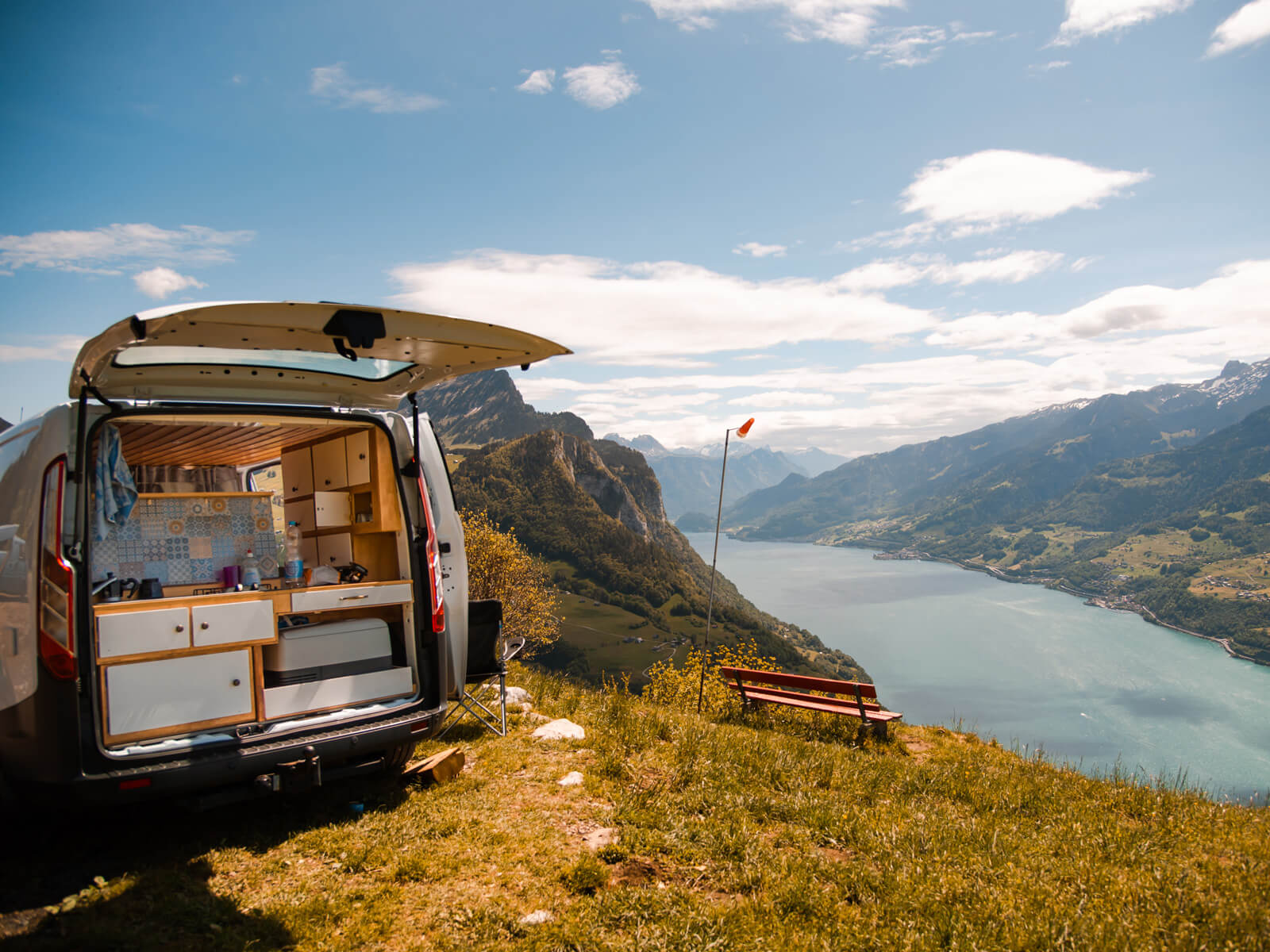
The Best Autumn Road Trips in Switzerland (2024)
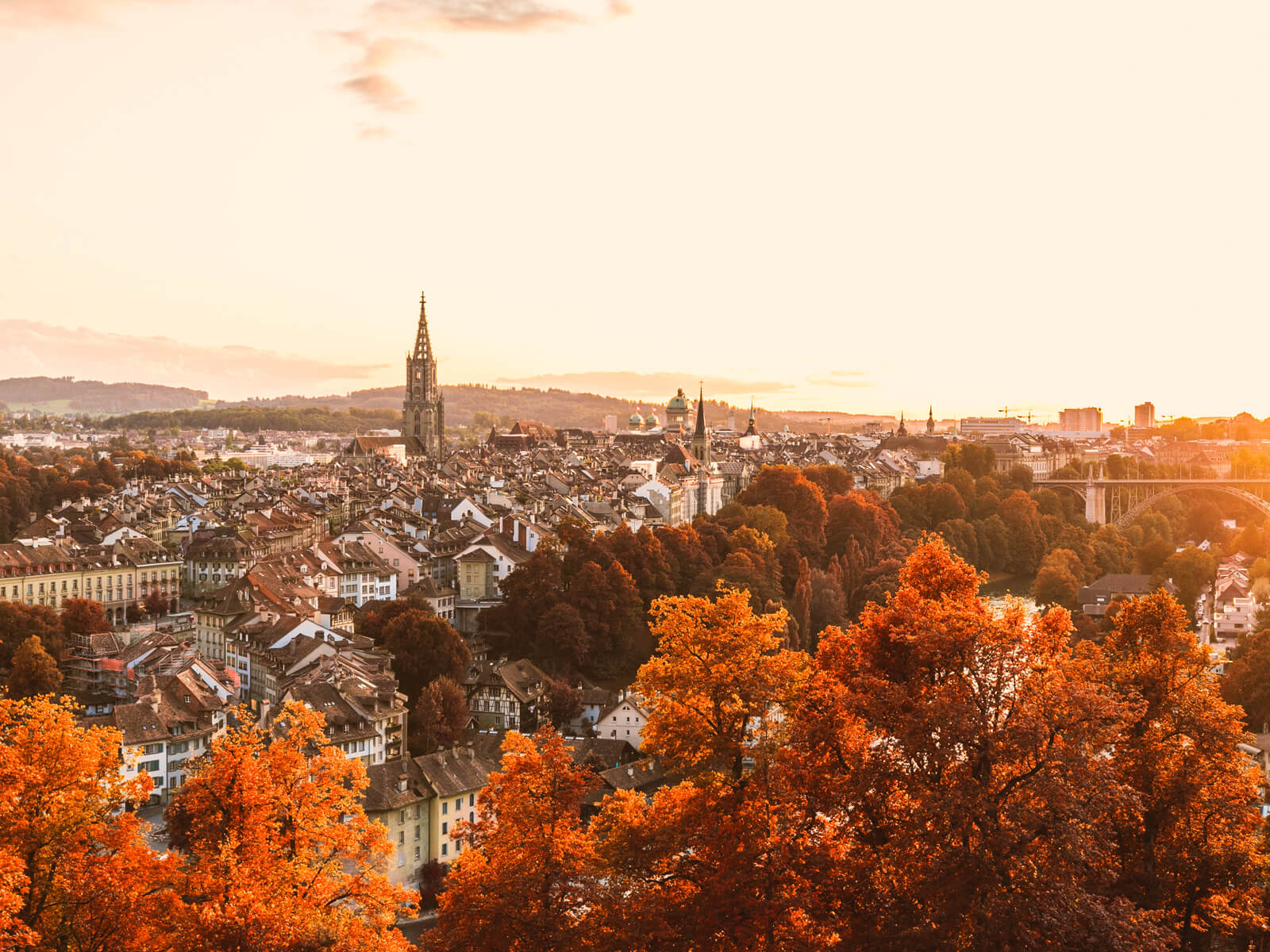
Autumn in Switzerland – Ultimate Guide to the Golden Season
The Alps may make you think that Switzerland is constantly cold. However, this is not the case; the country has increasingly experienced heat waves.
Please note that at these high altitudes, the sun is much stronger. When sun rays reflect off snow or water, there is an increased risk of sunstroke. Wear sunblock, a hat, and sunglasses, and hydrate.
In the mountains, the weather conditions can change drastically and without notice. The conditions may switch from warm temperatures to overcast skies with chilly winds and even blizzards. Therefore, wearing layers is essential to be prepared for any weather.
Switzerland is a landlocked country located in central Europe. It borders Germany, Italy, France, Austria, and Liechtenstein.
While Switzerland is not a member of the EU, it is a member of the Schengen countries. Schengen covers much of continental Europe, and crossing borders among member countries is possible without a passport or visa.
You’ll only need to produce a passport when entering Europe (or Switzerland) from abroad. If your nationality requires a travel visa to enter Europe first, Switzerland will also be included in the Schengen visa.
The Swiss franc is the official currency of Switzerland, with the abbreviation being CHF. Each franc is divided into 100 “cents.”
You might assume that all European countries accept the Euro, similar to having open borders. This is not the case in Switzerland, where the Swiss franc dominates. You may ask to pay in Euros even within Switzerland, but you will likely get a bad exchange rate.
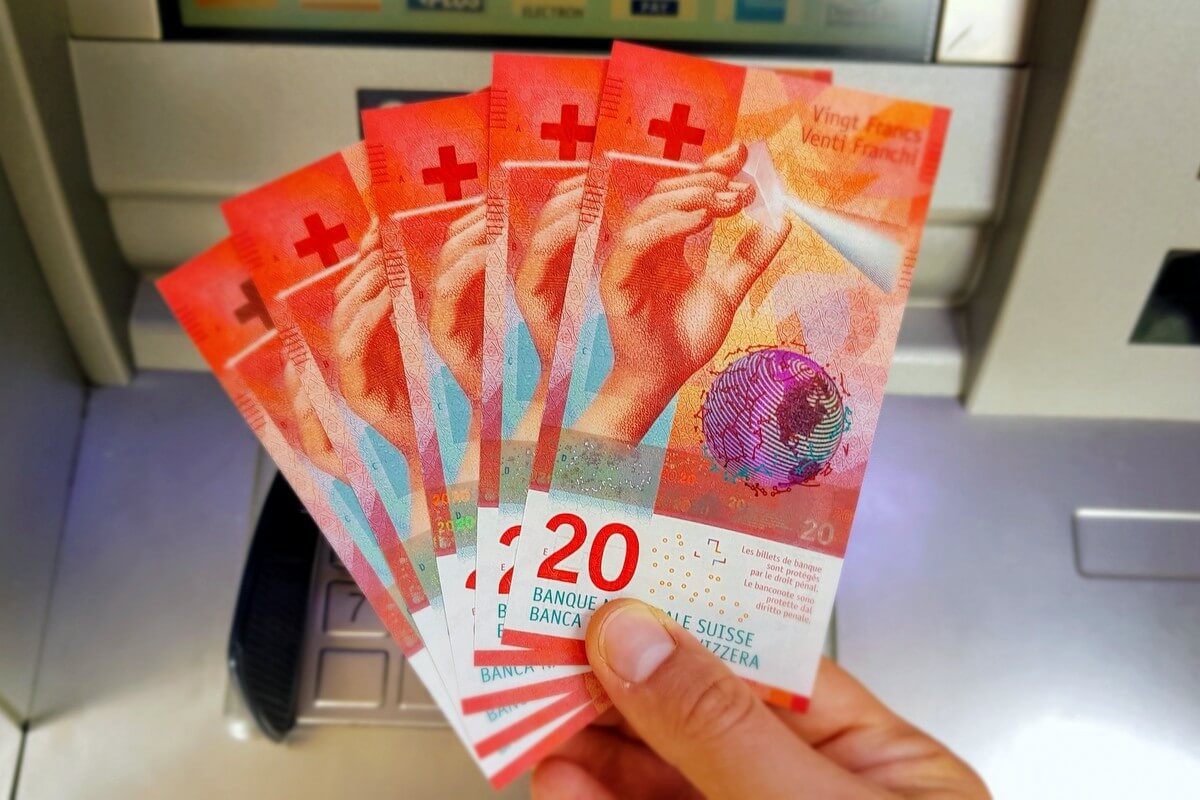
Credit cards are accepted widely, but note that smaller vendors often have a minimum charge set at 20 francs. You might need cash to pay the tab for a cup of coffee or a glass of wine. Some vending machines, luggage lockers, and honesty shops will only accept cash.
There is no need to exchange Swiss francs in your home country. Upon arrival at an airport or a major train station, seek out an ATM or a currency exchange. Many foreign banks charge a fixed fee for ATM withdrawals regardless of the amount, so limiting your withdrawals and getting more cash at a time makes sense.
A good rule of thumb is to exchange 50 francs per person (per day) in cash. (A cup of coffee can set you back 4.50 francs, a portion of spaghetti Bolognese, or a pizza up to 25 francs.)
Good to know: watch shops, jewelers, and boutiques will accept UnionPay and MasterCard credit cards and debit cards (the latter need a PIN code for verification). There is no need to bring large quantities of cash to pay for that luxury watch... A credit card with a chip and PIN code is a safe bet for paying in Switzerland.
“Is tipping necessary in Switzerland?” We get this question a lot.
Switzerland does not expect tipping because tips are factored into the total price. However, many locals will reward good service by generously rounding up. Depending on the amount, some locals will round up to the nearest franc, five francs, or ten francs.
Unlike in the US, waiters and other service providers, such as hairdressers, are not relying on tips to make a living. But a nice tip will surely put a grin on their face.
Some everyday tipping situations in Switzerland:
- A café bill of 4.20 francs is rounded up to 5 francs.
- A bar tab of 16.50 francs is rounded up to 20 francs.
- A food bill of 93.50 francs is rounded up to 100 francs. (Rule of thumb: 8 to 10%)
- Tip 2 francs per piece of luggage brought to your hotel room by the bag handler.
Switzerland has four official languages: German, French, Italian, and Romansh.
Most Swiss speak multiple languages. While it is a good idea to rehearse some basic terms in Swiss German or Swiss French, you should not have a problem getting by with English.
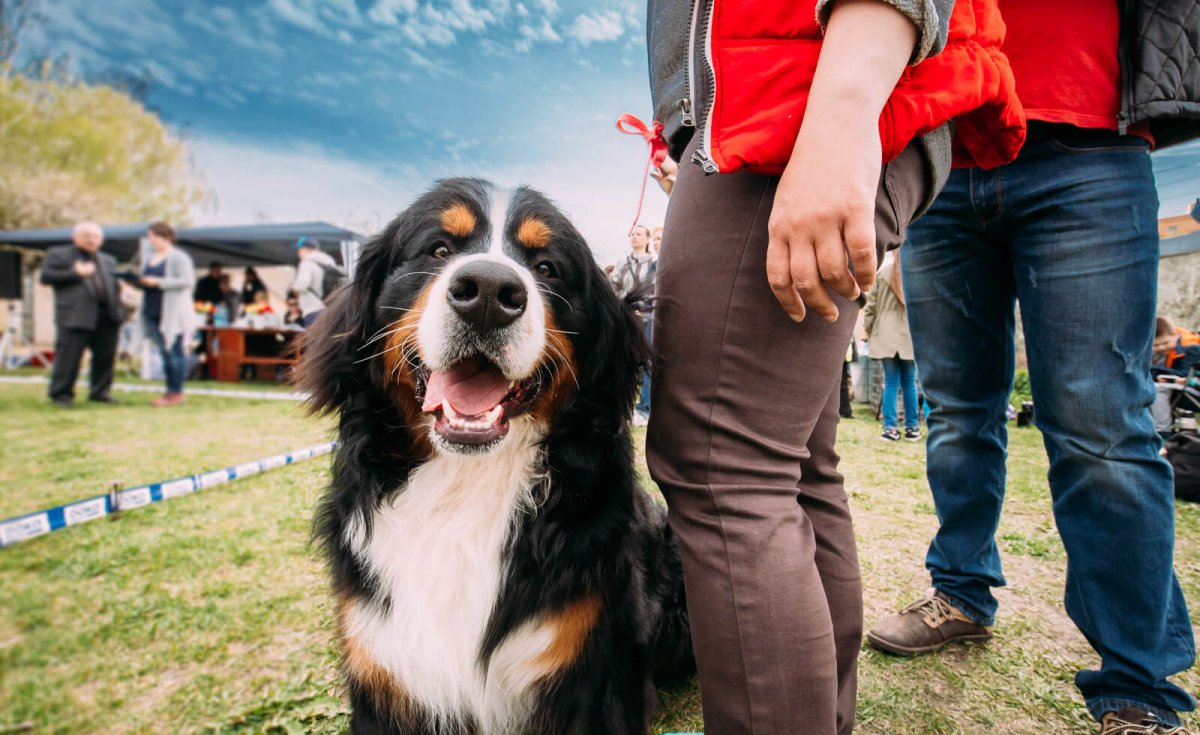
Greetings in Switzerland: how to say “Hello” in Swiss German
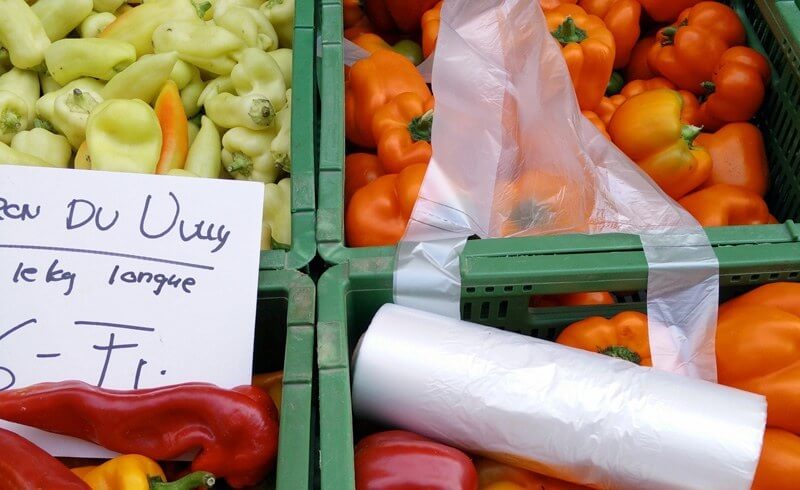
Here’s what you need to know about the Swiss French language
Once you have decided to visit Switzerland, you must consider mobility options: to get a rental car or to buy a pass for unlimited use of Swiss public transport.
Switzerland by rental car
A British secret service agent showed the world some of Switzerland's most scenic roads. Switzerland Tourism has cleverly combined the most scenic routes as part of the Grand Tour of Switzerland , littered with highlights and beautiful vistas.
While many roads are easily accessible, even for average drivers, many require some guts. (Remember that James Bond has a particular knack for maneuvering those tight mountain roads.) In short, if you are used to driving on autopilot across the Plains, you might think twice about crossing the Alps by rental car.
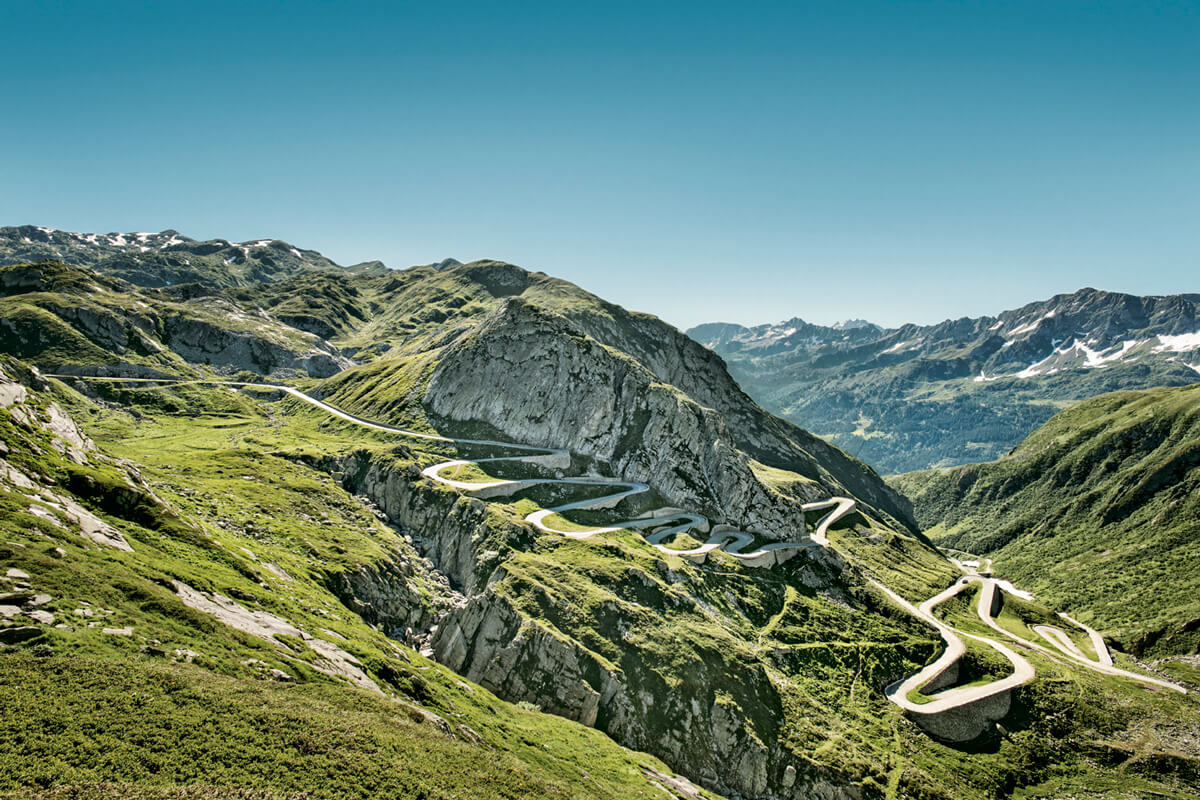
Switzerland has no toll roads, but each car must have a valid freeway sticker attached to the windshield. Any rental car will have one if you enter Switzerland from a neighboring country. Otherwise, purchase a "vignette" at a gas station.
Alas, the annual road tax in Switzerland is 40 francs per car. And a day’s parking pass could easily cost upward of 50 francs.
Conversely, a rental car provides flexibility to veer off the beaten path. And it could be less expensive than the alternative when shared among several travelers.
Switzerland by public transportation
There is hardly another country with such a dense network of trains, buses, and boats. Public modes of transport are reliable, modern, and clean.
The Swiss transportation system is fairly easy to comprehend, too. All lines have regular departure times, meaning that a particular bus always departs at the same minute every hour (i.e., at :02 and :32). The connections are smooth because Switzerland has a fully orchestrated timetable.
You will likely benefit from scenic views from behind oversized windows. Weigh this against a mid-sized rental car with narrow windows.
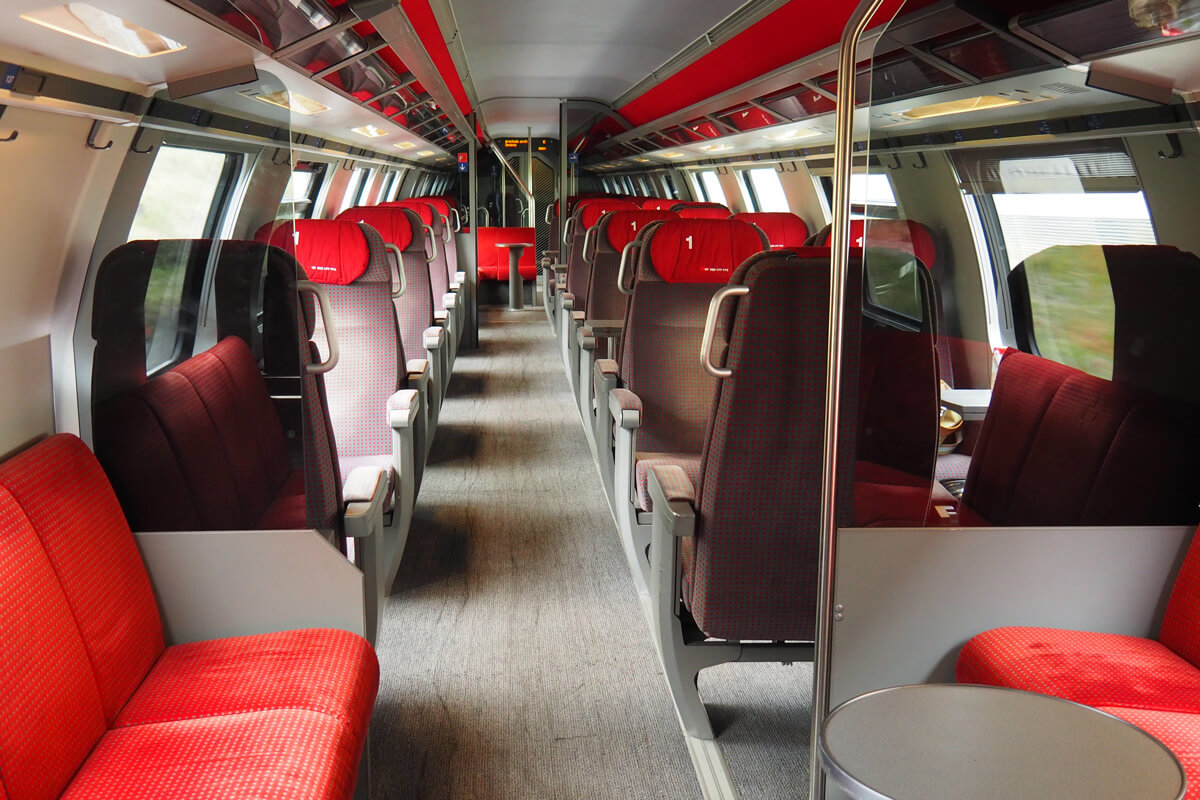
About the Swiss Travel Pass
In addition to the main rail operator Swiss Railways (SBB), Switzerland has many private train lines. Despite this complexity, tickets from point A to point B can be purchased at most any ticket vending machine.
In other words, a single ticket in Switzerland is issued regardless of the public transport operators involved. Essentially, you could buy several individual tickets or day passes for each leg of your trip.
The Swiss Travel Pass was designed to provide a hassle-free experience for those traveling by train, bus, and boat. Issued for 3, 4, 6, 8, or 15 days, the Swiss Travel Pass includes unlimited travel all over Switzerland.
This all-inclusive pass even covers premium trains such as the Glacier Express . You’ll gain free admission to more than 500 Swiss museums as an added benefit.
But this sounds all very cut and dry. Another chief reason for the Swiss Travel Pass is the sheer convenience: you never need to worry about having a valid ticket while you zip across the countryside or fetch a postal bus back to the hotel.
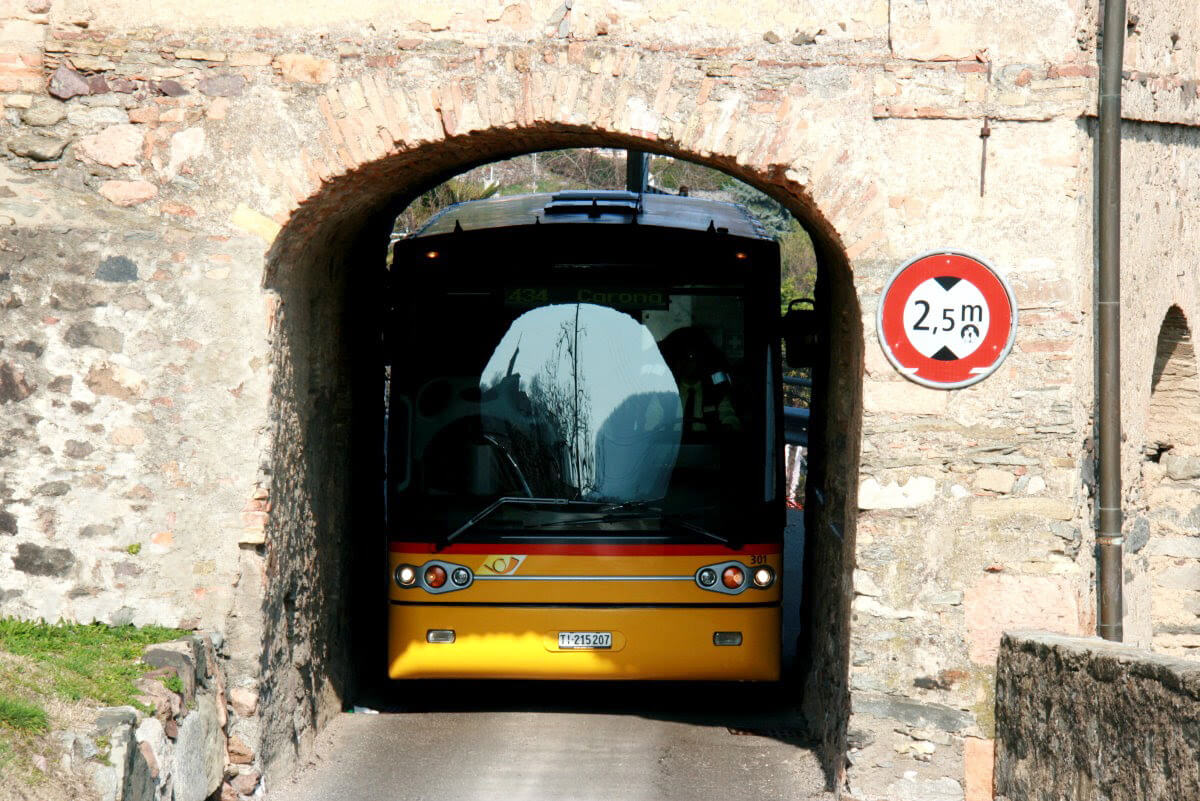
You must be wondering how to pack for Switzerland. A suitcase will "suit" you fine, but remember that it might need to fit into a luggage storage compartment at the train station. For reference, the largest "XXL" storage measures 44.7 cm x 61.5 cm x 88.0 cm.
Switzerland's weather can be iffy, and it is not uncommon for a hot summer day to be followed by several days of cool, rainy weather. Temperatures drop with the sunset, and a sweater will keep you warm during those summer nights outdoors.
If you plan to visit mountain tops like the Jungfraujoch, wear a light down jacket and proper shoes because there will be snow and ice.
Except for Valais, temperatures in the lowlands are generally warmer than in the mountains.
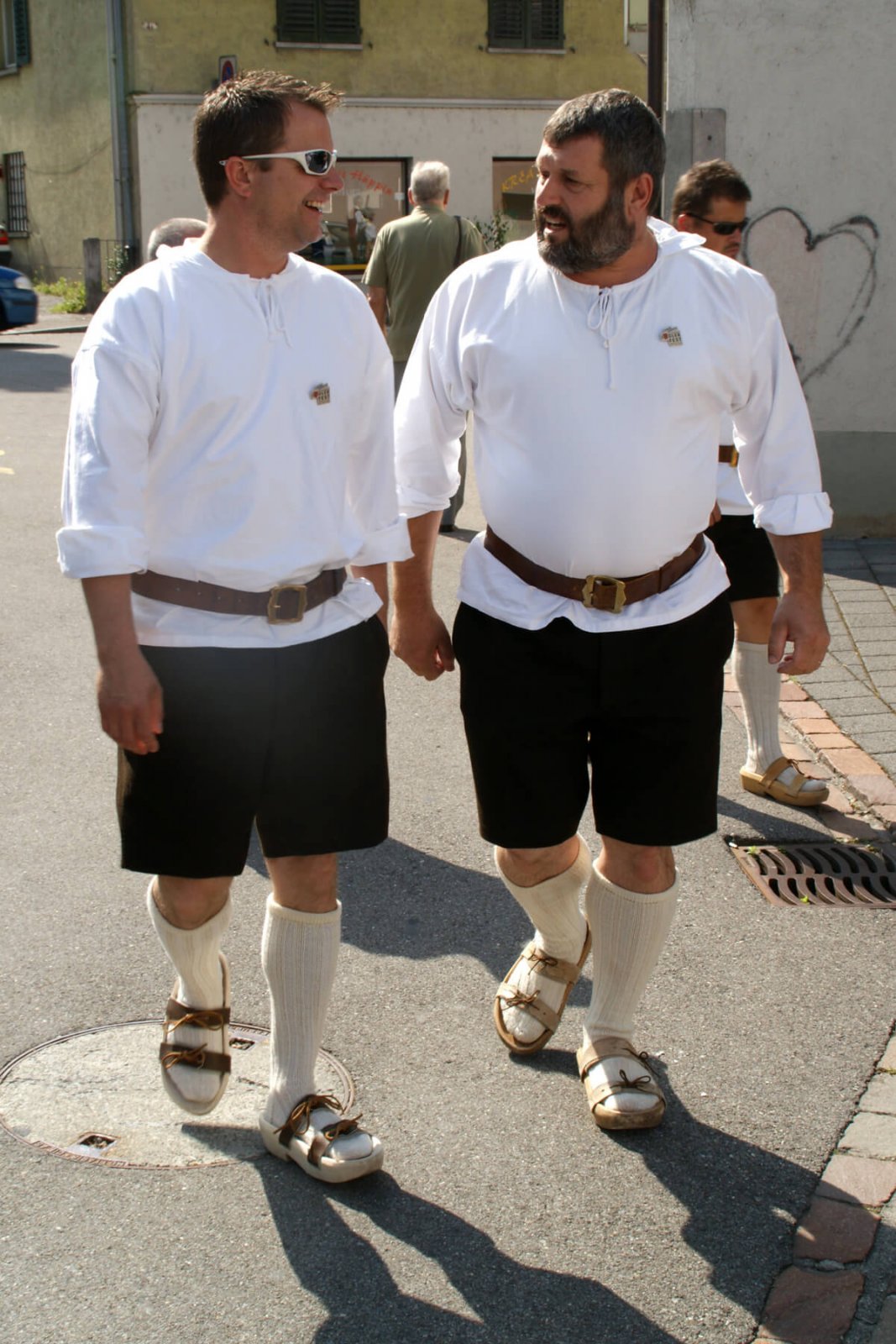
- Spring, summer, and autumn: Bring a pair of jeans, T-shirts, a fleece sweater or vest, a light jacket, and a pair of sneakers. For the ladies, here is a detailed summer packing list .
- Bring a backpack with a light raincoat and/or small umbrella for your hikes and city trips.
- Always carry a water bottle that can be refilled at a fountain throughout the day. There is no need to purchase expensive bottled water - keep refilling the same bottle and spend the savings on chocolate...
- Winter: Temperatures routinely drop below zero. This is the country where skiing was invented, so needless to say, bring enough warm clothes: a down jacket, gloves, a scarf, hats, and waterproof winter boots.
- Leggings or thermal underwear will help if you plan to be outdoors all day.
- Bring an umbrella as snowfall often turns to sleet or rain in the cities.
Travel adaptors for Swiss power outlets
The current in Switzerland is 220V/50Hz AC.
Power sockets feature three pins. Any device requires a Type J adaptor with two or three pins, whereas the latter is a grounding plug.
Since neither Australian, US, or UK power plugs work in Switzerland, bringing a Type J travel adaptor is essential. These can be picked up on Amazon or upon your arrival in Switzerland. Look for them at grocery stores, post offices, or kiosks. If all else fails, ask the concierge at your hotel whether they have a travel adaptor you can borrow.
Say you plan to move to a different place daily and stop at highlights. Many train stations have luggage lockers. You could bring your luggage and store it in a locker for a few hours while checking out the sights.
Here is a list of train stations with lockers . Just in case, bring some change, as some lockers may not accept credit cards.
Most conveniently, take advantage of the various levels of luggage services by Swiss Railways. For instance, while checking out at one hotel, you could have your luggage picked up and shipped to the night’s destination. Or you could drop your bags at a major train station and have them shipped to your destination.
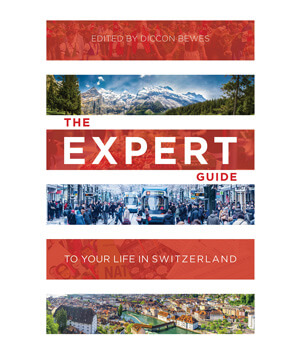
- Swiss public transport and must-see experiences
- How to save money in Switzerland
- Paperback, EN, 288 pages
A bible for residents and tourists in Switzerland. Filled to the brim with expert advice.
For first-timers, a popular triplet to visit is Bern (seat of the parliament and UNESCO World Heritage site), Lucerne (Chapel Bridge and Mt. Pilatus), and Zurich.
The three cities in the German-speaking part of Switzerland are an hour apart each, so they can easily be checked off your bucket list. Add Basel, with its more than 40 museums, for bonus points.
To experience Switzerland's southern charms, you have two choices: the Italian-speaking canton of Ticino with its stone houses and palm tree-lined lakes. Recommended places to stay are Locarno, Ascona, and Lugano. Or you pick the canton of Valais, a German and French-speaking mountainous region home to the Matterhorn .
We have extensively covered beautiful Swiss towns to visit. But if you are still unsure where to go in Switzerland, here are the top places to see in Switzerland in your lifetime .
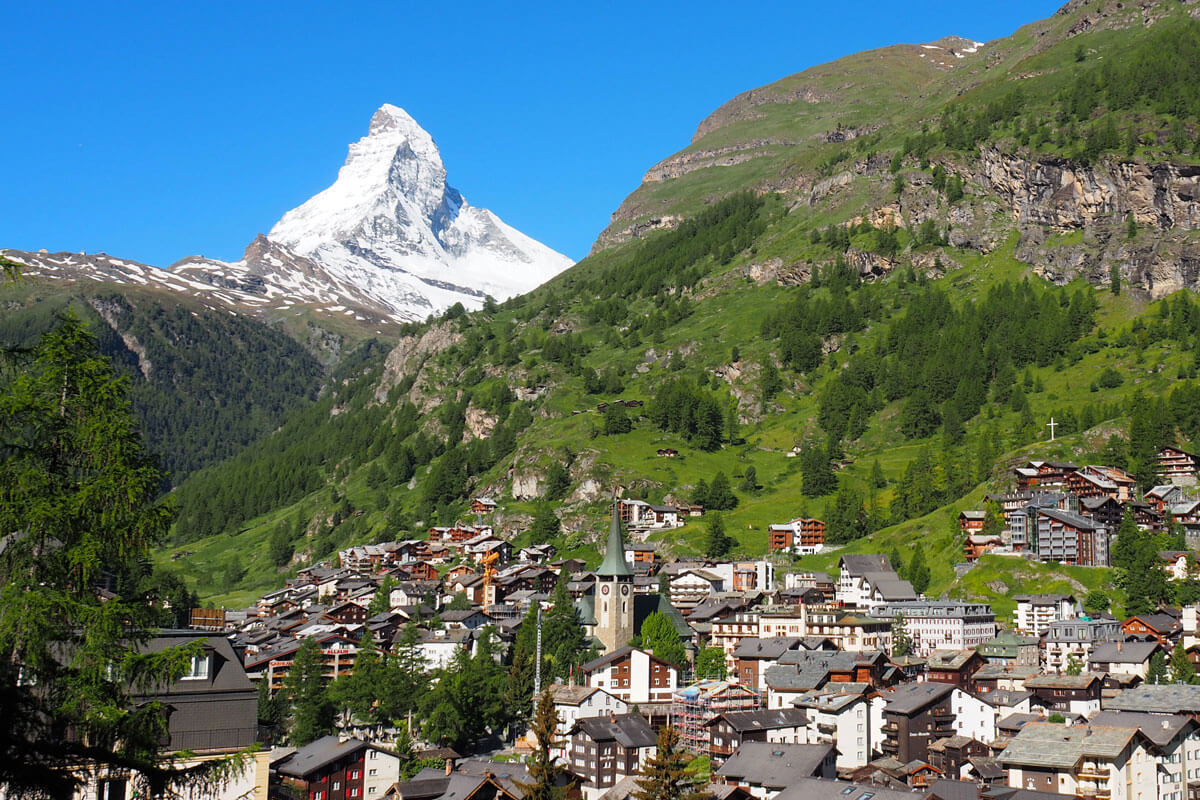
Dimitri Burkhard
As the founder, editor, and community manager of Newly Swissed, Dimitri owns the strategic vision. He is passionate about storytelling and is a member of Swiss Travel Communicators. Dimitri loves discovering new trends and covers architecture, design, start-ups and tourism.
You may also like

Spend a night at Zürich Museums – Lange Nacht der Museen
47 museums in Zürich will open their doors for a special night of cultural events! Whether you are interested in art and culture, crazy about science and technology or just fancy a romantic ferry ride, I am sure that...
Park Hotel Vitznau may be the most exclusive Swiss resort
With all but 47 elegant residences and suites, the Park Hotel Vitznau has exclusivity and privacy written all over it.

Cruising the Swiss Alps with Alpmobil
In the context of the BP oil spill, it is refreshing to see that there are true energy alternatives to fossil fuels. One company, THINK, has developed a nifty little car which will go for 160 km/100 mi on a single...
Newly Swissed GmbH Langrütistrasse 1A, 8635 Dürnten Switzerland +41 78 949 03 53
Copyright © 2024 - Newly Swissed GmbH. All rights reserved.
- Everyday Life
- Food & Wine
- Travel & Tourism
- Book Reading
- Concert/Dance/Musical
- Food/Gourmet
- Stand-up/Theater/Movies
- Workshop/Seminar/Tour
- Add an Event
- What We Like
- Meet the Team
- Press Coverage
- Advertising
- Contact us or book us
Download our e-book: 77 Facts about Switzerland

The Complete Switzerland Packing List For Summer 2023
What's In This Article?
Planning a summer vacation in Switzerland? While you may be tempted to toss all your clothes into a suitcase and call it a day, taking the time to pack smartly and stay organized can make a world of difference, especially if you’ll be traveling for an extended period or exploring multiple destinations. No one wants the hassle of unpacking and repacking every few days, right? So, let’s dive into what essentials you should pack to keep your luggage organized and ensure a seamless journey as you hop from one enchanting Swiss location to another! In this guide we’ll share the complete Switzerland packing list you need to make your Swiss summer vacation memorable.
What to Pack Your Stuff in For Switzerland
First things first, let’s talk about the type of luggage you should consider. If you’ll be traveling throughout Switzerland by train or planning to move around frequently, I highly recommend opting for a backpack or a small carry-on suitcase. Trust me, you’ll thank yourself later for choosing a more practical option.
Switzerland is well-connected by an efficient train system, making it a popular mode of transportation for both locals and tourists. Train stations can get crowded, and maneuvering a large, heavy suitcase through the bustling platforms and narrow passages can be quite challenging and impractical.
You’ve probably seen travelers struggling with oversized suitcases, wrestling them up and down stairs or trying to squeeze them into crowded train compartments. Not only does this create inconvenience for the traveler, but it can also disrupt the flow of other passengers and cause unnecessary stress.
By opting for a backpack or a small carry-on suitcase, you’ll enjoy several advantages. Firstly, it’s much easier to navigate through crowded train stations and maneuver onto trains without the worry of fitting your luggage into limited storage spaces. You’ll have more freedom to move around comfortably, ensuring a smoother travel experience.
Additionally, backpacks and compact carry-on suitcases are designed with convenience and mobility in mind. They often have multiple compartments and pockets, allowing you to stay organized and access your belongings easily. Plus, they are typically more lightweight, making them more manageable to carry during your explorations.
So, before you embark on your Swiss adventure, consider the practicality and ease of traveling with a backpack or a small carry-on suitcase. You’ll be grateful for the flexibility and mobility it offers, leaving you free to focus on the beautiful sights and experiences Switzerland has to offer.
Getting a Lock
While Switzerland is generally a safe country for travelers, it’s always wise to take precautions to protect your belongings. One essential item that can provide an extra layer of security is a small lock for your luggage. When traveling by train in Switzerland, you’ll likely find designated luggage sections within the train carriages where passengers can store their bags during the journey. While these areas are generally safe, it’s common for travelers to leave their luggage unattended as they move around the train or visit the dining car.
Having a small lock for your luggage gives you peace of mind knowing that your belongings are secure, especially if you need to step away from your seat or leave the train briefly at a station. It acts as a deterrent to potential opportunistic theft and adds an additional layer of protection for your valuables. When choosing a lock, look for a compact and sturdy option that can easily fit through the zippers or clasps of your bag. Combination locks are a popular choice as they eliminate the need to carry around keys. Remember to set a unique and memorable combination that only you know. By investing in a small lock for your luggage, you can enjoy your train journeys across Switzerland with the confidence that your belongings are safely secured. It’s a simple precaution that can provide peace of mind and ensure a worry-free travel experience.
Step Out in Comfort and Style: Must-Have Shoes for Your Swiss Adventure
Switzerland is a paradise for outdoor enthusiasts, with its breathtaking landscapes and a plethora of outdoor activities to enjoy. To make the most of your Swiss adventure, it’s crucial to pack the right footwear that caters to different terrains and activities you’ll encounter during your trip.
Consider bringing a pair of comfortable walking shoes or hiking boots. Whether you’re planning to tackle challenging alpine hikes or explore the well-maintained trails, having proper footwear is essential. Opt for shoes with good traction and ankle support to ensure stability and prevent injuries on uneven surfaces. Waterproof or water-resistant shoes are also a great choice, as you may encounter streams, waterfalls, or unpredictable weather during your hikes.
Apart from the sturdy footwear, don’t forget to pack a pair of walking sandals. These are perfect for more relaxed activities such as strolling around Swiss cities, visiting museums, or enjoying a leisurely walk by the lakeside. Walking sandals offer breathability, comfort, and versatility, making them ideal for warmer days when you want to keep your feet cool and still explore the urban landscapes.
When selecting your shoes, it’s essential to consider the weather and the activities you have planned. If you’re primarily focused on hiking and outdoor adventures, prioritize the hiking boots or sturdy running shoes. However, if you anticipate a mix of city exploration and nature walks, having both hiking shoes and walking sandals ensures you’re well-prepared for any occasion.
Remember to break in your shoes before your trip to avoid discomfort or blisters. This will ensure that your footwear provides the necessary support and comfort throughout your Swiss escapades. Invest in good-quality socks as well, as they play a significant role in preventing blisters and providing extra cushioning.
By packing a combination of comfortable running shoes or hiking boots and walking sandals, you’ll be ready to conquer the Swiss trails, explore cities, and soak in the picturesque landscapes with confidence and comfort. Your feet will thank you as you embark on unforgettable adventures in Switzerland!
Essential Jackets for Unpredictable Weather in the Swiss Alps
Weather in Switzerland, especially in the mountainous regions like the Swiss Alps, can be unpredictable even during the summer months. It’s always wise to come prepared with a lightweight rain jacket that can easily fit into your bag. This way, you’ll be ready to tackle sudden rain showers or unexpected changes in temperature.
The Swiss Alps offer awe-inspiring vistas and exhilarating outdoor adventures, but the mountain weather can change rapidly. Even on a sunny day, it’s not uncommon for clouds to roll in or a brief rain shower to pass through. Having a very light rain jacket at hand ensures that you can continue your explorations comfortably, no matter the weather conditions.
Additionally, packing a jacket provides an extra layer of insulation for cooler evenings or higher altitudes. As you venture into the Swiss Alps, temperatures can drop, especially during early mornings or at higher elevations. Having a lightweight jacket allows you to adapt to changing temperatures and stay comfortable throughout your alpine adventures.
To make the most of your time in the Swiss Alps, it’s a good idea to check the weather forecast before heading out. This will give you an idea of what to expect and allow you to pack accordingly. Even if the forecast predicts clear skies, it’s still wise to have a light rain jacket on hand as a precautionary measure.
By including a very light rain jacket in your packing list, you’ll be well-prepared to tackle the ever-changing weather conditions in the Swiss Alps. Whether you’re hiking majestic trails, exploring charming alpine villages, or simply taking in the breathtaking landscapes, you’ll have the peace of mind knowing that you’re ready for whatever Mother Nature has in store.
Stay Stylish and Comfortable: Clothing for Your Swiss Summer Adventure
When embarking on a summer vacation in Switzerland, it’s essential to pack clothing that is both lightweight and versatile to adapt to the ever-changing weather conditions. With a mix of sunny days and changeable weather, it’s important to be prepared for various activities and environments.
For outdoor adventures and hiking in the Swiss Alps, prioritize packing moisture-wicking shirts that will keep you cool and dry during physical activities. These shirts are designed to draw sweat away from your body, allowing it to evaporate more quickly, which helps regulate your body temperature. Look for breathable fabrics such as nylon or polyester blends for optimal comfort.
When it comes to bottoms, having a variety of pairs of pants options is key. Pack breathable shorts for warm and sunny days when you want to keep cool while exploring the Swiss landscapes. Additionally, include a couple of pairs of convertible pants in your suitcase. These versatile pants can be zipped off at the knee to transform into shorts when the temperature rises, and easily convert back to full-length pants if the weather turns cooler or you encounter insect-infested areas.
Switzerland’s diverse landscapes offer endless opportunities for outdoor activities, so it’s crucial to pack clothing that allows for freedom of movement and comfort. Keep in mind that layering is key to adapt to temperature changes throughout the day. Packing lightweight, long- sleeve shirts or thin sweaters will provide added warmth during cooler moments or higher elevations.
Lastly, don’t forget to pack essentials like underwear, socks, and sleepwear. Consider bringing a mix of moisture-wicking and quick-drying fabrics for these items to ensure maximum comfort and convenience during your travels.
By packing a mix of lightweight, moisture-wicking shirts, breathable shorts, convertible pants, and appropriate undergarments, you’ll be well-prepared to embrace Switzerland’s stunning landscapes and enjoy a variety of outdoor activities. Remember to layer your clothing to adjust to changing temperatures and be ready to make the most of your Swiss summer adventure in style and comfort.
Don’t overpack clothes: Remember, you don’t need to bring your entire wardrobe. Even small villages in Switzerland have laundromats, especially in touristy areas. Packing a few essentials and planning to do laundry during your trip can save you from unnecessary bulk. Additionally, it’s important to consider packing a pair of long pants and a breathable long-sleeved shirt, especially if you plan on venturing into wooded areas.
Switzerland is known for its stunning landscapes, including lush forests and picturesque hiking trails. However, it’s worth noting that ticks can be prevalent in certain regions. These tiny arachnids can carry diseases such as tick-borne encephalitis (TBE). While the risk of contracting TBE is relatively low, it’s advisable to take precautions, especially if you’ll be spending a significant amount of time outdoors in tick-prone areas. To protect yourself, consider getting vaccinated against tick-borne encephalitis before your trip. Consult with a healthcare professional or travel clinic to discuss the vaccine’s availability and suitability for your specific situation. In addition to vaccination, it’s essential to take preventative measures, such as wearing long pants and long sleeves, tucking your pants into your socks or boots, and using insect repellent containing DEET on exposed skin.
By being mindful of these precautions and packing appropriate clothing, you can enjoy your outdoor adventures in Switzerland while minimizing the risk of tick bites and tick-borne illnesses. Stay safe and make the most of your summer vacation in this beautiful country!
Find Your Perfect Travel Companion: Backpacks for Seamless Adventures
A small daypack is an absolute essential for your Swiss summer adventure. This compact and versatile travel companion will be your go-to for carrying all your daily essentials while exploring the stunning Swiss landscapes. Whether you’re wandering through charming Swiss cities, embarking on hiking trails, or visiting iconic landmarks, a well-packed daypack ensures you have everything you need at your fingertips. Here’s a checklist of items to consider including in your daypack:
- Sunscreen: Protect your skin from the sun’s rays, especially during long hours of outdoor exploration. Choose a sunscreen with a high SPF and reapply regularly.
- Hat and Sunglasses: Shield yourself from the sun’s glare and stay cool with a wide-brimmed hat and a pair of sunglasses. These accessories not only provide sun protection but also add a touch of style to your outfit.
- Guidebook or Map: While smartphones offer convenient access to information, having a physical guidebook or map can be helpful, especially in areas with limited internet connectivity. It allows you to navigate and discover hidden gems without relying solely on technology.
- Camera: Capture the breathtaking Swiss landscapes and memorable moments with a camera. Whether it’s a DSLR or a smartphone, having a dedicated device for photography ensures you don’t miss out on capturing those picture-perfect memories.
- Snacks: Keep yourself energized during your adventures by packing some lightweight and nutritious snacks. Granola bars, dried fruit, or trail mix are excellent options that provide a quick boost of energy while on the go.
- Personal Belongings: Don’t forget to include your wallet, keys, mobile phone, and any other personal items you may need throughout the day. It’s a good idea to have a small pouch or organizer to keep these essentials easily accessible and secure.
When choosing a daypack, opt for one that is comfortable to wear and has multiple compartments to help you stay organized. Look for features like padded shoulder straps, breathable back panels, and durable materials to ensure long-lasting performance.
Having a well-stocked daypack ensures that you can explore Switzerland’s magnificent landscapes with ease and convenience. It allows you to be prepared for various scenarios and ensures that you have all your essentials close at hand. So, pack your daypack wisely and get ready for an unforgettable Swiss adventure!
Looking for a new travel backpack for your Swiss adventure? Here are some of our favorite travel backpacks:
Osprey Farpoint 40 : Known for its durability and comfortable design, this backpack offers ample space for your essentials while adhering to carry-on size restrictions.
Nomatic Travel Pack : This versatile backpack is designed with organization in mind, featuring multiple compartments, a laptop sleeve, and even a shoe compartment.
Kelty Redwing 44 : Offering a perfect balance between size and functionality, this backpack is ideal for both city exploration and outdoor adventures with its spacious main compartment and handy pockets.
Thule Chasm Backpack: Combining style and practicality, this backpack is made from durable and weather-resistant materials. It’s a great choice for day trips or shorter excursions.
Deuter Transit 40 : Designed with travel in mind, this backpack features a detachable daypack, comfortable suspension system, and ample storage space to keep your belongings organized.
Remember to consider your specific needs, such as size, features, and budget, when selecting a travel backpack. Read customer reviews and product descriptions on Amazon.com to make an informed decision that suits your preferences.
Power Up and Stay Connected: Essential Electronics for Your Swiss Adventure
Capturing the beauty of Switzerland and staying connected during your travels is made easier with the right electronic essentials. Here are a couple of must-have items to consider packing:
- Swiss Plug Adaptor : Switzerland has its own unique plug type, so it’s important to bring a suitable adaptor to ensure compatibility with Swiss electrical outlets. This will allow you to charge your devices, use your laptop, or power any other electronic equipment seamlessly throughout your trip. It’s a small but essential item that ensures you stay connected and powered up during your Swiss adventure.
- Battery Phone Charger: With Switzerland’s breathtaking landscapes and picturesque views, you’ll likely find yourself wanting to capture every moment with your smartphone. However, taking pictures all day can drain your phone’s battery quickly. To avoid running out of power while on the go, consider packing a portable charger. These compact and lightweight chargers can provide an extra boost of battery life whenever you need it, keeping your phone charged and ready for snapping photos or staying connected with loved ones.
By packing a Swiss plug adaptor and a battery phone charger, you’ll be well-prepared to stay connected, charge your devices, and document your Swiss Plus experience without any interruptions. Keep these electronic essentials in your daypack or easily accessible in your luggage for convenient use throughout your journey.
Additional items: While the above list covers the essentials, here are a few additional items you might find useful:
- Travel-sized toiletries and personal care items (shampoo, conditioner, toothpaste, etc.)
- Travel towel (lightweight and quick-drying)
- Portable umbrella (in case of unexpected rainy days)
- Travel documents (passport, visa, travel insurance, etc.)
- Swiss Francs (local currency) or a credit/debit card for transactions.
Packing a Reusable Water Bottle: Stay Hydrated and Save Money in Switzerland
When preparing for your Swiss adventure, don’t forget to include a reusable water bottle in your packing list. Switzerland is renowned for its clean and pristine drinking water, and you’ll find an abundance of public fountains scattered throughout the country, particularly in cities and towns. These fountains provide a convenient and environmentally friendly way to stay hydrated while exploring.
Having a reusable water bottle on hand allows you to fill up at these public fountains and enjoy the refreshing Swiss water throughout your journey. Not only does this help you stay hydrated during your adventures, but it also helps reduce waste from single-use plastic bottles. Plus, it can save you a significant amount of money since bottled water in Switzerland can be quite expensive, especially in touristy areas.
While most water fountains in Switzerland offer safe and potable water, it’s essential to pay attention to any signs indicating otherwise. Some fountains may have signs that say “Kein Trinkwasser,” which means “not drinking water.” If you encounter such a sign, it indicates that the water from that specific fountain is not suitable for consumption. However, if there is no sign or a sign indicating “Trinkwasser” or “Trinkbrunnen,” you can safely drink from the fountain.
To ensure your safety, it’s always a good practice to check for any signs or labels before using a public fountain. Additionally, if you have any concerns or doubts about the water’s potability, you can also ask locals or seek information from tourist information centers.
By packing a reusable water bottle, you’ll have the convenience of staying hydrated at all times and the opportunity to enjoy Switzerland’s clean and refreshing drinking water. Remember to refill your bottle whenever you come across a suitable public fountain, and savor the taste of Switzerland while keeping both your wallet and the environment happy.
Dress Style: Embrace Casual Comfort for Your Swiss Adventure
When it comes to dressing in Switzerland, comfort is key. The Swiss have a relaxed and casual approach to fashion, prioritizing comfort and functionality without compromising style. Whether you’re exploring the picturesque cities, venturing into the Swiss Alps, or strolling along the lakeshores, feel free to pack your favorite casual and comfortable clothes that align with your personal style.
In Swiss cities, such as Zurich, Geneva, or Bern, you’ll notice that locals and tourists alike opt for outfits that are both practical and stylish. It’s common to see people dressed in jeans, trousers, or skirts paired with comfortable tops, t-shirts, or blouses. For footwear, choose comfortable walking shoes, sneakers, or even stylish flats that can keep up with your explorations.
Conclusion: Prepare for an Unforgettable Summer Adventure in Switzerland!
As you embark on your summer vacation in Switzerland, it’s important to pack thoughtfully and consider the specific needs of this stunning destination. By following this packing list, you’ll be well-prepared to navigate the Swiss landscapes, embrace the unpredictable weather, and immerse yourself in the captivating culture. Remember, efficient packing is the key to enjoying a hassle-free and organized trip.
Opt for a backpack or small carry-on luggage for ease of mobility, and don’t forget to secure your belongings with a small lock. Choose a versatile and lightweight rain jacket to stay prepared for sudden showers and cooler evenings. Equip yourself with comfortable running shoes or hiking boots for outdoor adventures, and pack a pair of walking sandals for city strolls and lakeside relaxation.
Pack a mix of lightweight and breathable clothing suitable for hiking and exploring. Don’t forget to include long pants and shirts for wooded areas, and consider the importance of tick-borne encephalitis vaccination if needed. Embrace the casual dress style of Switzerland, prioritizing comfort without compromising your personal style.
Ensure your electronic needs are met by bringing a Swiss plug adaptor and a battery phone charger to stay connected and capture memorable moments throughout your journey. Stay hydrated and save money by packing a reusable water bottle, making use of the plentiful fountains found across Switzerland. Just remember to check for any signs indicating the water’s suitability for drinking.
By considering these packing tips and essentials, you’ll be well-equipped to embark on an unforgettable adventure through Switzerland’s enchanting landscapes, from the captivating cities to the majestic Swiss Alps. Immerse yourself in the natural beauty, indulge in the local cuisine, and embrace the warmth and hospitality of the Swiss people. So pack your bags, embark on your Swiss summer getaway, and create memories that will last a lifetime!
Related Posts
Oeschinen lake switzerland – the ultimate guide to visit in 2023.
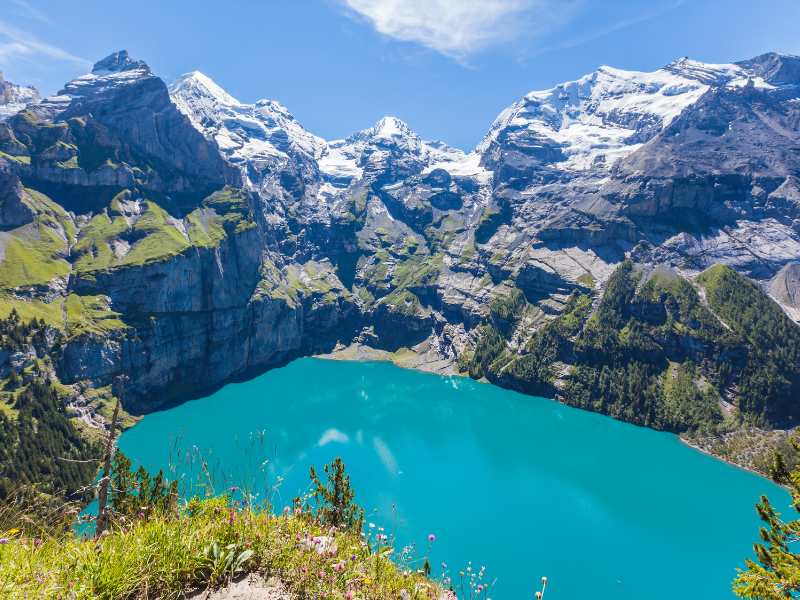
Interlaken to Lauterbrunnen – Getting There By Train, Bus, or Car
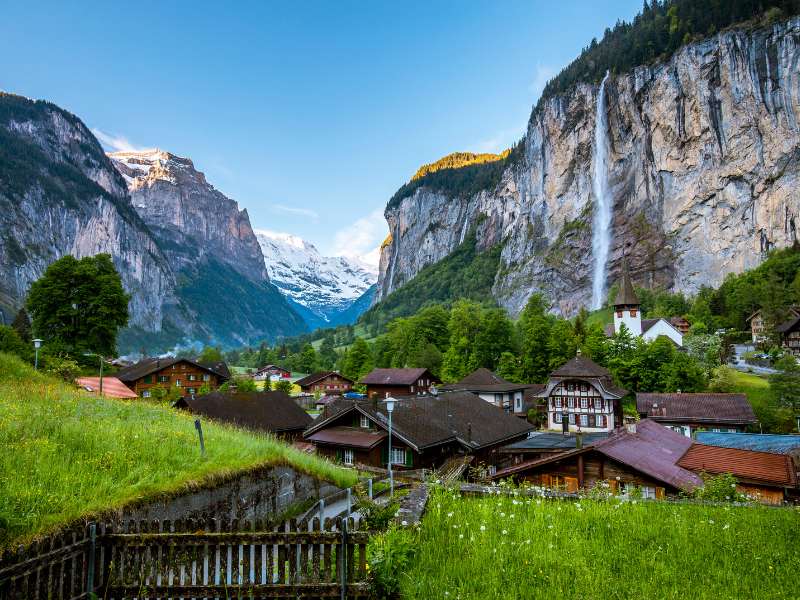
- Switzerland travel tips
Book your individual trip , stress-free with local travel experts
- roughguides.com
- Switzerland
- travel-advice
- Travel guide
- Local Experts
- Travel Advice
- Accommodation
Plan your tailor-made trip with a local expert
Book securely with money-back guarantee
Travel stress-free with local assistance and 24/7 support
More travel information for Switzerland
From travel safety to visa requirements, discover the best tips for traveling to Switzerland
- Geneva travel guide
- Lausanne travel guide
- Zürich travel guide
- Basel Switzerland Travel Guide (2022 update)
- Bern Travel Guide
- Lucerne Travel Guide
- Lake Geneva Travel Guide
- Northeast Switzerland and Liechtenstein Travel Guide
- Sports and outdoor activities in Switzerland
- Bernese Oberland travel guide
- Jungfrau Region travel guide
- Valais travel guide
- Graubünden Travel Guide
- Zermatt and the Matterhorn travel guide
- Central Switzerland Travel Guide
- Ticino Travel Guide
- Best accommodation in Switzerland
- How to get to Switzerland
- Culture and Etiquette in Switzerland
- Eating and drinking in Switzerland
- Getting around Switzerland
- Best time to visit Switzerland
- Festivals in Switzerland
From entry requirements and finding your embassy in Switzerland , to costs and health, our Switzerland travel tips will help you plan your trip to a destination you voted one of the most beautiful countries in the world .
Crime and policing
Electricity, entry requirements and embassies in switzerland, lgbtq travellers, opening hours and public holidays, tourist information, travellers with disabilities, tailor-made travel itineraries for switzerland, created by local experts.

8 days / from 2675 USD
Special Golden Round Trip to Switzerland (small group or private)
Stay active on Switzerland's mountains with hikes and cable cars before indulging in delicious Swiss cheese and wines around Lausanne and Geneva. Is there a better way to get a taste of Switzerland than to actually taste it? Pricing is based on a small group tour, enquire for a private tour!
_listing_1640555873127.jpeg)
11 days / from 3531 USD
Unforgettable Switzerland
Discover Switzerland's real natural paradise. Enjoy 11 relaxed days of picturesque scenery, breathtaking views, romantic towns, eternal ice and snow, rural villages and historic buildings. Visit Zurich, Lucerne, Interlaken, Geneva and many other highlights.

7 days / from 2675 USD
Lakes and mountains for the whole family in Italy & Switzerland
Spend your first 3 nights at Lake Como in Italy, discovering the area by boat or foot, before heading to Zermatt in Switzerland. Zermatt with its peaceful nature is the ideal backdrop for strolls, hikes and other activities with the whole family.
Tailor-made trips for Switzerland
In short, Switzerland is about as far from being a budget destination as it’s possible to be, and the continued strength of the Swiss franc hasn't helped.
The same goes for the “unpegging” of the Swiss franc and the euro — the exchange rate used to be fixed, but since January 2015 it’s been subject to fluctuation.
While value for money is the national motto, careful budgeting will be a vital part of planning a trip to Switzerland for all but the most well-heeled of visitors.

Travelling on a budget? You'll need to book well in advance to stay in glitzy St Moritz © Shutterstock
One way of avoiding the worst excesses is to travel in the off season (October and November are cheapest), book hotels well in advance, and stay in out-of-the way places rather than resorts.
For example, stay in Biasca rather than Lugano or Locarno, or bed down in Brig rather than Zermatt .
Best places to stay in Brig
- Best for couples: Hotel Victoria . A family-run hotel with well-appointed rooms.
- Best for families: Gästehaus St Ursula . Family rooms plus a glorious garden and terrace.
- Best for indie travellers: Schlosshotel Self Check-In Hotel . Comfy and convenient, with fine views.
Browse more of the best places to stay in Brig .
Prices also drop once you cross Switzerland’s borders. For instance, staying just over the frontier in Italy can hugely reduce the costs of a visit to Ticino.
That said, Ticino is a glorious region to spend time in, not least for its stunning scenery and excellent regional food and drink .
Best places to stay in Ticino
- Best for understated style: Giardino Lago, Locarno . A quietly opulent waterfront hotel.
- Best for big spenders: Eden Roc, Ascona . One of the top Swiss hotels, this attracts money’s-no-object visitors.
- Best for romantics: Hotel Federale, Lugano . An atmospheric old town charmer hotel in a leafy district.
Discover more top places to stay in Ticino.

Looking for cost-cutting Switzerland travel tips? Visit Ticino for top food and drink, but stay in Italy © Keitma/Shutterstock
A comfortable double room in a two- or three-star city hotel is on average Fr.150–200 (£120–160/US$160–215).
Two people using this kind of accommodation, eating lunch and dinner in modest restaurants, taking in a scattering of sights and a luxury or two, are likely to shell out roughly Fr.300–350 (£240–280/$320–375) a day between them.
Remember to factor in a public transport pass. Find out more in our guide to getting around Switzerland — it's packed with top Switzerland travel tips.
Staying at rural inns or guesthouses, avoiding cities altogether, and spending your days hiking or just relaxing in reasonable comfort is unlikely to set you back more than Fr.160 (£128/$172) per day each.
Going up a mountain – which may be the whole point of you visiting Switzerland in the first place – can wipe out a day’s budget.
A return journey to the Jungfraujoch from Interlaken, for instance, costs roughly Fr.200 (£160/$215). Hiking part or all of the way up or down can bring big savings.
Best places to stay in Interlaken
- Best for couples: Hotel Restaurant Hirschen . An atmospheric old inn south of the centre.
- Best for luxury: Victoria Jungfrau . One of Switzerland's grandest hotels, with a sensational spa and views
- Best for affordable comfort: Weisses Kreuz . A centrally-located affordable hotel with cosy no-frills rooms.
Explore more places to stay in Interlaken , and read up on sports and outdoor activities in Switzerland .
If you’re prepared to cut all corners by walking or cycling your own bike around the country, staying in hostels or campsites, and never eating out, you could scrape by on Fr.60–70 (£48–55/$65–75) a day.
For travellers on a budget who like the great outdoors, this is one of our top Switzerland travel tips.

Aerial view of Interlaken, Switzerland © 4kclips/Shutterstock
Switzerland has a small force of plain-clothes federal police. Most policing is managed by the cantons, which have uniformed forces operating in conjunction with municipal police.
You must carry your passport at all times. All drugs are illegal — if you’re caught in possession, expect either prison or deportation plus a criminal record.
If you’re a victim of theft, go to the nearest police station to get a report filled out — you’ll need it for your insurance.
220v, 50Hz (the same as in the rest of continental Europe). Plug sockets are mostly the thin, three pin type, although European plugs or adaptors should work in them.
British appliances mainly need the European adaptor or a special Swiss adaptor for the socket shape, while North American appliances will also need a 220-to-110v transformer.
Both Switzerland and Liechtenstein are part of the Schengen Area, and all EU nationals and citizens of the UK, US, Canada, Australia and New Zealand need only a valid passport.
For related Switzerland travel tips, read our guide to getting to Switzerland .
Swiss embassies maintain websites , with offices located in Bern .
Best places to stay in Bern
- Best for character: Hotel Marthahaus . A cosy hotel-pension on a quiet cul-de-sac near the Old Town.
- Best for budget travellers: Bern Backpackers/Hotel Glocke . An Old Town gem with fine facilities.
- Best for big occasions: Innere Enge . This Art Nouveau dazzler hosted Empress Josephine in 1810.
Browse more of the best places to stay in Bern .

Beautiful Bern - capital city of Switzerland © 4kclips/Shutterstock
In connection with the Covid-19 pandemic, visitors should check for any restrictions before they travel.
At the time of writing, all travellers had to possess a valid Covid-19 certificate. In addition, only people with the certificate could visit restaurants, museums and other attractions.
Medical care
EU citizens are entitled to discounted emergency medical care in Switzerland and Liechtenstein on production of an EHIC (European Health Insurance Card).
The UK nationals can use their EHIC cards until they expire, and then they should obtain a GHIC ( Global Health Insurance Card ).
You normally have to pay the full cost of treatment upfront and claim it back when you get home, so hang onto full doctors’ reports, signed prescription details and all receipts.
Virtually every Swiss hospital has some kind of 24-hour emergency service. Wherever possible, seek advice from your embassy in Bern as well as your insurer at home before getting hospital treatment.
Hazards of the great outdoors
You can get sunburnt very quickly in the mountains. High-factor sunscreen, a hat and total sunblock for lips, nose and ears are essential. UV sunglasses protect your eyes.
Hypothermia is most often brought on by cold, wind and rain, with hunger and fatigue also factors. Symptoms include exhaustion, lethargy or dizziness, shivering, numbness in the extremities and slurring of speech.
Get the hypothermia sufferer under cover, replace any wet clothing, give them hot liquids and high-calorie sugary foods. Do not give them alcohol.
Above 3000m altitude sickness can kick in. If the symptoms of headaches, dizziness and breathlessness don’t pass after a day or two, the only treatment is to head down.
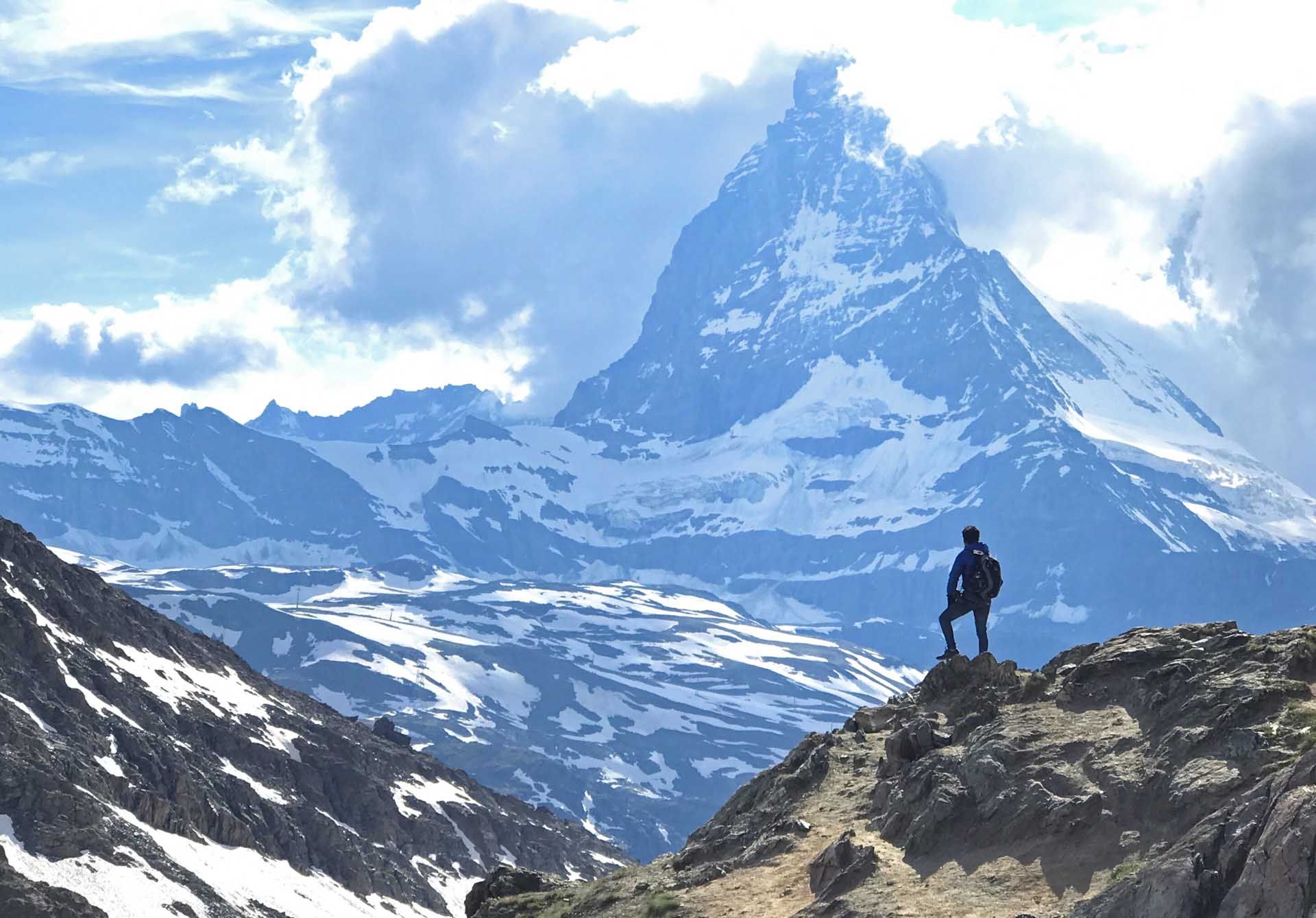
Be mindful of altitude sickness when exploring the likes of the Matterhorn © Shutterstock
It’s essential to have good travel insurance to cover against theft, loss of property and illness or injury.
Before paying for a new policy, however, it’s worth checking whether you’re already covered — home insurance may cover your possessions when overseas.
In addition, many private medical schemes include cover when abroad, and premium bank accounts and/or credit cards often have travel insurance included.
Almost all the country’s hotels, B&Bs and hostels provide internet access for their guests either free or at minimal charge.
Often a terminal is available for guests to use in the lobby, though otherwise wi-fi is pretty standard in hotels, cafés and restaurants throughout the country.
It’s also available for free at railway stations and at Geneva airport.
Best places to stay in Geneva
- Best for couples: Beau Rivage . This classical-style palace boasts the luxury of its 1865 foundation.
- Best for families: Hotel Central . This quiet hotel has excellent-value rooms for three, four and five people.
- Best for Old Town elegance: Les Armures . This 17th-century building is the height of understated luxury.
Explore more of the best places to stay in Geneva .

Lake Zurich as seen from Uetliberg © Oscity/Shutterstock
Wi-fi is also free at Zürich airport, although there’s an hour-long time limit.
Best places to stay in Zürich
- Best for culture vultures: Alma Hotel . An upmarket designer hotel focused on sustainability.
- Best for couples: Hotel Kindli . One of Zürich’s most charming, tranquil hotels.
- Best for nightlife-lovers: Pension Furdich . Backing onto Backeranlage park, this is close to funky bars and clubs.
Browse more of the best places to stay in Zürich .
For devices that are WLAN-enabled, Public Wireless LAN enables surfing with any device at more than 1700 hotspots in Switzerland, charged on an hourly, daily or monthly basis.
Similarly, using a Travelers Wifi Mobile Hotspot allows 4G LTE data access throughout Switzerland. Users can share their portable Wifi with up to ten other devices.
Switzerland is very tolerant towards gay, lesbian and transgender lifestyles. All towns have organisations which serve as a focus for the local scene. National mouthpieces are Pink Cross and Los . Specific city organizations include VoGay in Lausanne .
Best places to stay in Lausanne
- Best for couples: Angleterre & Residence . A classy hotel on the Ouchy waterfront.
- Best for luxury: Beau-Rivage Palace . One of Switzerland’s finest hotels, set in ten-acre waterside gardens.
- Best for families: Elite . Extremely pleasant and well-run, this is Lausanne's best mid-price hotel.
Explore more places to stay in Lausanne .
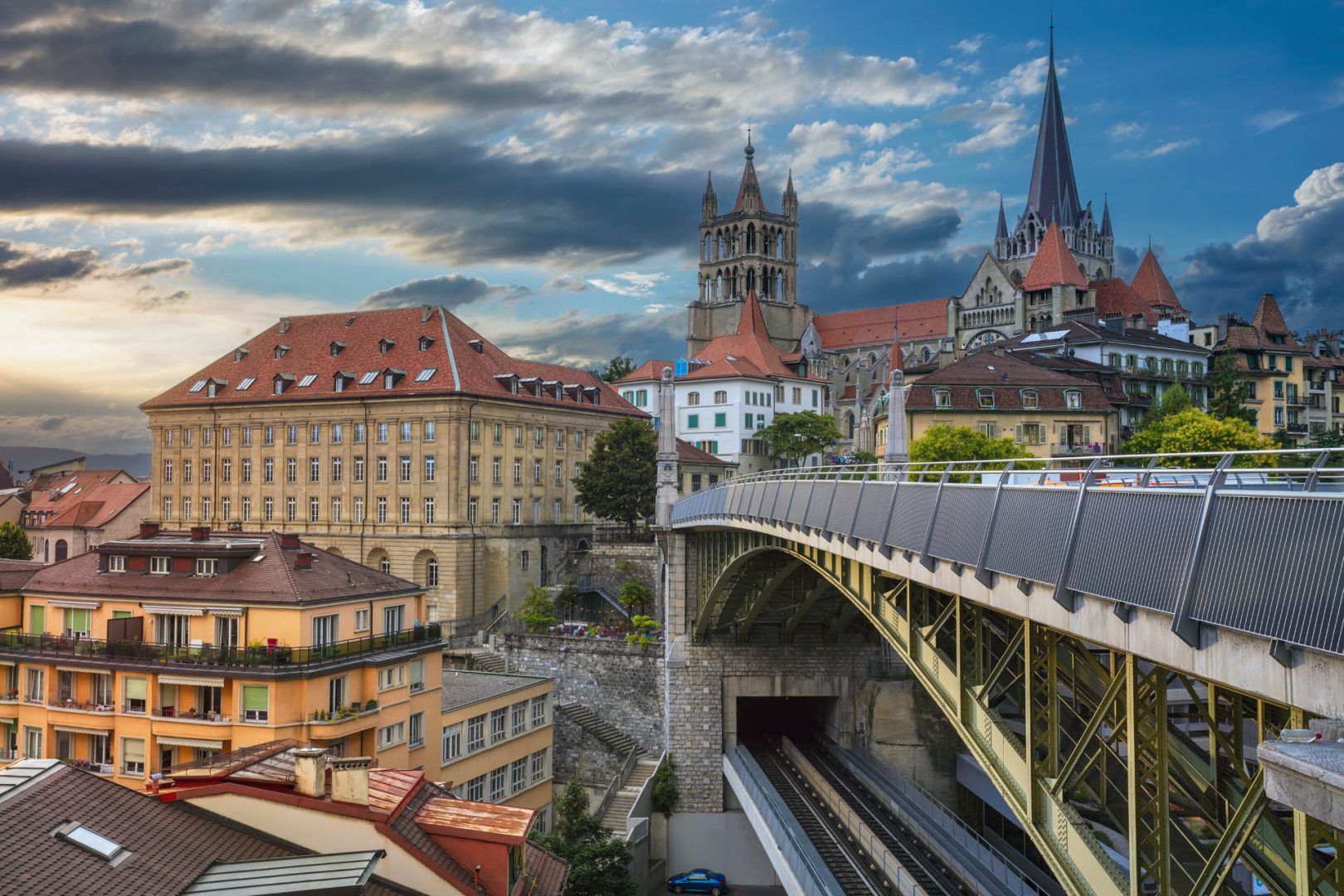
Lausanne is known as the San Francisco of Switzerland © Shutterstock
Prices in Switzerland and Liechtenstein are in Swiss francs. The most common abbreviation is “Fr", but you may also see “fr”, “sFr”, “Sfr”, “SF”, “FS”, or the official bank abbreviation “CHF”.
Each franc is divided into 100; these are called Rappen (Rp.) in German-speaking areas, centimes (c) in francophone areas, and centesimi (also c) in Italian-speaking areas.
There are coins of 5c, 10c, 20c, 50c, Fr.1, Fr.2 and Fr.5, and notes of Fr.10, Fr.20, Fr.50, Fr.100, Fr.200 and Fr.1000.
Tourist brochures often quote hotel prices in CHF and EUR – be sure to check which column you’re reading.
Almost all Swiss banks have English-language ATMs (cash machines) which accept foreign debit and credit cards in a panoply of brands including Visa, MasterCard, EC, Maestro, Cirrus and Plus.
The best place to change cash is usually the desk beside the ticket counters at larger train stations. Rates are identical with the banks, no commission is charged (except at some airport locations), and they’re usually open seven days a week for long hours.
Travellers’ cheques — best purchased in euros, US dollars, sterling or Swiss francs — can only be cashed at bureaux de change in larger stations, and at banks.
Outside larger towns you’ll find most shops and services take a break between noon and 2pm to allow staff to go home for lunch. Otherwise, shop opening hours are roughly Monday to Friday 9am to 6pm, Saturday 9am to 4pm.
Quiet Sundays are sacrosanct. Most towns have late opening until 9pm for one day a week, often Thursday. Exceptions to all this are shops and cafés located beside or within train stations, which generally open daily for long hours.
Banks in cities generally open Monday to Friday 8.30am to 4.30pm, sometimes with a break for lunch. Town and village branches have shorter hours.
Many museums and public attractions close on Mondays, and most cantons supplement national public holidays with local religious holidays.
Liechtenstein has the same Swiss public holidays except 1st August’s Swiss National Day. Liechtenstein’s national holiday is on 15th August. It also celebrates Tag der Arbeit on 1st May.

Basel's Fasnacht carnival © Schweiz Tourismus/Christof Sonderegger
For calls within Switzerland you must dial all ten digits — including the first zero of the area code — even if you’re in the same area.
Numbers beginning t0800 are free; t0900 and t0901 are expensive; t0848 are charged as local calls.
Mobile phone coverage in Switzerland is excellent — you can often get a signal at the tops of mountains, though you shouldn't depend on this when in the wilds, enjoying the best outdoor activities in Switzerland .
The most popular smartphones all work internationally, but to use your mobile (cell phone) in Switzerland, ask your provider about roaming and charges.
As in other parts of the world, you can save huge amounts — up to ninety percent — on international calls by using an international prepaid calling card. Those offered by your own provider will have charges that can be added to your usual bill.
Useful numbers
- Police t117
- Fire t118
- Ambulance t144
- Helicopter rescue t1414/1415
- Enquiries/Operator t1811
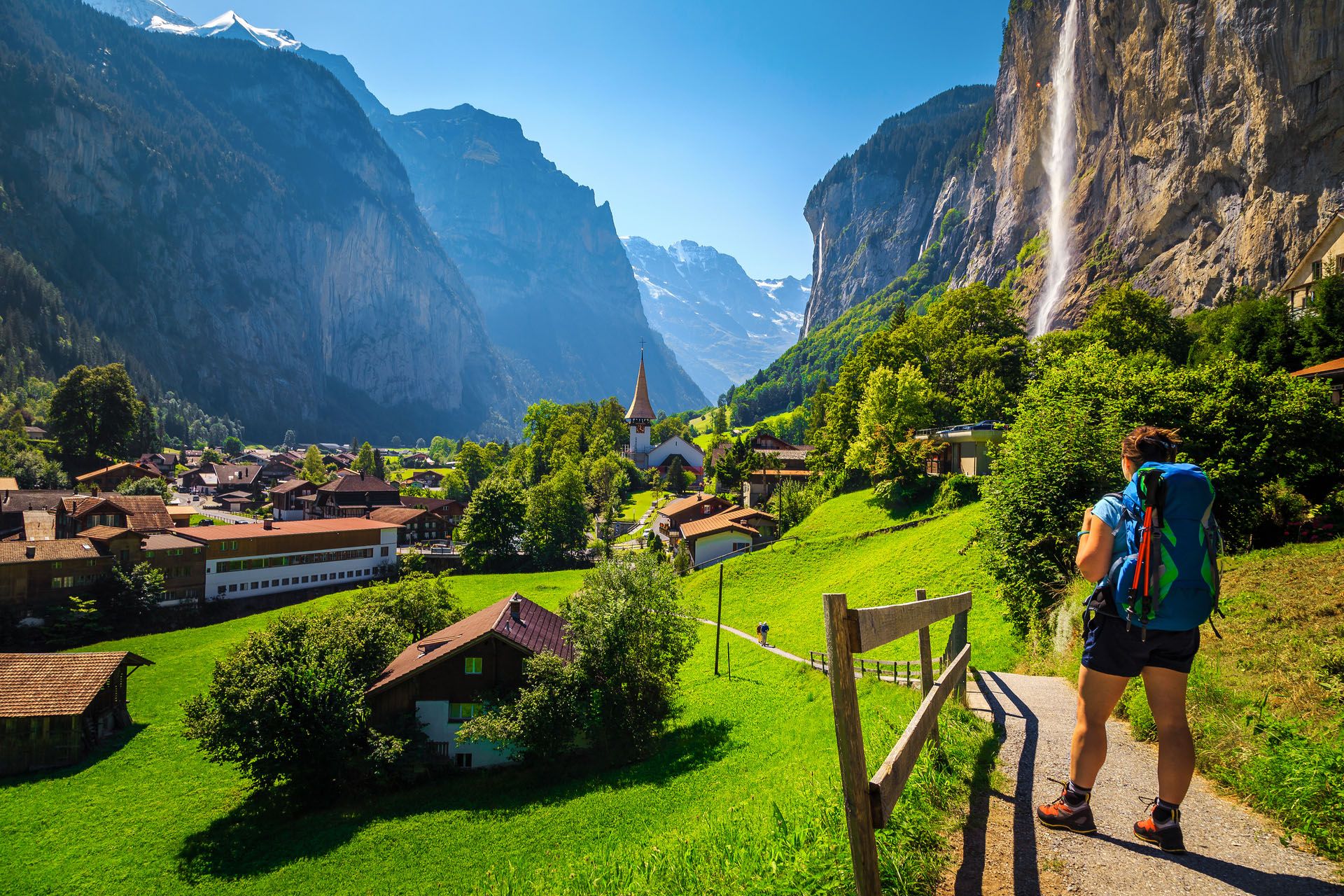
Lauterbrunnen, Switzerland © Gaspar Janos/Shutterstock
Post offices , identified by a yellow logo, generally open Monday to Friday 7.30am to noon and 1.30pm to 6pm, and Saturday 8am to 11am.
That said, you should be mindful of regional variations and restricted hours in smaller branches. Some main offices stay open over the lunch break.
Switzerland is on Central European Time (CET), one hour ahead of London, six hours ahead of New York, and eight hours behind Sydney.
All bar, restaurant and hotel bills are calculated with fifteen percent service included. Staff are on proper salaries and tipping is officially abolished.
That said, unless service was truly diabolical, everyone rounds up to the nearest franc. In restaurants, it’s common to add two or three francs.
Learn more about culture and etiquette in Switzerland — from meeting and greeting, to dining out.
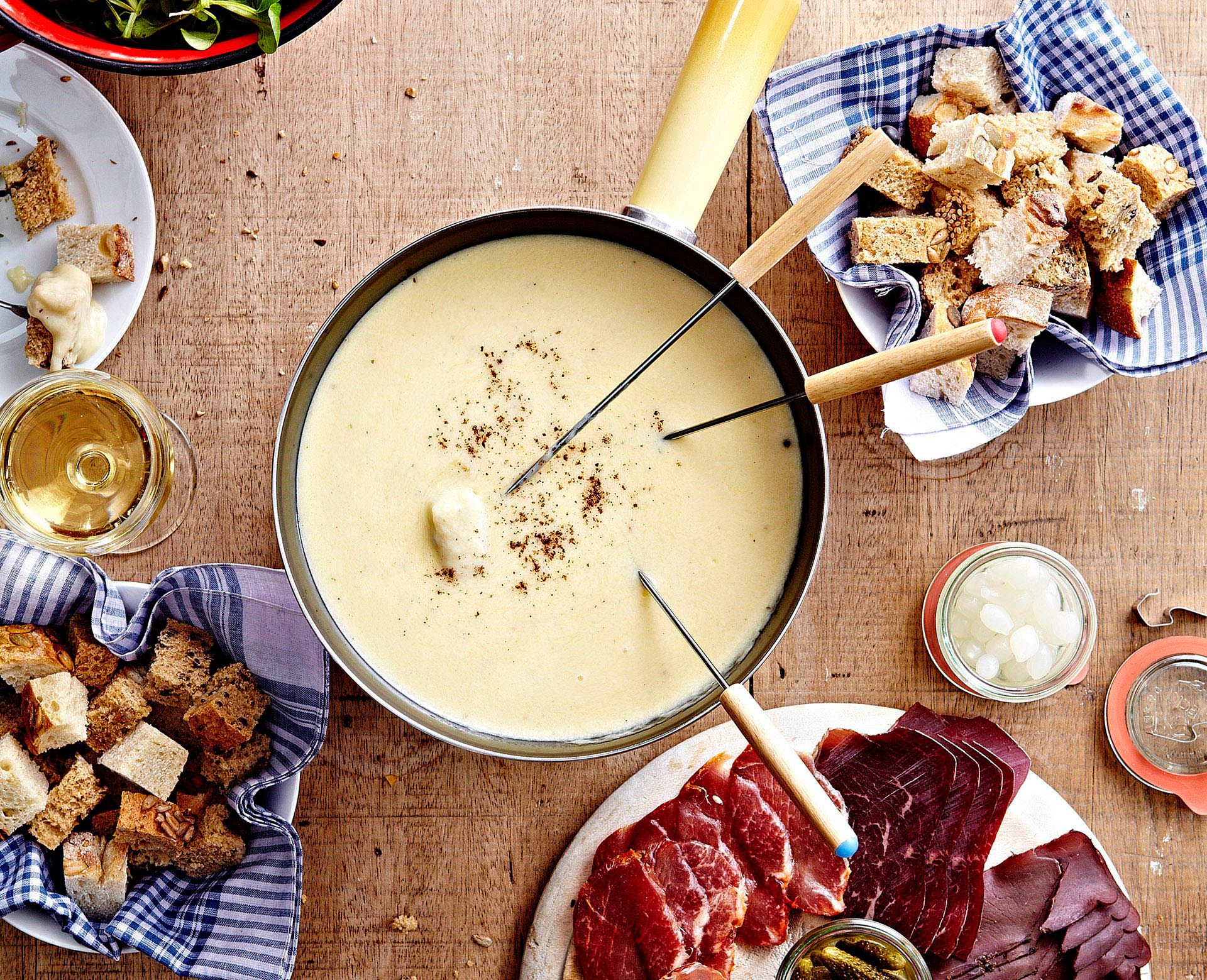
Cheese fondue — Switzerland’s national dish © Shulevskyy Volodymyr/Shutterstock
Switzerland Tourism is a treasure trove of Switzerland travel tips, with details about visiting all corners of the country, plus virtual tours, weather forecasts, maps, and special offers.
All Swiss cities, virtually all towns, and a sizeable number of villages have a tourist office. These are almost always located beside or near the train station.
Most staff speak at least some English and can provide you with free local maps, lists of hotels, restaurants, campsites and rental apartments, and information on local sights, events and transport.
Most offices sell hiking maps and guides to the surrounding area. Some sell transport tickets and parking permits.
During the low season (in the mountains this means mid-Oct to mid-Dec plus April & May; elsewhere Sept–June), many tourist offices outside major cities and resorts have limited seasonal hours, perhaps only Monday to Friday 9am to noon and 2pm to 5pm, plus Saturday morning.
If you miss these times, it’s still worth going to the office as many keep leaflets outside. Alternatively, ask at the train station, where staff often keep brochures behind the counter.
Switzerland is one of the most enlightened European countries for travellers with disabilities — you’ll find most facilities have been designed with everybody in mind.
There’s lots of material at Switzerland Tourism — look for the sections “Barrier-free travel” and “Barrier-free accommodation.”
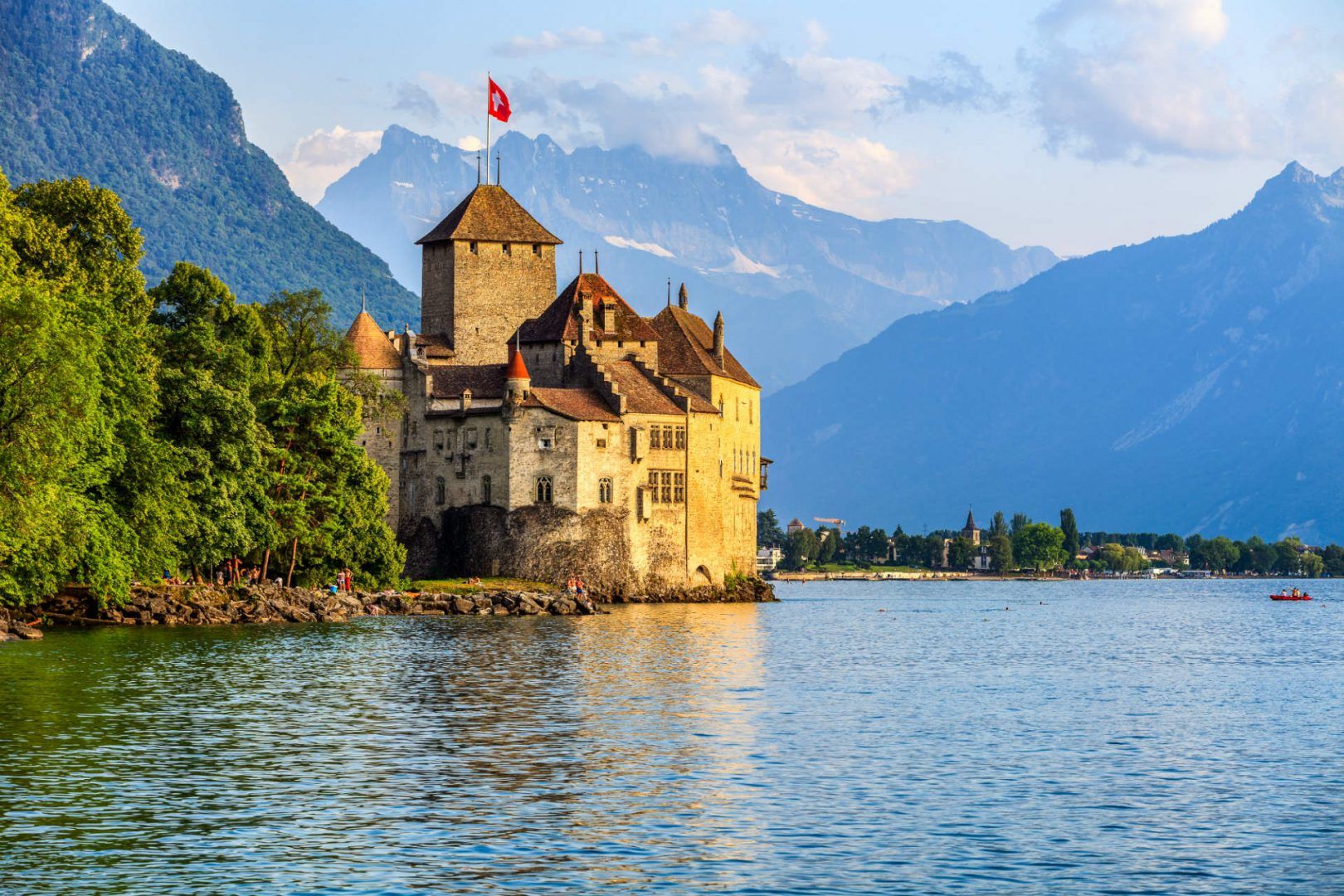
Chillon Castle, Lake Geneva, Switzerland © FenlioQ/Shutterstock
For more Switzerland travel tips read The Rough Guide to Switzerland , and arm yourself with info on accommodation in Switzerland .
In addition, our run-down of things not to miss in Switzerland will help you plan.
Not a fan of planning? Consider booking a hassle-free tailor-made trip to Switzerland, with customisable itineraries curated by local experts covering everything from unforgettable highlights of Switzerland , to touring the Grand Circle .
We may earn commission when you click on links in this article, but this doesn’t influence our editorial standards. We only recommend services we genuinely believe will enhance your travel experiences.
Related articles from the blog

The Rough Guides to Switzerland and related travel guides
In-depth, easy-to-use travel guides filled with expert advice.

Travel advice for Switzerland
Find even more inspiration here, ready to travel and discover switzerland, get support from our local experts for stress-free planning & worry-free travels.
- Where to stay
- Travel advice
- Switzerland Travel Guide
- Switzerland Travel Tips
- Switzerland News
- Switzerland Gallery
Log in with user name:
Log in with social media:
Get FREE email communications from Fodor's Travel, covering must-see travel destinations, expert trip planning advice, and travel inspiration to fuel your passion.
- Switzerland
- Travel Tips
Switzerland TRAVEL GUIDE

Fodor's Essential Switzerland Whether you want to ski in the shadow of the Matterhorn, try fondue in Gruyères, or hike...
Whether on snow-capped mountains or in glitzy resort towns, you can experience the high life in Switzerland. Visitors are elated by its soaring outdoor recreation, riding cable cars up peaks near the Matterhorn, sipping Swiss wine while cruising on a crystalline alpine lake, and skiing the immaculate slopes of St. Moritz. At the end of the day, lavish spas beckon, along with lively après ski scenes and pots of fondue. Sophisticated cities like Zurich and Geneva take luxury to new heights, with posh boutiques and upscale restaurants lining their cobblestoned streets.
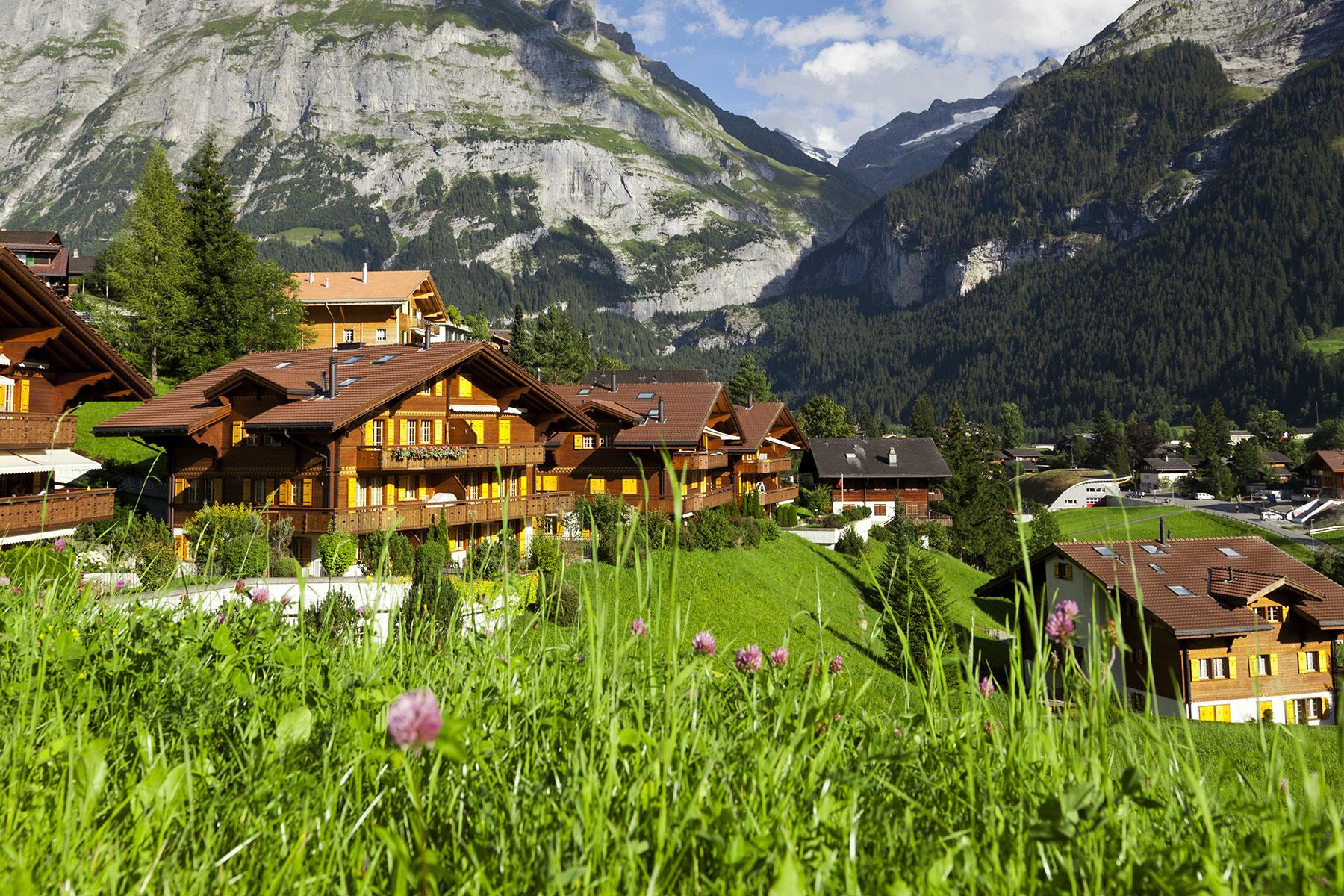
ULTIMATE EXPERIENCES
25 ultimate things to do in switzerland.
Kelly DiNardo

FODOR'S FINEST
The best hotels in europe.
- The Dolder Grand Zurich, Switzerland
Find a Hotel
Top destinations.
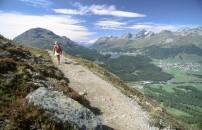
Although the names of its biggest resorts, such as St. Moritz and Davos, register almost automatic recognition, the region wrapped around them remains surprisingly unsung...
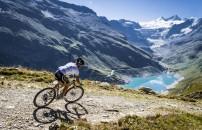
For many visitors, Valais is the only part of Switzerland they ever see—and for good reason. After all, 40 of the 52 13,000-foot peaks in...
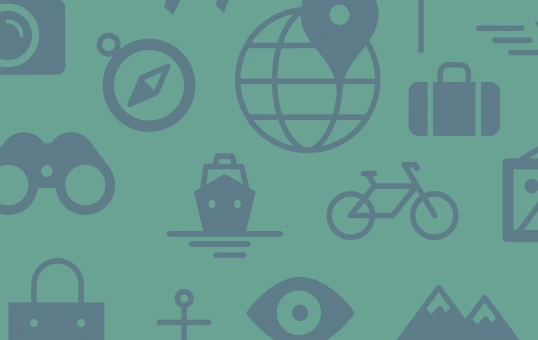
In just one region, you can experience a complete cultural, gastronomic, and scenic sweep of Switzerland. Vaud (pronounced Voh) has a stunning Gothic cathedral (Lausanne)...
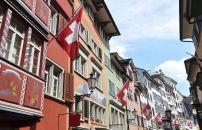
Zürich, which sits astride the Limmat River at the point where it emerges from the Zürichsee (Lake Zürich), is a beautiful city. Its charming Altstadt...

Long known for its watches, chocolate, and banks, Geneva is a postcard-perfect city with a rich history as a haven for cultural freethinkers and a...
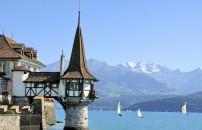
Berner Oberland
There are times when the reality of Switzerland puts postcard idealization to shame, surpassing advertising-image peaks and skies. Those times happen most often in the...
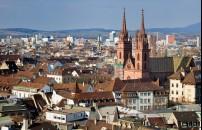
Although it lacks the gilt and glitter of Zürich and the Latin grace of Geneva, in many ways Basel (Bâle in French) is more sophisticated...
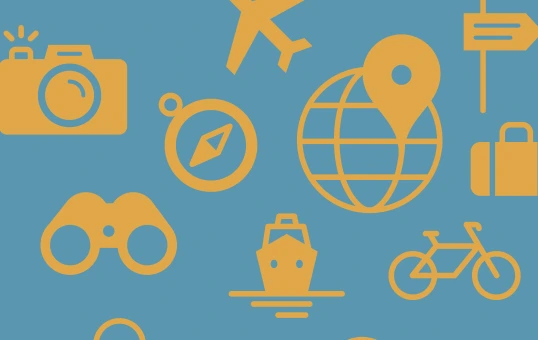
Ticino is a canton apart: graceful, open, laissez-faire. This is the most glamorous of Swiss regions: the waterfront promenades of Lugano, Locarno, and Ascona contain...
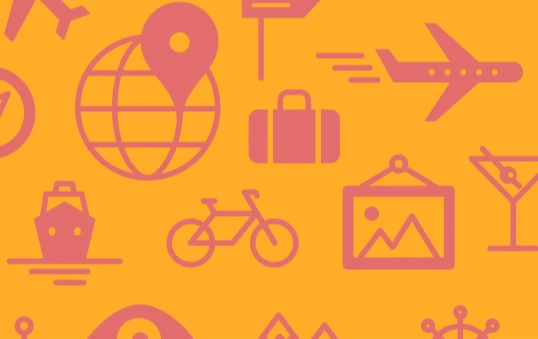
Luzern and Central Switzerland
With the mist rising off the water and the mountains looming above in the morning sun, it’s easy to understand why people are mesmerized by...

Bern, the federal capital of Switzerland, is a picturesque medieval city whose creators had a keen eye for detail—a trait shared by today’s inhabitants, who...

Eastern Switzerland
Switzerland’s Germanic region bordering Germany and Austria should scream authenticity. Instead, it moos. With almost more cows (and alphorns) than people, Zürich’s quiet neighbor offers...

Fribourg and Neuchâtel
Shouldered by the more prominent cantons of Bern and Vaud, Fribourg and Neuchâtel are easily overlooked by hurried visitors. If they do stop, it is...
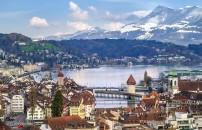
Luzern city is a convenient base for excursions all over central Switzerland. The countryside here is tame, and the vast Vierwaldstättersee offers a prime opportunity...
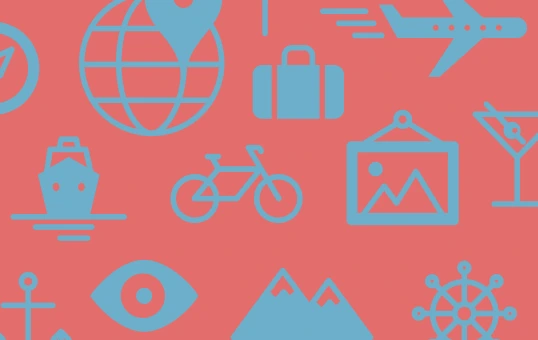
"Lausanne is a block of picturesque houses, spilling over two or three gorges, which spread from the same central knot, and are crowned by a...
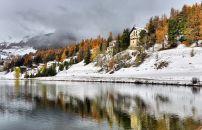
Who put the ritz in St. Moritz? Undoubtedly, St. Moritz's reputation was made by the people who go there and who have been going there...
Strung around a sparkling bay like Venetian glass beads, with dark, conical mountains rising out of its waters and icy peaks framing the scene, Lugano...
- Zermatt and the Matterhorn
Despite its fame—which stems from the iconic Matterhorn and its excellent ski facilities—Zermatt is a resort with its feet on the ground. It protects its...
Often touted as a town without character, Interlaken has patiently borne the brunt of being called "the best place in Switzerland to get away from"—but...
- Crans-Montana
This French-speaking resort rises above the valley on a steep, sheltered shelf at 4,904 feet. It commands a broad view across the Rhône Valley to...
Between the rich pasturelands of the Swiss plateau and the Alpine foothills, the Sarine River (called the Saane by German speakers) twists in an S-curve...
A big part of Verbier's appeal is skiing on sunny slopes and the fact that it has a high-tech, state-of-the-art sports complex that links Quatre...
Switzerland's largest eastern city, bustling St. Gallen is dominated by students during the school year. The narrow streets of the Altstadt (Old Town) are flanked...
At 5,116 feet, this highest "city" (stretching the definition) in Europe is good for cold-weather sports even in the soggiest of winters. Davos is famous...
Thanks to its altitude of 5,900 feet, the picturesque village of Arosa is a well-known year-round sports center, offering brisk hiking, paragliding, and other activities...
At the foot of the Jura Mountains, flanked by vineyards and facing southeast, the city of Neuchâtel enjoys panoramic views of Lac de Neuchâtel and...
In the 1870s Henry James captured this waterfront town's mood of prim grace while writing (and setting) Daisy Miller in the Hôtel des Trois Couronnes...
Montreux might be called the Cannes of Lac Léman—though it might raise an eyebrow at the slur. Spilling down steep hillsides into a sunny south-facing...
On a south-facing shelf along the Flaz Valley, Pontresina is a beautiful resort town. It grew by converting its farmhouses to pensions and hotels for...
Superbly placed on the sheltered curve of the northernmost tip of Lago Maggiore and surrounded on all sides by mountains, Locarno is Switzerland's sunniest town...
Quieter and more low-key than Zermatt is the village of Saas-Fee, a car-free mountain resort with a family-friendly vibe. Saas-Fee also has a fantastic network...
The four fingerlike valleys of the Saanenland find their palm at Gstaad, the Berner Oberland's most glamorous resort. Linking the Berner Oberland with the French-speaking...
- Grindelwald
Not counting its sheer Alpine beauty (3,393 feet), this town remains among the most popular in the Berner Oberland for the simple reason that it...
At one time simply a group of hamlets, Klosters has become a small but chic resort, made up mostly of weathered-wood and white-stucco chalets. The...
- Schaffhausen
A city of about 37,000, Schaffhausen was from the early Middle Ages on an important depot for river cargoes, which—because of the rapids and waterfall...
Rearing up in the otherwise deltalike flatlands of the western Valais, two otherworldly twin hills flank the ancient city of Sion. The two hills together...
Isolated from St. Gallen by a ridge of green hills, Appenzell is divided into two sub-cantons, Appenzell Ausserrhoden and Appenzell Innerrhoden. Both make up one...
Narrow streets, cobblestone alleys, hidden courtyards, and ancient shuttered buildings hint that this Alpine city is the oldest city in Switzerland. The biggest little town...
- Scuol and Tarasp-Vulpera
The villages of Scuol and Tarasp-Vulpera effectively form one large resort, although a car or bus is needed to travel between the two. The area...
All roads lead to Bellinzona, the fortified valley city that guards the important European crossroads of the St. Gotthard and San Bernardino routes. The capital...
- Stein-am-Rhein
The riverside Stein am Rhein is one of Switzerland's loveliest (and wealthiest) communities. It lies at a pivotal point where the Rhine leaves the Bodensee...
Although it's only a few minutes from Locarno, tiny Ascona has a life of its own. The town was little more than a fishing village...
Mürren is perched on a mountaintop shelf—5,361 feet high, to be precise. This village, along with neighboring Wengen, has always lured the rich and famous...
At 4,628 feet, Leukerbad, called Loèche-les-Bains in French, is Europe's highest spa village; travelers have been ascending to this Alpine retreat for centuries to take...
- St-Saphorin
At the end of the Corniche Road, just west of Vevey, St-Saphorin is perched above the water. With its impossibly narrow, steep cobbled streets and...
Rising above the plain on a rocky crag against a backdrop of Alpine foothills, the castle village of Gruyères seduces from afar. This perfect specimen...
Above this graceful little village full of fountains, vineyards, and old stucco houses, the Zürich author Johanna Spyri set Heidi, the much-loved children's story of...
- Les Alpes Vaudoises
At the eastern tip of Lac Léman, the Alps on the French and Swiss sides close in on the Rhône, and the lakefront highways begin...
The ancient town of Murten, known in French as Morat, is a popular resort on the Murtensee/Lac de Morat (Lake Murten). The bilingual town has...
Ice-capped peaks with small mountain resorts staggered up their spines rim the Aletsch, a glacier that shares its name with the area surrounding it, paralleling...
- Les Diablerets
This small resort (3,806 feet) lies at the base of the 10,525-foot peak of the same name—which sheds the dramatic namesake 9,840-foot glacier. The village...
- Lauterbrunnen
Acclaimed by Alfred, Lord Tennyson, as "the stateliest bit of landstrip," the Lauterbrunnen Valley is often ranked as one of the most beautiful places in...
For a quintessentially scenic spot, stop over in Vitznau, a tiny waterfront resort that competes with Weggis for the balmiest weather. Small as this village...
The romantic waterfront village of Brienz, world renowned for its wood carving, is a favorite stop for people traveling by boat as well as by...
Built on an island in the River Aare as it flows from Lake Thun, this picturesque market town is laced with rushing streams crossed by...
With a pretty waterfront park and promenade, Weggis is a summer resort town known for its mild, almost subtropical climate—little wonder that it is a...
On the waterfront just west of the urban sprawl of Lausanne, Morges is a pleasant lake town favored by sailors and devotees of its Fête...
- Val d'Anniviers
If you drive east of Sierre and south of the Rhône, following signs for Vissoie, you enter a wild and craggy valley called Val d'Anniviers...
Lovely Nyon, with its waterfront drive, shops, museums, and a castle dominating its cliff-top Old Town, was founded by Julius Caesar around 45 BC as...
In the heart of lush valley terrain and mossy meadows, Stans is an old village whose appealing Old Town center is dotted with the deep-roof...
- Toggenburg Valley
This historic town is the capital of the canton Schwyz, root of the name Switzerland and source of the nation's flag. Switzerland's most precious archives...
- Yverdon-les-Bains
With a center closed to traffic, Yverdon-les-Bains is a charming, bustling place. Located at the southernmost tip of Lac de Neuchâtel, this pastel-colored lakefront town...
Between Liechtenstein and Zürich, the spectacular, blue-green lake called the Walensee stretches 16 km (10 miles) through the mountains, reflecting the jagged Churfirsten peaks. Once...
With its mild climate and lakeside location, Spiez provides a striking contrast to the snowy Alps. A good reason to visit might be the nearby...
- Estavayer-le-Lac
Along with its history-soaked and highly picturesque Old Town (in summer, don't miss the Saturday morning market bursting with local produce), lakeside Estavayer is a...
You'll see the elegant hillside château that's home to the national museum before you reach this little commune, where the pace of life moves gently...
At the foot of the Col du Grand St-Bernard, Martigny has long been a commercial crossroads. A small, primarily residential town backed by vineyards, it...
At the southernmost tip of the glorious Ceresio Peninsula is the atmospheric village of Morcote, its clay-colored houses and arcades looking directly over the waterfront...
Set apart from the twin lakes and saddled between the roads to the Sustenpass and the Brünigpass, Meiringen is a resort town with more than...
Pushed up against a stern, gray rock face, this small town is quiet and peaceful, with patrician homes lining its Grand-Rue. Once a customs station...
- Hilterfingen and Oberhofen
Lake Thun is famous for its waterside castles, and Hilterfingen and Oberhofen, a little farther along the shore, have two of the best...
Known in English as Lake Constance, the Bodensee is about 65 km (40 miles) long and 15 km (9 miles) wide, making it second in...
- Parc Naziunal Svizzer
This Swiss National Park is a magnificent federal preserve of virtually virgin wilderness teeming with local wildlife...
A rail and road junction joining four cantons, this small but vital town for centuries has been a center of trade with Italy. Often overlooked...
Lord Byron, Consuelo Vanderbilt (the Duchess of Marlborough), and other posh folks put Wengen on the map, spreading the word about its incomparable eagle's-nest perch...
Schiller's play Wilhelm Tell sums up the tale for the Swiss, who perform his play religiously in venues all over the country—including the town of...
The meandering streets in this market town are filled with pastel-painted 18th-century buildings, now converted to shops and restaurants. The star attraction, however, remains the...
In the heart of Swiss Italy lies Campione. Here, in this southernmost of regions, the police cars have Swiss license plates but the officers inside...
Set on a lovely and picturesque peninsula jutting out into the quiet waters of the lake, Iseltwald has a bevy of cafés, rental chalets, and...
- Mt. Pilatus
Unlike Queen Victoria, who rode to the summit of this 6,953-foot mountain by mule in 1868, you can travel to Mt. Pilatus via cable car...
- Kreuzlingen and Konstanz
The German city of Konstanz, with its Swiss-side twin of Kreuzlingen, dominates the straits that open into the Bodensee. Though Kreuzlingen itself offers little of...
- Col du Grand St-Bernard
Although its narrow waterfront streets are crowded with tourists, the tiny historic village of Gandria still merits a visit, either by boat or by car...
This friendly little crossroads, the last town before the higher valley of the Inn, lies along the route over the Ofen Pass to the Val...
From its origins as a simple fishing village, this medieval town on the skirt hem of Lausanne expanded in the 11th century with the installation...
Chateau-d'Oex
At the crossroads between the Col des Mosses highway to Aigle and the Valais and the route to the Berner Oberland lies Château-d'Oex (pronounced day)...
- Route du Vignoble
Parallel to the waterfront highway, threading through the steep-sloping vineyards between Nyon and Lausanne, the Route du Vignoble (Vineyard Road) unfolds a rolling green landscape...
- Bürgenstock
The rich have always headed to Lake Luzern, thanks, in good part, to the famous Bürgenstock hotel resort. This high-end hideaway, perched atop its own...
On a smooth plain flanked by the sloping vineyards of the region of Le Chablais, Aigle is a scenic wine center...
East of Stein-am-Rhein the Rhine opens up into the Untersee, the lower branch of the Bodensee. In its center lies the German island of Reichenau...
The village of Gottlieben has a Dominican monastery-castle, where the Protestant reformers Jan Hus and Jerome of Prague were imprisoned in the 15th century by...
Mt. Säntis bills itself as “the mountain,” and it’s hard to argue with that. Soaring 8,209 feet, it offers Alpine views as stunning as its...
With more than 17,000 inhabitants, the town of Bulle has many attractions worthy of a larger destination: a castle (not open to the public), three-story...
A tour of the Old Town of Grandson is eminently worthwhile. The church, tower, fountains, and narrow streets lined with extraordinary facades make this a...
The best way to approach this 13th-century town of two broad streets is to leave the highway and drive up to its castle terrace. The...
The former main road through the Inn Valley (Engadine) was higher up on the slopes than today's road. It passed through Guarda, one of a...
Wilhelm Tell was supposedly from the tiny, turreted town of Bürglen, just up the road from Altdorf...
- Rütli Meadow
At the south end of Lake Luzern, past the gorgeously scenic Seelisberg Peninsula, the narrow, majestic Urnersee accesses some of the most legendary landmarks in...
- Valle Verzasca
Ticino's mountain valleys, just a short distance from its major cities, are rugged reminders of the region's modest history. Stone homes, called rustici, dot the...
- Lenzerheide and Valbella
- Simplon Pass
Beginning just outside Brig, this historic road meanders through deep gorges and wide, barren, rock-strewn pastures to offer increasingly beautiful views back toward Brig. At...
- Tellskapelle
Have your camera ready for this magnificently picturesque lakeside chapel, set at the foot of the Axen mountain...
Kander Valley
All destinations expand all collapse all.
- Basel Environs
- Colonia Augusta Raurica (Augst)
- Altstadt (Old Town) and City Center
- Barengraben and Rosengarten
- Greater Bern
- Museum District
- International Area
- Rive Droite (Right Bank)
- Rive Gauche (Left Bank)
Top Experiences
- Things to Do
- Restaurants
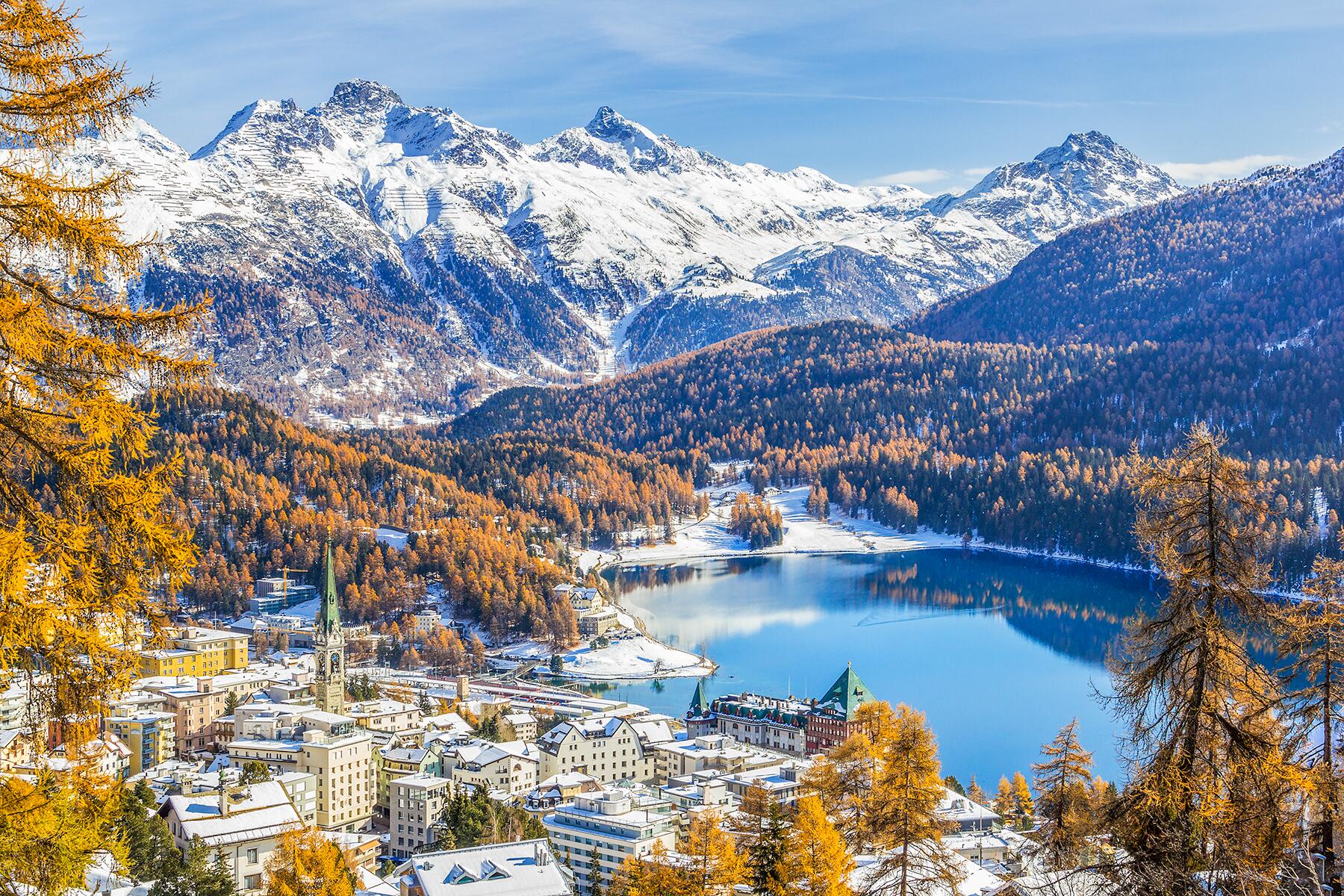
This European Country Has a Town for Every Type of Traveler
Kayla Becker
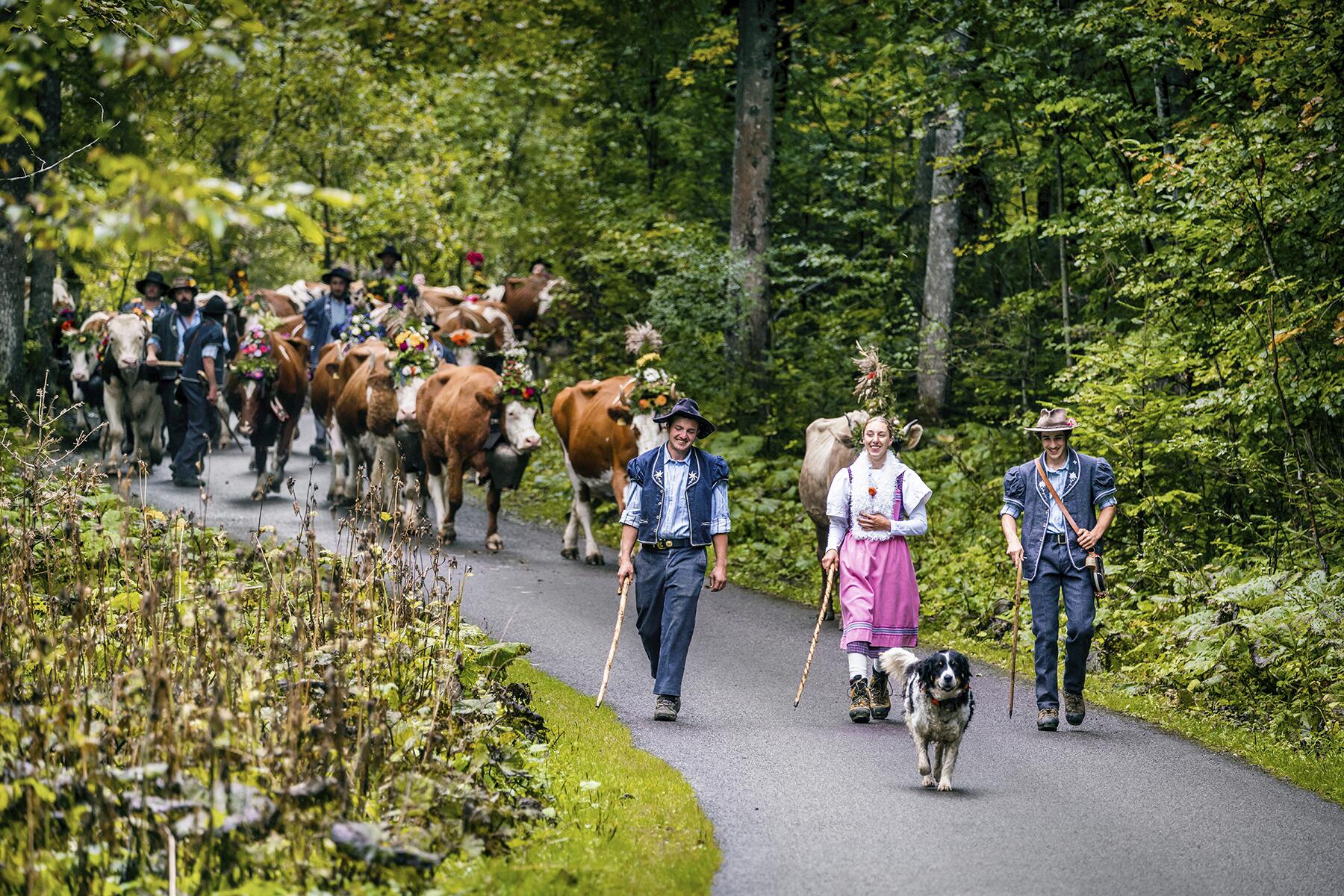
Your Favorite Cheese Might Be Extinct Soon
Michelle Tchea
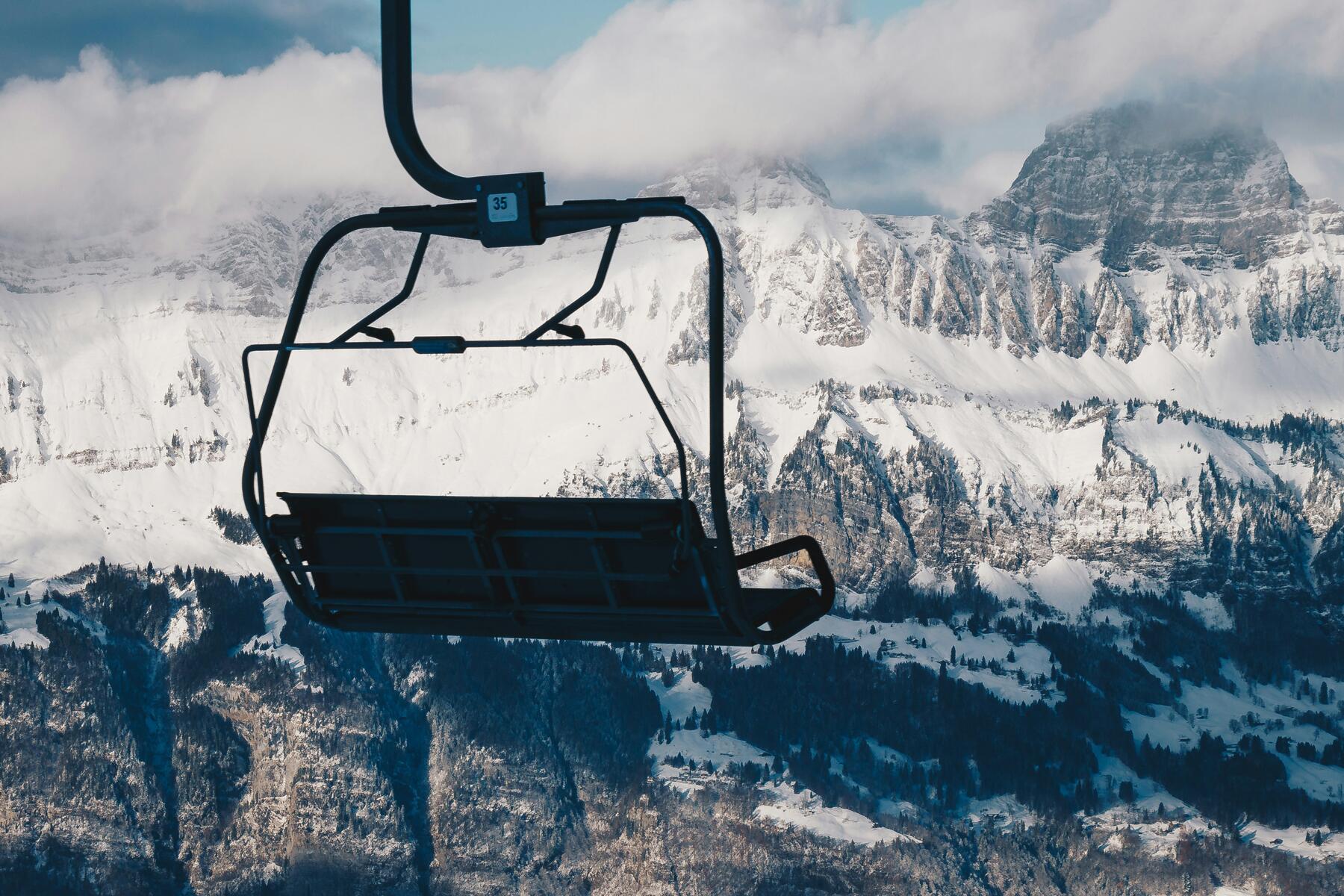
I’m in My 40s and Don’t Know How to Ski. I Shocked My Friends When I Told Them How I Planned to Learn
Bianca Bujan

The Mystical Appeal of Switzerland’s Thermal Baths Inspired a Graphic Novel
Stacey Lastoe
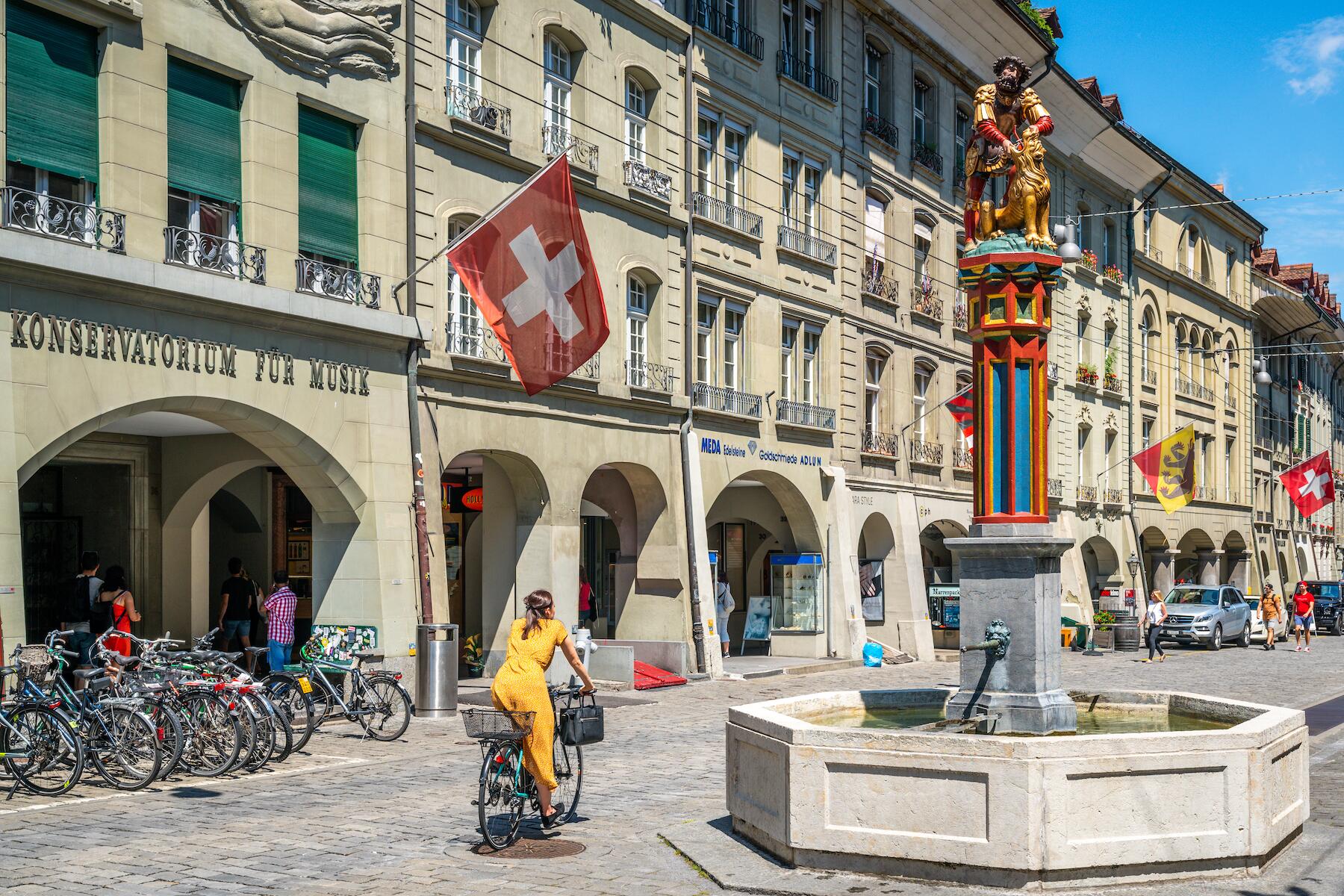
Arts & Culture
One Small Town, Many Strange Fountains
Ronan O'Connell
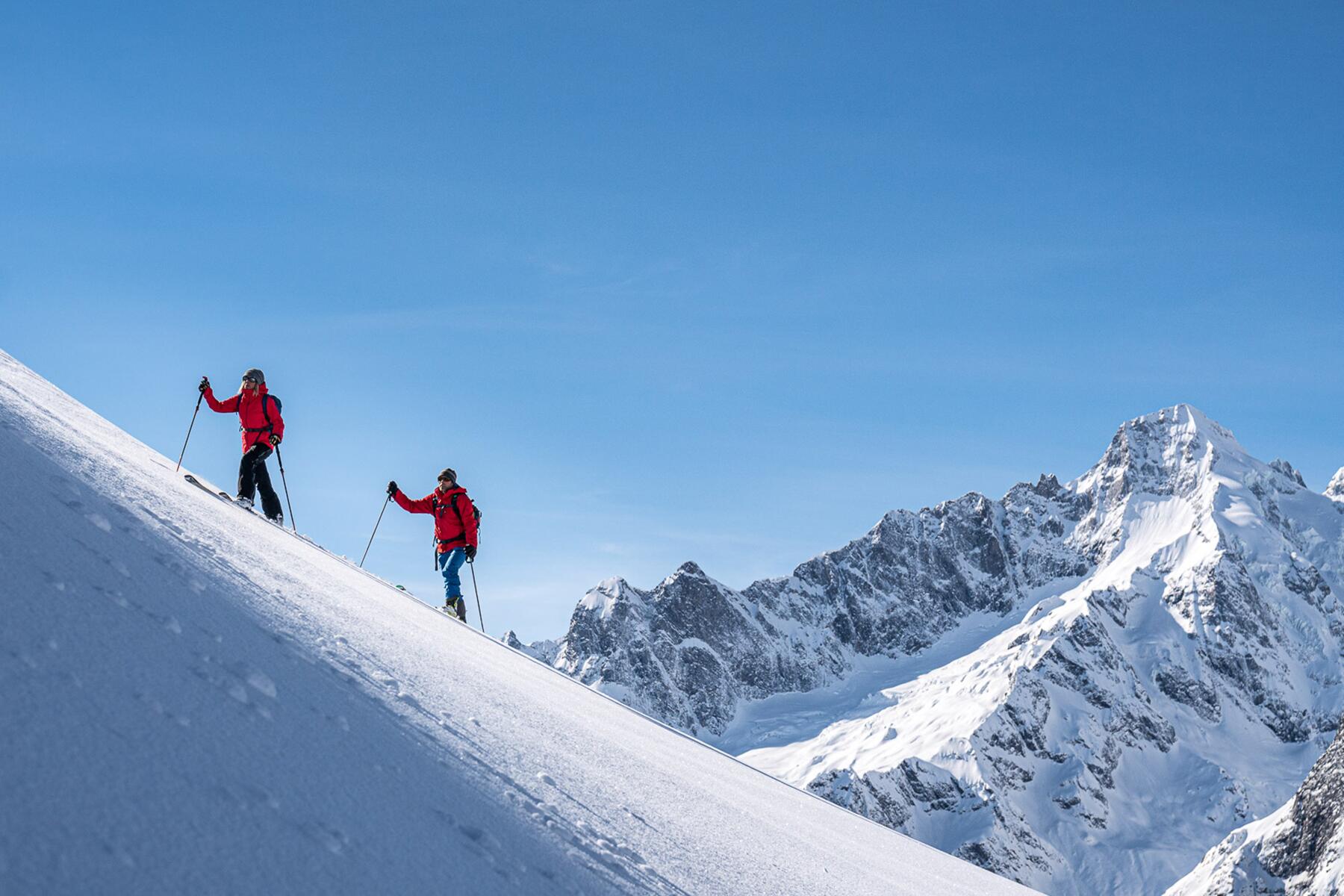
150 Years After Lucy Walker Climbed the Matterhorn, Women Are Taking up the “Peak Challenge”
Recent forum posts, switzerland - 10 day trip10th anniversary aug'24 advice, new years in switzerland, montreux (switzerland) - can i take belle époque train with riviera card, switzerland familiy of 4 / august 2024, see all posts.
Our worldwide travel correspondents bring you the best and most up-to-date coverage of over 7,500 global destinations.
- Destinations
- Advertising
- Fodor’s Travel Use of this site indicates your consent to the Terms of Use. Copyright © 2024 by MH Sub I, LLC dba Internet Brands. Fodor’s is a registered trademark of MH Sub I, LLC dba Internet Brands. All rights reserved.
Thank you for your interest!

Switzerland Travel

Switzerland is one of my top 3 favorite countries in Europe.
I first fell in love with the country when I was working in Barcelona as a tour operator, creating travel itineraries for travel groups. Switzerland was one of the countries on my list for which I was creating packages and communicating with local partners .
And that’s when my Swiss story started . I left Barcelona and my job when I needed a change… packed my backpack and set off for a month of adventures in Switzerland . I lived with a local family on a cheese farm above Brienz , overlooking the Swiss Alps.
Afterward, I explored all the places on my Swiss bucket list that were for so long only on the paper travel itineraries created for my clients.
Switzerland then became my home for 3 years . I lived in 3 different locations ( Grindelwald / Interlaken , Flims, Davos) and worked in Switzerland in hotels at the front desk and as a concierge, recommending activities for the guests (+ improving my German skills).
Besides, I traveled extensively through the country, exploring many places and writing articles for you.
I’ve reflected on my love for Switzerland and travel/life experience in the country in all my articles. So you can choose the right places for your Swiss trip and have unique experiences .

Best Of Switzerland Itinerary: 8 Days By Train
First, get my 8-day Switzerland Itinerary to explore the highlights and get to know the country in-depth.

Honeymoon In Switzerland: How To Plan Your Romantic Gateway In 2024
Do you want to spend your honeymoon in Switzerland? Check out this guide for the perfect romantic trip, or let me plan it for you.

3 Days In Switzerland: 11 Itineraries For Different Travelers & Seasons
Do you only have 3 days in Switzerland ? Check out these 11 itineraries I’ve designed for different travel styles and seasons. Pick one and explore the Swiss highlights in just 3 days .
Swiss Travel Essentials
When putting together an itinerary for Switzerland, a couple of things have to be on your list.
You must make at least 1 mountain excursion , have a travel pass , ride on 1 panoramic train , go hiking, and know how to budget your trip .
So here are my essential articles for Switzerland that will help you prepare for your Swiss trip .

Is Switzerland Expensive? Ultimate Guide To Budget Your Trip In 2024
November 10, 2023
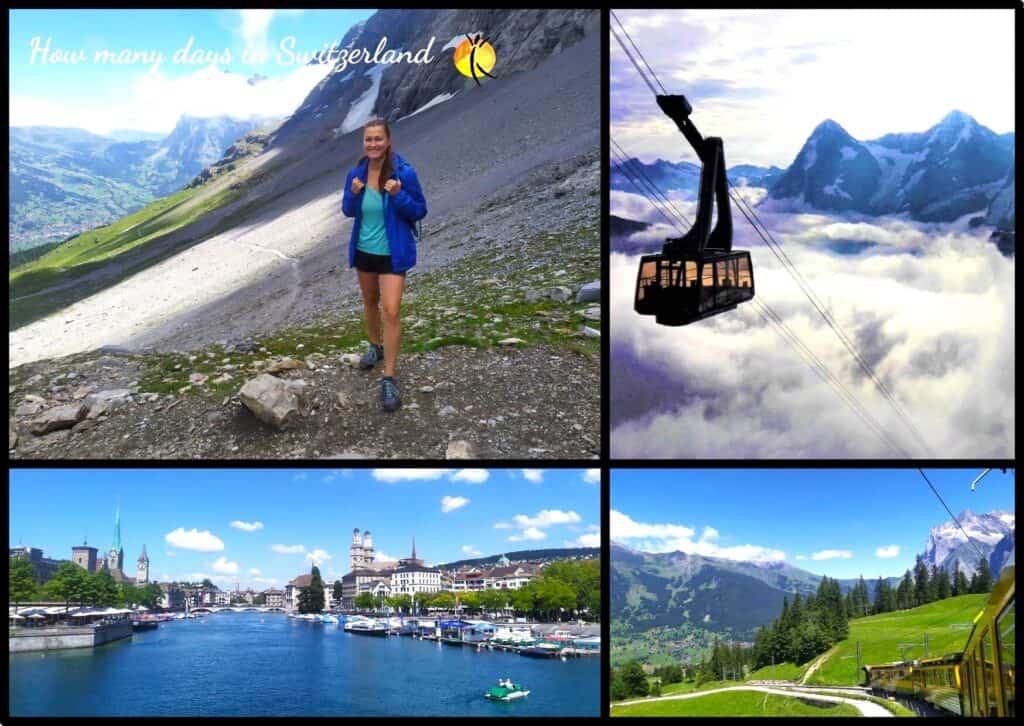
How Many Days In Switzerland Is Enough? Revealed!
December 7, 2023
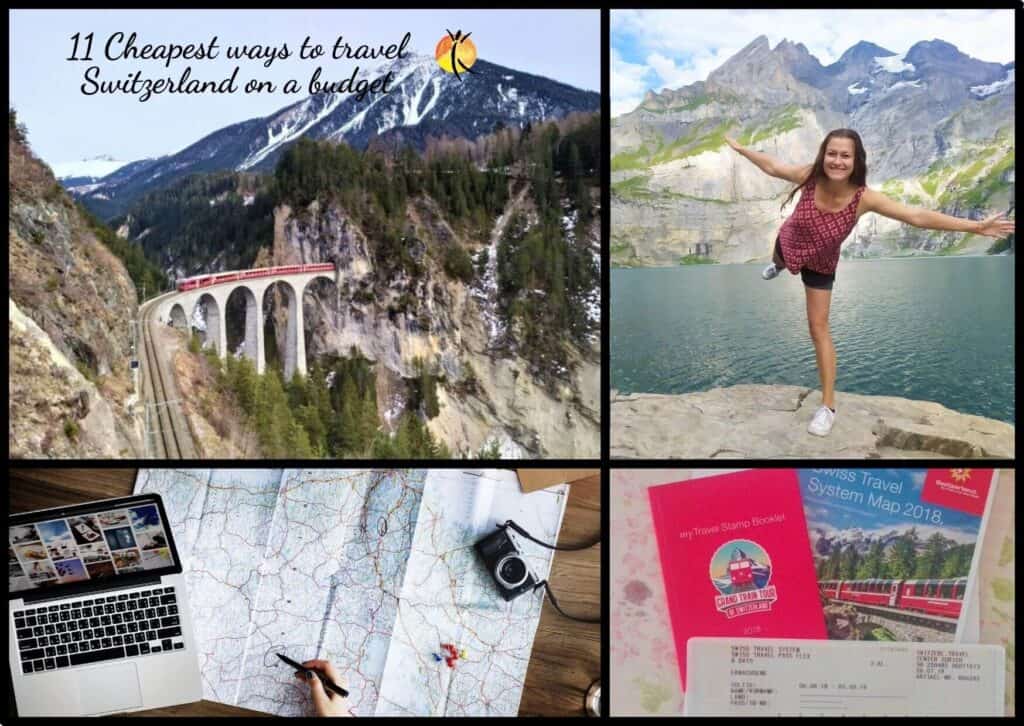
11 Cheapest Ways To Travel Switzerland On A Budget [2024]
October 30, 2023
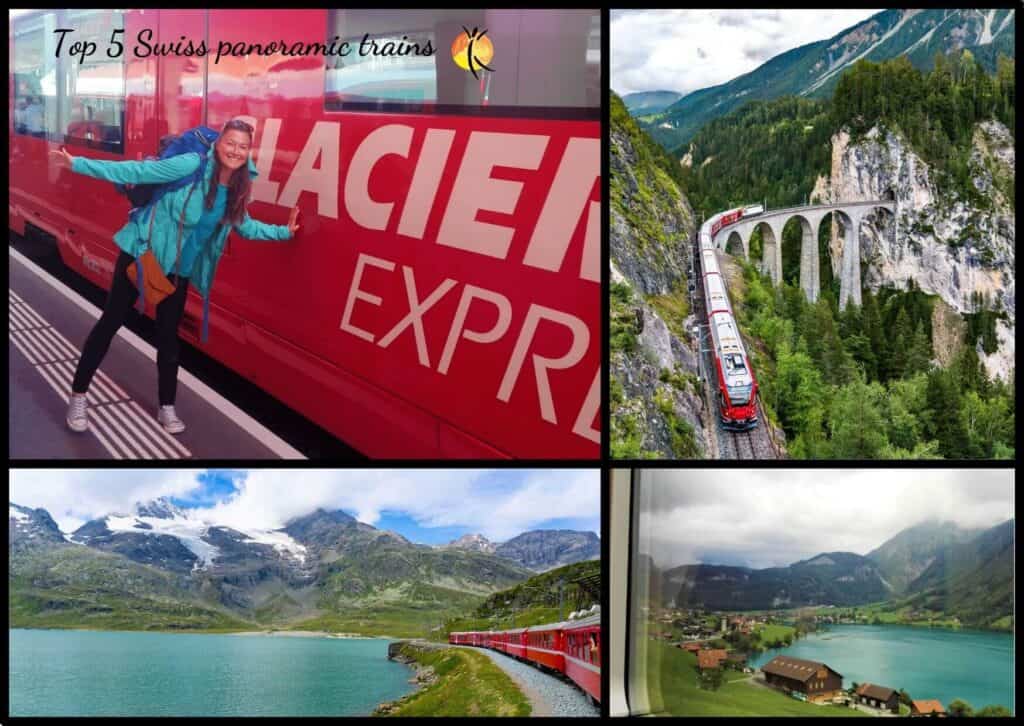
5 Best Panoramic Trains In Switzerland: Ultimate Guide [2024]
September 3, 2023

Does Switzerland Use The Euro? All You Need To Know

8 Best Mountains In Switzerland You Need To Visit In 2024
September 17, 2023
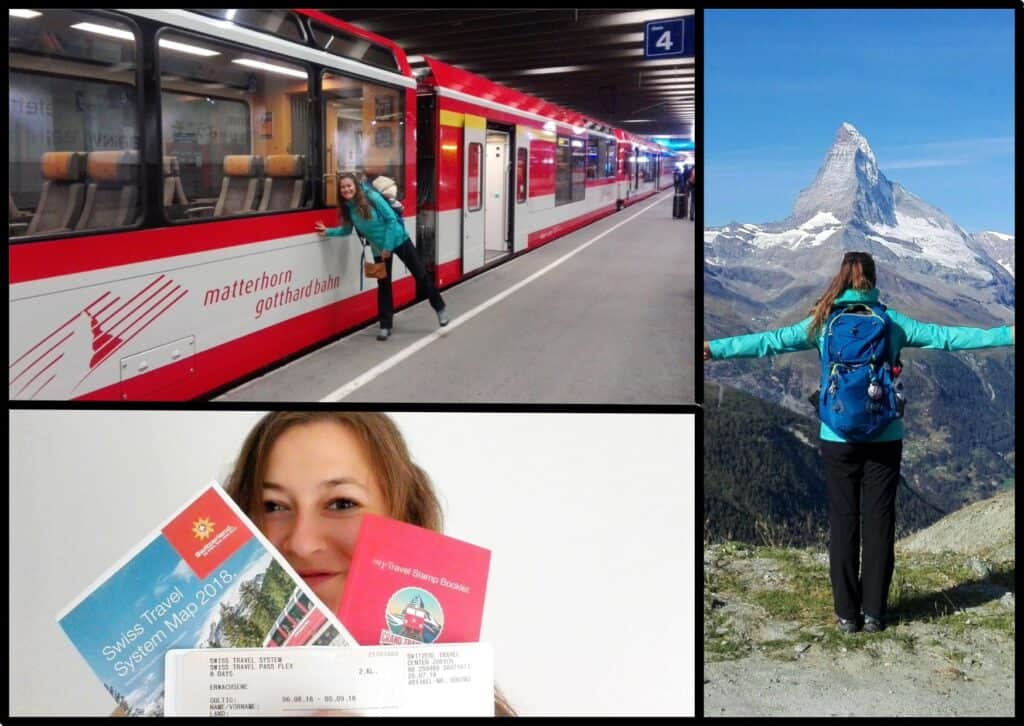
How To Get To Zermatt From Zurich Airport? Revealed!
September 1, 2023
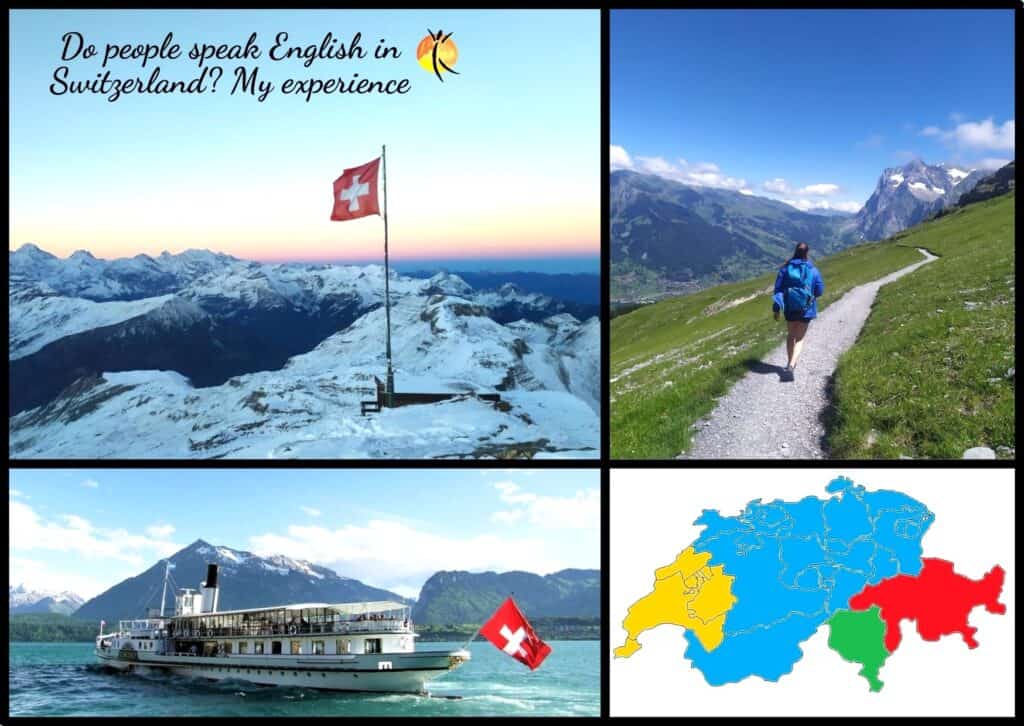
Do People Speak English In Switzerland? My Experience
February 26, 2024
Travel Passes For Switzerland
My rule of thumb when traveling to Switzerland is to have a travel pass . It has various advantages:
👉 gives you flexibility 👉 includes all types of transportation (trains, buses, boats, cable cars) 👉 saves you a lot (on transportation & activities) 👉 you can explore the entire country
Swiss Travel Passes are a great way to explore Switzerland (if you don’t have a car). My tip is to avoid paying for single tickets and get a pass instead.
Read my articles below to learn about various Swiss passes .
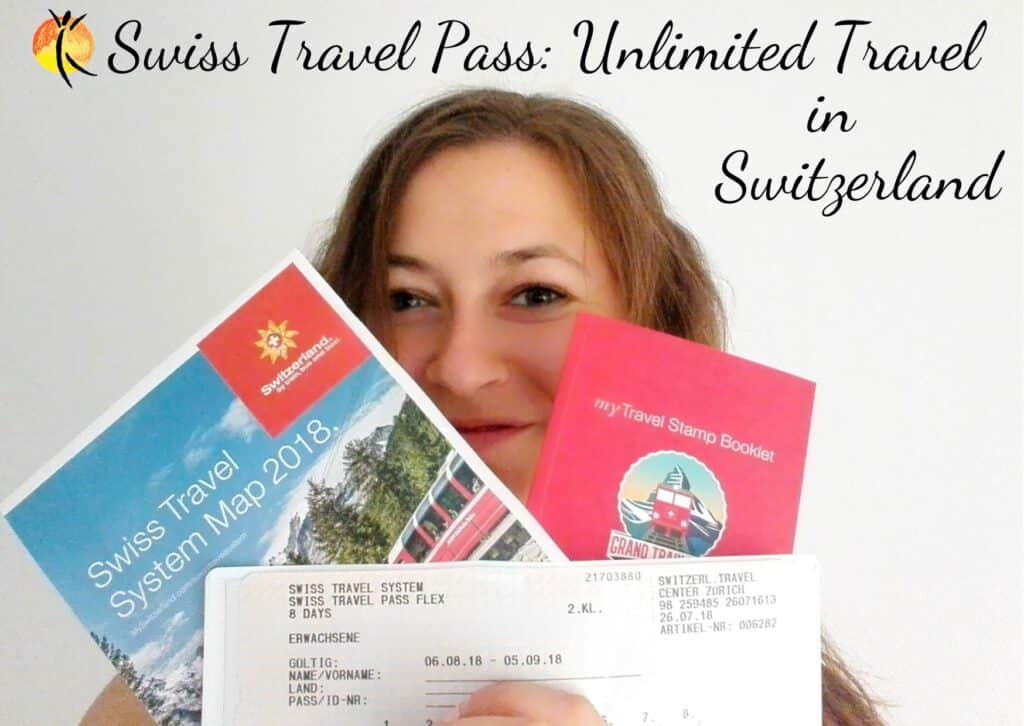
Is Swiss Travel Pass Worth It? All You Need To Know
October 25, 2023
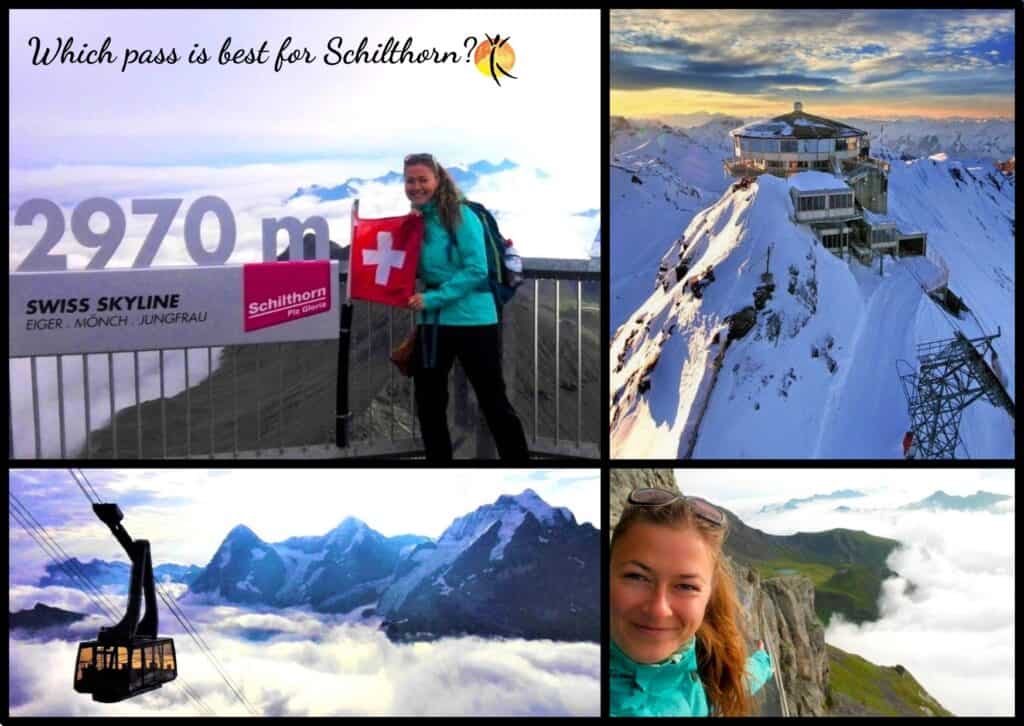
Which Pass Is Best For Schilthorn? Revealed!
March 4, 2024
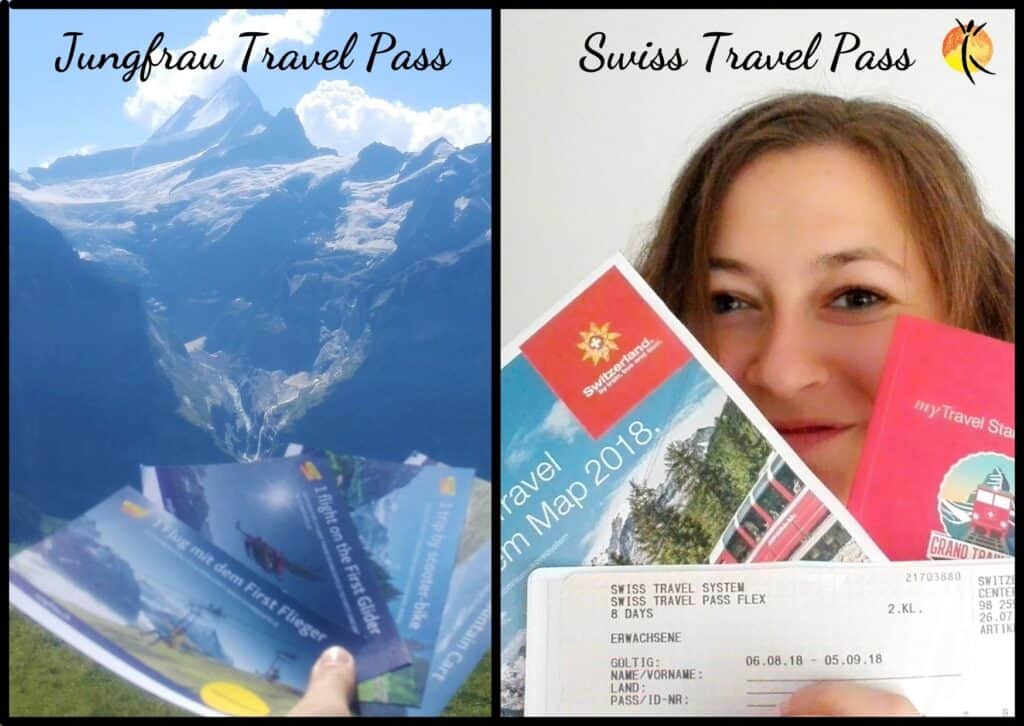
Jungfrau Travel Pass Or Swiss Travel Pass: Which One Is Better?
October 14, 2023
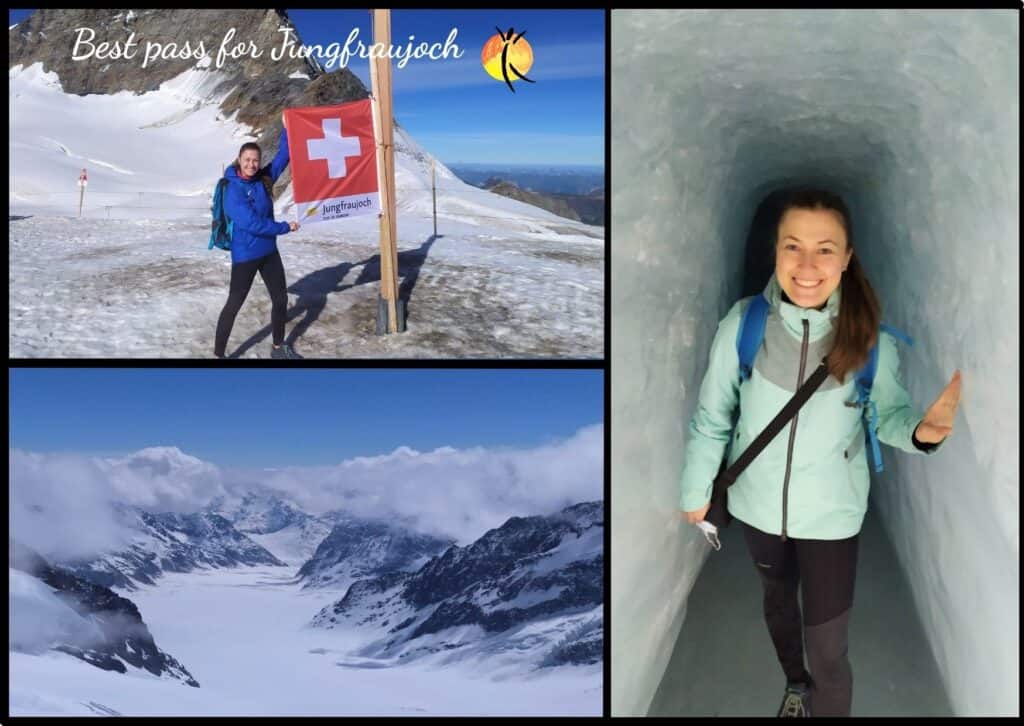
Which Pass Is Best For Jungfraujoch? Revealed!
April 1, 2023
Best Time To Visit Switzerland
Some months are better than others to enjoy the whole Swiss experience.
When planning your trip, remember that Switzerland has shoulder seasons , during which many businesses have a break or are closed due to maintenance .
So, choosing the right time to explore the country is crucial .
The best time to explore Switzerland is June, September, and wintertime. The landscape colors are at their best, and places are less crowded.
Check out these articles to learn more about Switzerland and the weather throughout the year:

Best Time To Visit Switzerland: Places To Visit & Things To Do Each Month
November 29, 2023
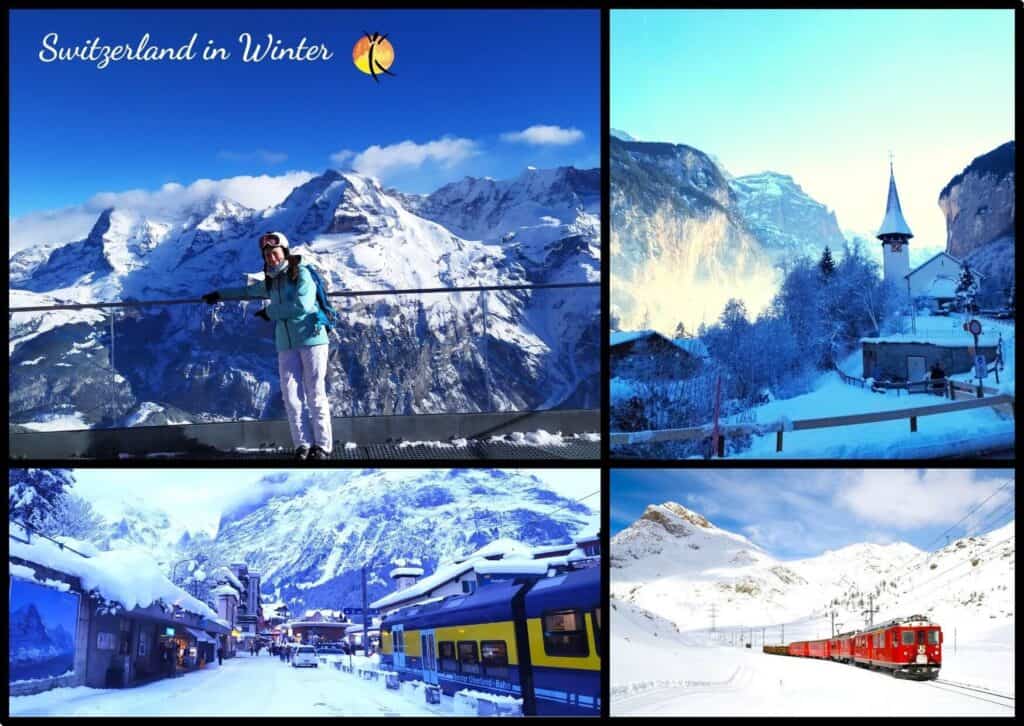
Switzerland In Winter: Best Places To Visit & Things To Do
November 18, 2023
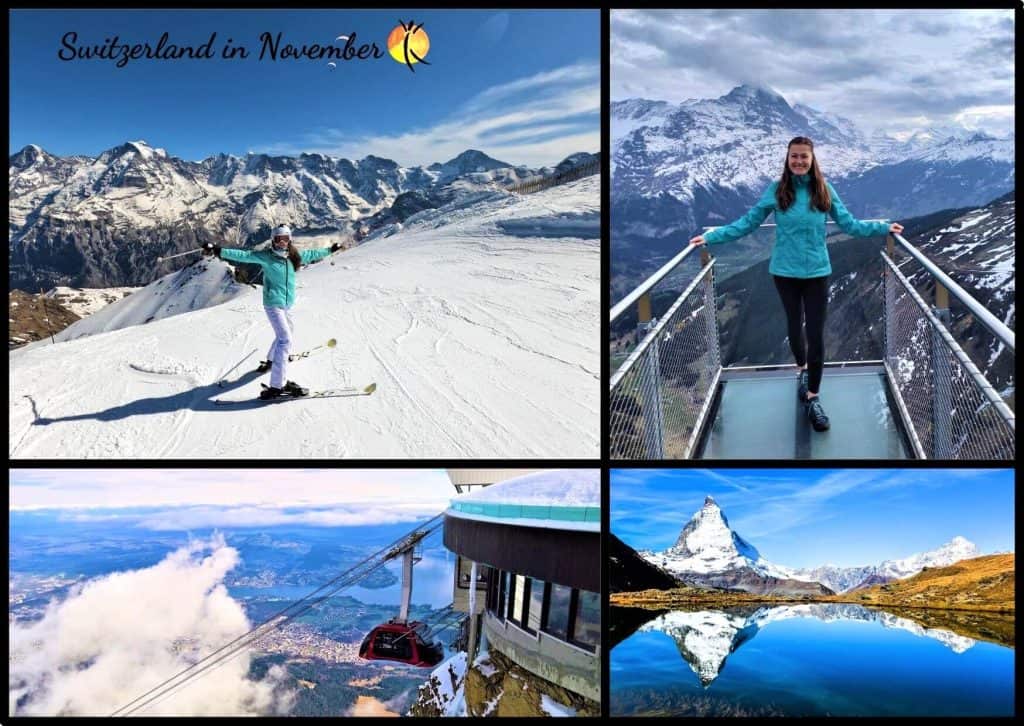
Switzerland In November: Best Things To Do & See
September 6, 2023
Jungfrau Region & Bernese Oberland
Switzerland consists of 26 cantons (parts & regions).
Bernese Oberland and the entire Jungfrau region are some of Switzerland’s best places to visit.
They’re everything that you picture Switzerland to be : green meadows with mowing cows, snowy mountains with impressive glaciers, rivers running through the valleys and waterfalling falling off steep rock cliffs, and crystal-clear Swiss lakes .
If you don’t know where to go, Jungfrau region with Bernese Oberland is your best bet .
So check out my articles about the best things to do and places to visit in the area :

23 Incredible Things To Do In Jungfrau Region In 2024 (With Map!)
April 30, 2023

Where To Stay In Grindelwald: 9 Best Hotels
November 21, 2023
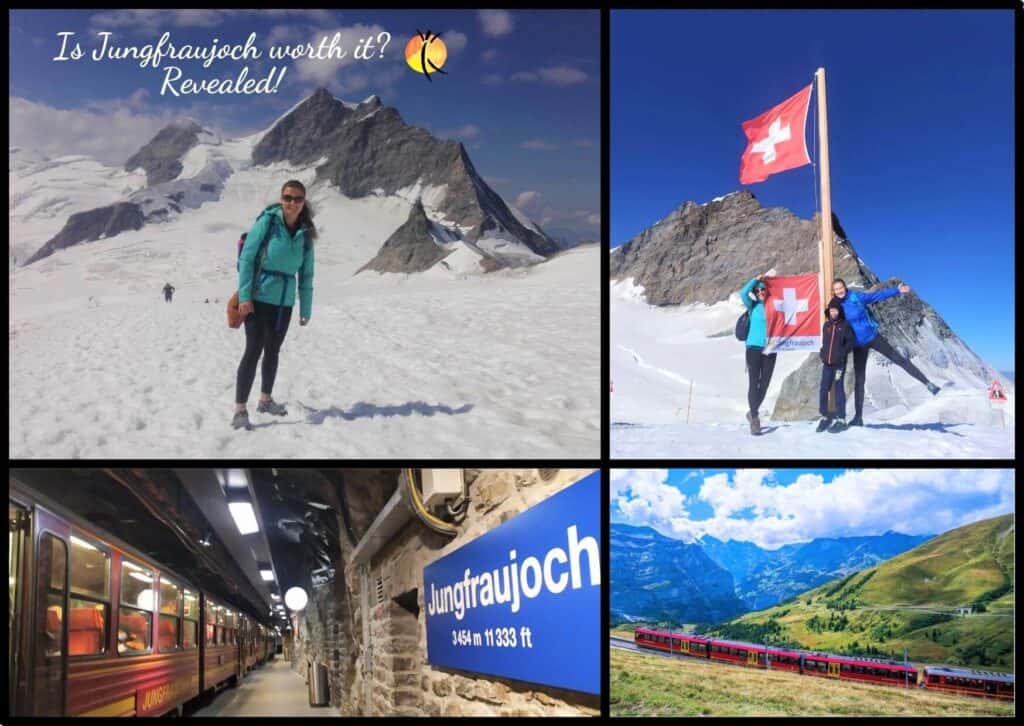
Is Jungfraujoch Worth Visiting? Ultimate Guide For Your Visit In 2024
May 5, 2023
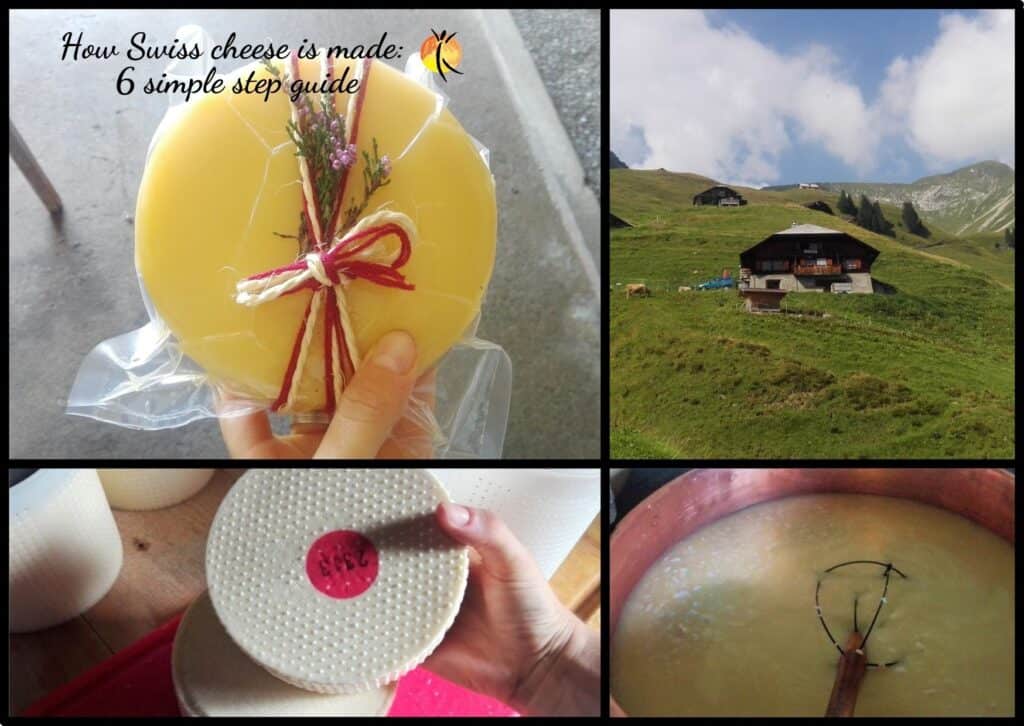
How Swiss Cheese Is Made: My Experience On A Swiss Cheese Family Farm
May 7, 2023

22 Amazing Day Trips From Interlaken In 2024: With Map & Tips
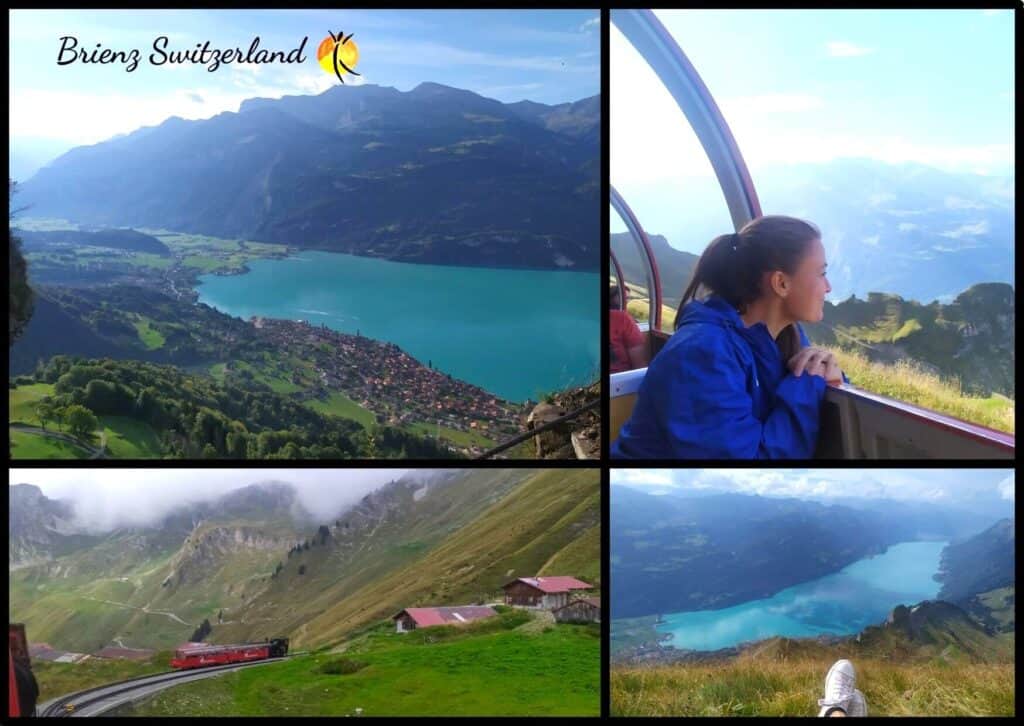
Brienz Switzerland: Best Things To Do & Places To Visit In 2024
November 19, 2023
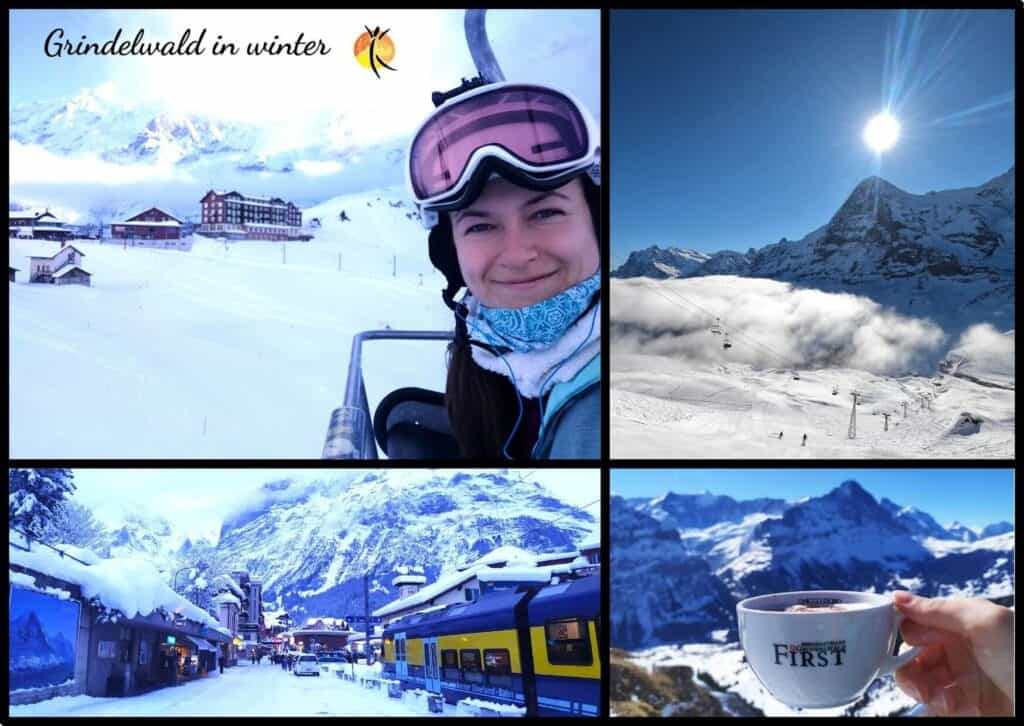
Grindelwald In Winter: Complete Guide For Your Visit
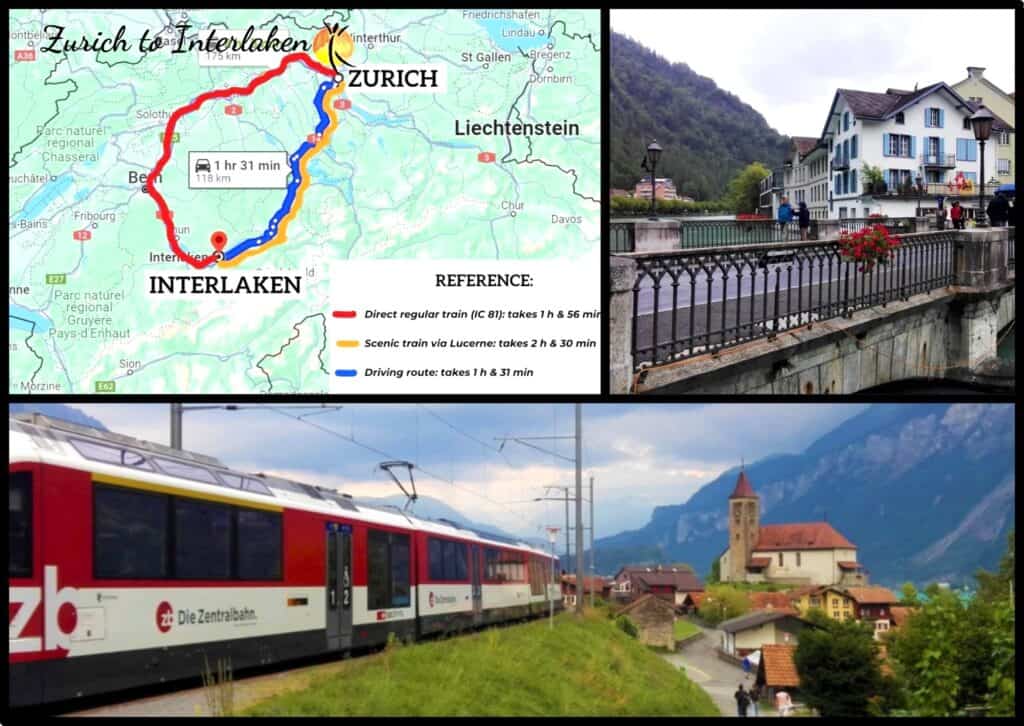
Zurich To Interlaken: Complete Travel Guide
March 5, 2024
Switzerland & Other Countries
If you’re looking for ways to get to Switzerland from other countries, check out the articles below.
Are you coming from Paris and only have a few days to spend in Switzerland?
Or are you traveling from Milan, Italy, and want to enjoy some panoramic trains on the way to Switzerland?
Read more in one of these articles:
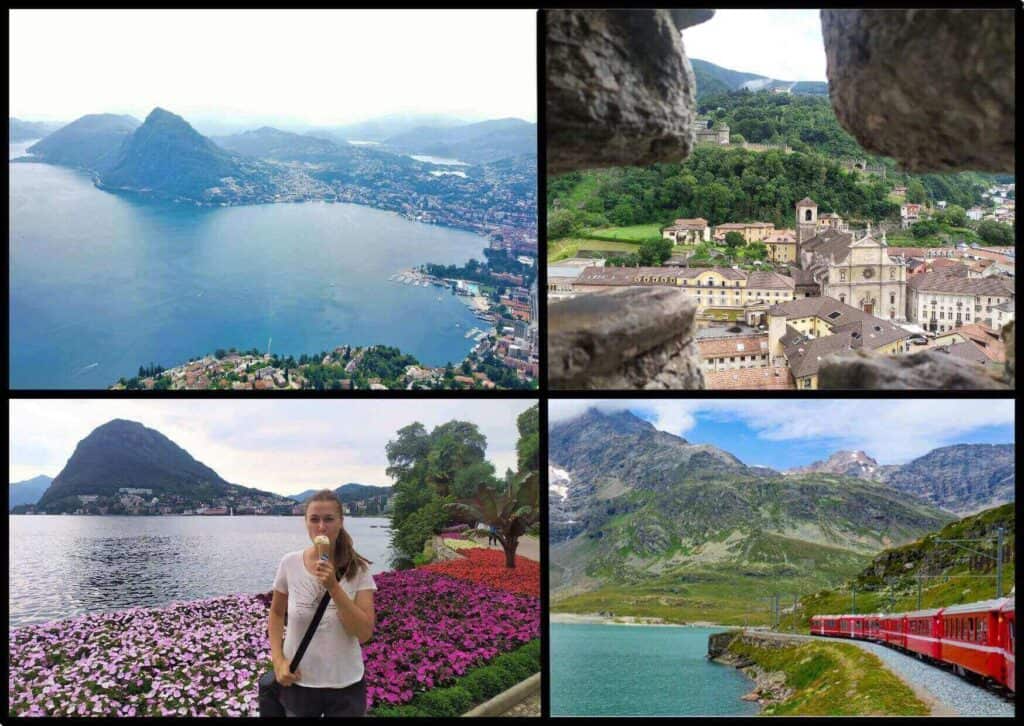
5 Best Day Trips From Milan To Switzerland By Train In 2024
September 26, 2023
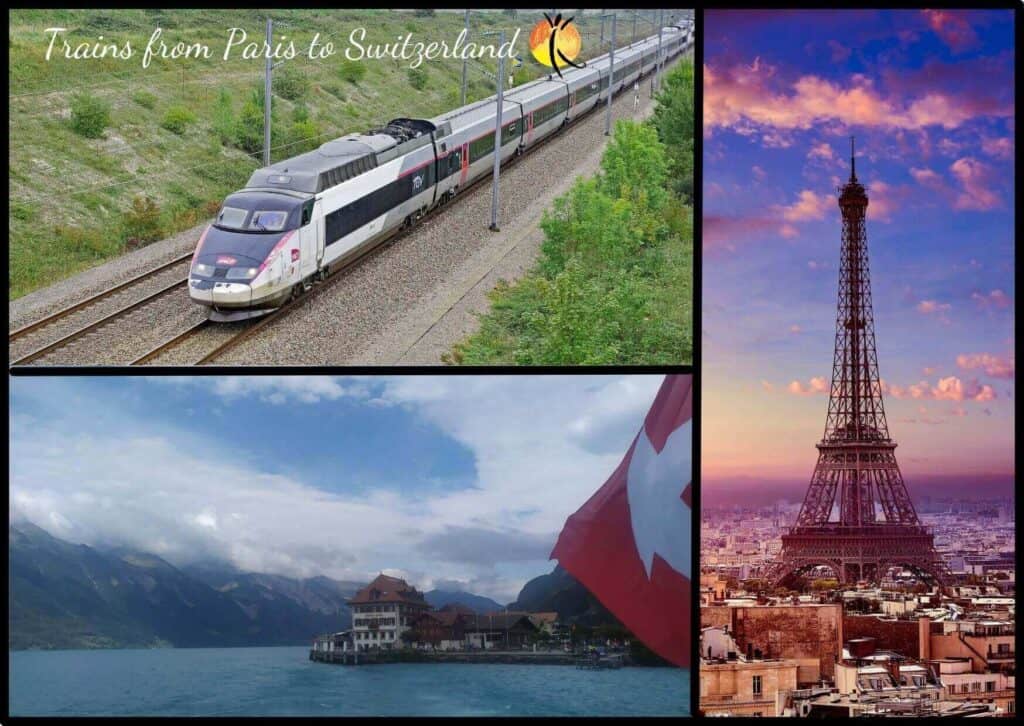
5 Best Trains From Paris To Switzerland: Ultimate Guide
September 18, 2023
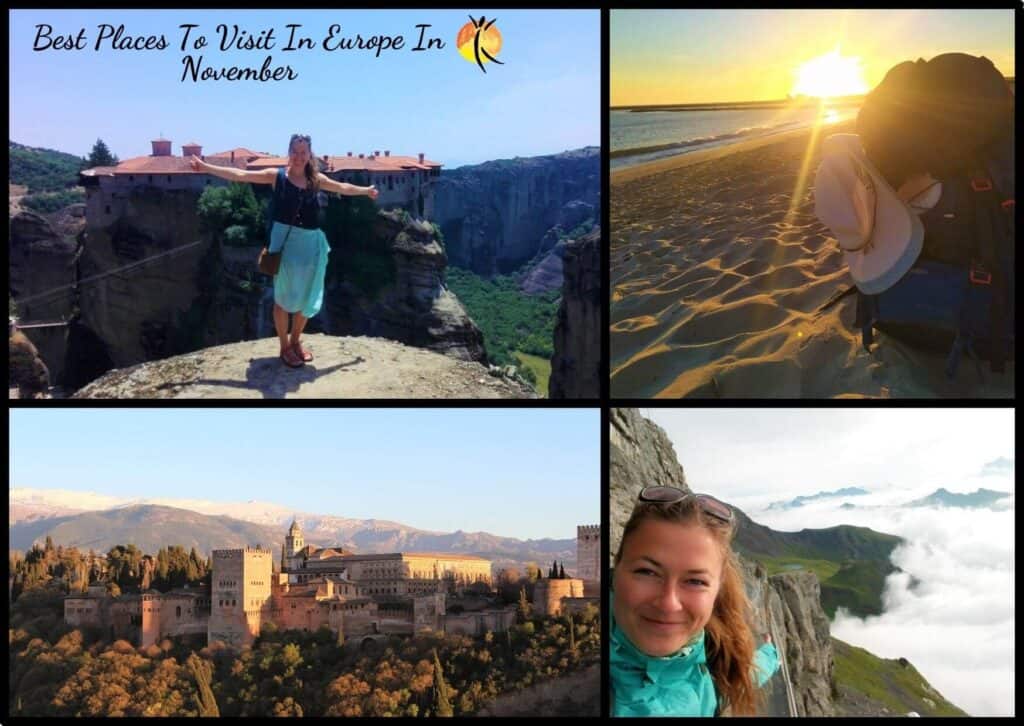
27 Best Places To Visit In Europe In November [2024]
December 2, 2023
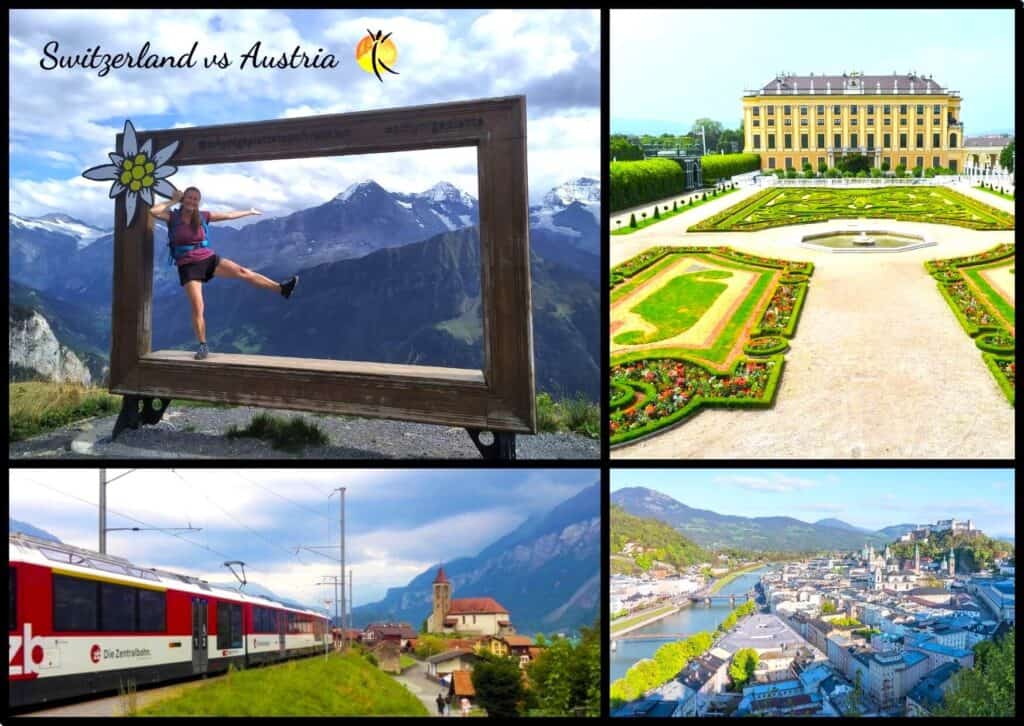
Switzerland Vs. Austria: Which Is Better To Visit In 2024?
November 24, 2023
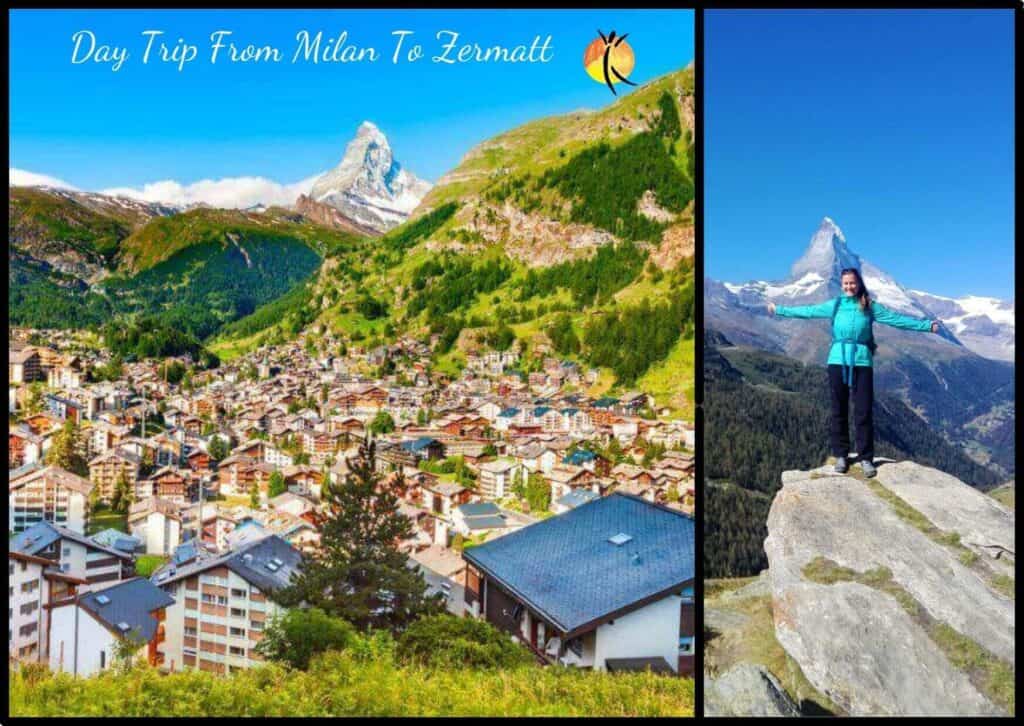
How To Make A Perfect Day Trip From Milan To Zermatt In 2024
October 1, 2023
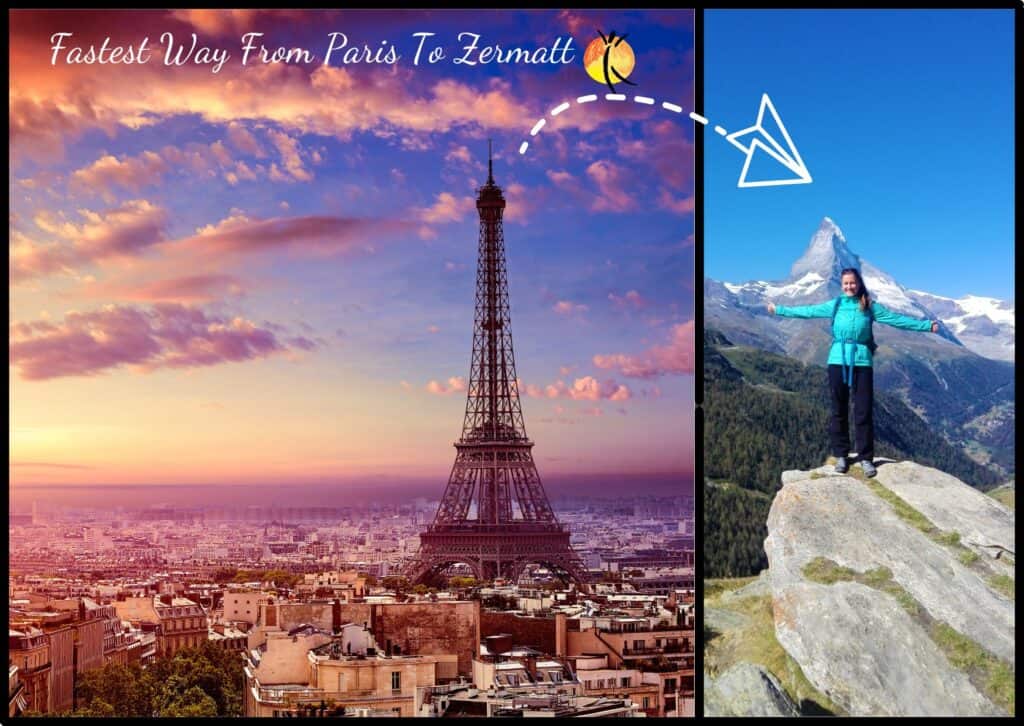
Fastest Way From Paris To Zermatt: Revealed!
October 23, 2023

IMAGES
VIDEO
COMMENTS
Swimsuit: Essential for a dip in the picturesque Swiss lakes. Sunglasses and Hat: To protect you from the summer sun. Travel Adapter: Switzerland uses type J plugs, different from most of Europe. Reusable Water Bottle with a Filter: For staying hydrated during your mountain hikes. Swiss tap water is safe to drink and delicious!
I traveled to Switzerland on a ten-day trip to Solothurn, Biel, Thun, and Zermatt in August 2017. Traveling in Switzerland means packing for different temperatures and terrains.
Here is a list of toiletries to bring with you: Aftershave/perfume. Shaving essentials - electric razor/razor/shaving foam/epilator. Face and body moisturizer. Sunscreen. Toothbrush, toothpaste, floss, mouthwash. Shampoo, body wash, conditioner (if you don't want to use the hotels) Exfoliating face wash. Deodorant.
Switzerland has two kinds of electrical sockets that aren't found in most other countries, so it's essential to bring an adapter. Most travel adapters fit Switzerland's two-pronged socket. I always recommend travelers buy a universal travel adapter like this one from the get-go so that they will have one adapter that works in most ...
Switzerland Packing List for Winter. Layering is essential for winter, especially because the temperature differences from outside to inside can be quite extreme. Make sure to have several versatile layers on your Switzerland packing list! Camii Mia Snow Fleece Hiking Pants | Sizes 26-38.
Summer in Switzerland can have varying weather, including sun, rain, and temperature changes. Summertime temperatures range from 18 to 28 °C (65°-82° F), with occasional heat waves reaching 30 °C (90+ °F). You can experience a wide range of temperatures, from warm days to below-freezing with high altitudes. Fall.
The best time to visit Switzerland is during the shoulder seasons, as in April to June and September to October. You can enjoy fewer crowds, mild weather, and lower prices. In fact, the mountain resort towns are almost completely dead. Tourists descend into Switzerland in the summer months to soak up the sunshine and wildflowers that are ...
Best time to visit Switzerland. Spring: Hike along low-elevation trails through forests, past gorges, waterfalls, and lakes. Take the Glacier Express panoramic train across the Alps. Basel is a ...
It's essential for staying connected and accessing important info. Download offline maps and translation apps before arriving. I have listed the most useful travel apps on this page: 9 Most Useful Travel Apps to Use in Switzerland. Adapter: Switzerland uses type C (2-pin) and Type J (3-pin) plugs. The standard continental-type plug with two ...
Our selection of essentials for holidays in Switzerland will ensure that you don't have to lug as much stuff around the country, and you'll be helping the environment too. ... Swisstainable - sustainable travel in Switzerland. Untouched nature touches our hearts. As a travel destination, Switzerland is synonymous with spectacular ...
Travel Tip: If you plan to do a lot of travel within Switzerland, consider purchasing the Swiss Travel Pass, which grants the holder unlimited first- or second-class travel across the country's network of trains, buses, and boats, and most scenic railways. Plus, you'll get admission to more than 500 museums, as well as discounts on mountain ...
Travelling clockwise, the Grand Tour of Switzerland has over 650 signposts to guide you. Our GPS will take you to the most beautiful spots. Our road map keeps you on the right track even if you're offline, and it has loads of inspiring tips to enliven your trip. Our travel guide has the loveliest spots highlighted in each section, and not only is it useful in planning before you go, it is ...
Take the train (or bus or boat) instead. Switzerland boasts one of the finest transport systems in the world. It's on time, easy to navigate, and well-connected. Plus, there are several villages, like Zermatt and Mürren, which don't allow cars. ... Travel essentials How to Apply for South Korea's Q-Code for your Next Adventure! 16 Nov ...
SWISS TRAVEL PASS or HALF-FARE CARD. OPTION 1: Buy the Swiss Half Fare Card: Switzerland trains, buses, and cable cars are EXPENSIVE! I found the best way to get around cheaply was to buy the Swiss Half-Fare Card before I arrived. It gives you 50% off every regular train, bus, and even many cable cars.
The accessories you will take in your bag for Switzerland will depend on your travel style: TSA lock ( my favorite) Headlamp ( my favorite) Sleeping bag ( my favorite) Sheets ( my favorite) Swiss Army knife (not in the hand luggage!) ( my favorite) Travel clothesline ( my favorite) Powdered or liquid detergent.
The Swiss Travel Pass was designed to provide a hassle-free experience for those traveling by train, bus, and boat. Issued for 3, 4, 6, 8, or 15 days, the Swiss Travel Pass includes unlimited travel all over Switzerland. This all-inclusive pass even covers premium trains such as the Glacier Express.
Looking for a new travel backpack for your Swiss adventure? Here are some of our favorite travel backpacks: Osprey Farpoint 40: Known for its durability and comfortable design, this backpack offers ample space for your essentials while adhering to carry-on size restrictions.. Nomatic Travel Pack: This versatile backpack is designed with organization in mind, featuring multiple compartments, a ...
Find out more in our guide to getting around Switzerland— it's packed with top Switzerland travel tips. Staying at rural inns or guesthouses, avoiding cities altogether, and spending your days hiking or just relaxing in reasonable comfort is unlikely to set you back more than Fr.160 (£128/$172) per day each.
Get information on Switzerland Travel Guide - Expert Picks for your Vacation hotels, restaurants, entertainment, shopping, sightseeing, and activities. Read the Fodor's reviews, or post your own.
How to Get to Switzerland. The best way to travel to Switzerland from the United States is to fly into one of the major cities such as Geneva or Zurich. From there, you can take connecting flights to Bern, Davos, Zermatt, and Basel. Zurich is the largest city and you'll likely find the most flight options into Zurich airport.
Enjoy up to 50% off tickets for Switzerland's public transport systems for one calendar month and travel around Switzerland with ease. Purchase your Swiss Travel Pass here! The best 7-Day Switzerland itinerary Day 1: Zürich. ... Kickstart your international travel adventures by securing your travel essentials on Klook, from SIM Cards to rail ...
Travel Tips for Visiting Switzerland. Switzerland is a small country nestled in the heart of Europe's high peaks, with the neighboring countries being the French border to the west, Germany to the north, Liechtenstein and Austria to the east, and Italy to the south, a strategic location that makes it the home of the top ski resorts in the region.
When putting together an itinerary for Switzerland, a couple of things have to be on your list. You must make at least 1 mountain excursion, have a travel pass, ride on 1 panoramic train, go hiking, and know how to budget your trip. So here are my essential articles for Switzerland that will help you prepare for your Swiss trip.